 John Paul Vann: American Hero
John Paul Vann: American Hero
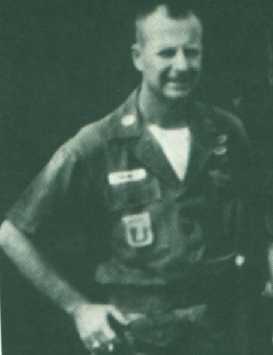
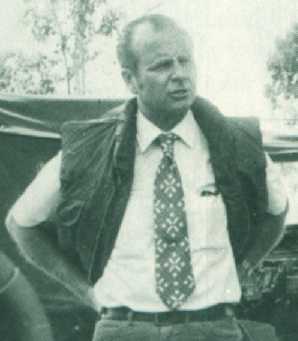
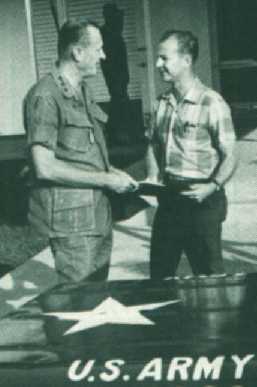
A lot of people wail that the age of heroes is long gone....
ONE SUCH MAN WAS JOHN PAUL VANN.
"The Age of heroes is not past....
so long as there remains ONE MAN
who contributes to sustain the weak,
mold the characters of the young
and bring hope to the lives of the needy."
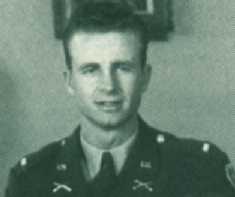
We strongly encourage you to read the best book yet written on
the Vietnam war, A
Bright Shining Lie by Neil Sheehan and learn about this great human being.
John Paul Vann was a "mini-model" of America in her two Asian wars, travel
with him as a young U.S. Army officer he leads by example and personally drops ammunition from a L-19 "Bird Dog"
small plane to troops surrounded by the enemy in the Korean War.
SUB-NATIONAL CONFLICT #1: VIETNAM, THE BATTLE OF AP BAC
Follow him later as a LieuTenant Colonel (LTC), he advises the South Vietnamese Army at the 1963
epic battle of Ap Bac,
(scroll down after going to the link) again from a L-19 (O-1 Bird Dog) observation plane where a technical/tactical level of war pair of errors gives the VC their first victory against the U.S. war machines: the VC are operating a radio which a small plane direction finds locates; rather than run or disperse, the Viet Cong (VC) decide to stand and fight.
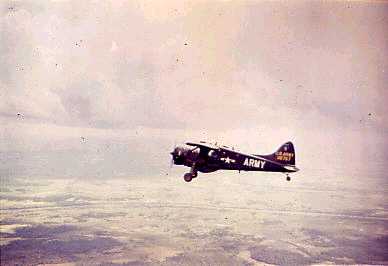
One of the easy-to-maintain, inexpensive fixed-wing STOL aircraft the U.S. Army used to operate before the rotorheads-for-everything crowd corrupted Army Aviation into its own branch off into their own little world
PLAN A: what we wanted to do and where we expected the enemy to be: Attack on Ap Tan Thoi village where the transmittor was located
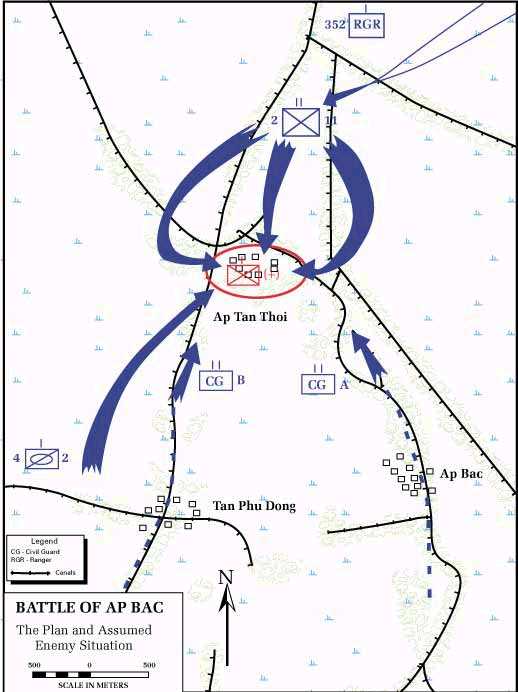
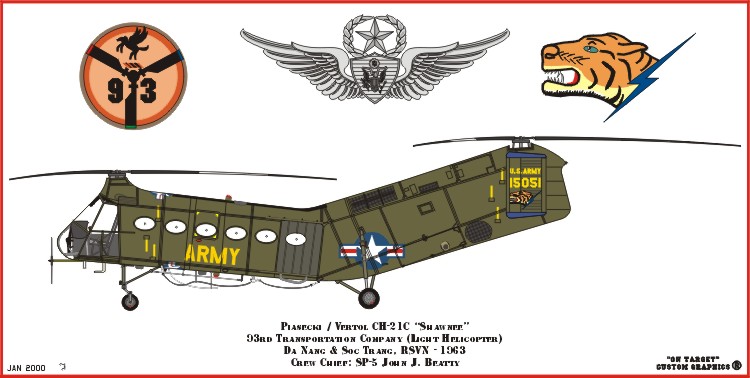
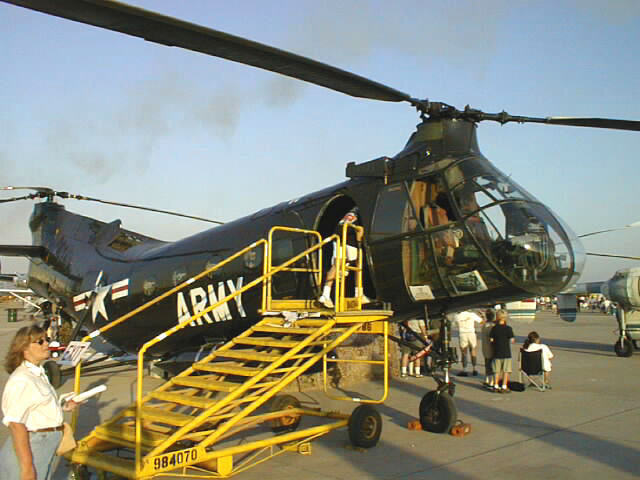
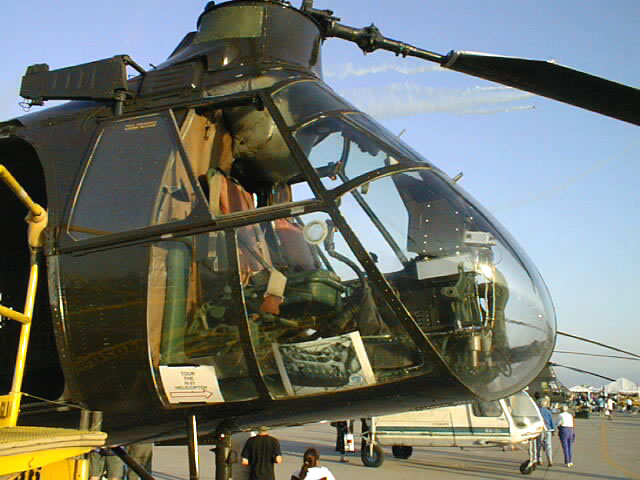
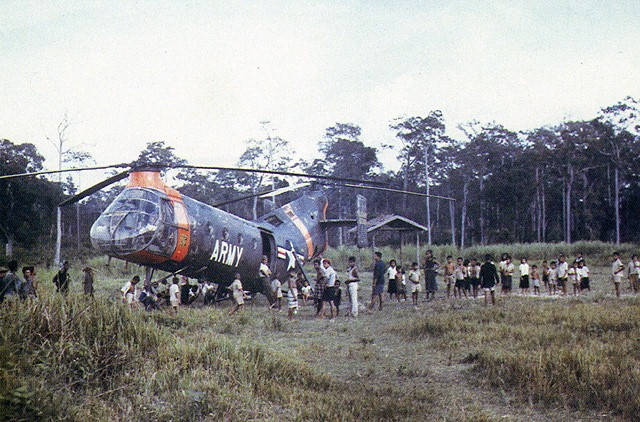
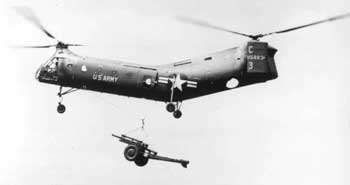
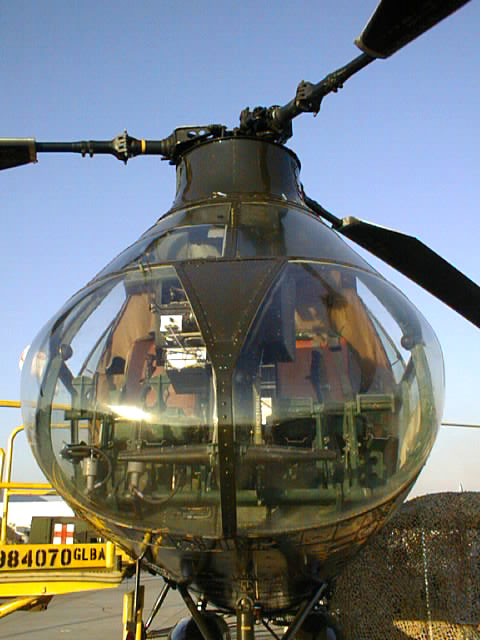
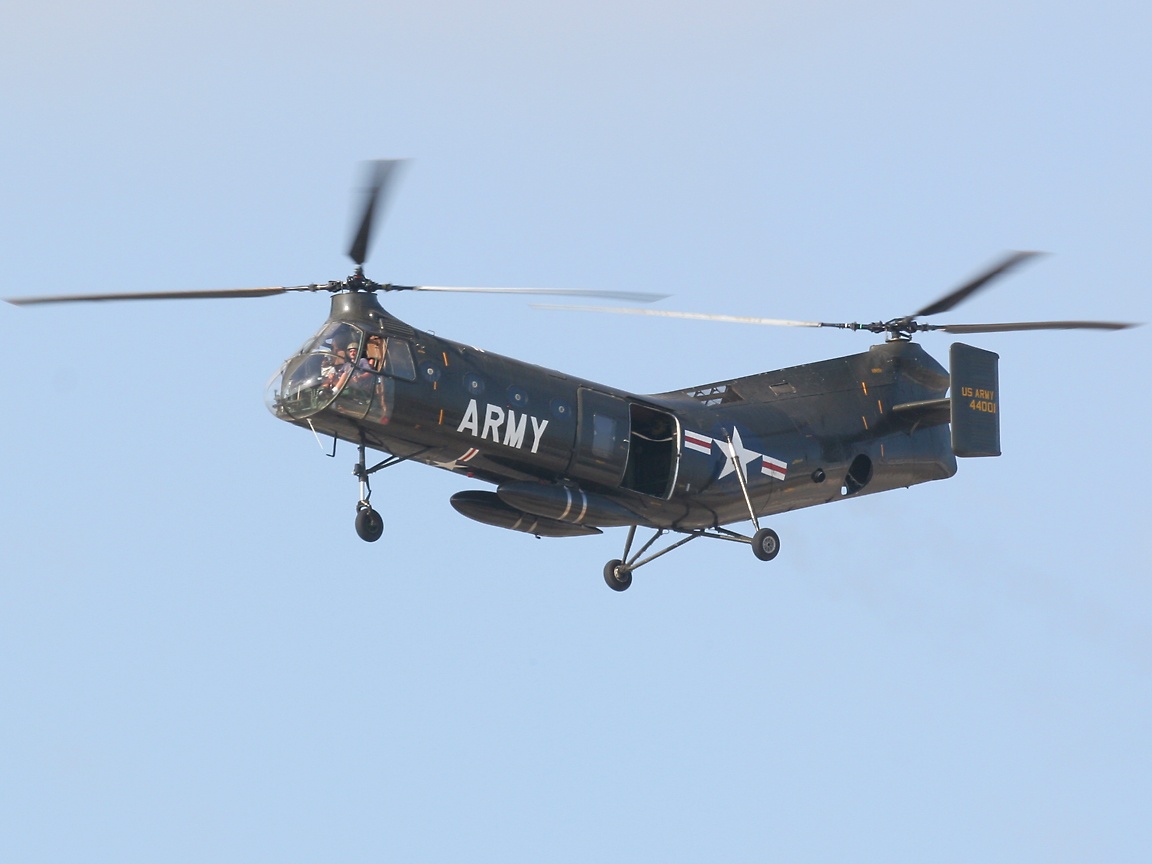
1/11th ARVN foot infantry flying by H-21 "Flying Banana" helicopters would land in the open rice paddies and converge on the enemy transmitter at Tan Thoi.
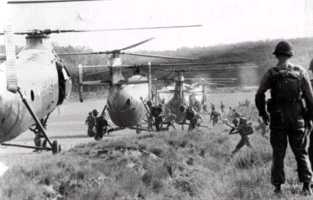
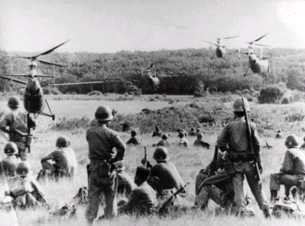
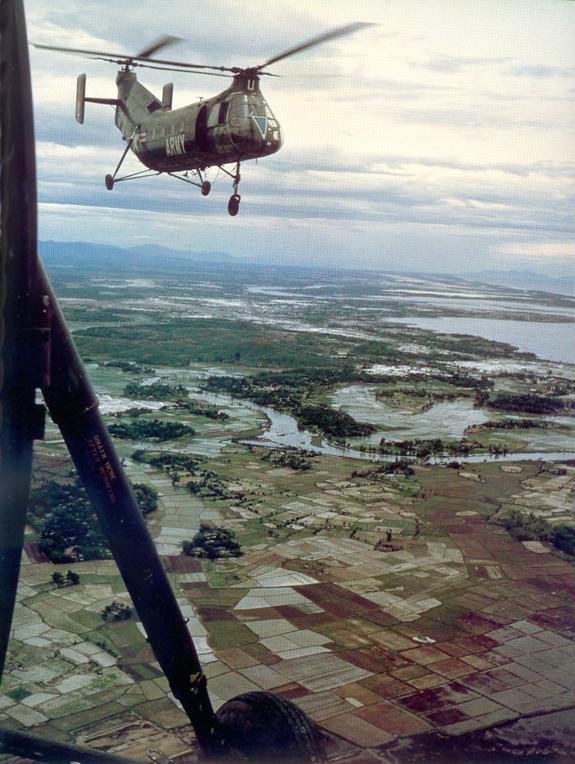
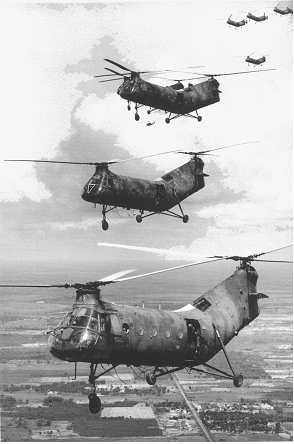
Unfortunately, the U.S. pilots flying the H-21 "Flying Banana" helicopters carrying the ARVN troops land within effective small-arms range (300 meters) of the dug-in VC despite Vann's radio instructions from the L-19 not to make that the landing zone (LZ).
VANN'S VIEW OF THE LZ
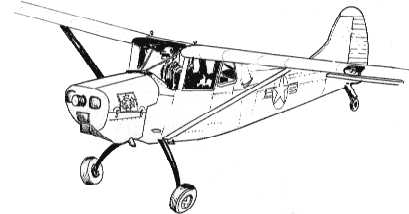
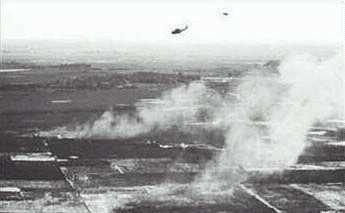
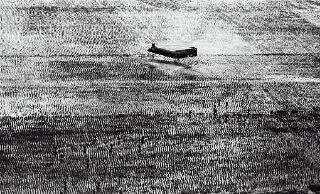
Vann can clearly see from his L-19 that they are landing too close to the treeline, but the cocky American pilots don't heed his directions to land farther away.
ENEMY'S VIEW OF THE LZ
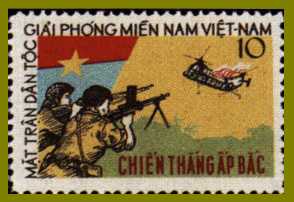
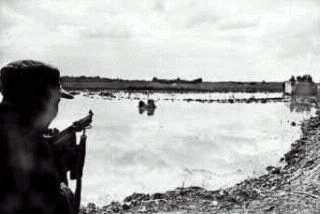
The picture above shows what the Viet Cong rebels saw as the H-21s landed; notice the Thompson .45 sub machine gun in the VC's hands...they opened fire concentrating in the exposed pilot's clear canopy area, killing several Americans and disabling 5 helicopters.
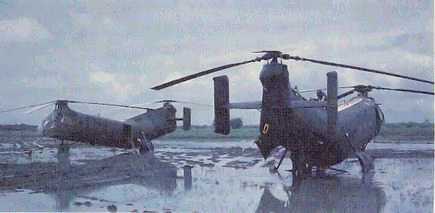
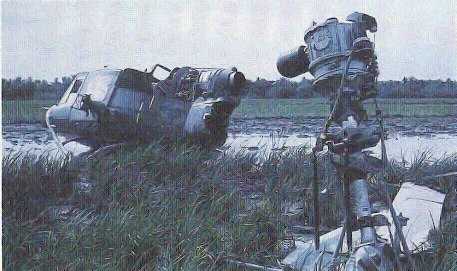
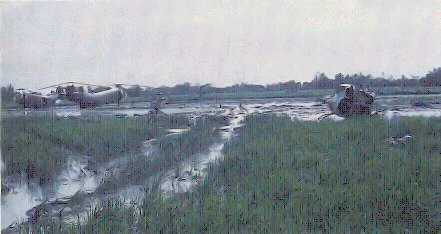
PLAN B: Vann orders 4/2 ARVN M113 commander, Ba to hurry up and drive to where the downed foot infantry force is clinging to its life and assault the VC in the treeline to the east. Ba is reluctant to use his M113s too aggressively as the President of South Vietnam, Diem expects him to use these armored vehicles to keep him in power from possible coups. Ba takes his sweet ass time to get to the scene.
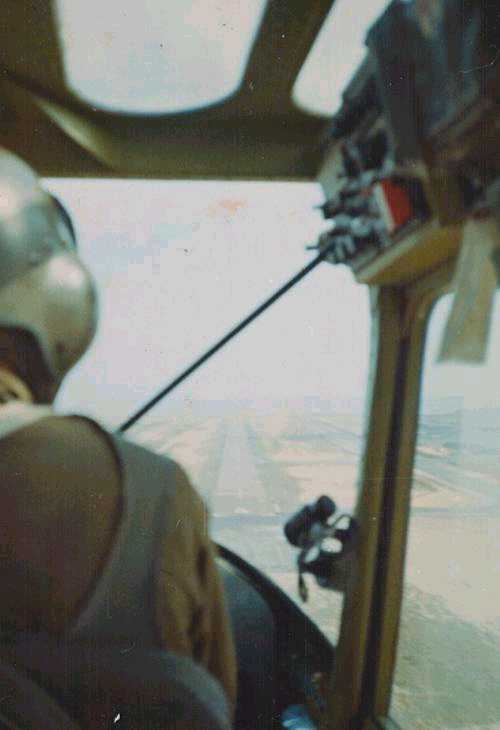
With the helos shot to pieces, ARVN and American advisors wounded and dying, LTC Vann returns to base, gets in yet another small L-19/O-1 "Bird Dog" Grasshopper plane (Like Rommel and Patton, he knew how to fly) to spur the reluctant ARVN M113 commander to save the day and seize victory from the "jaws" of defeat.
What Vann saw from the air from his O-1 Bird Dog
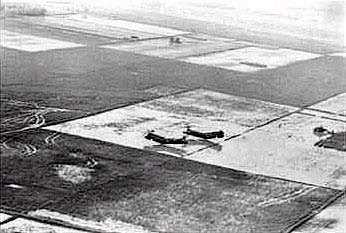
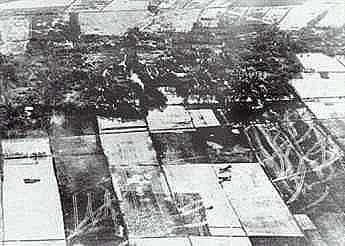
However, the M113 force takes too long to get there by not having fascines to cross rice paddy dikes.

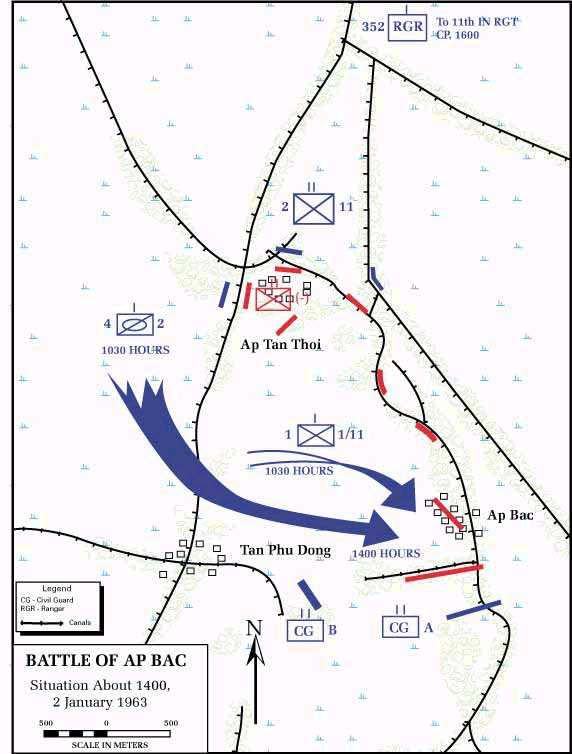
Ba's M113 Gavin light tracked Armored Fighting Vehicles (AFVs) do not have gun shields to protect their track commanders (TCs) manning their .50 caliber Heavy Machine Guns.
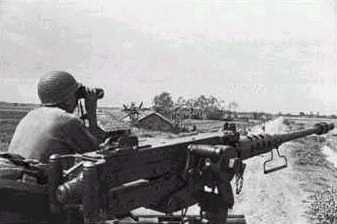
Thus, when the M113s arrive, the VC concentrate fire on the exposed TCs and they are turned back.
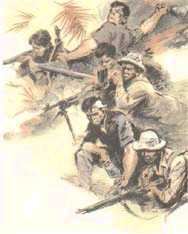
PLAN C: Vann flies back to base undaunted and gets the South Vietnamese Paratroopers ready to drop while he flies over with an American pilot in a borrowed L-19 to draw enemy fire and call in B-26 Invader air strikes.
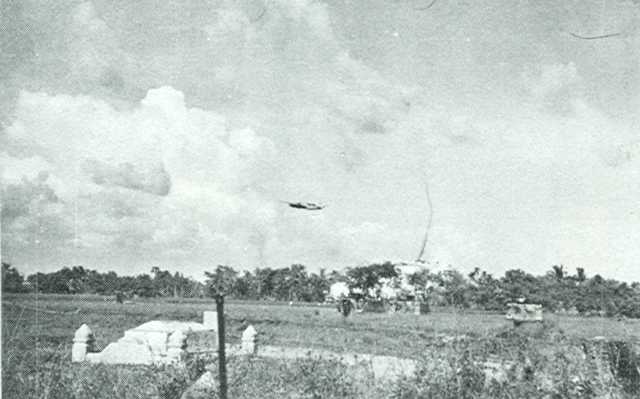
Vann asked Porter to have Cao drop the paratroops in the rice fields and swamp land on the east side of Tan Thoi and Bac, the one open flank that the guerrilla battalion commander could not retreat across during the day, but that would become the logical escape route after dark.
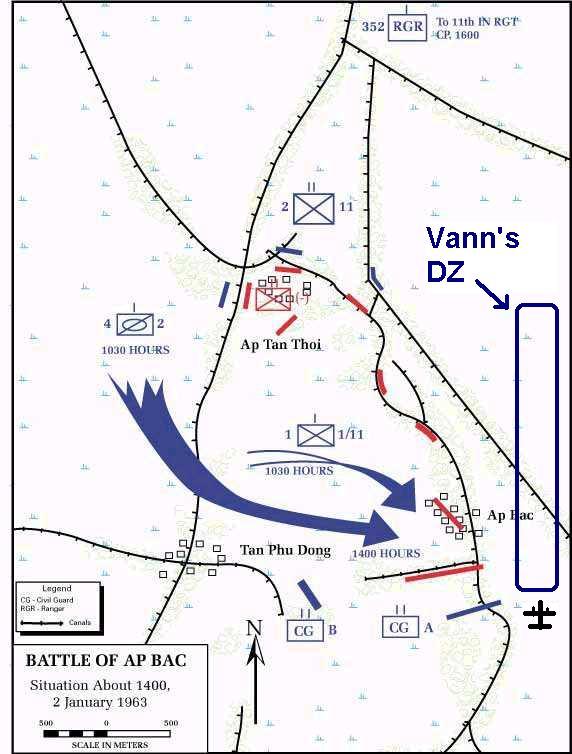
However, ARVN Paratroop commander Cao does not want to fight the VC, just land safely behind the Civil Guards and M113s as a "show-of-force". Sheehan continues:
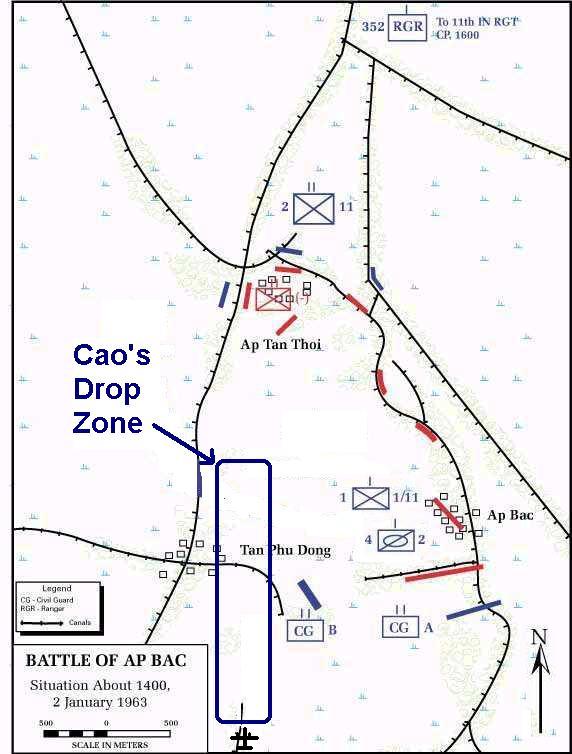
"Topper Six, I've already told him to do that and he says he's going to employ them on the other side," Porter replied.If Vann had been commanding U.S. Paratroops he could have ordered them to drop behind the VC and even went up in his Bird Dog plane and personally guided the USAF C-123 transports to the proper drop zone (DZ). Since Vann was an "advisor" he can't make the ARVN fight and win if they didn't want to."I'll be right there, sir," Vann said, and instructed the pilot to return to the airstrip as fast as possible. He knew instantly what Cao's game was. As he was to put it in his after-action report for Harkins, Cao intended to use the airborne battalion not to trap and annihilate the Viet Cong but rather "as a show-of-force...in hopes that the VC units would disengage and the unwanted battle would be over."
Vann clambered out of the little plane and strode into the command-post tent. He told Cao that on this day he could not spend all of this blood for nothing. He had to close the box around the guerrillas and destroy them. Porter supported him, both of them arguing that Cao had no choice as a responsible commander. "You have got to drop the airborne over there," Vann said, poking his finger at the big operations map where it showed the open flank on the east side of the two hamlets.
He became so angry and was jabbing so hard at the map that he almost toppled over the easel on which it rested.
Cao would have none of this Soldier's logic. "It is not prudent, it is not prudent," he kept replying. It was better, he said, to drop the Paratroops on the west behind the M113s and the Civil Guards where they could tie-in with these other units. "We must reinforce," he said.
Vann was later to sum up Cao's logic with the tart remark: "They chose to reinforce defeat."
He lost his temper one more time. "Goddammit," he shouted, "you want them to get away. You're afraid to fight. You know they'll sneak out this way and that's exactly what you want."
Embarrassed at being driven into a corner, Cao pulled a huffy general's act on Vann, the lieutenant colonel. "I am the commanding general and it is my decision," he said. Brig. Gen. Tran Thien Khiem, the chief of staff of the Joint General Staff, who had flown down from Saigon at Cao's request and was present during the argument, did not object. Harkins had not come down to find out why an unprecedented five helicopters had been lost, nor had any of his subordinates appeared, so there was no American general in the tent to brandish his stars for Vann and Porter. Cao then attempted to mollify Vann by pretending to move up the drop time. He said, "We will drop at sixteen hundred hours"-4:00 P.M. civilian time. Knowing that it was useless to argue further and hoping that he might at least get a Paratroop battalion early enough to be of some use, Vann went back to his spotter plane.
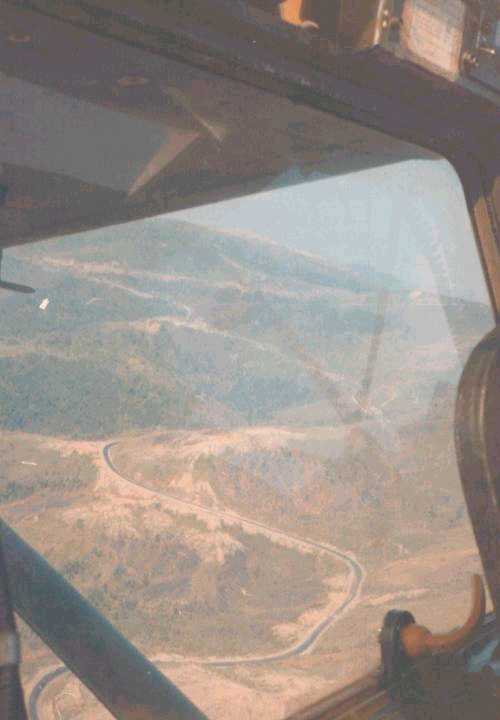
He spent the rest of the afternoon asking when the Paratroops were going to arrive and attempting to persuade Cao and Dam and Tho to turn what was about to become the biggest defeat of the war so far into its biggest victory. They still had the opportunity to redeem the day. All they had to do was to pull the two Civil Guard battalions and Ba's company together for a combined attack on Bac. As demoralized as Ba's men were, they could have at least supported the Civil Guards with their .50 calibers, and the guerrillas could not have withstood the total force. Neither Cao nor Tho, who were the men in control, could see that the sensible and moral course was to press ahead and accept the further and proportionately minor casualties that would be necessary to give meaning to the sacrifice of those who had already been killed and maimed.
However, either the American C-123 flight leader or the ARVN Jumpmasters, initiated the drop on the west of Ap Bac too late instead of having green light begin at the southernmost beginning of the DZ; the ARVN Paratroopers landed too far north and west; in effective small arms-fire range of the VC at Tan Thoi, resulting in the two American "Red Hat" advisers getting wounded and a dozen of their men killed. Night fell and the VC escaped.
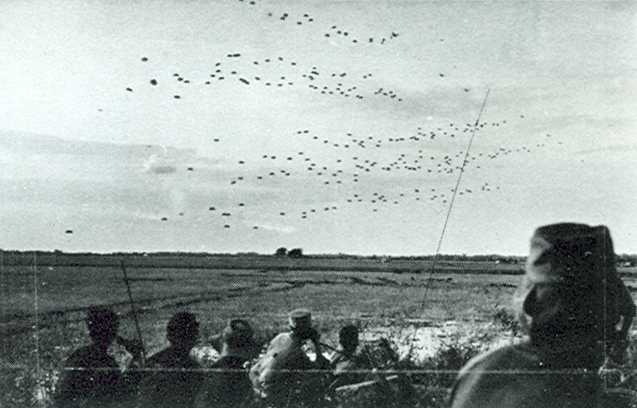
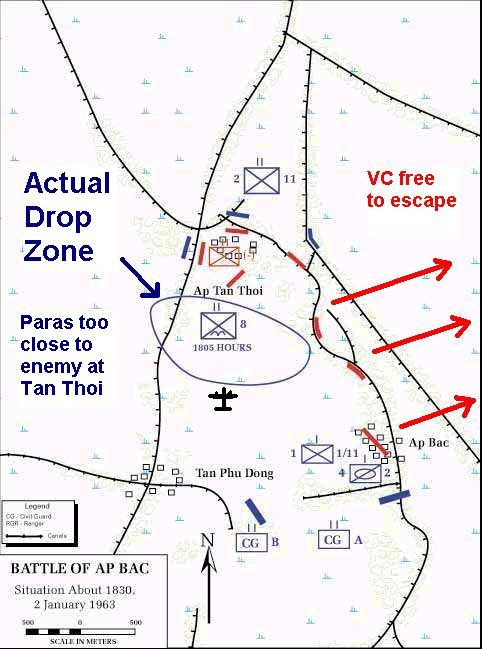
Paratroops dropped but inside forward line of troops instead of behind enemy route of retreat
The VC won despite their outnumbered odds because non-motivated ARVN officers refuse to launch a timely parachute assault to the VC's rear to trap them from escaping.
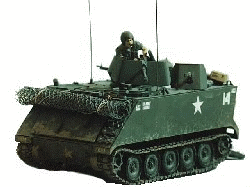 M113A3 Gavins now have gunshields for the TCs IF commanders are combat-oriented and not bogged down with garrison non-sense to order them...Iraqi Freedom's only Congressional Medal of Honor winner, SFC Paul Smith died in a M113A3 Gavin WITHOUT a gunshield kit; a hero who died needlessly from an U.S. Army and marine bureaucracies that don't even know their own history or studies the profession of arms...Look how long it took for gunshields to get back on top of vehicles after Soldiers began dying in Iraq in 2003!
M113A3 Gavins now have gunshields for the TCs IF commanders are combat-oriented and not bogged down with garrison non-sense to order them...Iraqi Freedom's only Congressional Medal of Honor winner, SFC Paul Smith died in a M113A3 Gavin WITHOUT a gunshield kit; a hero who died needlessly from an U.S. Army and marine bureaucracies that don't even know their own history or studies the profession of arms...Look how long it took for gunshields to get back on top of vehicles after Soldiers began dying in Iraq in 2003!
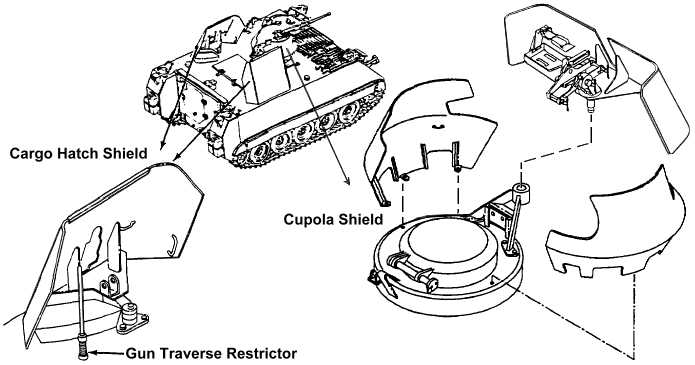
After Ap Bac, gunshields were placed on M113s like this modern A3 model has:
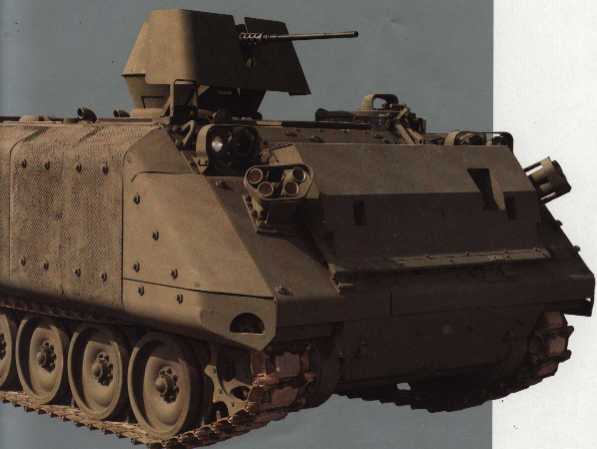
The loss at Ap Bac in 1963, emboldens the VC and the ARVN are routed continually thereafter when they try to fight the VC/NVA "even" rifle vs. rifle on foot; LTC Vann's Army career is destroyed as he is made the "fall guy" for ARVN corruption and incompetence.
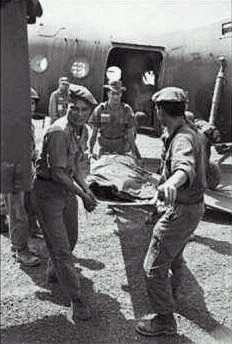
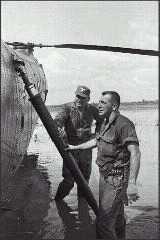
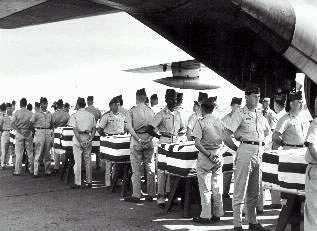
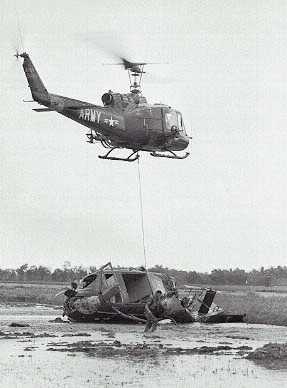
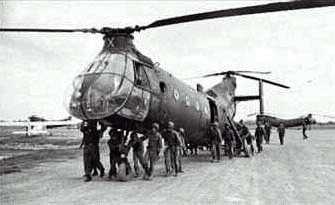
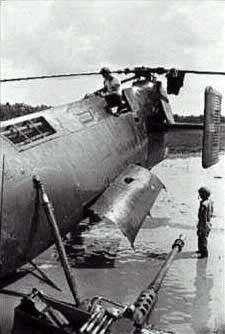
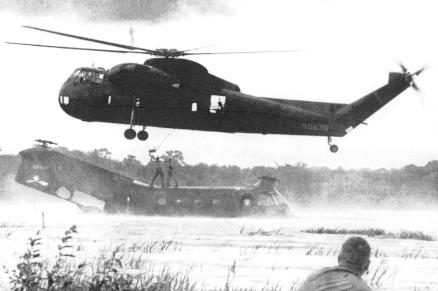
The ARVN that wanted to fight effectively create the gunshielded M113 "ACAV" and their light mechanized infantry forces, though a minority---are the only bright spot in their force structure.
The situation deteriorates and this leads to the full-scale U.S. troop landings to fight off the VC from over-throwing the South, particularly the deployment of better Air Assault -trained U.S. Army 1st Air Cavalry Division troopers to prevent the nation being cut into two in the central highlands.
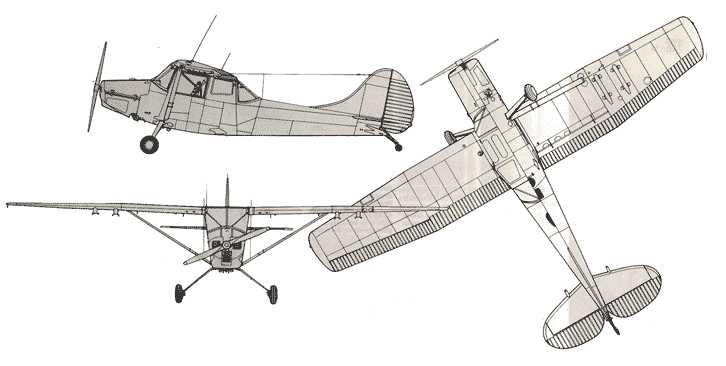
Maneuver Air Support Video: in praise of the O-1 Bird Dog
 www.combatreform.org/airmobileAFACandMAS.wmv
www.combatreform.org/airmobileAFACandMAS.wmv
Unfortunately, America today has no manned, fixed-wing observation/attack planes like the L-19/O-1 Bird Dog to perform COIN/SASO operations correctly. What a travesty. Thank the fighter-bomber and rotor-head egomaniacs.
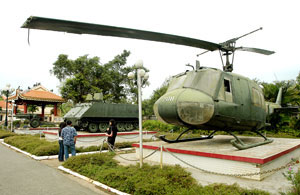
"Men don't follow titles........
they follow COURAGE..."
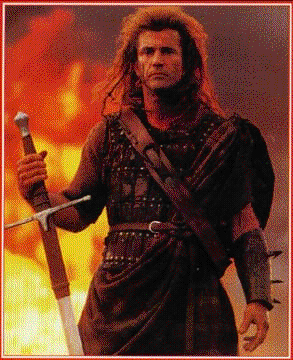
Mel Gibson as Freedom fighter, William Wallace in the film, Braveheart
What is so AWESOME about LTC Vann, is he doesn't give up! He makes countless briefings to those in power at the Pentagon to win the "hearts and minds" of the Vietnamese people, reform the South Vietnamese Army/government and not over-rely on refighting WWII in the rice paddies.

The recent film adaptation of Sheehan's book, A Bright Shining Lie starring Bill Paxton does a wonderful job of showing this. He becomes a civilian AID worker and he then goes about taking apart the VC infrastructure in the villages by Civic Action and fighting corruption. Vann networks---finds allies and leading-by-example makes it happen. After the Tet offensive gamble decimates the VC to nothing, the provinces are secure, though back home in America public support for the war has collapsed. Now for the Communists to win, The North Vietnamese Army (NVA); an external nation-state foe will have to invade. Which is what they do in 1972. The Army and marine generals now had a "WW2" type fight they longed for. Be careful for what you wish for...their FUBAR light infantry foot-sloggers from helicopters approach didn't work for them, and it certainly didn't work for the ARVN in 1975...
Before the 1975 collapse, in his finest hour, Vann gets in a helicopter and single-handedly directs air strikes and U.S. military/ARVN forces to repel the 1972 NVA invasion. One man can and did make a difference! NVA General Ngo Giap, victor at Dien Bien Phu, arguably one of THE greatest military generals of all time--no slouch himself, gets fired for this failure!
Sadly, Vann dies shortly thereafter in a helicopter crash. The state funeral he has opens Neil Shehann's AWESOME book which Oliver Stone should make into a movie. Our conjecture is that had Vann lived, the South would not have been lost to the Communists in 1975. He would have seen to it that people in Washington D.C. and the Pentagon would have not thrown away our hard-won victories in Vietnam. His loss was the turning point in the Vietnam War. He would have found a way to win because he was a PROFESSIONAL--not a bureaucrat.
JOHN PAUL VANN AS A METAPHOR FOR U.S. INVOLVEMENT IN VIETNAM?
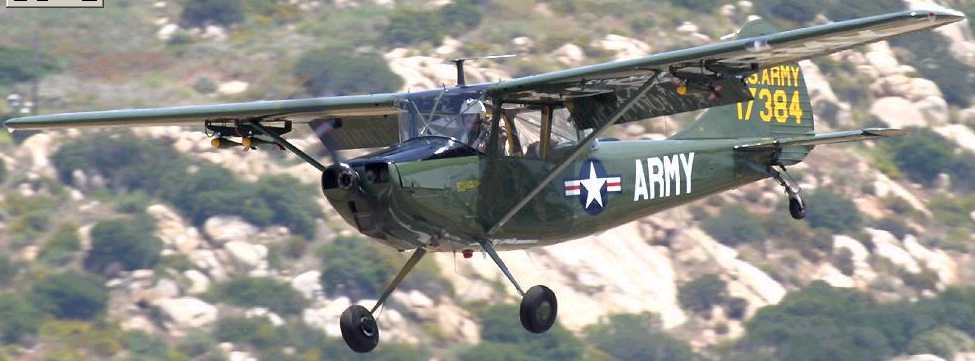
Neil Sheehan in an extensive interview describing how he wrote his book said:
After all of this experience, both there and here, you chose this Colonel to focus on as a metaphor for American involvement. Why that choice?
He had influenced that band of war correspondents who first clued America in to what was going on in Vietnam during the last period of the Kennedy administration.
Oh yes, he'd influenced us enormously because his first year in Vietnam was during my first assignment as a reporter and David Halberstam's first American war assignment. Vann had an extraordinary mind. He had an incredible capacity to relate to human beings. He was a wonderful actor. He could manipulate people. He could sense human issues. At the same time, he had a capacity to deal with hard facts, like statistics. He was a statistician. Usually those qualities seem to cancel each other out, but they didn't in him. So in that first year, we were faced with the problem of covering a war where the advisors in the field were telling us we were losing the war. We could see that as well when we went out on operations, which was pretty frequent. The General in Saigon, a man named Paul Harkins, always saw the world through
rose-colored glasses and kept seeing it through them. He would maintain we were winning the war. You were caught between the two. It was an adversarial relationship. And Vann helped us to understand the war in a way that other advisors couldn't, because he was fearless. He would work down on a tactical level, and he could apply what he saw down there at the strategic level. He gave us perspectives and information that we didn't get from other advisors. He shaped our reporting because we were trying to come to grips with this ourselves, and this man helped us come to grips with it in a way we wouldn't have been able to without him."
Quantitative attrition/annihilation mentality:
We know one bitter Vietnam vet criticized the book, A Bright Shining
Lie, but needs to rethink his position: Vann is the model of the leader we need today who can network and orchestrate a victory on complex, Non-Linear Battlefields (NLBs).
To this may be added a further set of observations drawn from current events. Most adversaries that the United States and its allies face in the realm of low-intensity conflict, such as international terrorists, guerrilla insurgents, drug smuggling cartels, ethnic factions, as well as racial and tribal gangs, are all organized like networks (although their leadership may be quite hierarchical). Perhaps a reason that military (and police) institutions have difficulty engaging in low-intensity conflicts is because they are not meant to be fought by institutions. The lesson: Institutions can be defeated by networks, and it may take networks to counter networks. The future may belong to whoever masters the network form."
These guys are right-on-target at the source of our temporary loss in Vietnam 1975-1991?. However, war is not just a lethal sporting contest among combatants, its about whose IDEAS will dominate, in the case of FREEDOM, in the end the truth has won out over communism. It could have won out sooner at less human cost--had the U.S. military/industrial complex not been deliberately racketeering the conflict for greed/ego.
In fact, Sheehan returns years later to Vietnam in the book, After the War is over, Hanoi and Saigon a review states:
However, if the forces of freedom were more open-minded and networked like the Vann did while he was alive and the enemy did, we could have won the struggle sooner on the battlefield and not just wait for cultural changes to do it for us. The men who fought in Vietnam need to know that their sacrifices did count-just ask the people of Thailand. But if we are to learn from our war there, we must not make excuses that the politicians "did this or that" when there is plenty to do at our own level within the military to reorganize for better 2D/3D maneuver, network and "out-guerrilla-the-guerilla", which is what Vann did. We also have thanks to Ben Works of SIRIUS, the British example in "Imperial Policing" in the 1920s/30s and Malaya in 1950 to see what "right looks like".
Imperial Policing (entire book online)
John Paul Vann is one of the greatest American heroes to ever live, America's "Lawrence of Arabia" in the far instead of middle east; Sheehan's book is a classic, the major fault we have is the "lie" ending in the title, probably a sop to get anti-war types to read it! I would change the word to "Hope" that was lost that we need to rekindle by reading this fine book. Webster should contact Sheehan and have him write a sequel book to ABSL on the "missing" period of Vann's Vietnam adventures when he was Mr. Ruff Puff. Congressman Charlie Wilson was to Afghanistan what Vann was to Vietnam; but note both men did not get the chance to do the job right. Which is why we need a specialized Sub-National Conflict Stability Corps so the milbureaucracy doesn't racketeer and both SNCs.
SUB-NATIONAL CONFLICT #2: IRAQ, JOHN PAUL VANN COIN TECHNIQUES FOR TODAY?
COUNTERINSURGENCY: The John Paul Vann Model
In November of 1968, I can remember the legendary John Paul Vann speaking to our graduation class of newly trained advisors at Di An, South Vietnam. You can't win a guerrilla war by dropping bombs from the air, he said. You may kill some of the enemy, but you will alienate the people you are there trying to help, and they will turn against you.
John Paul Vann was our "Lawrence of Arabia" in Vietnam. He spent 10 years there, first as an American infantry officer, then later as the main architect of the Vietnamization/Pacification program.
Other words of his I remember were, 'You need to go after the guerrilla with a rifle at the village level and kill them face-to-face. And to do that effectively, you need local Soldiers from the area to assist you. If the locals are properly led and equipped, they will do the job.'
What Vann was saying seems to me to be applicable to Iraq today. You need the support of the local population and indigenous troops to combat the guerrillas/terrorists/thugs on their own turf. Large conventional American military infantry units aren't necessarily best suited for this task.
Most think that it was just the Special Forces who were conducting counterinsurgency (COIN) operations in Vietnam. Very few have heard about the Co Van Mis (Vietnamese for American Advisors) and the mobile advisory teams (MATs). After 1968, fewer than 5000 assisted, advised, and to use a recently coined term, were 'embedded' with a 500,000 Regional Force/Popular Force Army that took the war to the enemy at the local level for a period of over five years.
There were 354 mobile advisory teams made up of five U.S. Army personnel (two officers and three NCOs). The MATs were really a scaled-down Special Forces team with one of the NCOs being a medic and there was a Vietnamese interpreter for communication purposes. As a young lieutenant, I served with a number of Popular Force platoons and Regional Force companies while a member of Advisor Terms 49
and 86.
Very little has been written about this little known aspect of the Vietnam War. In the book about John Paul Vann and the advisory effort, A Bright and Shining Lie, the big lie is what the author, Neil Sheehan, leaves out of the book. Most of the book deals with the South Vietnamese Army and the advisory effort up to the Tet Offensive in 1968, and very little if any detail or mention is given to the many years afterward where the Regional Forces and Popular Forces gave quite a good accounting of themselves against the enemy.
Sheehan spends the first 700 pages of his book detailing how bad the South Vietnamese Army was up to the end of 1967 (parts of which are true), then spends several pages on the Tet Offensive in early 1968, in which he fails to emphasize that the main fighting units of the Viet Cong army including their commanders and NCOs were eliminated, never again to become a viable fighting force. Some interpret this sound defeat of the Viet Cong as a deliberate attempt by the Hanoi Leaders to eliminate their comrades in the south.
Sheehan then skips five years of the war effort where the Regional Forces/Popular Forces held their own against the NVA/VC and defeated them in most of the smaller unnamed battles of the war at the village level. Then he picks up again with the 1972 Easter Offensive where Vann was killed, not by enemy contact, but by a helicopter crash during the monsoon rains. Barely 30 pages of Sheehan's book are devoted to Vann's success with Vietnamization. There was hardly mention of the Regional Forces/Popular Forces [RF/PF] the home militias, the little guys in tennis shoes, who inflicted over one-third of the casualties against the enemy.
I spent almost nine months with these little guys as a lieutenant taking the fight to the VC at the hamlet and village level. Not all the RF/PFs were great Soldiers, but many of them were if properly led, just as Vann had told us at the advisor school.
Nicknamed the 'Ruff-Puffs', they were not configured to stand up against a large force of NVA regulars, but they could provide security for the locals in a hamlet or village. The Soldiers either had their families living with them, or in the nearby village. Who better to know when the enemy was coming into a village than those who lived there?
There were many times when I knew when the Vietcong were coming into the village at night to recruit or create havoc. And then instead of being ambushed, I and my little band of Popular Force Soldiers became the ambusher. We beat the guerrillas at their own game. We took the night away from them. We no longer patrolled endlessly and aimlessly looking for a needle in a haystack, waiting for the enemy to initiate contact.
We waited for them in the darkness of the night, and kicked hell out of them. In today's military vernacular, we preempted them. That's how you fight the guerrilla and the terrorist and beat him at his own game.
I cringe now watching news clips on TV as young American Soldiers in Iraq are ambushed by snipers and blown up with the new version of the command-controlled booby trap, the IED (improvised explosive device). But how would the young American Soldiers be able to distinguish the al-Qaida terrorist from a local Iraqi civilization? The simple answer is, they can't.
And how do they find the IED? The answer is they can't unless an informer warns beforehand as to the location.
I believe the answer to this problem is found in the type of force that Vann created in Vietnam, coordinated by CORDS (Civil Operations for Revolutionary Development Support). So different was this approach to conventional warfare tactics that Vann insisted it be operated under civilian control on equal footing with the military hierarchy. Vann really wanted the U.S. military advisors to be in command of the Ruff-Puffs instead of being advisors, but Robert Komer, the first director of CORDS, resisted this idea.
Vanns approach to counterinsurgency was the blending of all civilian agencies in Vietnam under CORDS with a loan of 1800 U.S. military personnel to serve as advisors to local Soldiers to provide security for all aspects of the U.S. effort in Vietnam. These were the front line guys who made up the mobile advisory teams, who moved from one RF/PF unit to another accompanying them on day and night time operations.
It seems to me we are always waiting for the enemy to ambush us in Iraq. The first strike is always thrown by the terrorist, and then we react by sometimes killing Iraqi civilians as the sniper fades away into the crowd. This unfortunate response is, in itself, a tactic of the terrorist/insurgent/enemy combatant.
Don't we need to pre-empt the terrorist as he is preparing the IED to blow up an unsuspecting U.S. Soldier and don't we need to know that a terrorist cell from outside Iraq has begun operating in a neighborhood? To do so, we need intelligence from the local civilians and Soldiers from the area who understand the language, customs, and dynamics of the local situation, who can easily point out strangers in the area even though they speak the same language, but look different.
The best of the MAT teams helped perform all of the above missions because they lived with their Vietnamese counterparts 24 hours a day, ate their food, got to know their families and developed friendships that last even today, 28 years after the war. The Co Vans did not retreat back to a secure base camp far removed from the people they were trying to help and defend.
So where do we get the local Soldiers in Iraq to perform this mission? As a former Co Van, I sat in astonishment when I saw the 500,000 man Iraqi Army being disbanded and sent home immediately after Saddam's main army collapsed. For the most part, they surrendered without firing a shot. Why send home a trained army, although obviously not well trained according to Western standards, but surely part of them could have been used along the guidelines of the MAT team concept in Vietnam?
I realize that all of Saddam's army could not have been used like we used the RF/PF in Vietnam, but surely some of them could. It was obvious that a large number of Saddam's conscripted forces were not loyal to him.
We could have had local Iraqi Soldiers patrolling under the command of small military advisor teams to help flush out enemy combatants and newly arrived in-country al-Qaida terrorists. The advisor teams would provide the coordination and communication with the larger American units in the area. This would enhance security for the civilian efforts and NGOs in Iraq. The Iraqi civilians must feel safe and secure before a new form of government can develop without the imprint of a terrorist stamp.
I believe that what Vann said in the 1960s in Vietnam is relevant today in Iraq as it relates to counterinsurgency. All the high-tech gadgetry and firepower that our military has today, leaves us relatively helpless when it comes to fighting the insurgent who blends in with the civilian population. An innocent civilian killed translates into a win for the terrorist. To avoid this, it takes the Soldier-on-the-ground with a rifle taking the fight to the terrorist, in an area that he previously thought was a safe sanctuary. And to do that, you need local Soldiers familiar with the terrain, the language and the customs of the area. John Paul Vann understood that.
The Vietnam Was has been mis-remembered, mis-understood, and mis-reported in regard to John Paul Vann's effort with Vietnamization and the fighting ability of the South Vietnamese Soldier. Sheehan has done them a great disservice in his book, A Bright And Shining Lie, from which a movie of like title was made.
Few know that the Viet Cong lost the war, and that they were no longer a viable force after 1968. The Viet Cong could not have won the war and bested the South Vietnamese Army in battle. The advisory effort in Vietnam wasn't perfect, but the South Vietnamese forces held their own in the 1972 Easter Offensive by the North.
The South Vietnamese Army (ARVN) was finally defeated in 1975 when they were invaded by the fifth largest army in the world. They were invaded by 17 divisions of the North Vietnamese Army to include over 700 tanks that steamrolled everyone in front of them. The North Vietnamese were still being supplied with war materiel by their allies, the Soviets and Chinese, while the allies of the South Vietnamese, the United States, abandoned them in their hour of need.
The ARVN were also disadvantaged and vulnerable because they had to defend everywhere, and the NVA could concentrate superior forces at weak points in the South.
The myth perpetuated by the anti-war media was that the South Vietnamese military was no good. I returned to the province capital of Xuan Loc, Vietnam, in 2002 and visited the large communist cemetery there filled with 5000 graves. This is where the last battle of the Vietnam War was fought, where the 18th ARVN Division defeated three NVA divisions before finally being overrun by 40,000 of the enemy.
Would Vann's model of counterinsurgency work in Iraq today? That's a good question, but what is the alternative? Our Soldiers now are getting tired, and our forces are being stretched too thin to continue the mission indefinitely.
The architect of the 1975 invasion of South Vietnam, North Vietnamese Tein Van Dung, in an indirect manner, gave Vann a complement for his conduct of the pacification program. In his book, Great Spring Victory, he never once mentions revolutionary warfare or the guerrilla tactics of the Viet Cong as aiding him in his final assault on the South. That's because Vann's program of Vietnamization had basically wrested control of the south from the guerrillas who we no longer
a viable fighting force.
That's rather ironic, isn't it? The myth exists today that peasants wearing rubber tire sandals employing guerrilla tactics won the war in Vietnam.
Our officials in Iraq are saying it will take three to five years to build an Iraqi Army. With Vann's model, we could have taken the best of the 500,000 former Iraqi military, and put them under the control of U.S. military advisors. Instead of having young American Soldiers patrolling the streets of Baghdad and the smaller cities around the country, surely we could have used Iraqi Soldiers advised by several thousand American military personnel. Instead, we sent them home to do what?
Unlike Vietnam, there is no outside Army that is going to invade Iraq in division-size strength and overwhelm our military units there. Our powerful and well-trained military units, with the aid of the British, have already won the big battles of the war. Now we need small units of local Soldiers taking the war to the enemy at the village level. I see no other way to preempt the terrorist before he has the time to act.
The small suitcase bomb, the suicide bomber, chemical and germ warfare, and the IED, all weapons used by the terrorists in the 21st century, make it necessary to defend everywhere. The terrorist will always go for the target of opportunity, searching for the most vulnerable target.
And this appears to be the difficulty of the are of the future the preempting of the terrorist before he can strike. Or, even before that, having the will and knowledge of how to preempt the terrorist.
Note: The above article appeared in Counterparts quarterly journal Sitrep in the Winter/Spring 2004 issue. Counterpart is an association of U.S.-Vietnamese advisors and their Vietnamese counterparts.
For more information on the author, the association and its periodical, contact: Ken Jacobsen; kjacobsen@knology.net
UPDATE 2008: TIME TO LEARN FROM VIETNAM AND JOHN PAUL VANN
PROBLEM #1. Snobby U.S. Military lusting for nation-state wars (NSWs) wrong for COIN/SASO operations: Consequences of American Narcissism in Iraq
"It was an accident to begin with. John Vann was my friend, I had known him in those three years I'd been in Vietnam and I'd see him periodically afterwards. When he was killed, I went to his funeral at Arlington in 1972, and it was like an extraordinary class reunion. Here were all the figures of Vietnam in this chapel. This man had left the army as a renegade lieutenant colonel, had gone back to Vietnam as a civilian, and ended the war holding a General's position even though he was a civilian. General Westmoreland was his chief pallbearer, and a few minutes before the ceremony started, Edward Kennedy, the last of the Kennedy brothers, came in. And I thought of the older brother who sent the country to fight this war in Vietnam in '62 when I first went there, already buried in this cemetery, and here was the youngest brother coming ... he was a friend of Vann's. Sitting with the family was Daniel Ellsberg, who was about to go on trial for copying the Pentagon Papers. He and Vann had remained best friends, despite going in totally opposite directions on the war. It was very moving. I realized that we were burying more than John Vann. We were burying the whole era of the war. We were burying the era of boundless self-confidence that led us to Vietnam. By that time, John had come to personify the war. He'd spent the better part of ten years there. Everyone else would go for a year or two, three at the most, and he'd spent the better part of ten. And I realized that if I wrote a book about him, I could write a history of the war. I could put the two together, and people might be able to understand the war because they would be reading about it in human terms, though the story of a man whose life turned out to be like a novel.
There was a moral outrage in what he was telling you about the war that you wound up conveying to the audience back home in the United States.
"Yes, there was a moral outrage on several levels. First of all, you've got to remember in that period of time, this country was at the high noon of its power. We thought that whatever we wanted to do was right and good, simply because we were Americans, and we would succeed at it because we were Americans. And Vann embodied that, and so did the reporters. We wanted to see this country win the war just as much as those advisors did. We felt we would help to do that by reporting the truth. And so there was the moral outrage over this General and the ambassador in Saigon who kept denying the truth we would see. I discovered later on that they believed these delusions. We thought they were lying to us; I discovered later on they believed what they were saying. They were really deluded men. And then there was the moral outrage over the way the war was being conducted. Vann had the keen sense of honor as a Soldier and he was enraged at the bombing and shelling of peasant hamlets, which was routinely done by the Vietnamese and American Generals. He thought, first of all, this was terrible. When I say keen sense of honor as a Soldier, he was in Vietnam to fight other men, not to kill somebody's mother or sister or kid. And he felt that, first of all, this was wrong, and secondly, it was stupid, because it was going to turn the population against us, and of course he was quite right. So a sense of moral outrage was conveyed on several levels, yes."
You quote him at one time as saying, "This is a political war, and it calls for the utmost discrimination in killing. The best weapon in killing is a knife." You emphasize his criticism of the indiscriminate bombing, which was really the way that we chose to pursue the war. The Generals were fighting another war, they were still fighting World War II, and it made no sense in the Vietnam context.
"When I got at the records, I realized that they also understood what they were doing. I mean, they thought that they could -- you know, Mao Zedong described guerrillas as fish swimming in the sea; well, they were going to empty the sea. And the Vietnamese Generals on the Saigon side thought that they could terrify their peasantry into ceasing to support the guerrillas. I think the American Generals, as it turned out later on, deliberately wanted to empty these areas of population".
JOHN PAUL VANN AS THE MODEL FOR TODAY'S U.S. ARMY LEADER
"The Mongols, a classic example of an ancient force that fought according to cyberwar principles, were organized more like a network than a hierarchy. More recently, a relatively minor military power that defeated a great modern power--the combined forces of North Vietnam and the Viet Cong--operated in many respects more like a network than an institution; it even extended political- support networks abroad. In both cases, the Mongols and the Vietnamese, their defeated opponents were large institutions whose forces were designed to fight set-piece attritional battles.
"Cyberwar is coming" by John Arquilla and David Ronfeldt, International Policy Department
RAND
"Sheehan sees a Vietnam suffering not from the American war but from a prolonging of the agony by the rigid regime of Le Duan, with its prosecution of new wars and its Stalinist economics. In 1986, as General Giap relates in a longish and candid interview, came doi moi, or ``the new way.'' Out went the collective farms and heavy industrial projects; in came a free market. Within a year, Vietnam was exporting rice, and the currency had stabilized. Still, it's a desperately poor country, the North in particular, as Sheehan's tour of hospitals demonstrates: They are under-equipped and cannot afford to stock antibiotics or basic vaccines. In Saigon, Sheehan is overcome with memories and seeks out his and Susan's old haunts, as well as those of John Vann, subject of much of A Bright Shining Lie. Like the North, the South is a society run by party faithful--and the privileges of rank have hearkened to them, leaving out a great many of the ``mutilated.'' Even so, the armies of homeless have been eliminated, and no one is starving. In Saigon, Western influence is strongest, ready for the moment when the American embargo drops and Vietnam becomes the economic powerhouse everyone is anticipating. Already the BMWs proliferate."
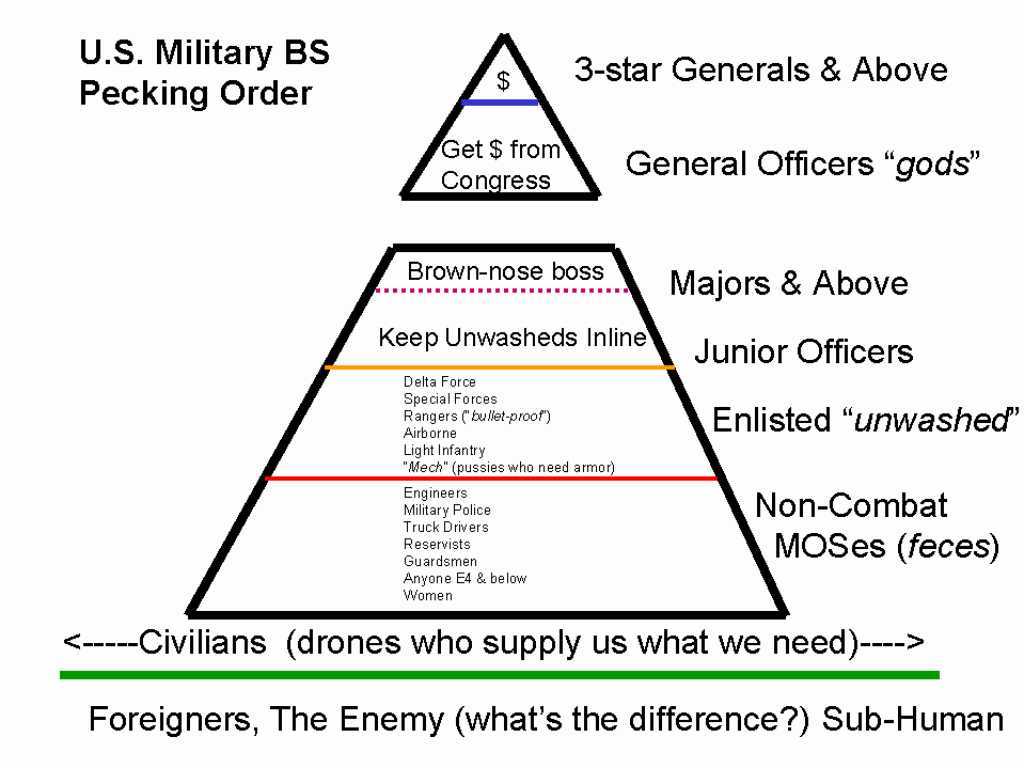
Garrison Mentality in Iraq/Afghanistan: the "Presence Patrol" = Delegating COIN/SASO Dirty Work like it were lawn care
VIDEO PROOF: WHAT WRONG LOOKS LIKE: Trucks on Roads = Land Mines = Deaths
 www.youtube.com/watch?v=txfHswsVJqg
www.youtube.com/watch?v=txfHswsVJqg
1. Stop "Presence patrolling": there is no PEACE to "keep"--so stop driving around aimlessly like a beat cop when being seen ENRAGES the populace as a foreign occupier; this isn't New York City where being seen deters crimes--it INVITES violence
2. STAY OFF ROADS: stop being so damn lazy.
Park ALL wheeled trucks since they cannot leave roads where land mines wait. WHY GIVE THE REBELS EASY TARGETS TO BLOW UP? If you have to go somewhere to set-up a checkpoint, guard an area, lay an ambush (security creating maneuvers) go in TRACKS and go by unpredictable, cross-country routes.
www.combatreform.org/armoredhmmwvsstrykersfail.htm
3. Don't Clusterfuck: no troops on foot in WW2 style formations in bad camouflage bunched together
www.combatreform.org/camie.htm
4. No Half-Assed Vehicle checkpoints: use BLAST WALLS to channelize incoming cars and compartmentalize any car bombs going off. Use a robot and/or bomb dog to inspect car for guns or explosives. No more than 1 man near the car and only if you have to; use loud speakers from a tracked armored vehicle and/or a guard tower covering the inspection proicess with rifle and machine gun fire and have person get out of car if IDed as a rebel and walk through a blast wall lane and have him swiped for guns/explosives--if he's wearing a bomb he only takes out some easily replaced blast walls
www.combatreform.org/highexplosives.htm
5. Stop accepting any war situations given; the responsibility of the general officer is to insist that the goals and means are moral and feasible
This video shows in alarming detail the incompetent "From Here to Eternity" U.S. Army and USMC suffering as victims due to its failure to know WHAT RIGHT LOOKS LIKE for a sub-national conflict.
 www.youtube.com/watch?v=DnVZRgiOw-o
www.youtube.com/watch?v=DnVZRgiOw-o
The non-linear battlefield (NLB) is dominated by high explosives (HE); not feel-good, kinetic energy (KE) bullet gunslinger duels. Combat Engineering is the key. War is not a macho ego trip; its about whose WILL dominates the situation. A competent, professional Army SMOTHERS sub-national conflict violence and does not add to it. This can give time for a political settlement to be had, but we can ill afford to drag our feet on it...and if Iraq is just a corporation feeding frenzy backed by an illegitimate puppet government, then military men damn well better open their mouths to Congress and get a legitimate mission to accomplish by demanding real elections be held immediately--monitored by outside agencies to insure we just don't lie again and put another puppet in charge like Mr. Maliki.
BOTTOM LINE: Let's stop looking like and acting like a gadgetized version of the Red Coats.
Canadians in Afghanistan Fail in LAV3Stryker Trucks
 www.youtube.com/watch?v=rm2cuwJati8
www.youtube.com/watch?v=rm2cuwJati8
PBS Documentary Afghanistan: The Other War, reveals that the emasculation of western armies into wheeled trucks like the LAV-III/Stryker to not LOOK war-like (ie; look less capable, which they are) cannot even overcome the battle against earth terrain to have basic mobility to reach people in closed terrains in jeopardy at the hands of sub-national groups rebelling against the nation-state. You look less capable means you ARE less capable and being weak with a "glass jaw" neither protects the good civilians nor engenders respect from the enemy. "Nation-building" in war zones in wheeled trucks is a disaster.
Also telling is the Canadian Multi-National Force Commander's obsession with self; who cares how history will judge him? The Mission and the Men should come before "Me". By being in road-bound wheeled trucks, the NATO MN forces have a "glass jaw" that makes it impossible to "turn- the-other-cheek" so they are trigger-happy trying to use firepower to compensate for a lack of M113 Gavin-type tracked cross-country mobility (avoid road troubles in first place) and armored protection. When NATO forces are caught red-handed needlessly killing Afghan civilians, as a Cover-Your-Ass (CYA) politician--maybe without a technotactical grasp of what his subordinates are doing--he gives the standard c'est la guerre (it is war, blame it not our incompetence or willful wrong-doing) excuses sure to infuriate the people whom we want to stay out of the Taliban's camp. He offers that the Soldiers might be court-martialed but he doesn't show any grasp that he has them in bad situations setting them up for such failures; for example they live in exposed tents when they should be in dug-in and Hesco-covered ISO shipping container "BATTLEBOXes" at their forward operating bases (FOBs).
WRONG
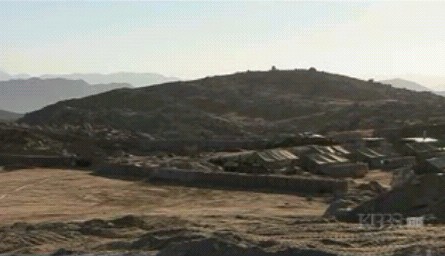
RIGHT
 www.youtube.com/watch?v=5qdHqBKbaAI
www.youtube.com/watch?v=5qdHqBKbaAI
Hopefully, he and others will watch this PBS video and realize they need to hand out bright-orange traffic cones or saw horses so his troops can start actually visibly marking impromptu road blocks (place a sign on one of the cones/saw horses saying "STOP!" in the local language) at THE PROPER DISTANCE TO GIVE CAR BOMB STAND-OFF PROTECTION and stop the gleeful "warning shot" BS which lets cars/trucks get too close in the first place and results in needless dead/wounded innocent civilians.
WRONG
 www.youtube.com/watch?v=JAJ46Wosrn0
www.youtube.com/watch?v=JAJ46Wosrn0
RIGHT
 www.youtube.com/watch?v=qJpYvbu4KhU
www.youtube.com/watch?v=qJpYvbu4KhU
Do we want an excuse to open fire and kill "ragheads" confirming we are just there to take their oil/natural resources or do we want to do what's morally RIGHT and technotactically BEST to protect our troops and avoid misunderstandings that kill innocent civilians and feed the rebellion? For all the $$$ millions going into sexy helicopters to fly him around, surely he can afford some traffic cones/saw horses? Or some spark plugs? (see part 2). Watching the PBS video clipabove may not make these lessons obvious; maybe he and other decision-makers will read our captions here and follow the lead of the British and Dutch and re-equip ALL NATO forces with M113 Gavin or other type light tracks since Afghanistan's terrain is traversable by these low ground-pressure vehicles and not wheeled trucks with any armor protection. The Canadians to their credit, have since this video factored in their constant LAV3Stryker truck failures in Afghanistan and turned more and more to tracked vehicles.
Its clear that to do SASO/COIN operations properly, we need a dedicated non-linear, battlefield stability corps composed of older, more mature, psychologically-screened to not be narcissist "shooters" properly equipped with light M113 Gavin armored tracks, affordable 2-seat observation/attack, simple rotary and fixed-wing STOL aircraft to scour the skies 24/7/365 and not constantly crash like UAVs do and see hiding enemies with human eyesight plus sensory help---and plenty of combat engineers to repair the country's infrastructure and separation wall apart warring factions and security fence trouble-makers out.
 www.youtube.com/watch?v=DsO54MQi6es
www.youtube.com/watch?v=DsO54MQi6es
PBS documentary shows a Canadian Provincial Reconstruction Team (PRT) at an isolated FOB in Afghanistan trying to win over a nearby village from Taliban rebel sympathy by repairing their water pumps and supplying other needed items. The kingdom is lost for want of a nail when the native contracted supply column is turned away because the bomb sniffing dog discovers a driver has traces of explosives. Why OPSEC is violated by having locals drive supplies to FOBs in the first place? Thus, they cannot get measly spark plugs and LAV-III/Stryker clusterfuck drive into a run-down road-side black market where their "shooter" foot narcissists hop out and proceed to "block" the road by NOT blocking it as if Afghans who have lived with guns for centuries are going to cower at them brandishing firearms.
"Look-At-Me-I-Have-A-Gun-Treat-Me-Like-god" Complex
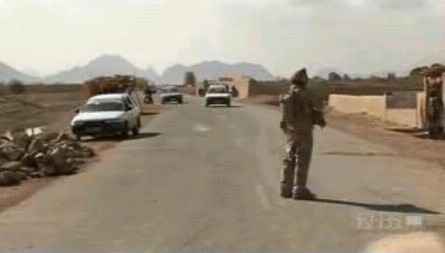
When Afghans continue to drive because the Canadians didn't even post traffic cones or forward vehicles to stop traffic for convoys to pass, they eagerly open fire with "warning shots". Even when moving they don't feel safe in their allegedly "armored" LAV3Strykers spitting out warning shots left and right and causing a truck to over-turn and nearly killing an innocent Afghan. How many spark plugs would the UH-60 MEDEVAC helicopter flight have paid for if it had been prevented? How many brand-new water pumps?
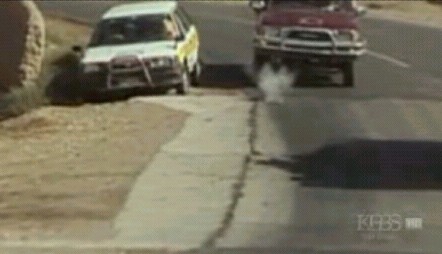
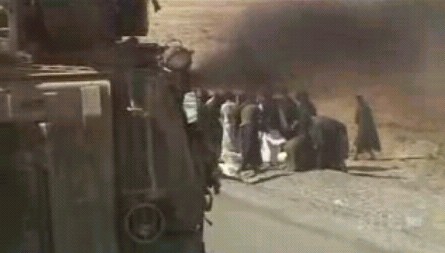
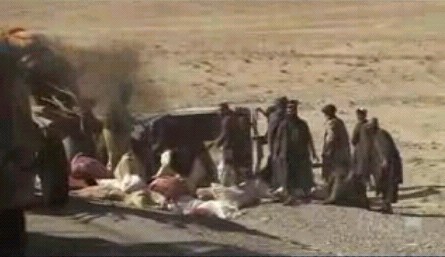
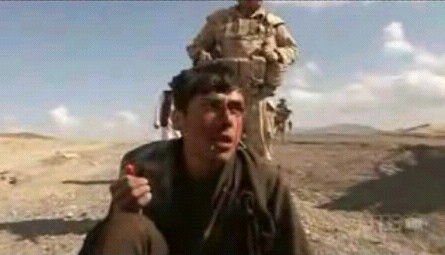
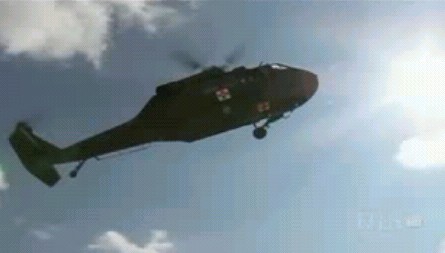
A "pound-of-cure" MEDEVAC helicopter is flown in to fly him out, but the "ounce preventable" damage is already done. So much for "winning hearts and minds" this day. Emasculated ground troops in wheeled LAV-III/Stryker trucks are set up for road/trail restricted failure wherever they are.
 www.youtube.com/watch?v=ZandbBaUw_U
www.youtube.com/watch?v=ZandbBaUw_U
Video begins with the PRT female officer explaining the need to win over the villagers to a smartass kill/capture enlisted narcissist obsessed with the "Taliban all around".
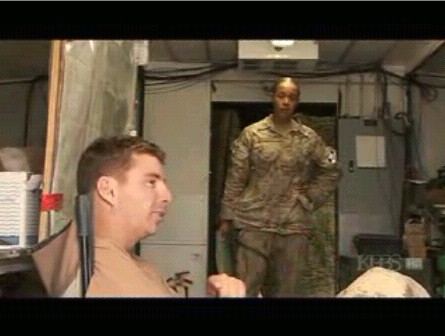
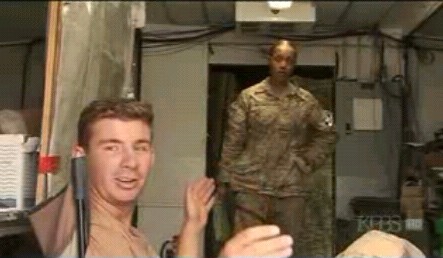
By conveniently being in wheeled LAV3/Strykers without cross-country mobility he is exempt from having to patrol or set up LP/OPs to scour the immediate area of his own FOB of Taliban asking for a M16 vs AK47 firefight.
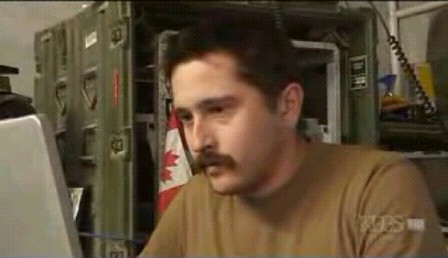
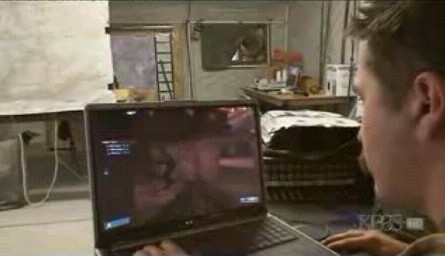
What he can do when not sharpshooting his officers is play kill/capture on a laptop as his buddy nearby is doing. Me thinks he could better spend his time making some "STOP!" signs in the local Afghan language to bolster impromptu road blocks and prevent the need to "bust caps" into civilians. At 2: 58 yet another LAV3/Stryker clusterfuck convoy is sent down the road hit by a little rain to make contact with another village to win them over when they can't even keep their promises to their first village adjacent to their FOB. A LAV3Stryker gets stuck in a little mud ON THE ROAD and breaks its main bearing. While their officer spins a tail almost as fast as the rubber tires are in the deepening mud, the mission is ABORTED. The "recovery" LAV3Stryker yanks out the first truck but its hitched up to a regular LAV3Stryker to tow back to base. Then as the pair start to move--THEY BOTH GET STUCK in a minor mud rut that would be nothing for a light M113 Gavin armored track to drive through without even stopping to blink. With darkness falling, they need to get back to base before the Taliban come out; the NCOIC walks away in disgust he's been given crap wheeled vehicles to work with.
STILL PHOTOS OF THE LAV-III DEBACLE IN AFGHANISTAN (AMERICANS EXPERIENCE THIS DAILY, TOO)
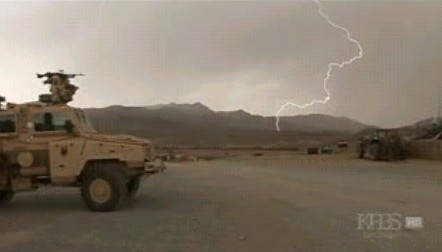
2: "We are going to make contact with a new village and reach out to them and win over their hearts and minds in our low-maintenance, all-terrain, high-speed SASO wheeled vehicles. Our LAV-IIIs are used by the Americans who call them 'Strykers'".
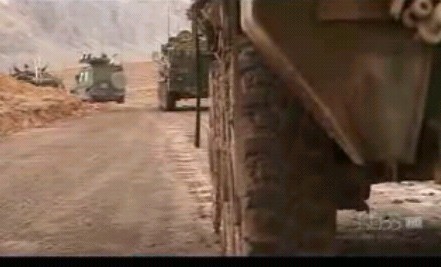
3: "WAHOO! Look at Me! I'm going 60 miles per hour on the road!!" (Not for long!)
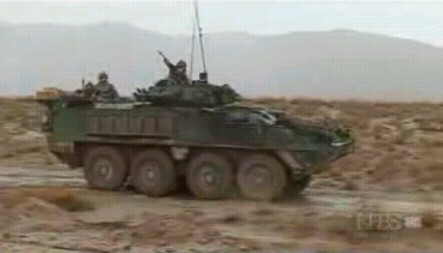
LAV-III stuck a 1st time; Road Speed: 0 MPH
4: "Ohhh....sh$%^&! I drove into a rut....."
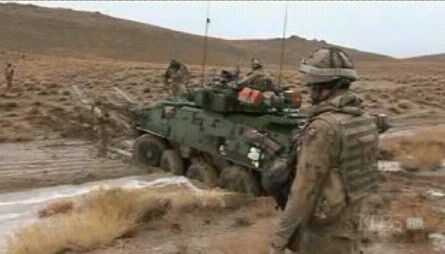
5: "Can we get it out?"
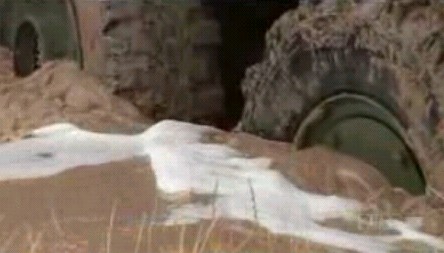
6: "We had technical difficulties and had to cancel the mission to the village"
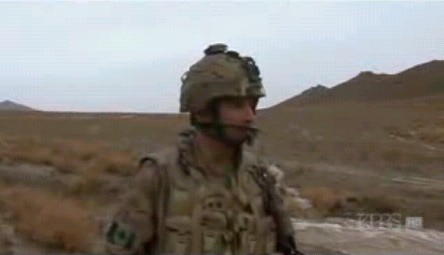
7: "What's that dangling underneath the LAV-III?"
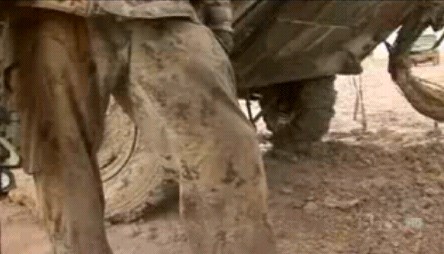
8: "Oh No. Its the main bearing. Its broke, man. This thing won't run its trashed."
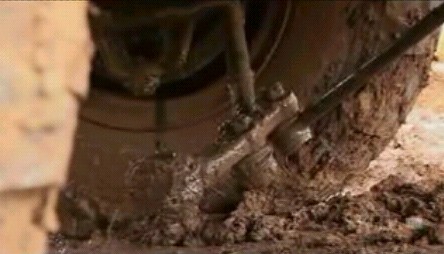
9: "What a Piece-of-Shit (POS)."
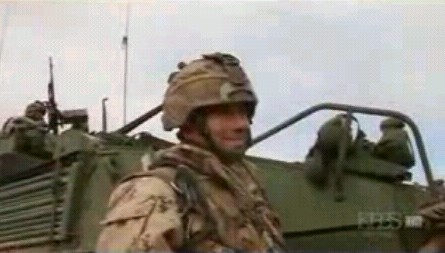
10: "Careful! Don't get the 'recovery' LAV-III stuck, too!"
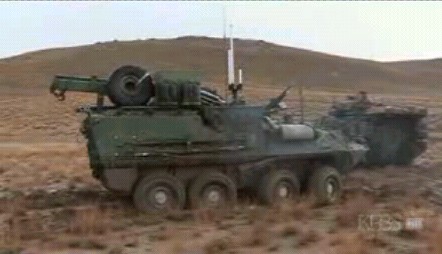
11: "Oh Boy. The 'recovery' LAV-III is spinning in the mud, too."
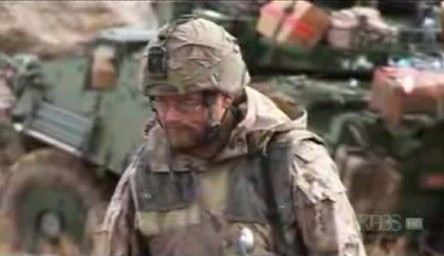
12: "Please...please grip...grip....we don't want to be stuck here outside the wire when the sun goes down..."
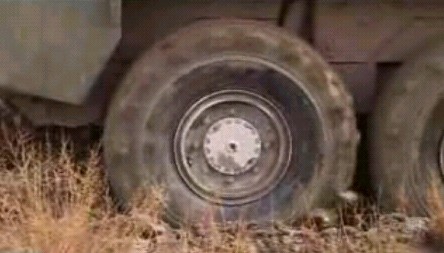
LAV-III stuck a 2d time: and it gets another truck stuck, too!
13: "Gun it!!! Get through the dip!"
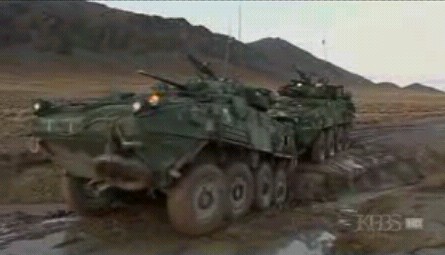
14: "Damn! We are Stuck Again! BOTH LAV3STRYKERS!!! Dude! It's Getting Dark!"
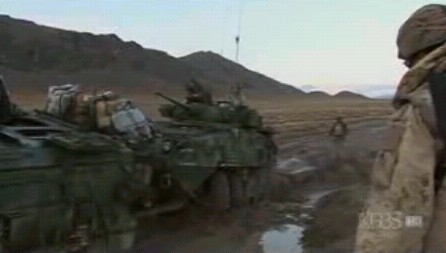
15: "We Got to get Back to the FOB before the Taliban come out!"
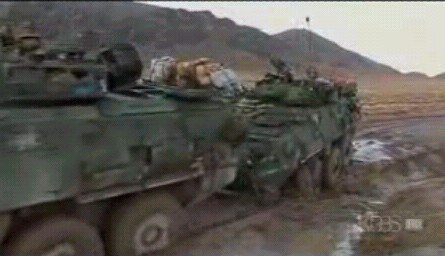
16: "Go Easy! Easy! Let the Wheels Catch!"
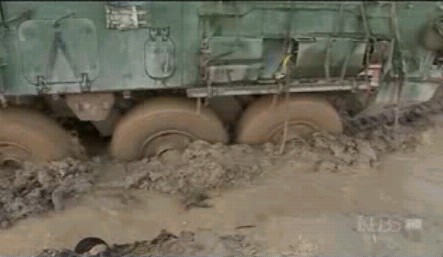
17: "Damn. Forget it. Cut the Engine!"
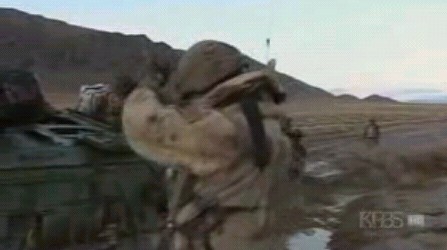
18: "Mission Aborted! Maybe an officer will figure this out."
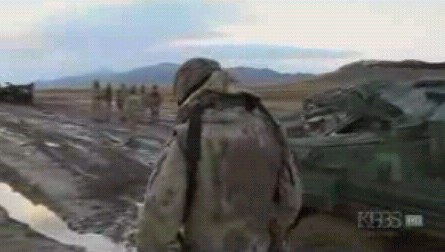
"We REALLY showed our Afghan allies today why they should trust their very lives to us.
Yeah, Right. We need to turn these pieces-of-shit in and get tracks so we can win"
Fortunately, they survive the debacle and ask the nearby villagers to WALK TO THEM at the FOB to receive the supplies that finally arrive, compromising their own security as well as revealing the villagers to any watchful Taliban as being NATO sympathizers.
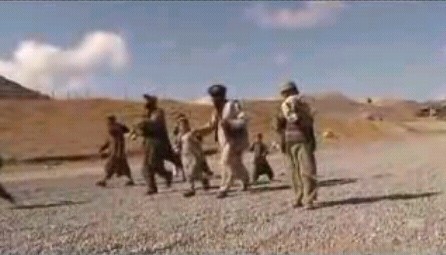
If this isn't bad enough, the smirking "shooters" tell them the doctor has run out of supplies and they must walk back to their village, essentially empty handed.
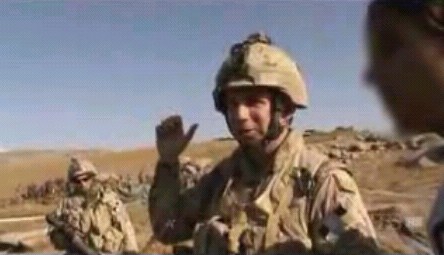
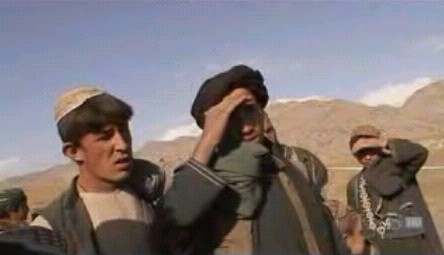
If these Canadians had M113 Gavins instead of LAV3Stryker wheels they could have DROVE the doctor cross-country to the village and done medical assistance and passed out whatever supplies they had---discreetly in a designated home.
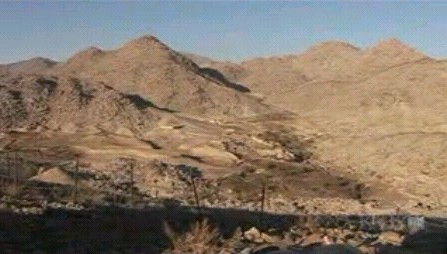
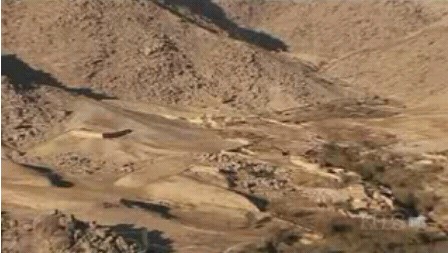
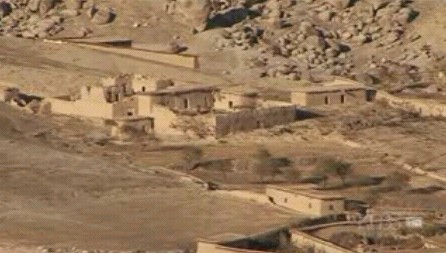
Clearly, smirking nation-state war narcissists receiving full-time pay/benefits (welfare recipients in sexy uniforms) wrongly look down on these "ragheads" as "slackers" looking for a "free hand-out" when really they are Islamofascism victims who with a little help might be our friends-for-life if we respect their dignity and follow-through with our promises.
To CYA, the FOB is suddenly dismantled and removed from the area; violating the proven ink blot strategy of counter-insurgency which is to stay and expand goodwill--which is what the Dutch are succeeding at doing in Afghanistan using light mechanized M113 Gavins.
LAV-3/Strykerrrrs fail in Afghanistan and the Canadians ditch their own wheeled trucks they make for more mobile and better armored tracks!
Enter the Leopards and M113 MTVL Gavins!
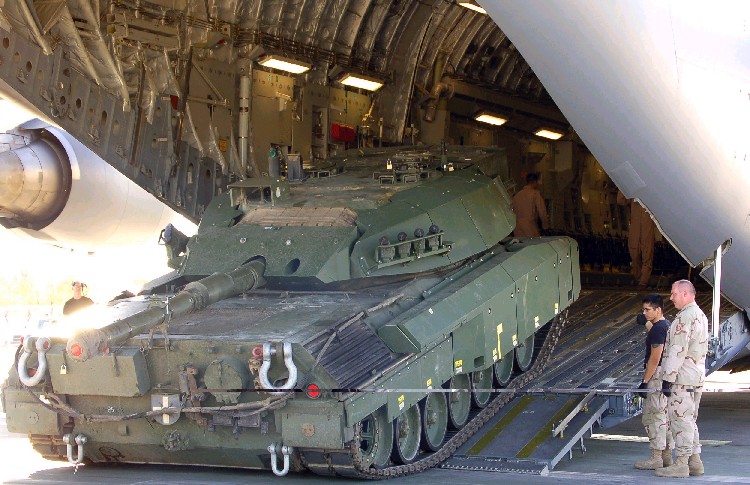
 www.youtube.com/watch?v=GrATZkFUhaI
www.youtube.com/watch?v=GrATZkFUhaI
The Dutch are using M113 Gavin tracks, too and are being VERY successful in counter-insurgency operations!
 www.youtube.com/watch?v=ZKa3tK3zi4c
www.youtube.com/watch?v=ZKa3tK3zi4c
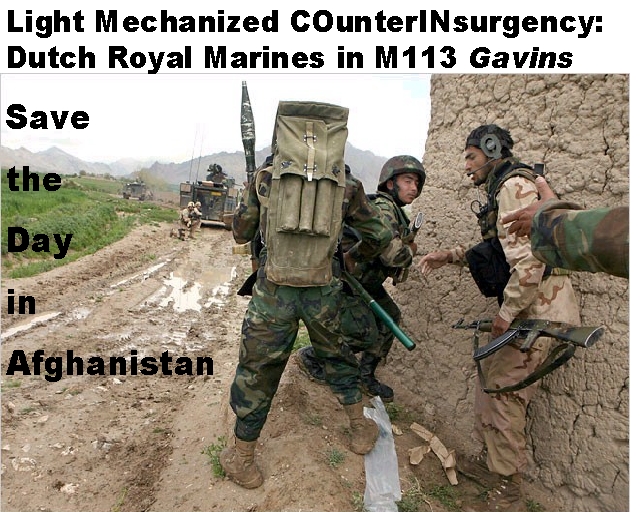
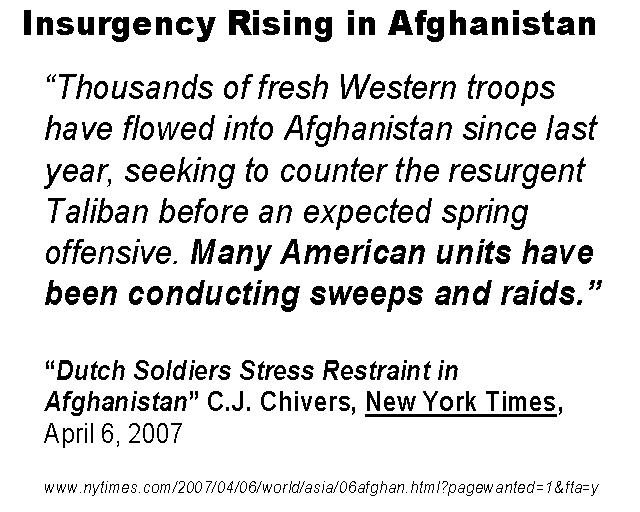
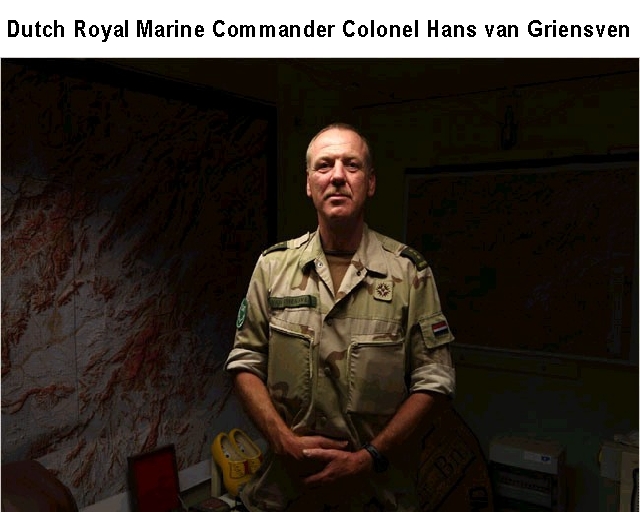
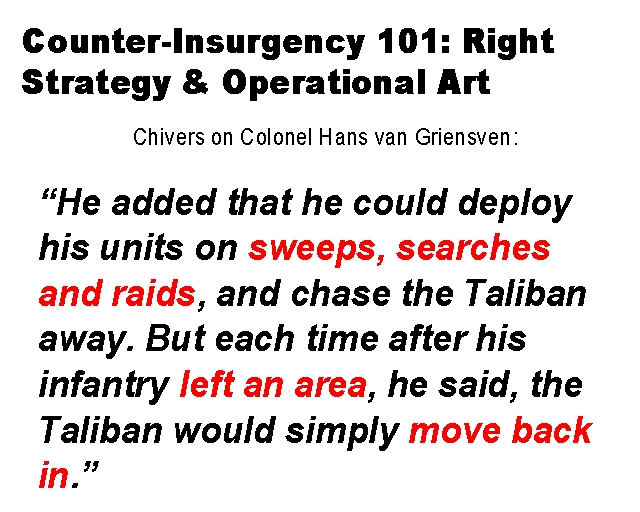
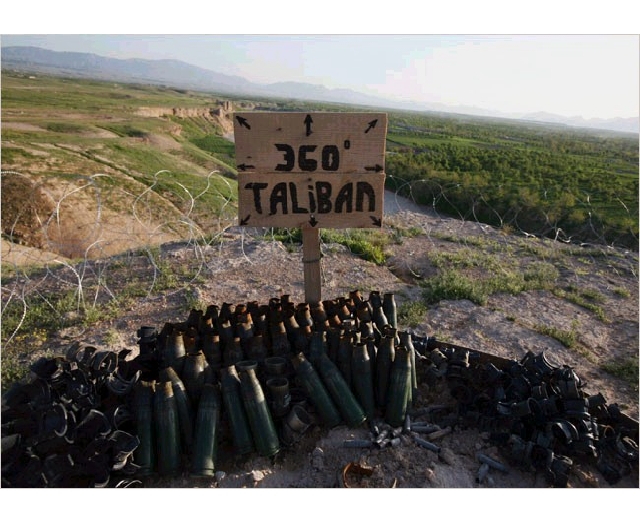
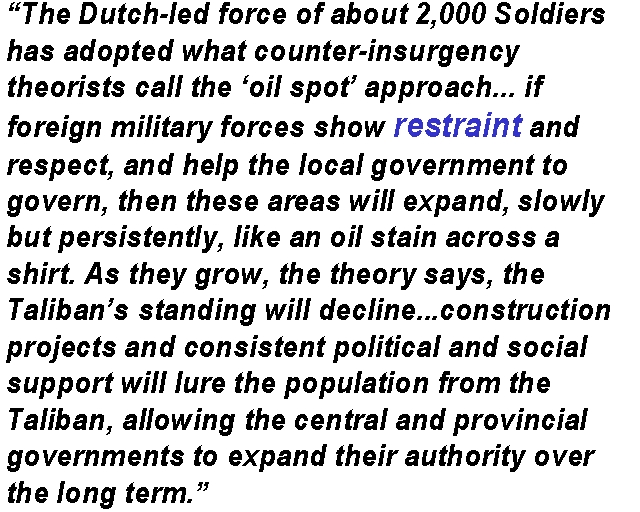
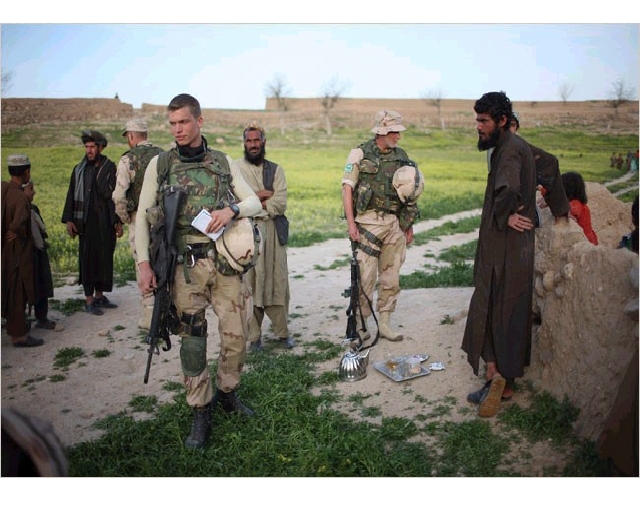
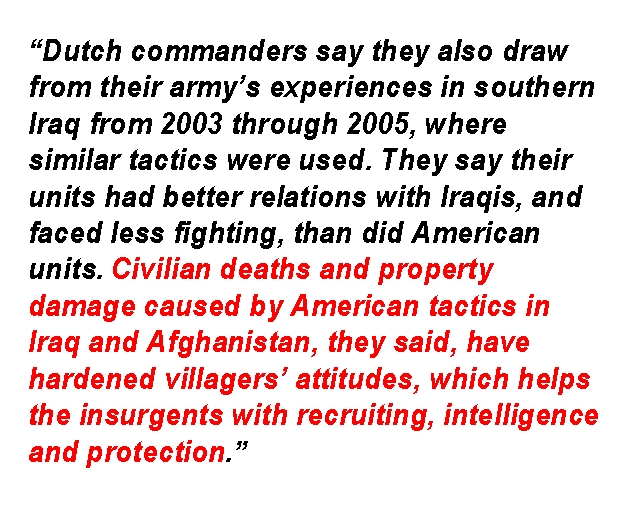
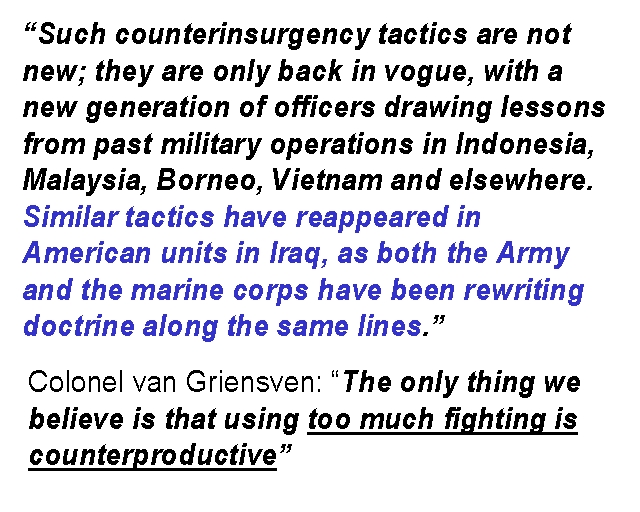
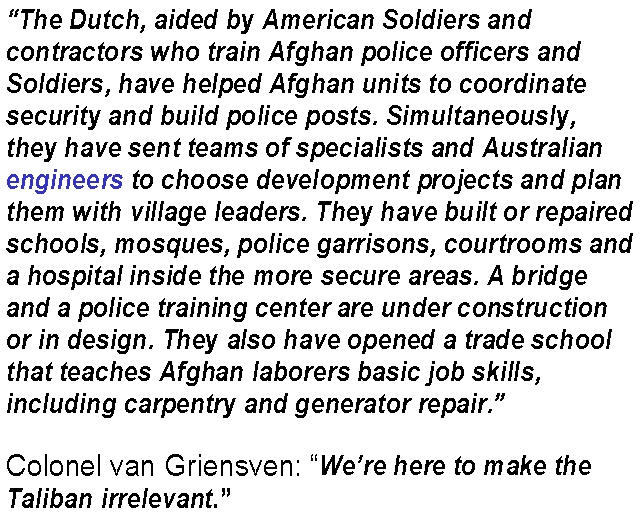
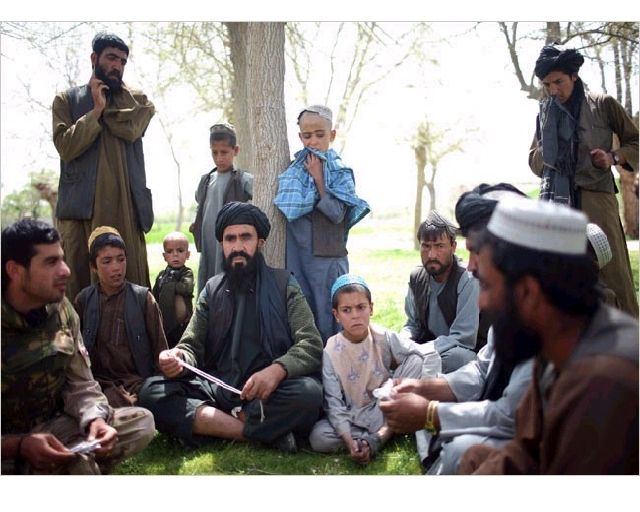
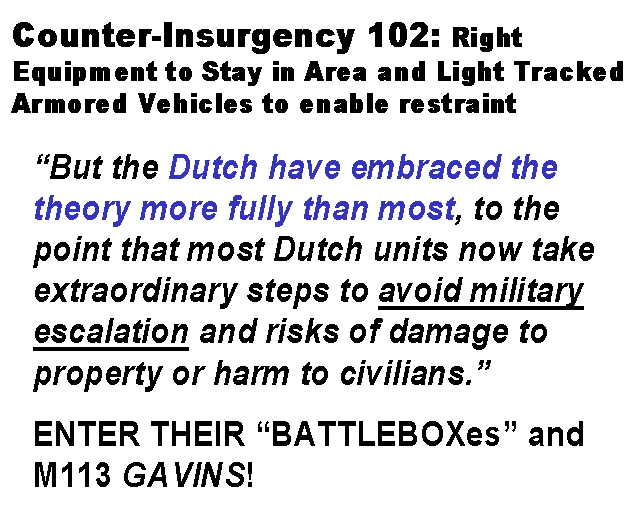
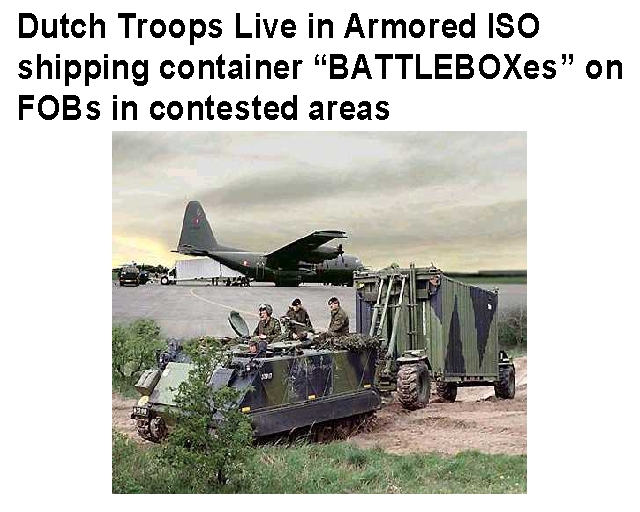
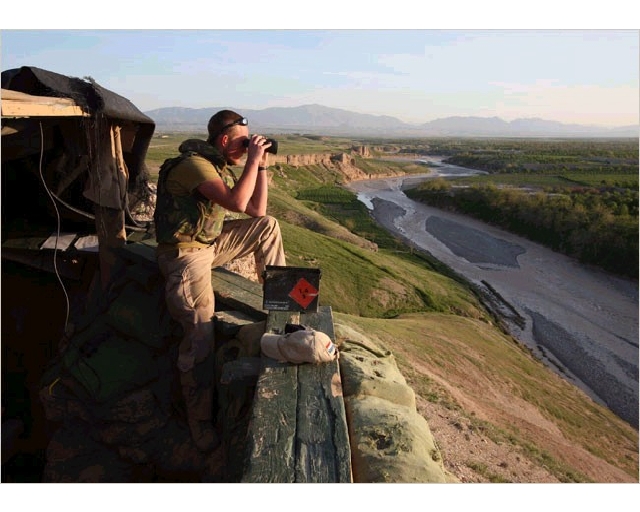
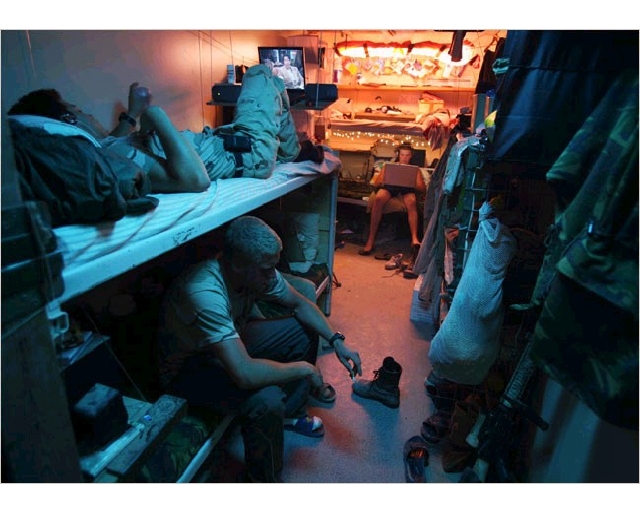
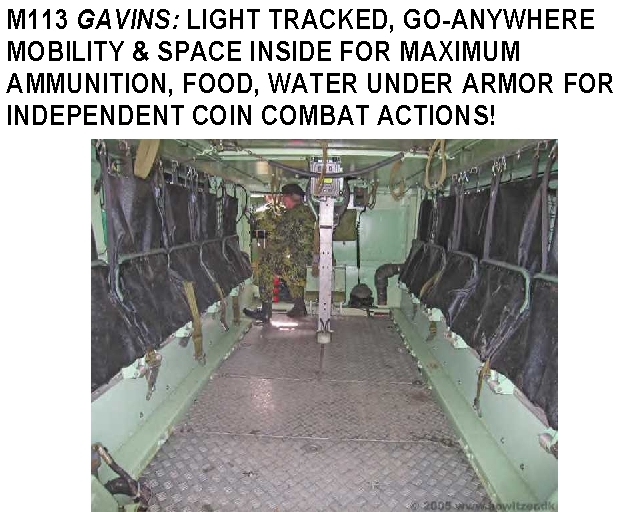
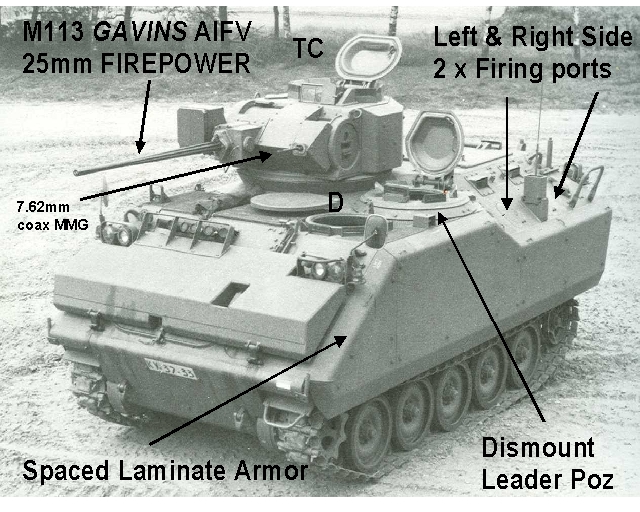
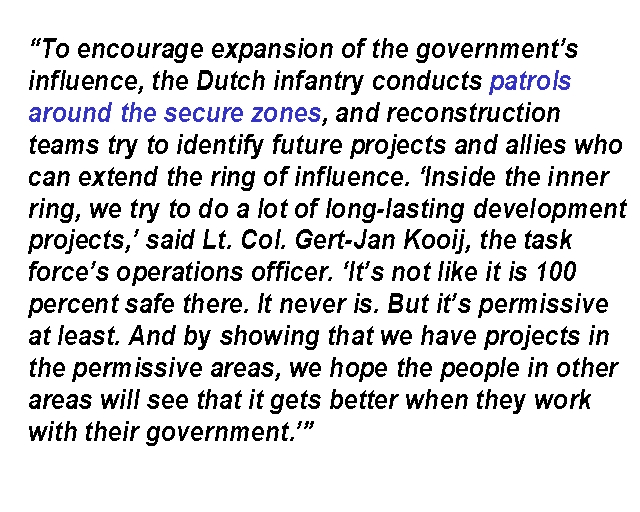
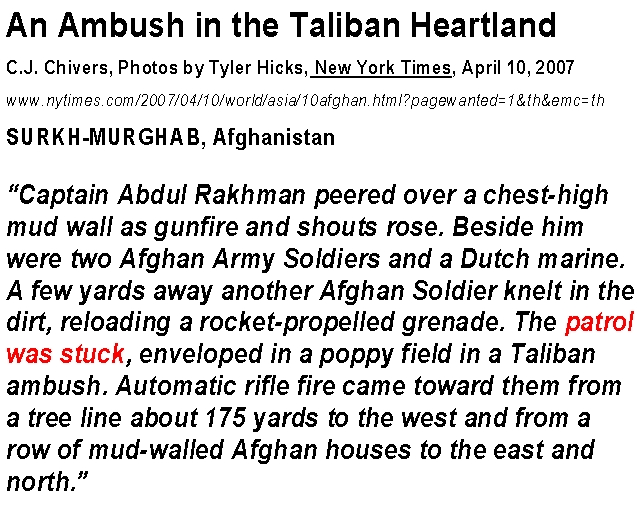
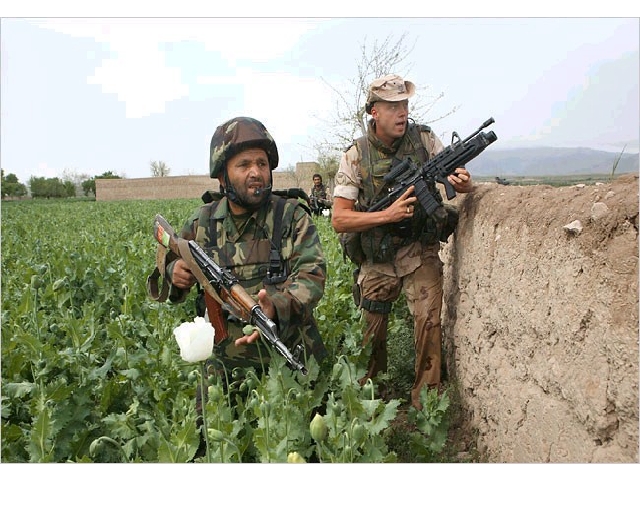
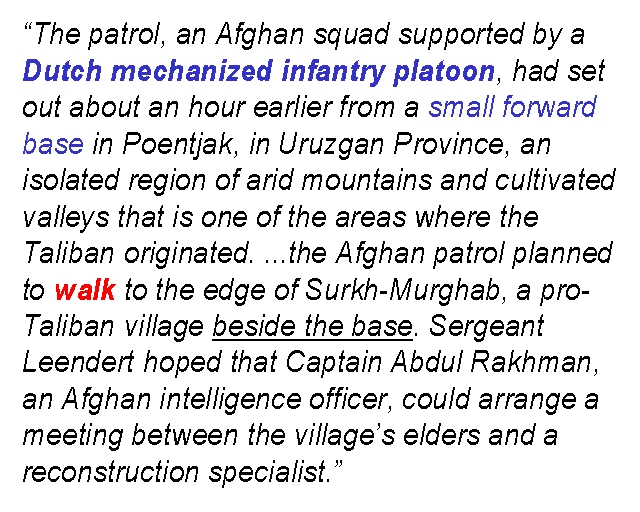
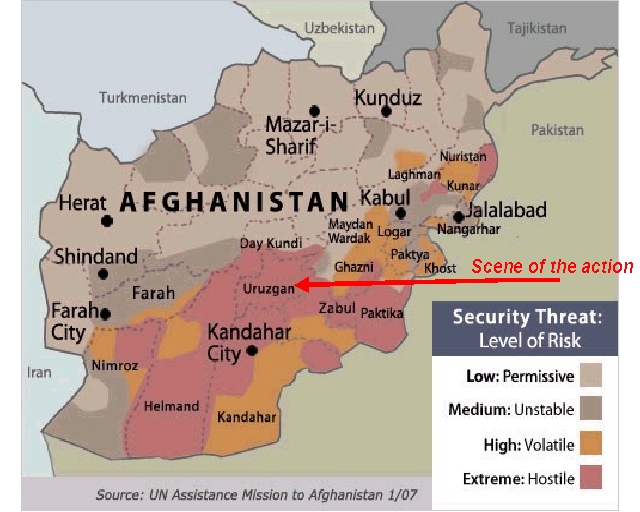
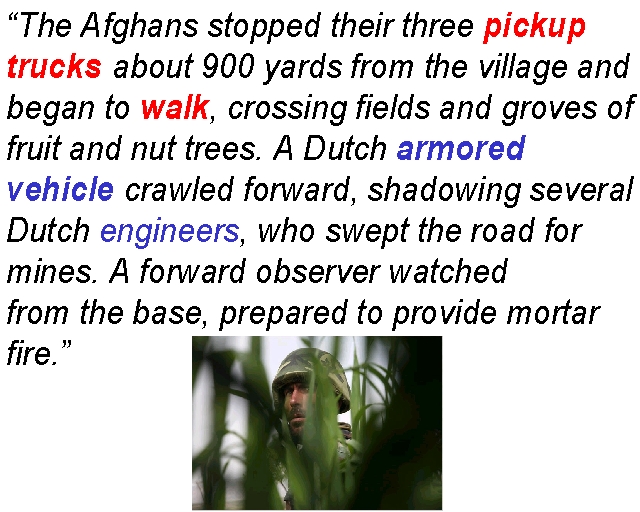
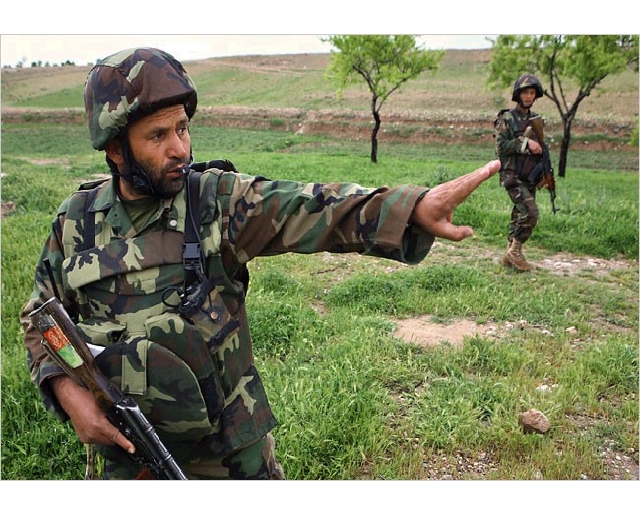
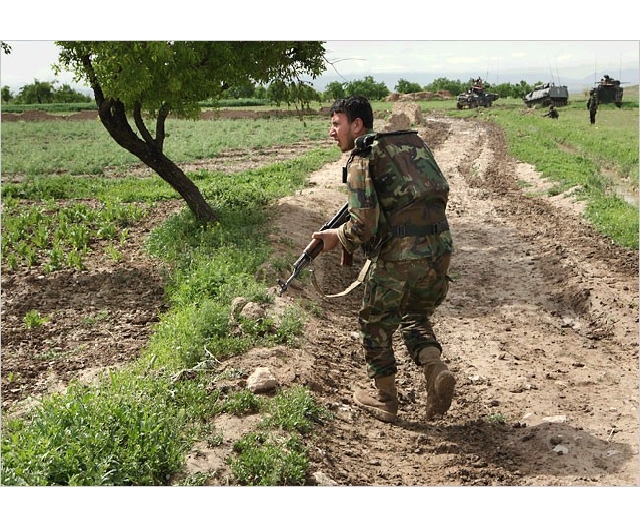
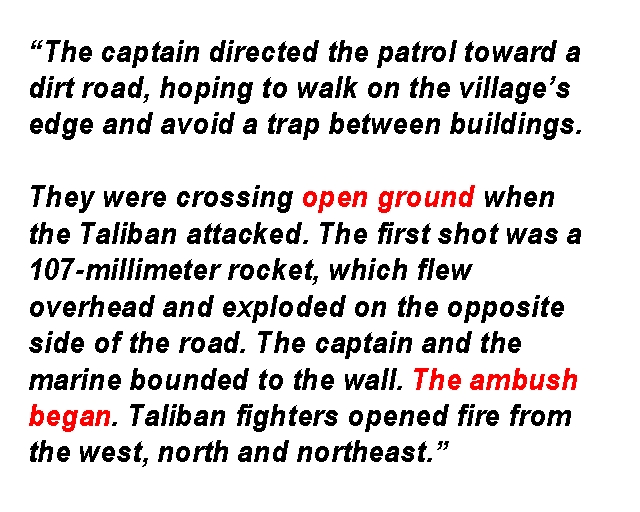
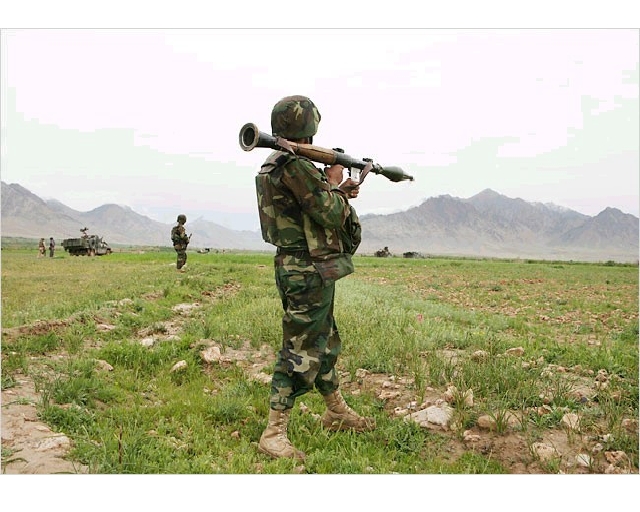
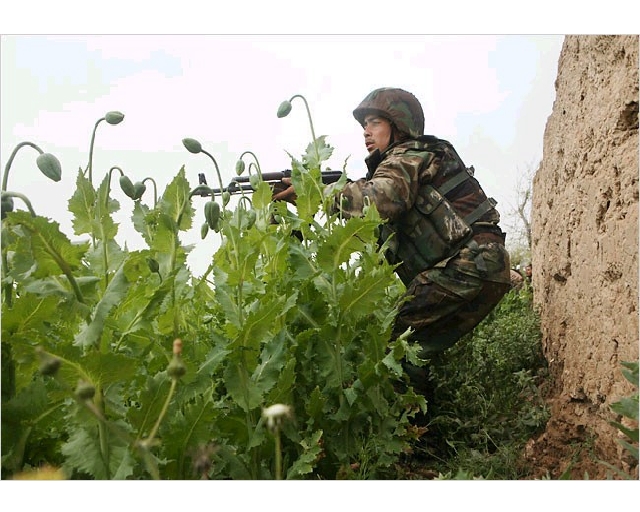
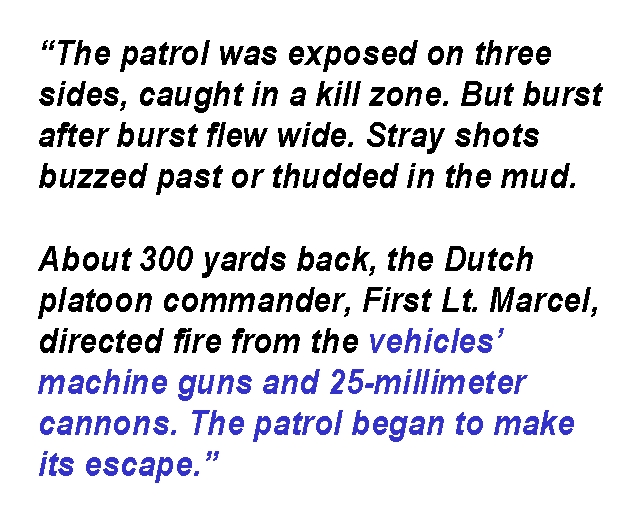
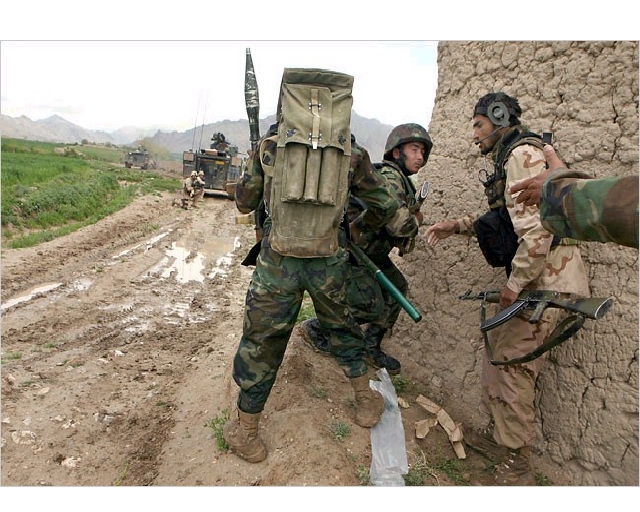
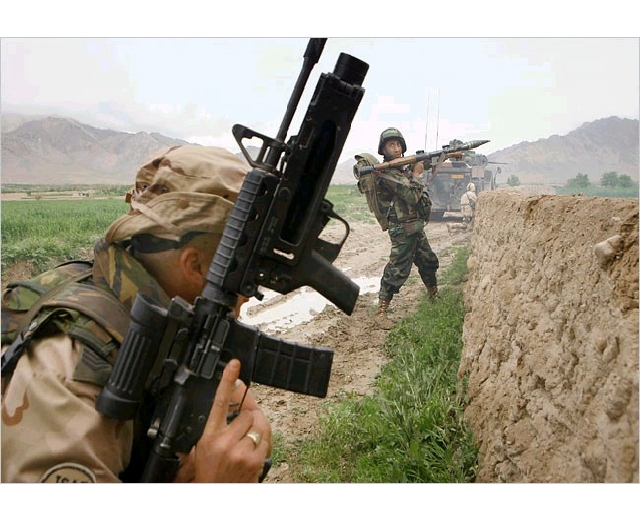
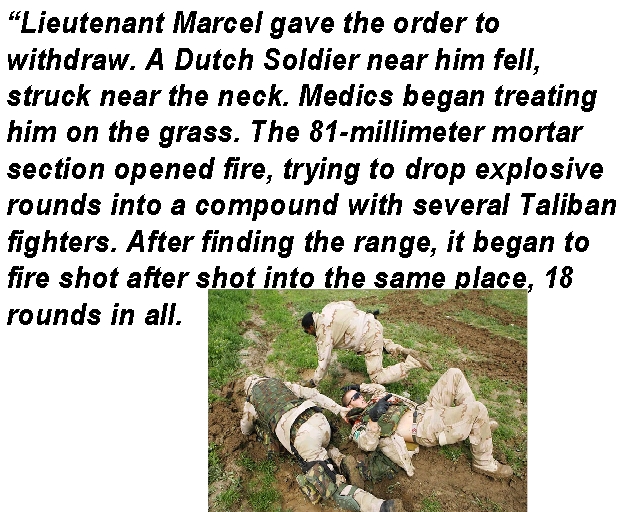
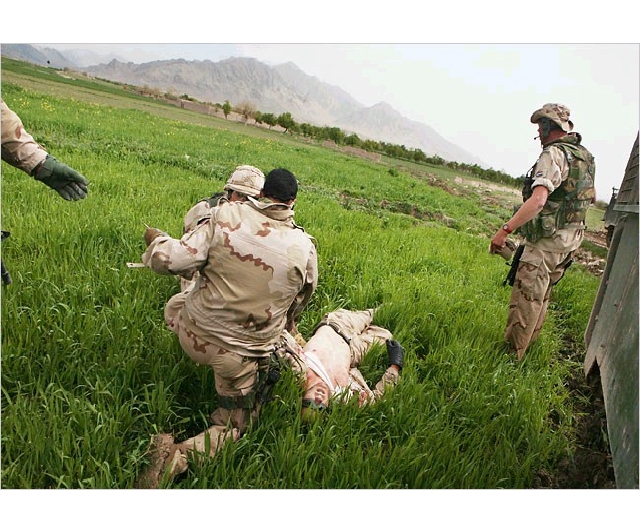
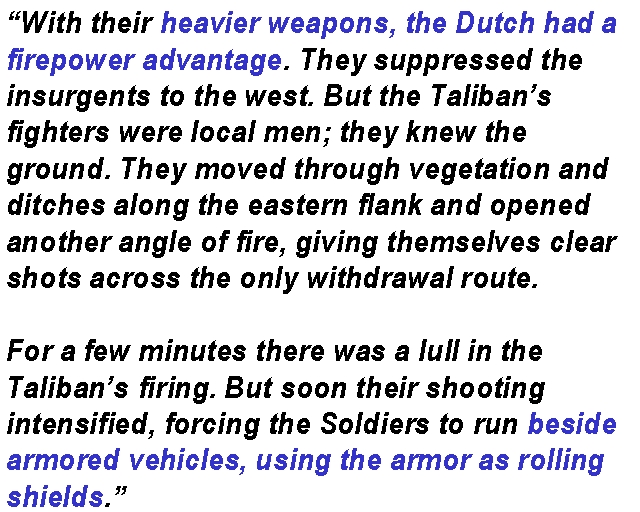
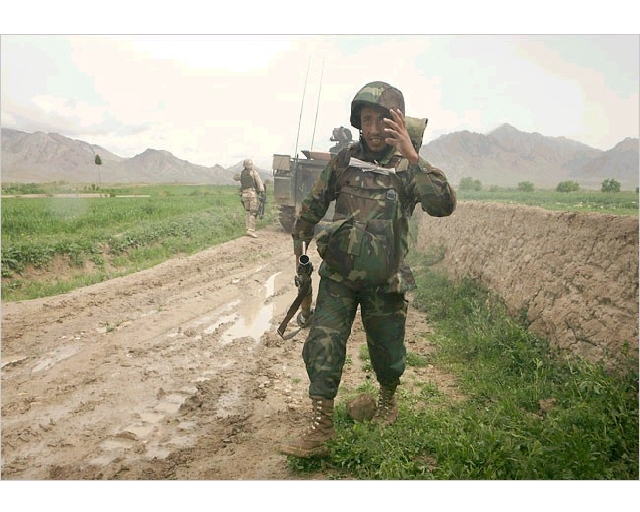
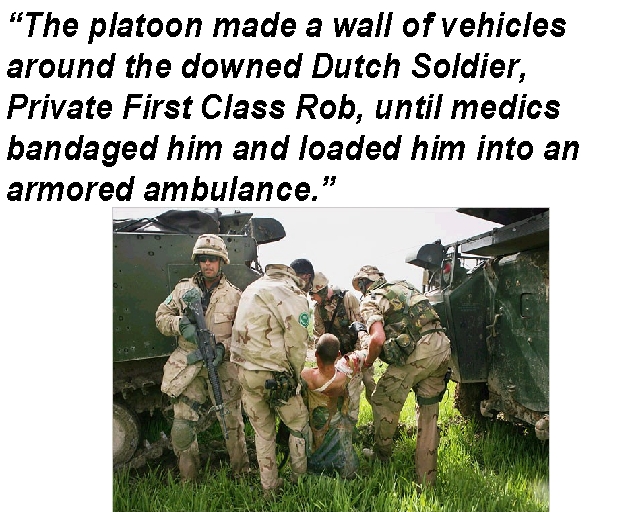
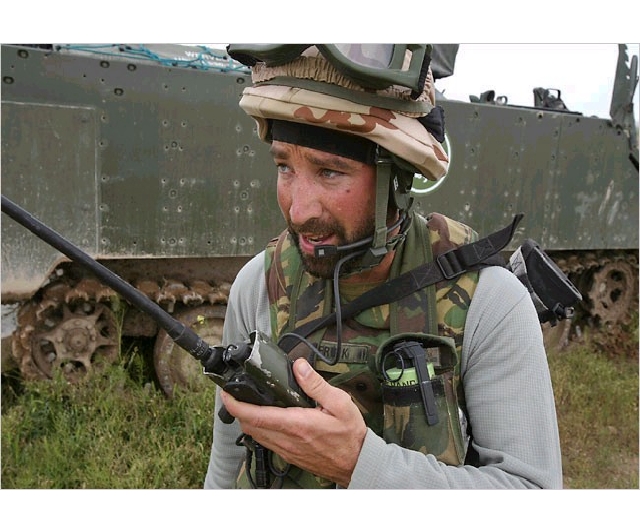
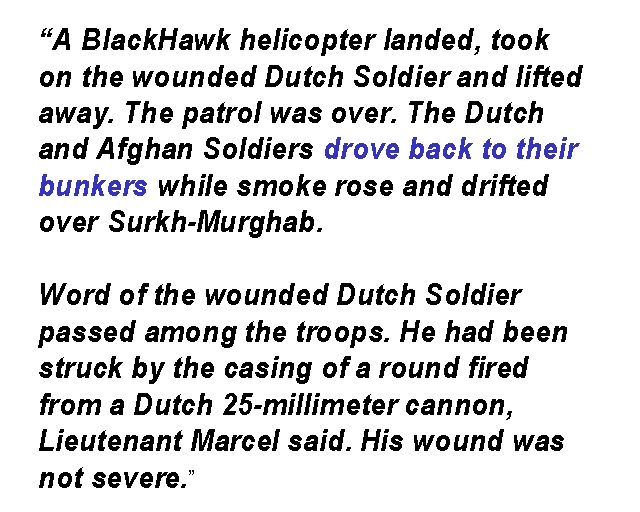
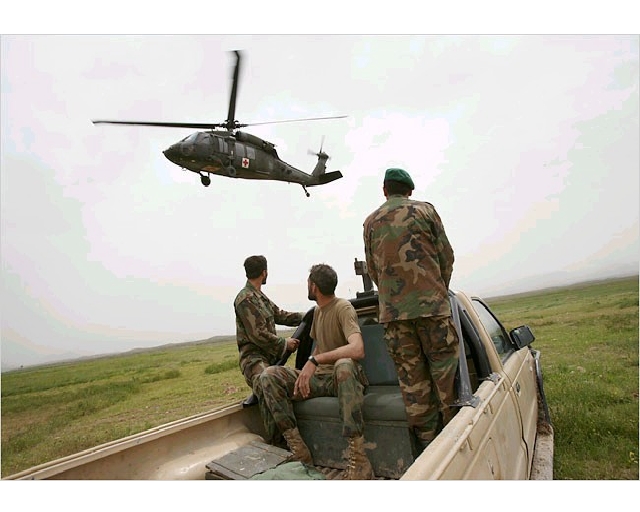
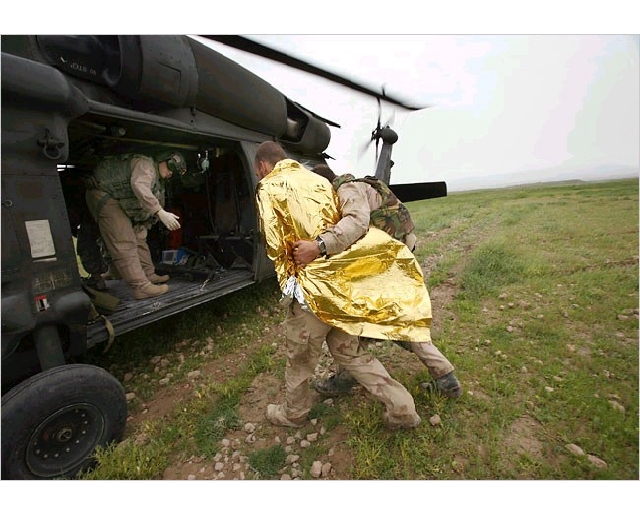
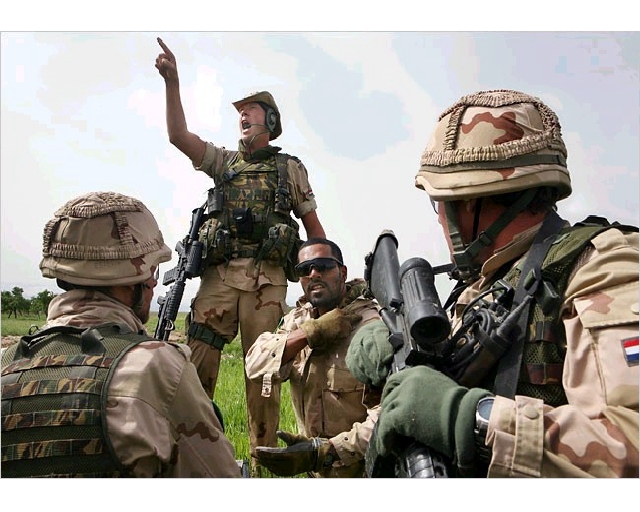
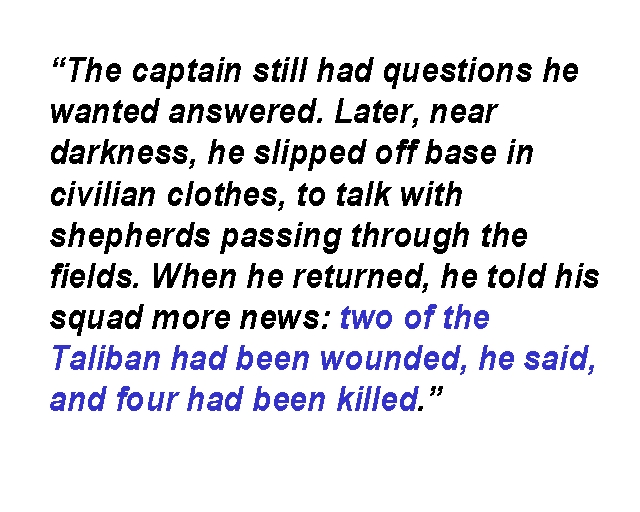
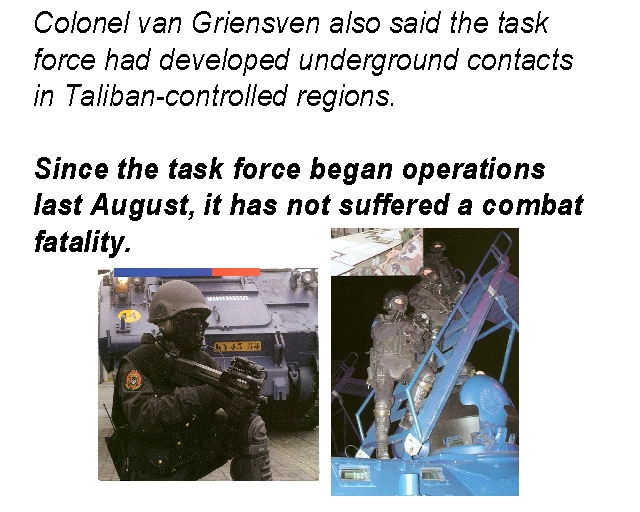
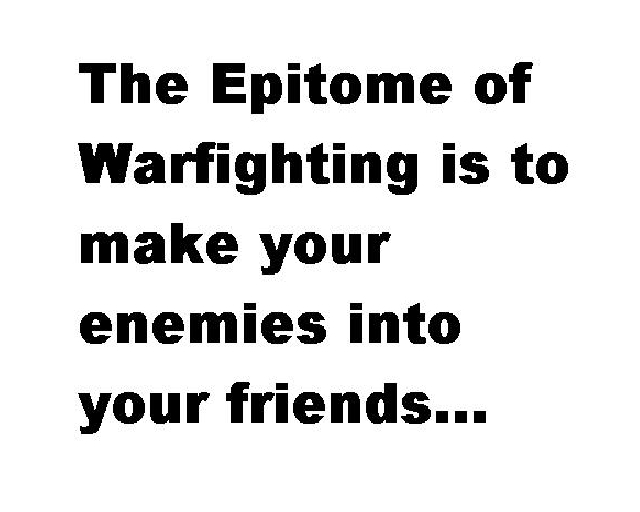
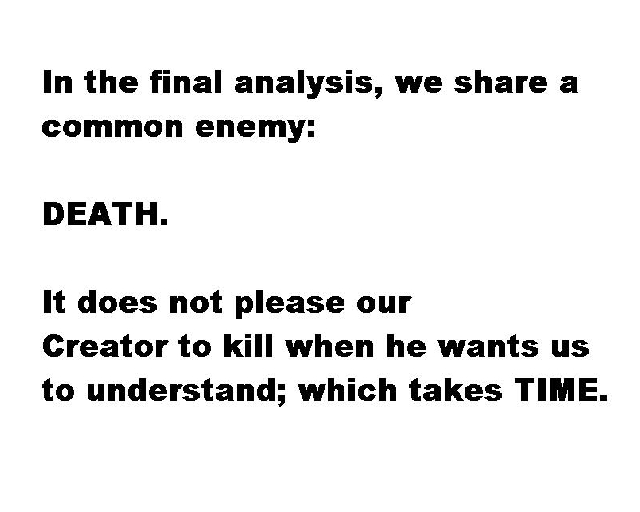
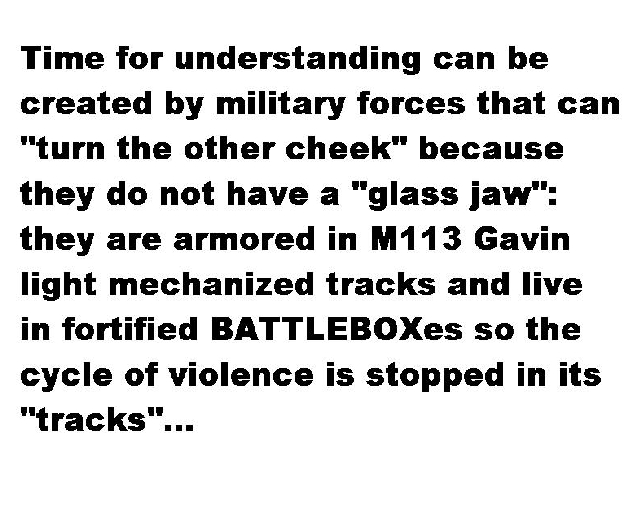
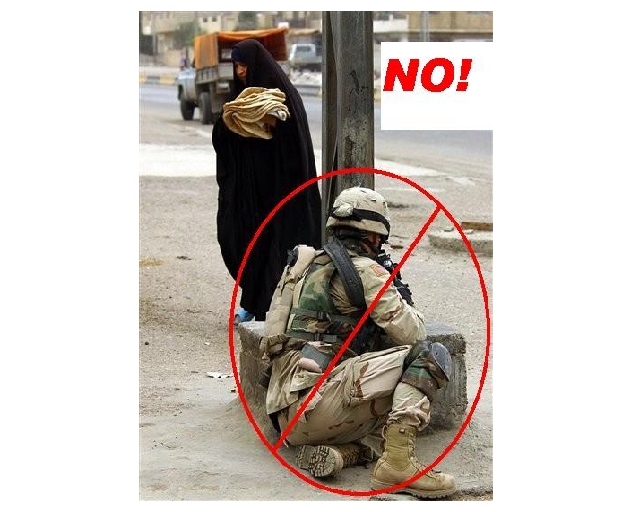
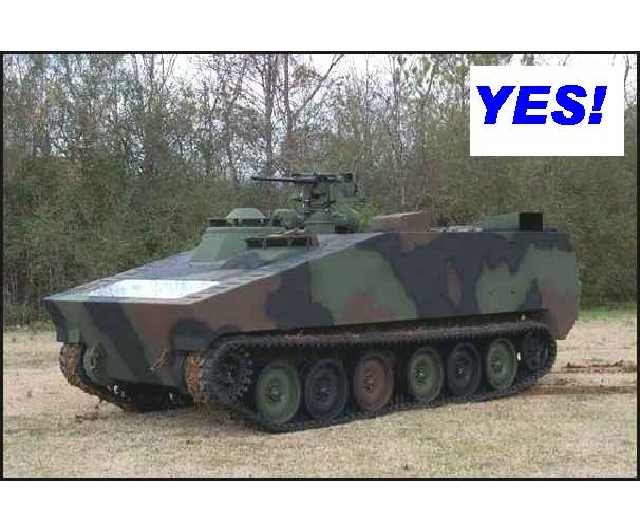
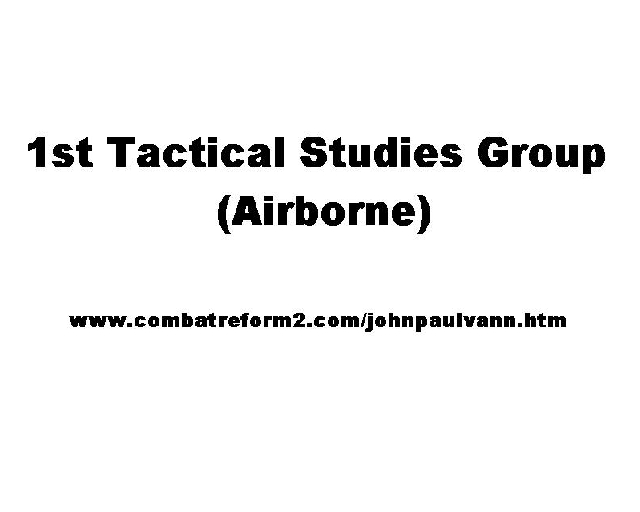
What caused the turn-around?
COMBAT.
REALITY.
AFGHANISTAN.
A DESIRE TO WIN, NOT CONTINUE TO LOSE IN WHEELED TRUCKS...
We need to stop wasting billions on fatally flawed, break-down-prone wheeled Stryker trucks that fail to get the job done and put our men into constant road/trail ambushes and put our money into M113 Gavin light for cross-country mobility but medium-weight in armor protection tracks that don't get stuck and break down in a mere light rain and minor mud.
Tom Ricks' article in the Washington Post reveals yet more reasons why we need a dedicated Non-Linear Battlefield or Sub-National Conflict Stability Corps (NLB-SC OR SNC-C) that would listen to all its Soldiers regardless of rank and not treat rebellions like it was just lawn care dirty work that lower ranks need to go out and prune. If what you are growing is "poison ivy" trimming it isn't the solution...the solution is to STOP GROWING WEEDS (making rebel humans). If we don't form a NLB-SC OR SNC-C we will have learned nothing from Iraq like we failed after Vietnam....and we will repeat all these mistakes again with more thousands of our young people paying for it with their lives and limbs! We need a NLB-SC OR SNC-C that is ready BEFORE the war to rapidly bring back TV, radio and telephone service and call out to former Army Soldiers and government employees to return to work the next day, and have THE MONEY TO PAY THEM to restore social order. We need to stop being so stingy. This also applies to Afghanistan (see article below Ricks' article). Garrison Army and marine generals who have everything provided to them, chow halls, direct deposit every 2 weeks etc. have no clue whatsoever of how civilian life is a struggle to make ends meet and that SOMEONE has to grow and prepare the food they take for granted as they walk intro a DFAC.... They all live in a phony, cloistered mini-society of "From Here to Eternity" garrison BS each day subsidized by U.S. tax payers to allegedly be "attack dogs" let out once every 10 years to do nation-state war, then returned to their garrison "cages". What we need to prevail in COIN/SASO is a helpful "Lassie" that can when threatened fend off attacks not kill/capture "Attack of the Dobermans" 24/7/365.
Living in Former dictator Palaces Enrages the Populace: DON'T DO IT!
 www.youtube.com/watch?v=SmAhL8iPutA
www.youtube.com/watch?v=SmAhL8iPutA
The "presence patrol" mentality now ensconced in the new COIN manual FM 3-24 (LTG Petraeus is co-author with marine general Mattis) despite being a miserable failure in Iraq for over 4 years and Afghanistan for 5 years, is senior generals getting to live in comfortable palaces on FOBs as they delegate the dirty work of appeasing the masses to lower-ranking Soldiers who try to "cut deals" with them when the situation itself is already damned by the higher ranks' parameters. Its just the garrison mentality back in the states of the generals and colonels and majors ordering lower ranking personnel to mow lawns and polish floors, except this time its having Soldiers expose themselves to constant enemy ambush to placate the locals or to kill/capture the rebels to "tidy-the-area". Its not lower ranking "empowerment" its snobby delegating the "dirty work" to lower-ranking Soldiers to do EVERYTHING and somehow try to overcome SYSTEMIC problems CREATED BY THE SENIOR OFFICERS. For example, maybe the best CONOPS is to rehire the old Army and create town/village RF/PF security forces to keep rebels out, not have U.S. forces enter/leave villages/towns with "presence patrols" which exposes our men to road ambushes and yields control right back to the rebels? Real empowerment would not be a top-down, one-way RHIP tidy-my-area drill, it would be the lower-ranking Soldiers sitting at the table of the "councils of war" (Bible, God: "with wise counsel make war") and CHANGING THE SYSTEMIC PARAMETERS of the operation with their input so we have a WINNING CONOPS. "Presence patrolling" is senior officers trying to have junior Soldiers do their jobs without their power, funds and authority to change the conditions so they can at least have a chance to succeed.
Iraq: Kill/Capture/Torture: have U.S. troops tidy the area
www.washingtonpost.com/wp-dyn/content/article/2006/07/22/AR2006072201004.html
In Iraq, Military Forgot Lessons of Vietnam
Early Missteps by U.S. Left Troops Unprepared for Guerrilla Warfare
By Thomas E. Ricks
Washington Post Staff Writer
The real war in Iraq -- the one to determine the future of the country -- began on Aug. 7, 2003, when a car bomb exploded outside the Jordanian Embassy, killing 11 and wounding more than 50.
That bombing came almost exactly four months after the U.S. military thought it had prevailed in Iraq, and it launched the insurgency, the bloody and protracted struggle with guerrilla fighters that has tied the United States down to this day.
There is some evidence that Saddam Hussein's government knew it couldn't win a conventional war, and some captured documents indicate that it may have intended some sort of rear-guard campaign of subversion against occupation. The stockpiling of weapons, distribution of arms caches, the revolutionary roots of the Baathist Party, and the movement of money and people to Syria either before or during the war all indicate some planning for an insurgency.
But there is also strong evidence, based on a review of thousands of military documents and hundreds of interviews with military personnel, that the U.S. approach to pacifying Iraq in the months after the collapse of Hussein helped spur the insurgency and made it bigger and stronger than it might have been.
The very setup of the U.S. presence in Iraq undercut the mission. The chain of command was hazy, with no one individual in charge of the overall American effort in Iraq, a structure that led to frequent clashes between military and civilian officials.
On May 16, 2003, L. Paul Bremer III, the chief of the Coalition Provisional Authority, the U.S.-run occupation agency, had issued his first order, "De-Baathification of Iraq Society." The CIA station chief in Baghdad had argued vehemently against the radical move, contending: "By nightfall, you'll have driven 30,000 to 50,000 Baathists underground. And in six months, you'll really regret this."
He was proved correct, as Bremer's order, along with a second that dissolved the Iraqi military and national police, created a new class of disenfranchised, threatened leaders.
Exacerbating the effect of this decision were the U.S. Army's interactions with the civilian population. Based on its experience in Bosnia and Kosovo, the Army thought it could prevail through "presence" -- that is, Soldiers demonstrating to Iraqis that they are in the area, mainly by patrolling. "We've got that habit that carries over from the Balkans," one Army general said. Back then, patrols were conducted so frequently that some officers called the mission there "DAB"-ing, for "driving around Bosnia."
The U.S. military jargon for this was "boots-on-the-ground," or, more officially, the presence mission. There was no formal doctrinal basis for this in the Army manuals and training that prepare the military for its operations, but the notion crept into the vocabularies of senior officers. For example, a briefing by the 1st Armored Division's engineering brigade stated that one of its major missions would be "presence patrols." And then-Maj. Gen. Ricardo S. Sanchez, then the commander of that division, ordered one of his brigade commanders to "flood your zone, get out there, and figure it out." Sitting in a dusty command tent outside a palace in the Green Zone in May 2003, he added: "Your business is to ensure that the presence of the American Soldier is felt, and it's not just Americans zipping by." [EDITOR: he wouldn't be in that tent for long with a posh palace nearby]
The flaw in this approach, Lt. Col. Christopher Holshek, a civil affairs officer, later noted, was that after Iraqi public opinion began to turn against the Americans and see them as occupiers, "then the presence of troops . . . becomes counterproductive."
The U.S. mission in Iraq is made up overwhelmingly of regular combat units, rather than smaller, lower-profile Special Forces units. And in 2003, most conventional commanders did what they knew how to do: send out large numbers of troops and vehicles on conventional combat missions.
Few U.S. Soldiers seemed to understand the centrality of Iraqi pride and the humiliation Iraqi men felt in being overseen by this Western army. Foot patrols in Baghdad were greeted during this time with solemn waves from old men and cheers from children, but with baleful stares from many young Iraqi men.
Complicating the U.S. effort was the difficulty top officials had in recognizing what was going on in Iraq. Defense Secretary Donald H. Rumsfeld at first was dismissive of the looting that followed the U.S. arrival and then for months refused to recognize that an insurgency was breaking out there. A reporter pressed him one day that summer: Aren't you facing a guerrilla war?
"I guess the reason I don't use the phrase 'guerrilla war' is because there isn't one," Rumsfeld responded.
A few weeks later, Army Gen. John P. Abizaid succeeded Gen. Tommy R. Franks as the top U.S. military commander in the Middle East. He used his first news conference as commander to clear up the strategic confusion about what was happening in Iraq. Opponents of the U.S. presence were conducting "a classical guerrilla-style campaign," he said. "It's a war, however you describe it."
That fall, U.S. tactics became more aggressive. [EDITOR: kill/capture] This was natural, even reasonable, coming in response to the increased attacks on U.S. forces and a series of suicide bombings. But it also appears to have undercut the U.S. government's long-term strategy.
"When you're facing a counterinsurgency war, if you get the strategy right, you can get the tactics wrong, and eventually you'll get the tactics right," said retired Army Col. Robert Killebrew, a veteran of Special Forces in the Vietnam War. "If you get the strategy wrong and the tactics right at the start, you can refine the tactics forever, but you still lose the war. That's basically what we did in Vietnam."
For the first 20 months or more of the American occupation in Iraq, it was what the U.S. military would do there as well. "What you are seeing here is an unconventional war fought conventionally," a Special Forces lieutenant colonel remarked gloomily one day in Baghdad as the violence intensified. The tactics that the regular troops used, he added, sometimes subverted American goals.
Draconian Interrogation Ideas
On the morning of Aug. 14, 2003, Capt. William Ponce, an officer in the "Human Intelligence Effects Coordination Cell" at the top U.S. military headquarters in Iraq, sent a memo to subordinate commands asking what interrogation techniques they would like to use.
"The gloves are coming off regarding these detainees," he told them. His e-mail, and the responses it provoked from members of the Army intelligence community across Iraq, are illustrative of the mind-set of the U.S. military during this period.
"Casualties are mounting and we need to start gathering info to help protect our fellow Soldiers from any further attacks," Ponce wrote. He told them, "Provide interrogation techniques 'wish list' by 17 AUG 03." [EDITOR: instead of stopping the BS presence patrolling in Humvee trucks/on foot with tracked Security Creating Maneuvers, let's kill/capture/torture and try to attrit the bad guys with RMA air strike rather than change ourselves to do maneuver better]
Some of the responses to his solicitation were enthusiastic. With clinical precision, a Soldier attached to the 3rd Armored Cavalry Regiment recommended by e-mail 14 hours later that interrogators use "open-handed facial slaps from a distance of no more than about two feet and back-handed blows to the midsection from a distance of about 18 inches." He also reported that "fear of dogs and snakes appear to work nicely." The 4th Infantry Division's intelligence operation responded three days later with suggestions that captives be hit with closed fists and also subjected to "low-voltage electrocution."
But not everyone was as sanguine as those two units. "We need to take a deep breath and remember who we are," cautioned a major with the 501st Military Intelligence Battalion, which supported the operations of the 1st Armored Division in Iraq. "It comes down to standards of right and wrong -- something we cannot just put aside when we find it inconvenient, any more than we can declare that we will 'take no prisoners' and therefore shoot those who surrender to us simply because we find prisoners inconvenient." Feeding the interrogation system was a major push by U.S. commanders to round up Iraqis. The key to "actionable intelligence" was seen by many as conducting huge sweeps to detain and question Iraqis. Sometimes units acted on tips, but sometimes they just detained all able-bodied males of combat age in areas known to be anti-American. [EDITOR: creating rebels for sure]
These steps were seen inside the Army as a major success story, and they were portrayed as such to journalists. The problem was that the U.S. military, having assumed it would be operating in a relatively benign environment, wasn't set up for a massive effort that called on it to apprehend, detain and interrogate Iraqis, to analyze the information gleaned, and then to act on it.
"As commanders at all levels sought operational intelligence, it became apparent that the intelligence structure was undermanned, under-equipped and inappropriately organized for counter-insurgency operations," Lt. Gen. Anthony R. Jones wrote in an official Army report a year later. Senior U.S. intelligence officers in Iraq later estimated that about 85 percent of the tens of thousands rounded up were of no intelligence value. [EDITOR: they are now rebels for sure] But as they were delivered to the Abu Ghraib prison, they overwhelmed the system and often waited for weeks to be interrogated, during which time they could be recruited by hard-core insurgents, who weren't isolated from the general prison population.
In improvising a response to the insurgency, the U.S. forces worked hard and had some successes. Yet they frequently were led poorly by commanders unprepared for their mission by an institution that took away from the Vietnam War only the lesson that it shouldn't get involved in messy counterinsurgencies. The advice of those who had studied the American experience there was ignored. [EDITOR: who has time to sudy COIN/SASO? We got lawns to mow, change-of-command ceremonies to attend etc.]
That summer, retired marine Col. Gary Anderson, an "expert" in small wars, was sent to Baghdad by the Pentagon to advise on how to better put down the emerging insurgency. He met with Bremer in early July. "Mr. Ambassador, here are some programs that worked in Vietnam," Anderson said. It was the wrong word to put in front of Bremer. "Vietnam?" Bremer exploded, according to Anderson. "Vietnam! I don't want to talk about Vietnam. This is not Vietnam. This is Iraq!". [EDITOR: Bremer should have been fired immediately after issuing his De-Baath and fire Iraqi Army orders, and these ordered counter-manded]
This was one of the early indications that U.S. officials would obstinately refuse to learn from the past as they sought to run Iraq. One of the essential texts on counterinsurgency was written in 1964 by David Galula, a lieutenant colonel in the French army who was born in Tunisia, witnessed guerrilla warfare on three continents and died in 1967. When the United States went into Iraq, his book, "Counterinsurgency Warfare: Theory and Practice," was almost unknown within the military, which is one reason it is possible to open Galula's text almost at random and find principles of counterinsurgency that the American effort failed to heed. Galula warned specifically against the kind of large-scale conventional operations the United States repeatedly launched with brigades and battalions, even if they held out the allure of short-term gains in intelligence. He insisted that firepower must be viewed very differently than in regular war.
"A Soldier fired upon in conventional war who does not fire back with every available weapon would be guilty of a dereliction of his duty," he wrote, adding that "the reverse would be the case in counterinsurgency warfare, where the rule is to apply the minimum of fire."
The U.S. military took a different approach in Iraq. It wasn't indiscriminate in its use of firepower, but it tended to look upon it as good, especially during the big counteroffensive in the fall of 2003, and in the two battles in Fallujah the following year.
One reason for that different approach was the muddled strategy of U.S. commanders in Iraq. As civil affairs officers found to their dismay, Army leaders tended to see the Iraqi people as the playing field on which a contest was played against insurgents. In Galula's view, the people are the prize. [EDITOR: why we need a NLB-SC OR SNC-C to be Civil Affairs Command's body guards/muscle so the dumb-ass nation-state war kill/capture/torture types don't run the show into the ground]
"The population . . . becomes the objective for the counterinsurgent as it was for his enemy," he wrote.
[EDITOR: Oh really? According to FM 3-24, MILITARY CONTROL is the number #1 priority, the support of the populace is secondary].
From that observation flows an entirely different way of dealing with civilians in the midst of a guerrilla war. "Since antagonizing the population will not help, it is imperative that hardships for it and rash actions on the part of the forces be kept to a minimum," Galula wrote. Cumulatively, the American ignorance of long-held precepts of counterinsurgency warfare impeded the U.S. military during 2003 and part of 2004. Combined with a personnel policy that pulled out all the seasoned forces early in 2004 and replaced them with green troops, it isn't surprising that the U.S. effort often resembled that of Sisyphus, the king in Greek legend who was condemned to perpetually roll a boulder up a hill, only to have it roll back down as he neared the top.
Again and again, in 2003, 2004, 2005 and 2006, U.S. forces launched major new operations to assert and reassert control in Fallujah, in Ramadi, in Samarra, in Mosul.
"Scholars are virtually unanimous in their judgment that conventional forces often lose unconventional wars because they lack a conceptual understanding of the war they are fighting," Lt. Col. Matthew Moten, chief of military history at West Point, would comment in 2004.
When Maj. Gregory Peterson studied a few months later at Fort Leavenworth's School of Advanced Military Studies, an elite course that trains military planners and strategists, he found the U.S. experience in Iraq in 2003-2004 remarkably similar to the French war in Algeria in the 1950s. Both involved Western powers exercising sovereignty in Arab states, both powers were opposed by insurgencies contesting that sovereignty, and both wars were controversial back home.
Most significant for Peterson's analysis, he found both the French and U.S. militaries woefully unprepared for the task at hand. "Currently, the U.S. military does not have a viable counterinsurgency doctrine, understood by all Soldiers, or taught at service schools," he concluded.
Casey Implements a New Tactic
In mid-2004, Gen. George W. Casey Jr. took over from Sanchez as the top U.S. commander in Iraq. One of Casey's advisers, Kalev Sepp, pointedly noted in a study that fall that the U.S. effort in Iraq was violating many of the major principles of counterinsurgency, such as putting an emphasis on killing insurgents instead of engaging the population.
A year later, frustrated by the inability of the Army to change its approach to training for Iraq, Casey established his own academy in Taji, Iraq, to teach counterinsurgency to U.S. officers as they arrived in the country. He made attending its course there a prerequisite to commanding a unit in Iraq. "We are finally getting around to doing the right things," Army Reserve Lt. Col. Joe Rice observed one day in Iraq early in 2006. "But is it too little, too late?"
One of the few commanders who were successful in Iraq in that first year of the occupation, Lt. Gen. David Petraeus, made studying counterinsurgency a requirement at the Army's Command and General Staff College at Fort Leavenworth, where mid-career officers are trained.
By the academic year that ended last month, 31 of 78 student monographs at the School of Advanced Military Studies next door were devoted to counterinsurgency or stability operations, compared with only a couple two years earlier.
And Galula's handy little book, Counterinsurgency Warfare: Theory and Practice, was a best-seller at the Leavenworth bookstore.
Here are the Kill/Capture/torture "weeds" the garrison generals want "pulled" as if once these folks are annihilated, there will be no rebellion.
Occupation Racket: Corporations Get $$RICH$$$; Soldiers Get Dead, Maimed and Ruined for Life
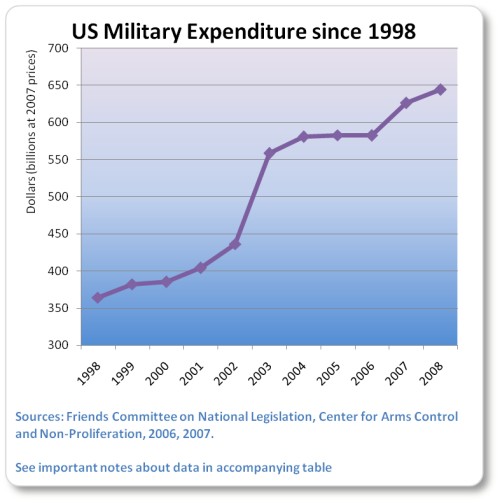
Having 158, 000 American troops--troops in trucks and "boots" on the ground is NOT the best way to handle a SASO/COIN operation--LESS men say 50, 000 in well-armored TRACKS backed by separation walls and border fences--combat engineering means--otherwise we will ruin 1/3 of all the Soldiers for life and bankrupt the nation.
The Joseph Stiglitz Report
Nobel Prize Winner in Economics Harvard University
Stiglitz report says 1/3 of our troops whenever they deploy overseas to a combat zone will be scarred for life and every 100, 000 of these equals $1 BILLION of annual VA medical care costs for the rest of their lives.
353, 000+ out of 1.6M deployed = $3.5 BILLION per year from now until at least another 40 years. If these 20-year olds live to 60ish the costs of the Iraq debacle to make corporations rich will be the current $2 BILLION/week until we leave plus $140 BILLION in VA care by 2048.
http://news.yahoo.com/s/afp/20080505/ts_alt_afp/healthuspsychiatryiraqafghanistan
Soldier suicides could trump war tolls: U.S. health official
Mon May 5, 2008
1:11 PM ET
WASHINGTON (AFP) - Suicides and "psychological mortality" among U.S. Soldiers who served in Iraq and Afghanistan could exceed battlefield deaths if their mental scars are left untreated, the head of the US Institute of Mental Health warned Monday.
Of the 1.6 million U.S. Soldiers who have been deployed in Iraq and Afghanistan, 18-20 percent -- or around 300,000 -- show symptoms of post-traumatic stress disorder (PTSD), depression or both, said Thomas Insel, head of the National Institute of Mental Health.
An estimated 70 percent of those at-risk Soldiers do not seek help from the Department of Defense or the Veterans Administration, he told a news conference launching the American Psychiatric Association's 161st annual meeting here.
If "one just does the math", then allowing PTSD or depression to go untreated in such numbers could result in "suicides and psychological mortality trumping combat deaths" in Iraq and Afghanistan, Insel warned.
More than 4,000 U.S. Soldiers have died in Iraq since the U.S. invasion of 2003, and more than 400 in Afghanistan since the U.S. led attacks there in 2001, of which some 290 were killed in action and the rest in on-combat deaths.
"It's predicted that most Soldiers -- 70 percent -- will not seek treatment through the DoD or VA," Insel said at the meeting, at which the psychological impact of war is expected to top the agenda over the next four days.
Left untreated, PTSD and depression can lead to substance abuse, alcoholism or other life-threatening behaviors.
"It's a gathering storm for the civilian and public health care sectors," Insel said.
He urged public-sector mental health caregivers to recognize the symptoms of psychological troubles resulting from deployment to a war zone and be ready to provide adequate care for both Soldiers and their families.
Other items on the agenda at the meeting, set to be attended by some 19,000 psychiatrists and mental health practitioners from around the world, include violence in schools, the psychology of extremism, and more light-hearted topics such as how music affects mood.
Below offers a list of major known Sunni insurgent/terror groups identified in Iraq and some very top level info about them. For some absurd reason It ignores the Shi'ite militias, the al-Qaeda "foreign fighters" cells, and the Iranian and Saudi agents supporting "their side." The listing was drawn from (other) websites by the folks at the Carnegie Endowment for International Peace, the publishers of Foreign Policy magazine and long-time apologists for the UN and its internationalist, one-worlder agenda.
www.foreignpolicy.com/resources/alert.php
Foreign Policy, Posted June 19, 2006Before the U.S. military killed Abu Musab al-Zarqawi, the leader of al Qaeda in Iraq was the face of the insurgency. Yet his group was probably responsible for only 5-10 percent of the insurgent attacks. What about the other 90 percent? FP takes a look at the other major [Sunni] insurgent groups in Iraq--who they are, what they are trying to accomplish, and which ones are more likely to negotiate than fight to the death.
1. Ansar Al Islam
courtesy IslamOnline www.islamonline.net/english/In_Depth/Iraq_Aftermath/2003/12/ article_05.shtml
First surfaced: In December 2001, before the war.
Ideology: Ansar Al Islam is a violent group of extreme Islamist fundamentalists, not unlike the Taliban in Afghanistan. With close ties to al Qaeda and Osama bin Laden, the group fervently opposes the U.S. presence in Iraq. More specifically, it rejects the U.S.-backed Patriotic Union of Kurdistan Party, which favors Kurdish self-determination and is led by the prominent Iraqi politician Jalal Talabani.
Recruits: These insurgents have been among the most active in attracting members from outside Iraq. One of their known methods has been to recruit radical, like-minded Islamists from Europe (Germany in particular) and smuggle them into Iraq. Like al Qaeda, Ansar Al Islam seeks foreign recruits not only for sheer manpower, but to demonstrate to the world that there's a steady flow of fighters willing to make the trek to Iraq to fight the coalition. However, multiple reports indicate that its makeup is overwhelmingly drawn from Kurds inside Iraq who reject the Patriotic Union.
Tactics: The group, which predominantly operates in the relatively peaceful north, is likely responsible for multiple attacks on U.S. forces in Iraq. But unlike other insurgent organizations, it's also attempted to murder high-profile Kurdish politicians. It's rumored that Ansar Al Islam even tried to assassinate then Prime Minister Ayad Allawi during a trip to Berlin in 2004.
What's next: Even though some analysts have pointed to Ansar Al Islam for recent attacks in Fallujah, the group hasn't been as active as it was before. That could be good news for the coalition, as it indicates a weakened ability to recruit fighters from abroad. The group enjoyed close ties with Abu Musab al-Zarqawi. In fact, he even belonged to this organization before his incorporation into al Qaeda. So much so, that the "treasure trove" of documents apparently uncovered by U.S. troops in the wake of his death is likely to reveal the extent of its organization and tactical secrets.
2. Ansar Al Sunna
First surfaced: September 2003
Ideology: Ansar Al Sunna, originally an offshoot of Ansar Al Islam, is a highly feared and violent terrorist group whose worldview is most in line with al Qaeda's. Because of the similar ideological stance, the group is said to be competing with al Qaeda for new recruits, territory, and funding. The Sunni extremists reject Western influence and interference in Muslim lands and claim to fight U.S. and coalition troops in the hope of establishing an Islamic caliphate throughout the Middle East. Virulently opposed to Shiites, Ansar Al Sunna is one of the leading contributors to the sectarian violence in recent months.
Recruits: Its ranks are largely Iraqi, predominantly Kurds, with some foreign fighters from Afghanistan, Iran, and elsewhere. As Ansar Al Islam loses strength along with al Qaeda, Ansar Al Sunna may pick up some of its leftover insurgents.
Tactics: If you've seen a beheading on the Internet or watched news coverage of a large attack on coalition troops, chances are you've seen their work. Some of the highly publicized attacks include the murder of 12 Nepalese hostages in August 2004, and the killing of 17 Iraqi workers in December of that year. Ansar Al Sunna claimed responsibility for the December 2004 explosion at a U.S. mess hall in Mosul, which killed 22 people. As recently as June 10, the group is believed to have interrogated and executed three Iraqi police commandos. The video of their grisly deaths was posted on an Islamist Web site shortly after.
What's next: Most reports about this terrorist group paint it as less concerned about killing every last American than it is about remaining intact until the coalition leaves. At that point, Ansar Al Sunna assumes it will finally have the chance to cement Islamic law into Iraqi society. U.S. Ambassador to Iraq Zalmay Khalilzad recently stated that Ansar Al Sunna maintains a base in northwest Iran. [EDITOR: you said earlier they violently hate Shias?]
3. Islamic Resistance Movement in Iraq (1920 Revolution Brigades)
First surfaced: July 2003
Ideology: In a reference to the 1920 uprising against British colonial occupation, the 1920 Revolution Brigades is the military wing of the group once known as the Iraqi National Islamic Resistance. Like other insurgent groups, the 1920 Brigades fights to remove coalition troops from Iraq.
Recruits: According to most reports, they recruit new members by handing out statements to prospective recruits at the gates of mosques after Friday prayers. The media-savvy organization has even sent tapes to Al Jazeera calling on foreign fighters to do combat in Iraq.
Tactics: Most of the 1920 Revolution Brigades' attacks have focused on the area west of Baghdad, in the so-called Sunni Triangle, with major assaults on U.S. troops and vehicles. Roadside improvised explosive devices and rocket and mortar attacks are their modus operandi. The August 2004 attacks on two helicopters (one near Abu Ghraib and one near Fallujah) were considered major victories for the brigades. The group also claimed responsibility for the October 2005 bombing of TV station Al Arabiya's Baghdad bureau. It too has an online presence, with statements and video of its carnage transmitted through various Islamist Web sites to potential recruits and enemies.
What's Next: According to the MIPT Terrorism Knowledge Base, the brigades released a statement on Feb. 13 of this year that claimed the group would "carry on jihad until the liberation and victory or [until they are] martyred."
4. Iraqi Resistance Islamic Front (JAMI)
First surfaced: May 2004
Ideology: This relatively new Sunni insurgent group appears to be a coalition of other, smaller groups with the similar political goal of removing U.S. and foreign troops from Iraq. As with many of the insurgent groups, there's plenty of evidence regarding what the group is fighting against, but not much about what it plans to do when U.S. troops depart from Iraq. Statements from the group reveal a highly anti-Semitic worldview, with blame attributed to Jews for everything from the occupation to the escalation in violence there.
Recruits: Perhaps more than any other insurgent group, JAMI invokes the Palestinian cause and the Israeli occupation of the Palestinian territories as a call-to-arms.
Tactics: Concentrated in Ninawa and Diyala in northern Iraq, JAMI regularly attacks the Mosul and al-Faris airports. There's also evidence that the group targets suspected U.S. intelligence agents and infrastructure.
What's next: Typical for the constantly evolving insurgency, the group is believed by several experts to have morphed into a public relations arm of some of the other groups with which it shares common cause. According to the Washington Post, the front maintains and frequently updates its Web site and even publishes a magazine called Jami to distribute to sympathizers and potential recruits.
5. Islamic Army in Iraq
First surfaced: In 2003, shortly after coalition troops toppled Saddam Hussein's regime.
Ideology: The Islamic Army in Iraq (IAI) is one of the deadliest and largest insurgent groups. Despite its name, the IAI apparently fights more for nationalistic reasons (that is, to remove all foreign influence from Iraq) than religious ones.
Recruits: This Sunni resistance group largely draws its ranks from the Baathists and paramilitary loyalists Saddam Fedayeen who lost much of their influence when Saddam fell. According to military expert Ahmed Hashim, whose new book Insurgency and Counter-Insurgency in Iraq painstakingly details insurgent methods, this violent organization counts as many as 17,000 among its ranks.
Tactics: The Washington Post estimates that as many of 75 percent of the group's attacks target U.S. troops and Iraqi contractors. Multiple reports cite a highly organized system, with different cells of fighters assigned to different tasks. Kidnappings, executions, and bombings are their trademark, and they're usually videotaped. Although keenly aware of domestic political developments in Western countries, the IAI appears to have an inflated sense of its own ability to effect change in those same countries. As Hashim notes, when the IAI kidnapped two well-known French journalists in August 2004, it demanded that the French law that banned headscarves be repealed. Likewise, when the IAI kidnapped Italian journalist Enzo Baldoni in 2004, the group demanded that Italy pull all its troops from Iraq. Baldoni was executed when Italy refused to comply.
What's next: Like JAMI, there are reports that IAI publishes a monthly magazine called al-Fursan. Although it (and other insurgent groups) adamantly denies it, rumors have swirled for a few weeks that IAI might be in the process of meeting with Iraqi and U.S. government officials. That, along with the calls the IAI made for nonviolence at polling places, suggests there might be some chance for negotiation. The only problem: It would be difficult for the United States and its allies to convince the rest of the world that the war was worth fighting if Saddam-style Baathists appear victorious.
Afghanistan: hire Afghan Soldiers on-the-cheap to tidy up the area of Taliban weeds
Here, the DoD tightwads are losing the war by not paying the Afghan Soldiers what they are worth. At these rates it would be cheap to outbid them, as the Taliban are doing. Its time for us to put our money where our mouth is and pay the ANA Soldiers decent, better wages so they know clearly defending freedom pays. One way to do this would be by REDUCING THE CLUSTERFUCK IN IRAQ to free up monies for Afghanistan.
________________________________London Financial Times
July 26, 2006Taliban Goes For Cash Over Ideology
By Rachel Morarjee, Helmand
The Taliban has found a way to recruit fighters that is less about winning hearts and minds and more about the enduring appeal of cold hard cash.
They are paying fighters up to Dollars 12 (Pounds 6.50) a day to fight the fledgling Afghan National Army, which pays only Dollars 4 a day to its Soldiers in the field, according to military officials.
"The Taliban are supported by Pakistan and they get money from the drugs trade, so they get more pay than our Soldiers," said Colonel Myuddin Ghouri of the national army's 205 Corp.
While the ANA has the advantage of superior equipment and the same medical treatment as UK troops, its Soldiers often have to risk their lives far from home. [EDITOR: why we need a RF/PF equivalent in Afghanistan]
"If you were a lad in the hills and you were offered Dollars 12 to stay local or you could take Dollars 4 and fight miles away from home, which would you do?" said Lieutenant Colonel David Hammond, an officer with 7 Para who is training Afghan officers in the southern province of Helmand as part of a mentoring scheme.
The pay difference is making it harder to recruit Soldiers to the 38,000-strong ANA, which has faced a much better equipped and funded insurgency since January.
Western officials have estimated that the Taliban's forces have risen from 2,000 last year to 6,000 this year. The Taliban claims to have 12,000 men.
Afghan defence ministry officials believe funds for the insurgency are flowing over the border from Pakistan and possibly from Arab countries. [EDITOR: oil money]
The multi-ethnic Afghan National Army has been one of the success stories of the post-September 11 era and is hugely popular with most Afghans.
However, Afghan officials in Kabul say the pay of Afghan Soldiers will remain a problem.
"Basic pay of Dollars 70 a month was a lot of money three years ago, but it's harder to recruit people to fight in a bitter insurgency now," said one Afghan official.
[EDITOR: maybe we should have Sally Struthers go on TV commercials asking Americans to sponsor and fund an Afghan Army Soldier for a few dollars each month? Call it the "Afghan Soldier Fund"]
1. All that energy going towards making Americans comfortable "FOBBITs" should be going towards supplying the Iraqi Army with tracked M113 Gavin armor like the Afghans have, smokescreen generators to counter snipers, barriers and civilian reconstruction. If Iraqis can't handle supplies without black market corruption, then this is reason for SOME Americans to be there. Funds freed from Iraq should go to Afghanistan to get our troops out of flimsy tents and into BATTLEBOXes, supply them Mini-Gavins for 3D Maneuver, and pay the Afghan Army Soldiers far better than the Taliban thugs.
2. At least 80, 000 FOBBIT Americans should be sent home immediately as they are doing nothing but consuming supplies and angering the impoverished Iraqis around them.
3. The 50, 000 Americans that remain should be living in BATTLEBOXes in combat only FOBs sans all the garrison "From Here to Eternity" crap (getting Col. Payne fired etc.) and move in up-armored M113 Gavin tracked armor. Their missions are to:
a. TRAIN the Iraqis to perform a style of war (CONOPS) based on easy-to-maintain tracked armor and fixed-wing observation planes that picket roads and keep bombs out of city centers.
b. SUPPLY the Iraqis
c. REBUILD civilian works
d. Act as a Quick Reaction Force (QRF) as needed
4. The 50, 000 Americans should be screened for snobby, narcissistic attitudes. Those that have them should be sent home. This is further proof we need a dedicated COIN/SASO Corps of 3 divisions probably from the 25-40 age group National Guard trained not to be American egocentric snobs.
5. EVERY company-sized unit will have a fluent Iraqi language translator and/or hand-held "Phraselator" translation devices GSA Advantage Web site Contract Number: GS-35F-0379N. No convoy "leaves the wire" of the FOB without having a translator on hand.
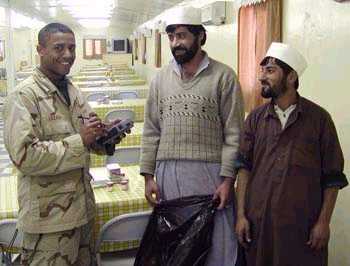 www.phraselator.com/test_military.aspx
www.phraselator.com/test_military.aspx
MULTI-NATIONAL FORCES-IRAQ
Baghdad, Camp Victory, Science and Technology Advisor:
"We have tested the three newest Phraselator-type devices. Of the three we tested, the P2 was the one best understood by the Iraqi people. The other two systems translated phrases into Arabic, which was understood, but the P2 translated phrases with the Iraqi dialect, which proved to easier for the Iraqis to understand. The P2 was also the simplest to use. Soldiers figured out how to use it within one or two minutes of picking it up."
U.S. ARMY
Special Forces Operations NCO, Current Operations NCOIC:
"As for the device...what a great machine. I used the debriefing aid to interrogate former Iraqi intelligence officials. I used it a lot with teenagers and civilians to determine when and where the enemy went. I was able to use the device to get exact information on a huge weapons cache and where unexploded ordinance was."
"And best of all, as a Special Forces Soldier, I was able to use the device to build rapport with the people of Iraq."
"I was able to use the phrase translation device with these teenagers to find a large cache of weapons and ordinance. They were able to debrief me on where the Soldiers where, where the command bunker was, where the Soldiers went, and what they were wearing."
"This device was invaluable, and it assisted in protecting the team."
VoxTec International, Inc.
Main: (410) 626-1110
Fax: (410) 626-1112
Toll Free: 866.4VOXTEC
E-Mail: Info@VoxTec.com
You see a bunch of U.S. forces praising the Phraselator WHY IS THIS DEVICE NOT IN THE HANDS OF EVERY COMPANY-SIZED UNIT? WHAT'S THE HOLD UP?
6. NO MORE KILL/CAPTURE RAIDING! No more conventional unit sweeps that make more rebels than they find. If "Special" units cannot learn to discreetly inter-mingle and surveil "high value targets" on a surgical, rare basis, they should be sent home. Those "Special" units that can do FID better damn well start doing it or they should be sent home, too. We got Saddam. We got Zarqawi. Enough is enough. If the COIN/SASO Corps' leaders want kill/capture SOF units out, they go out. The commander of the NLB-SC OR SNC-C is the regional commander like General Casey is now over his ad hoc collection of forces in the green zone in Iraq.
7. Create an Iraqi RF/PF to PROTECT where the Army, Police and government workers live and their families from reprisals. Rehire as much of the 300,000 fire Iraqi Army Soldiers as we can. The Iraqi RF/PFs like the heroes in the movie, "The Magnificent Seven" are there to protect the village from the marauding bad guys. If Iraqi civil servants' homes and families are not safe from reprisals they can't go to work and do a good job restoring the country's infrastructure.
8. Walls work: those that cannot behave, wall them off. The COIN/SASO Corps would be experts at wall and fence technologies to keep a generation of angry people away from each other. It may sadly take an entire generation to die off before a new generation is willing to live in peace since once people have lost loved ones the bitterness can go with them to the grave.
We refused to rehire the strong Iraqi Army after toppling the Saddam regime, the ONLY glue holding the 3 factions together. In Japan, the Emperor held the people under control even AFTER the WW2 militarists were defeated. General MacArthur with a dose of humility chose to keep the Emperor and the civil populace obeyed his orders to not rebel. For the invasion of Iraq, the Bush/Rummy/Wolfowitz "looneycon" team decided they couldn't trust the liberal Democrat State Department for reconstruction so they decided to do it themselves. During this "amateur hour" they never realized that there is a point where if you remove the only glue holding a nation-state's violently opposed factions together, THE CIVIL WAR YOU UNLEASH WILL BE BEYOND YOUR ABILITY TO QUELL SHORT OF ANNIHILATING WHOLE GROUPS (Roman Legion or Asad style)--which would create a cycle of violence and revenge that would never end until the current generation died off and somehow the newer generation didn't pick up the torch of hate.
Now our best option is to PHYSICALLY separate the misbehaving factions (walls, partitions, security fences) since we've only built a new, weak Iraqi army. We blew it. Having a COIN/SASO adept at these matters under DoD funding and control could prevent this from happening again. We are now 0-2. (Vietnam and Iraq).
Our presence then needs to be reduced, reduced, reduced and reduced to just training/advisory duties discreetly done.
London Daily Telegraph
July 22, 2006Violence May Bring Partition Of Baghdad
By Oliver Poole, Iraq Correspondent
Iraq's politicians were reported yesterday to be drawing up provisional plans to divide Baghdad into Sunni and Shia halves after a week of bloodshed that has left the government's security plan to pacify the capital in tatters.
The proposal would mean an acceptance that the country could not be held together and would mark a dramatic failure for the American policy of fostering national unity.
The Tigris river, which would become the dividing line between the predominately Sunni districts of west Baghdad and the majority Shia in the east.
"The parties have moved to Plan B," a government official said yesterday. "Iraq as a political project is finished."
While no members of the cabinet confirmed the existence of the plan, other politicians said they had learnt of the proposal.
"We have received information of a plan to divide Baghdad," said Rida Jawad al-Takki, a senior member of the dominant Shia Alliance. "The government is incapable of solving the situation. The situation is terrifying and black."
A month ago, United States commanders were talking of their belief that flooding Baghdad with 50,000 American and Iraqi troops would wrest control from the sectarian gunmen who increasingly terrorise its streets.
But recent days have brought such a dramatic rise in the number of killings and lawlessness that a western diplomat privately admitted that the situation was close to anarchy. Even an extended daytime curfew yesterday failed to stop the bloodshed as a bomb exploded near a Sunni mosque, injuring four people. Five people, including two women and a child, were killed as U.S. troops raided a northern neighbourhood. Eighteen people died in fighting between Iraqi Soldiers and Shia Muslims in Mahmoudiya, a city south of Baghdad.
This week the United Nations and U.S. military published reports that appeared to confirm anecdotal evidence from Iraqis themselves that the situation had reached new depths of brutality.
The UN said that about 100 people a day were dying across the country and that around 16,000 had been killed since the start of the year. The Baghdad mortuary said it was receiving 50 bodies a day compared with 24 to 26 each day a year ago.
The U.S. admitted that the government's security plan to pacify Baghdad -Operation Together Forward - that, six weeks ago, saw 7,200 American troops and 42,500 members of the Iraqi security forces step up operations, had caused only a "slight down tick" in the violence.
In its first 30 days, said Maj Gen William Caldwell, the number of attacks in Baghdad had averaged 23.7 a day. For the previous three months the average was 23.8.
But there was a 40 per cent increase in the past week as the number of attacks jumped to 34.4 a day. Dozens of corpses have been found dumped in wastelands and there are daily reports of bombings and mortar attacks.
The main source of the killing is sectarianism as antagonism between the Shia and Sunni communities - sparked by the bombing in February of the Golden Mosque, in Samarra, a revered Shia shrine - is spurred on by an ever bloodier cycle of tit-for-tat killings and sectarian cleansing in mixed areas.
The division between Baghdad's west and east is not a clean-cut one, with large pockets of both communities on both sides. Forced separation would likely result in an urban war, potentially resembling Beirut in the 1970s.
Walls Working in Iraq--NOT troop surging and presence patrolling
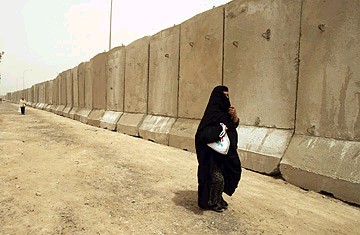
Niva is a whiner. We get it. The consent of the governed must be had. The Maliki government must be replaced by a legitimately elected government in fair elections.
However, he doesn't get it: IRAQ IS A WAR AGAINST THE CAR BOMB AND LAND MINE; even if every single U.S. Soldier left within the next 24 hours, IF THE FREE FLOW OF HIGH EXPLOSIVES IS NOT STOPPED BY SEPARATION WALLS AND CHECKPOINTS Iraq will continue to be a blood bath as the internal factions kill each other.
Kudos to the U.S. military for finally doing its damn job of understanding what needs to be done to SMOTHER HEs. Now its on senior officials to get off their tails and use this lull to hold REAL elections, replace the Maliki puppet government and stop using Iraq as a corporate feeding frenzy for cheap oil, security and reconstruction contracts paid by the U.S. taxpayers. ONE or two large military bases in the rural south of Iraq might be OK, a mobile, off-shore base (MOB) in the Indian ocean would be far better by being 7 mph mobile than a land base that if done wrong creates civilian population rebellion.
 www.youtube.com/watch?v=bKgft_gqchA
www.youtube.com/watch?v=bKgft_gqchA
Now if we would FULLY emulate the Israelis into TRACKED armored fighting vehicles with the High-Technology, up-armored, hybrid-electric drive, band-tracked M113 Gavin as the MINIMUM STANDARD on the non-linear battlefield (NLB) we would be even better prepared to smother SNC violence. We could teach the Israelis a thing or two on observation/attack aircraft by the unmanned/manned combat air vehicle (U/MCAV) so we don't go broke pissing away UAVs at a 50% crash rate.
************************************
The New Walls of Baghdad
By Steve Niva
21 April 2008
Foreign Policy In Focus
www.fpif.org/fpiftxt/5162
The new "surge" strategy in Iraq, led by General David Petreaus, has been heavily marketed as an example of the U.S. military's application of the "lessons of history" from previous counterinsurgencies to Iraq, foremost among them the need to win the population over from insurgents through cultivating human relationships, addressing popular grievances and providing security.
Yet one glance at the realities on the ground in Iraq today reveals that the cornerstone of current U.S. military strategy is less about cultivating human [ED: high explosive] relationships than about limiting them, primarily through concrete walls and checkpoints. And it has been less about minimizing violence than containing Iraq's population and redirecting the battlefield from the streets to the skies above Iraq.
While the coffee klatches between marine commanders and Sunni tribal sheikhs may garner all the publicity, the real story on the ground in Iraq is that from Baghdad to Mosul, the U.S. military has been busy constructing scores of concrete walls and barriers between and around Iraqi neighborhoods, which it terms "Gated Communities." In Baghdad alone, 12-foot-high walls now separate and surround at least eleven Sunni and Shiite enclaves. Broken by narrow checkpoints where Soldiers monitor traffic via newly issued ID cards, these walls have turned Baghdad into dozens of replica Green Zones, dividing neighbor from neighbor and choking off normal commerce and communications. Similar walls are being erected in other Iraqi cities, while the entire city of Falluja remains surrounded by a razor-wire barrier, with only one point of entry into the city. Moreover, the U.S. military has doubled its use of unmanned aerial drones and increasingly relies upon aerial strikes to quell insurgent activities, often through bombings and targeted assassinations.
While there is no question that overall levels of violence have temporarily decreased, Iraq has become virtually caged in a carapace of concrete walls and razor wire, reinforced by an aerial occupation from the sky. Reporting from a recent visit to the Dora neighborhood of Baghdad, the seasoned journalist Nir Rosen noted in Rolling Stone (March 6, 2008) that:
"Looming over the homes are twelve-foot-high security walls built by the Americans to separate warring factions and confine people to their own neighborhood. Emptied and destroyed by civil war, walled off by President Bush's much-heralded 'surge,' Dora feels more like a desolate, post-apocalyptic maze of concrete tunnels than a living, inhabited neighborhood."
The Israeli Laboratory
The explosion of walls and enclaves reinforced by aerial violence across Iraq suggest that the primary counterinsurgency lessons being followed by the U.S. military in Iraq today derive less from the lessons of "Lawrence of Arabia" than from Israel's experiences in the Occupied Palestinian Territories over the past decade.
Over the past decade, Israel has developed a pacification strategy against Palestinian resistance to its military occupation by erecting separation walls and checkpoints across Palestinian territory that has enclosed Palestinians within a proliferating archipelago of ethnic enclaves to separate them from each other and from illegal Israeli settlements on Palestinian land. This wall and enclave strategy is maintained under a blanket of aerial Israeli surveillance and deadly unmanned drones, which target the frequent airborne assassinations and strikes. This strategy reached its apotheosis in Gaza following Israel's withdrawal of its Soldiers and settlements in 2005. In Gaza, 1.5 million Palestinians are now living within an enclosed cage, while Israel controls access to the essentials of life through high-tech border terminals and unleashes "penetration raids" and airborne "targeted killings" when resistance is offered.
Iraq, it seems, is surging towards Gaza.
This fact is not missed by average Iraqis. Visiting the Sunni bastion of Amriya in Baghdad, Nir Rosen in The Nation (April 3, 2008) recounts how his Iraqi driver pointed to a gap in the concrete walls with which the U.S. occupation forces have surrounded Amriya: "We call it the Rafah Crossing." He was referring to the one gate from besieged Gaza to Egypt that the Israeli army occasionally allows to open.
The U.S. military's virtual reproduction of distinctively Israeli counterinsurgency tactics in Iraq reveals that claims about applying the "lessons of history" of counterinsurgent warfare to Iraq are largely beside the point. The actual application of counterinsurgency on the ground in Iraq has a distinctly Israeli DNA, born of very recent lessons from Israel's own urban warfare laboratory in the West Bank and Gaza Strip.
This should not be surprising. The Israeli DNA in the new "surge" strategy is only the latest manifestation of a widely overlooked but unmistakable American predilection to increasingly draw from Israel's urban warfare laboratory and its flawed efforts to devise fresh tactics in the service of rebooting its own military occupation of Palestinian lands. What we are seeing in Iraq today has much less to do with the declared shift in U.S. military doctrine than with a deeper and more far-reaching "Israelization" of U.S. military strategy and tactics over the past two decades that was only heightened by America's misadventures in the Middle East after September 11, 2001. In the search for new means to confront urban insurgencies in predominately Arab and Muslim lands, there has been a complex institutional and cultural harmonization between these two militaries under the banner of fighting "the war on terror," though the traffic is mostly in one direction. In light of the real lessons of counterinsurgency history, however, mimicking Israel is a recipe for failure.
The "Israelization" of U.S. Military Doctrine and Tactics
This "Israelization" of U.S. military doctrine and tactics can be traced back to the early 1990's, especially the "Blackhawk down" debacle of 1993 in Somalia, which led U.S. military strategists to rethink their approach to fighting urban warfare in poor Third World "battle spaces." In the following years, according to urban theorist Mike Davis in his 2004 article "The Pentagon as Global Slum Lord," Israeli advisors were brought in to teach marines, Rangers and Navy SEALs the state-of-the-art tactics against urban insurgencies that Israel was using to ruthlessly suppress Palestinians in the West Bank and Gaza.
This tactical "Israelization" of U.S. combat doctrine was accompanied by what Davis terms a deeper strategic "Sharonization" (referring to Israeli militarist and later Prime Minister Ariel Sharon) of the Pentagon's worldview in which U.S. military strategists began to envision the capacity of high-tech warfare to contain and possibly defeat insurgencies rooted in third world urban environments. Sharon is known to have kept by his bedside a well-thumbed Hebrew edition of Alistair's Horne's A Savage War of Peace, an account of the failed French effort to defeat the Algerian insurgency against French colonial occupation. While many viewed the French defeat as proof of the futility of military solutions to anti-colonial insurgencies, Sharon's belief was that Israel could learn from Algeria to get right what the French did not. In 2001, the journalist Robert Fisk reported, Sharon told French Prime Minister Jacques Chirac in a phone conversation that the Israelis were "like you in Algeria," the only difference being that "we [the Israelis] will stay."
The "Israelization" of U.S. military doctrine and tactics since the attacks on September 11, 2001, has gone so far as to create what the Palestinian academic Marwan Bishara, writing in Al-Ahram Weekly (April-May, 2002), has termed a new "strategic cult" in which Israel's "asymmetrical war" against the Palestinians became seen as a continuation of the U.S. "war on terrorism" in both theory and practice. Learning from Israel's experiences centered on the need for new precision weaponry and a tactical emphasis on aerial assassinations and armored bulldozers, as well as other elements of Israel's fighting style in the new "asymmetrical" and urban battle spaces. According to The Independent's Justin Huggler (March 29, 2003) Israel's unprecedented assault on Palestinian cities and the refugee camp in Jenin during "Operation Defensive Shield" in April 2002 was keenly observed by foreign militaries, particularly the United States and UK as they geared up to invade and occupy Iraq.
But the most direct application of the Israeli tutorial took place in Iraq, particularly after the U.S. found itself mired in a growing insurgency in an occupied country, confronting urban guerilla warfare and suicide bombings in Fall, 2003. Having banished counterinsurgency doctrine from its own playbook after Vietnam, the Pentagon turned to Israel. According to the investigative journalist Seymour Hersh writing in The New Yorker (December 15, 2003),
"One step the Pentagon took was to seek active and secret help in the war against the Iraqi insurgency from Israel, America's closest ally in the Middle East. According to American and Israeli military and intelligence officials, Israeli commandos and intelligence units have been working closely with their American counterparts at the Special Forces training base at Fort Bragg, North Carolina, and in Israel to help them prepare for operations in Iraq. Israeli commandos are expected to serve as ad-hoc advisers - again, in secret - when full-field operations begin."
Hence, American forces increasingly used a new set of tactics that appeared to have come straight out of the Israeli playbook from the occupied Palestinians territories, including physically enclosing villages within razor-wire fences, bulldozing homes of suspected insurgents, destroying irrigation systems and agricultural fields, taking civilian hostages and using torture to extract intelligence. Seymour Hersh claims that the U.S. was told it had to "go unconventional" like the Israelis - to use harsh tactics to counter the harsh insurgency such as deploying assassination squads. As he summarized it: "The American-Israeli liaison on Iraq amounts to a tutorial on how to dismantle an insurgency."
According to Julian Borger at the Guardian (December 9, 2003) one former senior American intelligence official raised serious concerns about the dangers of adopting Israel's "hunter-killer" teams, and the political implications of such an open embrace of Israel: "It is bonkers, insane. Here we are - we're already being compared to Sharon in the Arab world and we've just confirmed it by bringing in the Israelis and setting up assassination teams."
The "Surge": Shifting Tactics in Iraq, Israeli-Style
The Israeli tutorial, as we know, was nothing less than a complete failure, as Iraq slipped into anarchy and then raging civil war in large part as a result of the destructive tactics deployed the U.S. military.
As a consequence, the failures in Iraq forced the U.S. military to reconsider the pre-eminence of harsh Israeli-style tactics. And so in late 2006, Gen. David Petraeus and his highly touted cadre of counterinsurgency (COIN) experts, fresh from a six-month command and staff course at Fort Leavenworth that according to The Independent's Robert Fisk (April 11, 2007) included at least four senior Israeli officers, ushered in a heavily marketed new counterinsurgency strategy that reduced the reliance upon brute military force in favor of creating alliances with former insurgents, building intelligence capacity, and restoring a semblance of security for the population, particularly in Baghdad.
But it would be a mistake to read this new "hearts and minds" counterinsurgency strategy as a full-scale retreat from "Israelization" in two important respects, both of which illustrate how remarkably similar American and Israeli strategic and tactical frameworks have become at this point in time.
First, it is striking how much the new U.S. approach in Iraq mirrors Israel's own tactical response to its failed attempt to use harsh and brutal tactics to crush the renewed surge of Palestinian resistance between 2001 and 2004. In 2004, Israeli Prime Minister Ariel Sharon unveiled a new strategy - what he termed "disengagement" - as a new way to "shift the narrative." This strategy included the tactical withdrawal of Israeli settlements and Soldiers from the Gaza Strip to be replaced by its complete encirclement and economic strangulation, while further enclosing Palestinians in the West Bank within separation walls, barriers and checkpoints. Whereas the previous approach relied upon aggressive Israeli military incursions within Palestinian areas, the new strategy seeks to control Palestinians from beyond their walled-off enclosures by selectively controlling access to life essentials and relying on air-strikes to quell resistance.
Similarly, in response to the chaos in Iraq and the growing popular demand for a U.S. withdrawal from Iraq in late 2006, President Bush and the U.S. military adopted the "surge" strategy as its own way to "change the narrative." As in the Israeli case, the "surge" has shifted techniques of domination across Iraq from the direct application of violence against insurgents to indirect spatial incarceration, multiplying archipelagos of externally alienated and internally homogenous ethno-national enclaves through walls and checkpoints, under a blanket of aerial surveillance.
Secondly, the tactical shift towards walls, enclaves and aerial domination is still rooted in the "Sharonization" of U.S. strategic doctrine mentioned earlier; that is, the belief that one can use military force to defeat an insurgency by reformulating one's military tactics. Neither Israel nor the United States are willing to countenance a serious political solution to either occupation, which would entail addressing the core political issue that is driving each insurgency: ending the foreign occupation. As it happens, Henry Kissinger is reported to have given President Bush a copy of Horne's A Savage War of Peace to read in the winter of 2006, and the U.S. military frequently uses the Algerian case as one its primary lessons in most COIN training. They appear to have learned the same faulty lessons as Sharon.
Both Israel and the U.S. are seeking to replace direct military occupation with a form of occupation management in order to preserve the fruits of their respective occupations.
Israel has simply shifted tactics to achieve its original goal of securing its illegal settlements and land confiscations in the West Bank to maintain "greater Israel." Since it is unwilling to accept a withdrawal to the 1967 borders and allow for a fully sovereign Palestinian state, its strategy is to pacify Palestinians through ever confining walls and enclaves until Palestinians accept their fate living in splintered enclaves under complete Israeli control.
Similarly, since the U.S. is unwilling to negotiate with the insurgency or implement a timetable for withdrawal, it is clear that the new counterinsurgency plan is an effort to pacify Iraq into accepting a form of "soft partition" into ethno-political enclaves to enable the U.S. to secure its original goals of establishing permanent military bases, securing access to Iraq's vast oil fields, and installing an Iraqi central government to pass laws to ensure these aims. Like the Palestinians, Iraqis will be sequestered within walled enclaves so that the political and economic occupation can remain in place.
The Real "Lessons of History" for Iraq
Needless to say, all this amounts to trying to find new ways to do the impossible. The bottom line is that both Israel and the U.S. will be losers in their quest for military solutions to fundamentally political insurgencies against a foreign military occupation. Framing an occupation as "liberation" or "counter-terrorism" does not make it any less a foreign occupation. One of the great ironies in all of this is the willful failure of both Israel and the United States to learn the fundamental historical lesson of the French in Algeria: that they could have negotiated a withdrawal far earlier and spared all this bloodshed and violence--assuming that peace is what they want and not racketeering bloodshed for profit, depopulation and divide-thy-enemies reasons.
Walls Work: Baghdad Finally Decides Enough High Explosives Bloodshed is Enough
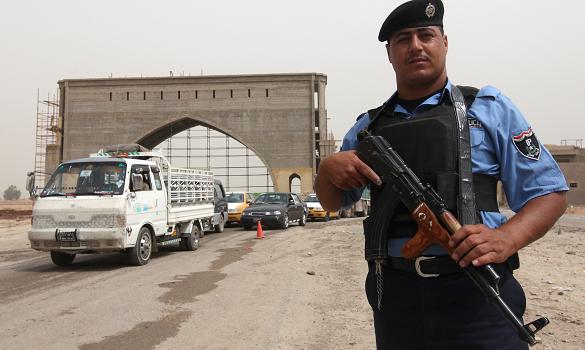
AMEN: We have Been Calling for This for Years!!!!
This is what you do to keep HIGH EXPLOSIVE bombs out of city centers.
We're sorry, but all the whiners about "men need to make us safe" need to STFU--they don't know what they are talking about vis-a-vis PHYSICAL REALITY--which is far too vast to assign "men" to be everywhere all the time with x-ray vision (which they don't have) to see every car and person if they have a high explosives (HE) bomb. Sorry, if this busts kinetic energy bullet gunslinger egos.
Enough is enough. This is for the thousands of people murdered and maimed needlessly due to U.S./Iraqi military/police narcissist incompetence. At least they finally got it right--after thousands of body bags.
The governor of Baghdad is a hero--and a humanitarian.
Mike Sparks
www.timesonline.co.uk/tol/news/world/iraq/article7129217.ece
From The Times May 18, 2010Baghdad to enclose city with 15ft wall to keep suicide bombers out
Motorists get a taste of things to come as traffic is delayed during construction of the first of eight gateways into the city
Oliver August, Baghdad
Baghdad is to resort to one of the oldest forms of defence by building a massive wall around the capital to keep out insurgents, The Times has learnt.
A series of recent suicide bombings has driven the governor of the Iraqi capital to propose the concrete barrier, which will be 15 foot (4.5 meters) high and 70 miles (112 kilometers) long. Every man, beast and vehicle entering will be searched at one of only eight gates along the main highways.
Baghdad, roughly the same size as London and with approximately five million inhabitants, will face severe disruption as a result. Freedom of movement will be limited and workers and visitors alike will probably have to wait for at least an hour to enter. Once inside, though, it is hoped they will be much safer. Shatha al-Obeidi, an aide to Salah Abdul Razzaq, the governor, said: "We want to stop the terrorist from sneaking in. With the wall it will be much easier."
Building work is expected to take about a year. Once the wall is completed, officials plan to remove most of the 1,500 checkpoints and many miles of cement blast barriers that have sprung up inside Baghdad over the past few years. "We have become a city filled with concrete," said Ms al-Obeidi. "That will change."
Related Links
102 dead as bombers fill Iraqi power vacuum
The forgotten four: kidnapped in 2006 but families still wait
Iran-backed bloc tries to take power in Iraq
To keep costs down, many of the blast walls may simply be moved from central Baghdad to the outskirts and become part of the exterior wall. The eight city gates will be set up as service stations for travelers, with restaurants and stores on the inner side. Cars will be searched across ten-lane highways from 6am until midnight. The city remains under a night-time curfew.
Construction is to be supervised by the Baghdad Operations Command, the anti-terrorism cell that reports directly to the Prime Minister. It will also run the checkpoints, aided by an American-designed computer system holding the fingerprints of known insurgents. Qasim Atta, a member of the command, said that the wall was "a great way to improve security".
Where the city borders agricultural areas, a moat may be substituted. Surveillance cameras and unmanned reconnaissance aircraft will also be in use, officials said.
Construction has apparently already begun. "The Baghdad governorate has started building the security wall which will surround the capital and separate it from the surrounding provinces," Mr. Atta said.
Baghdad has been the target of repeated suicide car bombings over the past year, some of them killing more than a hundred people in a single day. American officials believe that many of the explosives-laden cars were prepared and brought in from farming communities outside the city.
Baghdad is not a stranger to the concept of a city wall. Founded in AD 762 as a large circular compound, it was initially surrounded by ramparts 30 meters high, with four gates, numerous guard towers and a moat. That, however, did not stop the Mongols from sacking the city in 1258. Baghdad residents have mixed feelings about living in a giant gated community. Many doubt the effectiveness of the wall, having seen so many other security measures fail. Fallah al-Azawi, a former army officer, said: "I don't think a wall will bring any good. Baghdad can only be protected by its men."
[EDITOR: Oh, bullshit. You are out-of-work and want perpetual employment for egotists running around with rifles--WHICH DOES NOT WORK. 7 years of "men" failing is enough. Time for HUMILITY and COMBAT ENGINEERING.]
Oday Ghafori, a vegetable market worker, said: "Even animals are not treated like this. And what about the sky? Why don't they cover Baghdad from above?"
[EDITOR: let's hear her complain about the mangled and dead human and animal bodies "mistreated" by car and people-clad bombs]
Others, however, were very much in favour of the idea. For years, they have lived in what the American military call the red zone, while diplomats and officials have been cloistered in the green zone: a few square miles of central Baghdad protected by its own walls and barbed wire. "This will make all of Baghdad into a green zone," said Said Modhar Yahya, an accountant.
[EDITOR: BINGO! IT WORKS! So don't knock it!]
MUST-SEE VIDEO: The Battle of Algiers (Entire Film): Don't Delay Political Settlement
 www.youtube.com/view_play_list?p=8691CC9B818981A6
www.youtube.com/view_play_list?p=8691CC9B818981A6
Militarily, the French army did not lose - they certainly won the Battle of Algiers and had pacified the country by late 1958. But the military victory was hollow. The French achieved pacification only, which simply meant that the number of violent incidents per month was at a tolerable level. But this came at the price of herding over a million Algerians into fortified villages, extensive torture, and millions killed. This was a situation that could not be sustained and it unraveled as open warfare broke out between settlers and Algerians with the French army caught in the middle, battling both. All of this looks very much like Iraq today with Americans caught between Shia and Sunni militias, battling both in an effort to achieve pacification on behalf of an ineffective puppet government associated with its occupation. There are also obvious parallels to Israel's predicament in the occupied Palestinian territories.
The primary reason why the French military victory was hollow was because the French offered no political solution that met the core aspirations of Algerian nationalism, which should be clear to anyone who reads the second half of A Savage War of Peace. They only offered a flimsy notion of "self-determination" and "democracy" that De Gaulle called "association," which we recognize today as a neo-colonial relationship. France sought to maintain exterritorial control through military bases and dominion over Algerian oil resources, including a permanent French settler presence. The Algerians rejected this and fought until the French were forced to leave entirely. The parallels with U.S. plans for Iraq hardly need to be elaborated.
Instead of learning from the French experience, the U.S. has naively looked to the Israeli experience as a training manual for counterinsurgency. The U.S. continues to be mesmerized by a mythical version of Israel that is based more on savvy marketing than demonstrated performance. Israel's responses to unconventional war has never been well developed or very successful; it was defeated by Hezbollah in South Lebanon not once but twice, and its attempt to crush the Palestinian uprising through force actually led to further suicide bombings, while its destruction of the Palestinian infrastructure has left the political field open to Hamas and Islamic Jihad.
Mimicking Israel is a recipe for failure. Martin Van Creveld, an Israeli military historian who had lectured U.S. military officials on Israeli military strategy in late 2003, warned in an Associated Press article (December 12, 2003) that just as Israel had been unsuccessful in eliminating militant groups and suicide bombers, the United States cannot expect to be victorious in Iraq. "The Americans are coming here to try to mimic all kinds of techniques, but it's not going to do them any good," he reportedly warned. "I don't see how on earth they (the U.S.) can win. I think this is going to end the same way Vietnam did. They are going to flee the country hanging on the strings of helicopters."
Whether or not this happens will be the subject of future "lessons of history." But by following the Israeli model rather than the actual lessons of counterinsurgency history, the U.S. appears trapped by the logic of its own image co-dependency with Israel as a state now permanently at war with much of the Arab and Muslim world, with history's lessons decidedly not on its side. Read correctly, A Savage War of Peace is less a user's manual for counterinsurgency than a warning about the futility of fighting colonial wars in the first place.
--------
Dr. Steve Niva is a professor of Middle East Studies and International Politics at The Evergreen State College in Olympia, WA and is a contributor to Foreign Policy In Focus. He is currently writing a book on the relationship between Israeli military violence and Palestinian suicide bombings.
One War futurist who agrees that we need a specialized force for COIN/SASO is Thomas Barnett.
http://en.wikipedia.org/wiki/The_Pentagon%27s_New_Map
The Pentagon's New Map
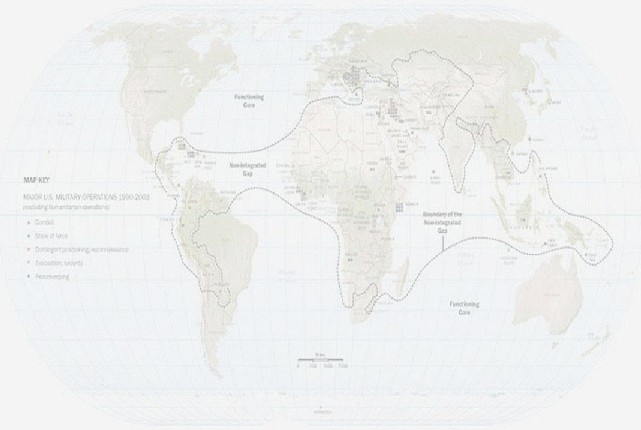
The Pentagon's New Map: War and Peace in the Twenty-First Century is a 2004 book by Thomas Barnett based around an earlier article he wrote for Esquire magazine. It outlines a new grand strategy for American foreign policy. It is an iteration of a PowerPoint presentation that Barnett has been making for years that is known simply as "The Brief." Interested parties include the public and private sectors, encompassing military organizations and foreign governments.
At least two versions of Barnett's presentation have aired on C-SPAN as of 2005. In December 2004, the network broadcast one of Barnett's recent presentations followed with a live call-in program in which Barnett discussed his book and its effects. See the article on Barnett for an outline of his ideas.
Barnett was asked by the United States Air Force to give the presentation to every new officer who attained the rank of General.
In late 2004, Barnett's employer (the Naval War College) gave him the choice of either writing the second book or retaining his job. He chose the former, and wrote Blueprint for Action: A Future Worth Creating. Barnett also continues to write articles as a contributing editor at Esquire and consult on global security issues as a senior managing director at Enterra Solutions. He is currently in the planning stages of a third book on Resiliency with co-author Stephen DeAngelis, founder of Enterra Solutions.
Key ideas:
1. Systems of rules called Rule-sets reduce violent conflict. Violence decreases as rules are established (e.g., the WTO Dispute Settlement Understanding) for dealing with international conflicts.
2. The world can be roughly divided into two groups: the Functioning Core, characterized by economic interdependence, and the Non-Integrated Gap, characterized by unstable leadership and absence from international trade. The Core can be sub-divided into Old Core (North America, Western Europe, Japan, Australia) and New Core (China, India). The Disconnected Gap includes the Middle East, South Asia (except India), most of Africa, Southeast Asia, and northwest South America.
3. Integration of the Gap countries into the global economy will provide opportunities for individuals living in the Gap to improve their lives, thereby presenting a desirable alternative to violence and terrorism. The US military is the only force capable of providing the military support to facilitate this integration by serving as the last ditch rule-enforcer. Barnett argues that it has been doing so for over 20 years by "exporting" security (U.S. spends about half of the world's total in military spending).
4. To be successful the U.S. military must stop thinking of war in the context of war but war in the context of "everything else", i.e. demographics, energy, investment, security, politics, trade, immigration, etc.
5. In recognition of its dual role, the U.S. military should organize itself according to two functions, the "Leviathan" and the "System Administrator." 6.
* Leviathan's purpose is employ overwhelming force to end violence quickly. It will take out governments, defend Core countries, and generally do the deterrence work that the US military has been doing since the end of WWII. The Leviathan force is primarily staffed by young aggressive personnel and is overwhelmingly American. *
* The SysAdmin's purpose is to wage peace: peacekeeping, nation building, strengthening weak governments, etc. The SysAdmin force is primarily staffed by older, more experienced personnel, though not entirely (he would put the marines in SysAdmin as the " Mini-me Leviathan"). The sys Admin force would work best as a Core-wide phenomenon.
7. By exporting security, the US and the rest of the Core benefit from increased trade, increased international investment, and other benefits. 8.
Books
* Thomas P.M. Barnett (April 22, 2004). The Pentagon's New Map. Putnam Publishing Group. ISBN 0-399-15175-3 *
* Thomas P.M. Barnett (October 20, 2005). Blueprint for Action. Putnam Publishing Group. ISBN 0-399-15312-8
External links
* Barnett homepage * Google's Gapminder
WSJ EXCERPT: Vann vs. Harkins, all over again!
"He and fellow advisers say U.S. troops on the American side of the base saddle Iraqis with the least-desirable missions and often fail to provide them with the basics they need to protect themselves against insurgent attacks. 'They treat the Iraqis with utter scorn and contempt,' Col. Payne says. 'The Iraqis may not be sophisticated, but they aren't stupid. They see it.'"
Wall Street Journal
June 17, 2006
Pg. 1A Camp Divided
As U.S. tries to give Iraqi troops more responsibility, clash of two American colonels shows tough road ahead.
By Greg Jaffe
Camp Taji, Iraq--This sprawling military base is divided down the middle by massive concrete barriers, a snaking fence and rifle-toting guards. On one side, about 10,000 U.S. Army Soldiers live in air-conditioned trailers. There's a movie theater, a swimming pool, a Taco Bell, and a post exchange the size of a Wal-Mart, stocked with everything from deodorant to DVD players.
On the other side are a similar number of Iraqi Soldiers whose success will determine when U.S. troops can go home. The Iraqi troops live in fetid barracks built by the British in the 1920s, ration the fuel they use to run their lights and sometimes eat spoiled food that makes them sick.
The only Soldiers who pass regularly between the two worlds are about 130 U.S. Army advisers, who live, train and work with the Iraqis.
For many of these advisers, the past six months have been a disorienting experience, putting them at odds with their fellow U.S. Soldiers and eroding their confidence in the U.S. government's ability to build an Iraqi force that can stabilize this increasingly violent country.
Army commanders back in the U.S. "told us this was going to be the most thankless and frustrating job we have ever held, and boy, were they right," says Lt. Col. Charles Payne, who until last month oversaw about 50 Army advisers.
He and fellow advisers say U.S. troops on the American side of the base saddle Iraqis with the least-desirable missions and often fail to provide them with the basics they need to protect themselves against insurgent attacks. "They treat the Iraqis with utter scorn and contempt," Col. Payne says. "The Iraqis may not be sophisticated, but they aren't stupid. They see it."
Col. James Pasquarette, who commands most of the Soldiers on the U.S. side of Camp Taji, calls those claims "totally ridiculous." He says he's proud of what the Iraqi units have achieved in the region and has made supporting them his top priority, after ensuring his own troops have the protection they need. But he worries that if the Iraqis are given too much latitude to execute challenging missions too quickly, they will alienate Iraqi civilians with heavy-handed tactics.
He says Col. Payne and his fellow advisers have "gone native."
Though the divide here at Camp Taji is extreme, it reflects a growing friction throughout this war-torn country. No one on either side of the divide expects the Iraqi troops to be trained, equipped or housed to U.S. standards. But if U.S. troops are going to go home, U.S. commanders must allow Iraqis to take a far greater role in planning operations and taking the fight to the enemy, senior military officers say.
Right now, Iraqi commanders and some of their U.S. advisers say that isn't happening enough. Part of the reason, U.S. officials say, is that widespread Iraqi corruption has made it hard for the fledgling Iraqi government to supply their troops with basics like good food, batteries and fuel. But Iraqi Soldiers and their U.S. advisers say the problem extends beyond basic supply issues. They complain that U.S. troops, bunkered down on large, fortified bases, treat Iraqi forces more like a problem than a partner. U.S. forces "don't talk to us," says Col. Saad, a senior Iraqi commander on Camp Taji. The Iraqi colonel, whose family has been threatened by insurgents, asked that his full name not be used.
U.S. commanders counter that there are huge risks to giving the Iraqi army too big a role right now. They worry some Iraqis will leak word of impending operations to the enemy or use military force to settle sectarian scores. Many U.S. commanders say Iraqi forces aren't as disciplined as U.S. troops and are too prone to abuse civilians and detainees.
The debate raises difficult questions for U.S. commanders, as they plot the way forward in Iraq: Should Iraqi units be held to the same standards as U.S. units? What happens when the Iraqis' solution is at odds with the American commander's strategy?
Earlier this spring, the tension between the two sides at Camp Taji reached the breaking point when the Iraqi army brigade that Col. Payne was advising leveled two dozen roadside kiosks. The Iraqi Soldiers said insurgent snipers, who had killed and wounded Iraqi troops, used the kiosks for cover.
Col. Pasquarette thought destroying the kiosks would only enrage locals and drive them to support the insurgents. "This was a great day for the terrorists," he recalls telling Col. Payne on the day that the Iraqi army flattened the fruit and vegetable stands.
Col. Payne says the Iraqi army bulldozed the kiosks -- consisting mostly of palm fronds suspended by bamboo poles -- to protect Iraqi Soldiers. "When I first heard what they had done, my initial response was, 'I am all for it,' " Col. Payne says. "This is not a law and order situation. This is a war."
Late last month, Col. Pasquarette asked that Col. Payne be dismissed from his position, just four months after the two men started working together. Col. Payne was then assigned to a desk job in Baghdad.
The unit Col. Payne headed is at the leading edge of a major shift in U.S. strategy. Until last summer, the U.S. military saw its primary mission as fighting insurgents. With pressure mounting to bring the 130,000 U.S. troops in Iraq home, President Bush decided the military's main effort should instead focus on training Iraqis to take its place.
To speed development of Iraqi army forces, about 3,000 U.S. Soldiers were placed with Iraqi units throughout the country. The teams live and work with Iraqi Soldiers in places such as Camp Taji.
In November 2005, Col. Payne came back from retirement to lead his team. The colonel had served 28 years in the Army, fought in the Grenada invasion and taught history at West Point. He retired in July 2001. A few weeks later, terrorists struck the Pentagon and the World Trade Center. Col. Payne called the Army and volunteered to return. "There was a chuckle on the end of the phone," he says. The Army told him he wasn't needed.
Four years later, with the Army stretched thin by the war, the 50-year-old Soldier, who was teaching at Virginia Polytechnic Institute, called again. This time, the Army was eager to send him to Iraq. In November, he was told he had 23 days to report to Fort Carson, Colo., and link up with his unit. His wife was "very unhappy," he says. Col. Payne says he was determined to go. "The nation is at war and all real Soldiers want to be where the action is."
Col. Pasquarette, a former college basketball player, took command of his 6,000-Soldier brigade in June 2005. Before that, the 45-year-old had attended Harvard's Kennedy School of Government, worked for the Joint Chiefs of Staff in the Pentagon and served as an aide-de-camp to a four-star general.
The two men's troops arrived in Iraq in December 2005 and settled on opposite sides of Camp Taji, a sprawling former Iraqi army base, about 20 miles north of Baghdad. Col. Payne's group consisted of 50 U.S. Soldiers, assigned to advise the Iraqi military. His team was one of the few at Camp Taji that didn't report to Col. Pasquarette.
The 2,500-Soldier Iraqi brigade that Col. Payne was advising had formed 11 months earlier and had been fighting nonstop. The Iraqis had scrounged all of their tanks and armored personnel carriers -- most of which were at least 30 years old -- from a massive junkyard on the Iraqi side of Camp Taji. When something broke, Iraqi Soldiers retreated to the scrapyard where they would pillage rusting hulks for spare parts. Of the $260 billion spent on the Iraq war since 2003, about $10 billion has gone to build Iraqi army and police forces.
The U.S. officers bonded quickly with their Iraqi counterparts. In January, Maj. Michael Jason, who leads one of the advisory teams, was on patrol with a 42-year-old Iraqi colonel when a terrified farmer told them he had found bodies in a field. He then led them to the corpses of 11 Iraqi army Soldiers who had been headed home on leave. Each had been beaten, blindfolded and shot in the head. Their Iraqi army identification cards had been taken from their wallets and pinned to their shirts by insurgents who regularly target Iraqi forces.
Maj. Jason, a Roman Catholic, and his Iraqi counterpart, Col. Khalid, a Muslim, kneeled next to the bodies and prayed. The U.S. Army asked that Col. Khalid's full name be withheld for his safety. That night, Maj. Jason, a 33-year-old West Point grad, wrote an email home describing his Iraqi colleague's bravery and sacrifice.
"Col. Khalid's children have to move constantly for fear of their lives. When he goes home on leave, he cannot tell anyone for security reasons. He just disappears. He drives 90 mph with a pistol tucked in the small of his back and his ID hidden. I love these guys, no s-t," he wrote. A month later, Col. Khalid's brother, also an army officer, was kidnapped. Insurgents killed him and dumped his body on his parents' doorstep. Col. Khalid couldn't go to the funeral for fear that he would be assassinated. So Maj. Jason and Soldiers in the unit mourned with him at Camp Taji.
In March, Col. Khalid left the battalion for a safer assignment, which doesn't require him to leave the base.
As the U.S. advisers grew closer to the Iraqis, they also grew more frustrated with U.S. Soldiers on the other side of the base.
Shortly after Col. Pasquarette arrived at Camp Taji, he beefed up the number of guards and armored vehicles at the gates separating the U.S. and Iraqi sides of the base. "Securing my [base] is my No. 1 mission. I am risk averse here," he says. The U.S. advisers to the Iraqis thought the additional guards and guns were unnecessary and only served to make U.S. Soldiers more suspicious of the Iraqis.
When the advisers asked if they could bring an Iraqi colleague to eat with them on the American side of the base, they say they were shocked at the response. They were told that the presence of an Iraqi officer in the dining hall might upset the U.S. Soldiers.
"These kids go outside the gate and deal with a very hostile environment. They need a place where they can relax and let their guard down," says Lt. Col. Kevin Dixon, Col. Pasquarette's deputy commander. He says the policy was driven by the bombing of a dining facility in Mosul in 2004 by an Iraqi who had sneaked in.
The advisers felt differently. "We really believe there is a systemic contempt for Iraqi Soldiers," says Master Sgt. John McFarlane, a senior enlisted adviser to the Iraqis at Camp Taji. The policy has since been amended to allow advisers to eat with Iraqi officers on the U.S. side if they file a letter in advance with the base's security office.
One of the Iraqi army's primary jobs in the Taji area is to guard water-purification substations that provide most of Baghdad's drinking water. Last summer, insurgents blew up one of the substations, cutting off water for two weeks. To ensure that didn't happen again, Iraqi army units were dispatched by the U.S. to guard the sites. Iraqi Soldiers began to take regular sniper fire there.
In January, the U.S. advisers asked Col. Pasquarette for help installing barriers around one of the substations, to shield the Iraqis from snipers. Col. Pasquarette asked one of his units to help. Weeks passed, but help never came. American engineering units were "too busy" fortifying the U.S. side of Camp Taji and bases around it, says Maj. Martin Herem, who handled the request.
On Feb. 28, a sniper shot in the back one of the Iraqi Soldiers at the water station. The Soldier bled to death. Three weeks later, a sniper killed a second Iraqi Soldier who was on patrol near the water station. Iraqi troops said that both times snipers used the small fruit and vegetable stands lining a nearby road for cover. The Iraqi army couldn't return fire without killing shopkeepers and customers.
When the Iraqi Soldiers ran over to ask people who had been shooting at them, locals said they hadn't seen anything. It's dangerous for locals to be seen helping the U.S. Army or the Iraqi army.
The day after the second killing, Col. Saad, an Iraqi colonel in the unit Col. Payne was advising, ordered his men to tell the shopkeepers to empty the vegetable stands. The Iraqi Soldiers then bulldozed the stands. Col. Saad says he destroyed the kiosks to protect his Soldiers.
When Col. Pasquarette learned about the incident, he was furious. The Iraqis' actions ran completely counter to his strategy. He had told his Soldiers to focus less on killing insurgents and more on reconstruction programs designed to win support of the people.
"When you go lethal or destroy property there may be a short-term gain, but there is a long-term loss," he says. He saw the move as a throwback to the Saddam Hussein era when the army was used to quell unrest and inflict mass punishment.
Because the Iraqi troops operate in his sector, Col. Pasquarette oversees them. He called Col. Payne into his office and demanded that he tell Col. Saad to have his Soldiers apologize and pay reparations to the shop owners.
Col. Payne passed along the orders. But Col. Saad says he refused to follow them. "Here in Iraq if someone makes a mistake, you punish them," he says, referring to the shop owners' failure to give Iraqis information about the snipers. "If you give him money, he will repeat the mistake. And he will consider the person who gave him the gift an idiot."
The next day, Col. Pasquarette met with Col. Saad's Iraqi superior and told him about the dispute. The Iraqi general fired Col. Saad. Later that day, three low-ranking Iraqi Soldiers, accompanied by about a dozen Americans, passed out the reimbursement forms.
The Iraqi officers in Col. Saad's brigade felt betrayed. On March 21, just before midnight, four senior officers stopped by Col. Payne's office and threatened to resign. "They were furious," says Col. Payne. Two days later, Col. Saad was quietly re-hired.
Col. Payne says he is still angry that neither Col. Pasquarette nor his subordinate commanders talked to Col. Saad to hear his side of the story. "This is a respect issue. These guys don't respect the Iraqis," Col. Payne says.
"Personally I don't think there was anything to discuss," Col. Pasquarette says.
In the days that followed, the relationship between Col. Payne and Col. Pasquarette grew more tense. In mid-March -- about the time the Iraqis flattened the vegetable stands -- insurgents attacked an Iraqi army patrol base in Tarmiyah, a city of about 50,000, a short drive from Camp Taji. One Iraqi Soldier from Col. Saad's brigade was killed by a rocket-propelled grenade and another was shot in the head by a sniper. The next day, four of Col. Saad's Soldiers died when their armored personnel carrier hit a roadside bomb. The blast threw the turret of the vehicle about 30 yards and lopped off the head of one of the Iraqi Soldiers inside, U.S. and Iraqi officers say.
Senior Iraqi officials in the Ministry of Defense were convinced Tarmiyah was a hotbed of insurgent activity. Col. Pasquarette says he was told by his commander in Baghdad to clear the city of insurgents.
Col. Pasquarette and his team spent several days building a plan before he invited Col. Payne, Col. Saad and Col. Saad's commander to the U.S. side to explain it.
The two Iraqi officers were led through a 208-slide PowerPoint briefing, in which all the slides were written in English. The six areas the Iraqi troops were supposed to occupy were named for New England cities, such as Cranston, Bangor and Concord. The Iraqi officers, who spoke only Arabic, were dumbfounded. "I could see from their body language that both of them were not following what was going on," says Maj. Bill Taylor, Col. Payne's deputy.
Once the plan was explained to them through an interpreter, the Iraqis strongly disagreed with it. Col. Pasquarette planned to surround the city with razor wire and set up checkpoints to search all cars moving in and out of the city. U.S. and Iraqi Soldiers would then begin regular foot patrols through the city to gain intelligence on insurgents. The centerpiece of the plan was $5 million in reconstruction projects.
Col. Pasquarette argued that the projects would help the U.S. win support of the city's powerful mayor, Sheik Sayid Jassem, who had been detained by U.S. forces in the early days of the occupation for supporting the insurgency. He also thought the projects would turn the people to the side of the new Iraqi government.
The Iraqis favored a harder-nosed approach. They wanted to conduct house-to-house searches and find a way to put pressure on the mayor, who they insisted was still supporting insurgents. They suggested shutting Tarmiyah's business district down for a week. Once the mayor had been cowed with the stick, they favored dangling the $5 million in reconstruction funds.
Col. Pasquarette says the Iraqi approach would have alienated the people in Tarmiyah. He rejected it and stuck to his plan. Although the operation hasn't netted any insurgents, he says people are out shopping and businesses that had been closed are bustling as a result of the checkpoints and foot patrols. The U.S. military is bankrolling a pipeline that will bring potable water into the city, building medical clinics and repairing the main road.
Attacks in the city are down substantially since March, though they have begun to climb of late, Col. Pasquarette says. Still, he says the operation was a success because residents feel safer. He doubts the city was ever really a major insurgent hotbed. "We were all wrong about Tarmiyah," he says.
Col. Saad and Col. Payne say the insurgents have simply moved outside the city's gates.
Gen. George Casey, the top military officer in Iraq, acknowledges it has often been hard for U.S. commanders to let Iraqis take over the fight. "We are so mission-oriented and so focused, we tend to want to do everything ourselves," he says. "It is a constant battle ... . I would hope that when the Iraqis have ideas we try to help them execute them."
Iraqi troops "have never betrayed their U.S. advisory teams," adds Lt. Gen. Martin Dempsey, who is overseeing the effort to train and equip Iraqi forces.
In their four months together, Col. Payne and Col. Saad became close. Col. Payne teased him about a poster on his office wall of two fluffy white kittens, nuzzling next to a dozen roses. "What in the world is the deal with the cat and the flowers?" Col. Payne asked.
"It reminds me of softness and women," Col. Saad replied. He often referred to Col. Payne as "my brother."
Col. Saad confided his worries about his country and his army to Col. Payne. His unit was constantly short of supplies. His Soldiers often didn't have enough fuel for their armored vehicles and generators. They also lacked AA batteries to run the night-vision goggles the Americans had given them. He blamed corruption in the Iraqi system for supply shortages. "If you don't have the basics to survive, you cannot be great. You cannot win," he said one evening. Col. Payne threw his arm around the Iraqi colonel's shoulder. "No, but you can survive," he said.
The U.S. says it is helping the Iraqis fix problems that have led to shortages of equipment. The Iraqi government recently replaced the contractor responsible for serving troops spoiled food. Supplying the army is the responsibility of the Iraqi government and "there have been a few cases of poor performance" among Iraqi contractors, says Lt. Col. Michael Negard, a senior spokesman in Iraq. "While the problems aren't huge, the issue's certainly of the highest priority," he says.
Col. Saad has also grown frustrated with the Americans on the other side of Camp Taji. Last month, Col. Pasquarette asked the Iraqis to provide a couple of dozen Soldiers to man some checkpoints with U.S. Soldiers. The U.S. Soldiers showed up at the checkpoints for about a week. Then, without warning, they left the Iraqis to run them on their own, Col. Saad says. The Iraqis, who questioned the value of the checkpoints in the first place, were angry they had suddenly been abandoned.
"Why did they leave? Aren't they supposed to be helping us?" Col. Saad asked Col. Payne.
"I don't know what the hell they are doing," Col. Payne replied.
Col. Pasquarette says the Iraqis should have been informed that the U.S. Soldiers were pulling out of those checkpoints.
In late May, Col. Payne began to push the Iraqi Soldiers to get out on the offensive. "I am sick of sitting around and waiting to get attacked," Col. Payne told Col. Saad. He asked Col. Saad to cut loose 10 or 15 Soldiers that he could pair up with three or four U.S. Soldiers to venture out at night in search of the enemy. Col. Saad agreed.
On May 19, Soldiers from Col. Payne's and Col. Saad's units set out on their second night patrol. After they stopped a car that was out in violation of curfew, the enemy opened fire on them from a surrounding palm grove. The Soldiers fired back, killing three insurgents and dispersing the rest. When the shooting ended, a man stumbled out of a small shack deep in the palm grove. His hands were tied and a blindfold hung around his neck. "Come mister. I am problem," he sobbed in broken English.
The man said he worked as a legal adviser for Iraq's Ministry of Defense and had been kidnapped by men who told him they would slaughter him "like a sheep." The kidnappers were setting up a camera to film his execution, he said, when they heard the Soldiers and left him. "God sent you to save me," the man said, as tears streamed down his face.
Col. Payne was elated. "The Iraqi army saved a life. It also demonstrated that it will go into the field to find and destroy the enemy," he said.
His victory, however, quickly gave way to crushing defeat. The next day, he was summoned to meet with his immediate supervisor. Col. Payne was relieved of his command and told to move to a headquarters position in Baghdad.
He says he was told that he removed because he was "ineffective" and "lacked the skills necessary to lead [his] team in this challenging environment." An Army spokesman in Baghdad said Col. Payne wasn't relieved for any single incident. He declined to comment further.
A few days before Col. Payne was fired, Col. Pasquarette said in an interview that he thought Col. Payne and his men had grown too close to the Iraqis they were advising and his decisions were too often guided by emotion. "From my perspective, the move was warranted," Col. Pasquarette wrote in an email after Col. Payne was dismissed.
The morning after he was fired, Col. Payne spent the day saying goodbye to Col. Saad and the U.S. Soldiers on his team. That evening, he boarded a helicopter for Camp Victory, a massive U.S. base on the outskirts of Baghdad.
"I'm now here in Victory -- an alien environment to me and one I never wanted to be a part of," he wrote in an email. He was able to hold his emotions in check until his helicopter lifted off from Camp Taji. Then, he says, he began to sob. "I simply cannot tell you how much I will miss my team."
Iraq is yet again, a WW2 re-enactment U.S. military with even LESS ground maneuver tendencies and MORE aircraft delivered firepower lust than it had in Vietnam, and ZERO airborne forward air controllers in fixed-wing observation planes! DoD in love with Rumsfeld/MacNamara-style RMA bombardment doesn't realize air striking buildings full of civilians makes more rebels. In the following Tribune article a couple marine officers point this out, but be advised outsider 4GW disciple marines Hammes and Wilson do not represent the USMC HQMC corporate or rank & file mentality.
Hammes also doesn't understand that even if you are using restraint you can't be driving around in wheeled trucks and must be in multiple armor layered tracks lest you get blown up and go bezerk like the Haditha marines did. You can't have a "glass jaw" and "turn the other cheek".
We have contacted Wilson and he may understand that you ain't gaining any populace confidence if you cannot even protect yourself because you are in a wheeled truck.
However, the whole problem with the Boydian 4GWs is they have an anti-equipment knee-jerk outlook. Their mental narcissism uses grease pencils and books while the RMA firepower mental narcissism uses laptops and electronic gadgets. What's the essential difference? The former are right that the loyalty of the people are key but then blow it running with stupid egomaniac marines in wheeled trucks and on foot who lack the maturity and humility to pull off a T.E. Lawrence. Narcissism is not AOK and the "maneuver warfare" camp that needs the token USMC approval of their views to somehow feel their lives were not wasted have swallowed the cancer of pride that undermines everything.
Chicago Tribune
June 17, 2006
Pg. 1Analysis
Experts: U.S. Using Wrong Tactics
Fighting in Iraq likely to stay at same level
By Stephen J. Hedges, Washington Bureau
WASHINGTON -- Despite the recent killing of insurgent leader Abu Musab al-Zarqawi, some former military officials and experts worry that the U.S. has not learned the lessons of counterinsurgency warfare in Iraq and that, as a result, a significant improvement in the fighting may not be around the corner.
In confronting a frustratingly resilient insurgency, the U.S. is relying heavily on precision bombing, which destroys buildings and can kill civilians, generating ill will. Tactics used in house clearings have led to incidents such as an alleged massacre by marines in the town of Haditha. Large incursions into the cities of Fallujah and Ramadi have bred dissatisfaction among ordinary Iraqis, violating a cardinal principle of counterinsurgency.
Pentagon leaders repeatedly have vowed to improve their counterinsurgency training, but only last year did the Army begin a revision of its tactics, and a new manual on the topic has not been warmly received. U.S. commanders in Iraq also have opened a counterinsurgency school in Iraq in an attempt to better confront the enemy.
But many specialists in this type of fighting, including recently retired military officers, worry that key lessons have not been learned three years into the war. Even as the military targets al-Zarqawi's apparent successor, Abu Ayyub al-Masri, they say killings of insurgent leaders will have a limited effect.
"It's about the will of the American people and the trust of the Iraqi people, and situations like Haditha attack both," said T.X. Hammes, a retired marine colonel and Iraq veteran whose book on counterinsurgent warfare, "The Sling and the Stone," is considered a "must-read" among younger officers in Iraq. "Fighting insurgents is about not making any more enemies."
Despite his recent high-profile Camp David, Md., summit with his war Cabinet and select outside experts, there is little evidence that President Bush has made any changes to his strategy for Iraq.
Bush holds his ground
Indeed, during his surprise visit to Iraq on Tuesday and in a news conference upon returning to Washington on Wednesday, Bush repeated what he has said often about the U.S. military presence there.
"The policy of the United States government is to stand with this new government and help them succeed, and we will do what it takes to help them succeed," the president said. [EDITOR: except changing our bombard from the air mentality from comfy bases]
The good news of the killing of al-Zarqawi all but eclipsed a run of negative developments in Iraq for the U.S. In mid-May the Pentagon acknowledged that it was investigating allegations that marines might have shot 24 Iraqi citizens in Haditha in revenge for the roadside bomb attack that killed a marine. Marine officers, the Pentagon suggested, might have covered up the incident.
The Haditha allegations prompted allegations of other alleged civilian shootings by U.S. troops. The military dismissed one as previously investigated, but eight marines have been detained at Camp Pendleton, Calif., pending possible charges in a second case.
Though al-Zarqawi's demise has shifted the spotlight off Haditha, the shootings there could represent a dividing line in U.S. military operations in Iraq. Civilian deaths violate a primary rule of counterinsurgency doctrine, which emphasizes non-violent, community police actions that enhance personal security instead of endangering it.
The Haditha incident, still under Pentagon review, isn't the only suggestion that the U.S. counterinsurgency campaign is off track. Al-Zarqawi's bombing death aside, U.S. forces in Iraq have made frequent use of precision bombing as a means of targeting insurgents.
That tactic, while sometimes effective, can also lead to extensive civilian deaths and property damage.
A `losing' tactic
The increased use of air strikes, said G.I. Wilson, a retired marine colonel who recently finished a second tour in Iraq and who writes frequently on fighting insurgents, "means that you're losing. A 500-pound bomb causes a lot of destruction."
One of the allegations of wrongful civilian deaths leveled at the military recently involved the destruction of an Iraqi home by a C-130 gunship. The U.S. military said it investigated a nighttime raid on the village of Ishaqi, about 55 miles north of Baghdad, and found that U.S. troops used proper force. An Iraqi human-rights group alleged that 11 civilians were wrongfully killed in Ishaqi, and citizens there alleged that a building was destroyed by the C-130 to conceal dead residents.
The same troubles have vexed U.S. troops in Afghanistan, where the Taliban enemy is more remote. Last month, the Afghan government complained that a U.S. bomb struck a village where Taliban suspects had taken refuge. Sixteen civilians died in that air strike, the government said. An estimated 20 Taliban fighters were also killed in the strike.
Bush said in December that about 30,000 Iraqi citizens had died "as a result of the initial incursion and the ongoing violence." Although some of those deaths can be attributed to al-Zarqawi's campaign of car bombing and suicide attacks, Iraqi civilian deaths have continued in a spate of car bombings and shootings since al-Zarqawi's death.
The reasons for the missteps by U.S. troops can be traced to an ingrained Pentagon tradition of training and fighting for conventional war, with well-plotted battle lines and an easily distinguished enemy. The U.S. force in Iraq was slow to recognize the emergence of the Iraqi insurgency in 2003 and it has been reluctant to adopt counterinsurgency tactics. Commanders trained in heavy artillery assaults bristled at the notion of exposing troops on street patrols, interacting with Iraqi citizens and gathering intelligence on likely insurgents.
Gen. George Casey, the U.S. commander in Iraq, developed a counterinsurgency school there because, as one subordinate told The Washington Post, the task was not getting done during predeployment training in the U.S. In addition, Lt. Gen. Pete Chiarelli, commanding general of the multinational force in Iraq, is credited by many with putting a heavier emphasis on counterinsurgent tactics.
Hint of drawdown
The strain on U.S. troops during three years of war and the possible political necessity of reducing the U.S. presence in Iraq before the November congressional elections may play a part in any decision to cut the number of troops. Brig. Gen. Carter Ham, deputy director for regional operations for the Joint Chiefs of Staff, suggested last week that the force might be gradually be drawn down as the end of normal seven-month and yearlong rotations are completed.
"The overall strategy, it's important to remember, is not driven by numbers but by effect," Ham said. "And as the Iraqis are able to exercise greater responsibility and independence, then over time we would certainly like to see the U.S. number come down."
"We Got the Guns" = immature American marines wrong for SASOs, Part 1
The following is even more conclusive evidence that during the nation-state war phase, WE MUST USE 3D MANEUVER TO BLOCK AND KILL/CAPTURE FLEEING ENEMY LEADERS, otherwise they will inter-mingle with the civil populace and start a rebellion against us if we stick around. Once inter-mingled, if we try to do dragnets, we end up creating new rebels by our kill/capture door kicking and incarcerations for every previously existing rebel found. Studying Trainor/Gordon's book, "Cobra II" it appears CENTCOM's war plan did NOT have and 3D maneuver blocking forces to kill/capture Saddam and his sons leaving Baghdad. CENTCOM absurdly expected a slow, obvious 2D maneuver "armored stampede" from the Army's 3rd Infantry Division and a constantly-pinned-down-by-Iraqi-rear-guards, USMC clusterfuck in 75% wheeled trucks to encircle from the west and east Baghdad would trap them when they had several days to pack all their belongings and be long gone. This is not how we got Noriega in Panama in 1989. The heavy tanker "mech pussies" planned Cobra II and the light narcissists did Operation Just Cause.
This is also yet more proof that the immature American narcissist and weak economic co-dependant with zero humility, zero cultural training, has his weapons locked up 24/7/365 as he's victimized in a "From Here to Eternity" garrison routine is the wrong type of person to send overseas for SASO operations who suddenly has power in his hands and a chip-on-his-shoulder.
www.truthdig.com/dig/item/20060627_occupation_iraq_hearts_minds
The Occupation of Iraqi Hearts and Minds
Editor's note: Truthdig contributor Nir Rosen, an American reporter who has lived for the last three years in Iraq and who can pass as Middle Eastern, describes what it's like to live under the boot of a culturally callous-and sometimes criminal-occupying force in Iraq. "The occupation has been one vast extended crime against the Iraqi people, and most of it has occurred unnoticed by the American people and the media."
A Dig led by Nir Rosen
Three years into an occupation of Iraq replete with so-called milestones, turning points and individual events hailed as "sea changes" that would "break-the-back" of the insurgency, a different type of incident received an intense, if ephemeral, amount of attention. A local human rights worker and aspiring journalist in the western Iraqi town of Haditha filmed the aftermath of the massacre of 24 Iraqi civilians. The video made its way to an Iraqi working for Time magazine, and the story was finally publicized months later. The Haditha massacre was compared to the Vietnam War's My Lai massacre, and like the well-publicized and embarrassing Abu Ghraib scandal two years earlier, the attention it received made it seem as if it were a horrible aberration perpetrated by "a few bad apples" who might have overreacted to the stress they endured as occupiers.
In reality both Abu Ghraib and Haditha were merely more extreme versions of the day-to-day workings of the American occupation in Iraq, and what makes them unique is not so much how bad they were, or how embarrassing, but the fact that they made their way to the media and were publicized despite attempts to cover them up. Focusing on Abu Ghraib and Haditha distracts us from the daily, little Abu Ghraibs and small-scale Hadithas that have made up the occupation. The occupation has been one vast extended crime against the Iraqi people, and most of it has occurred unnoticed by the American people and the media.
Americans, led to believe that their Soldiers and marines would be welcomed as "liberators" by the Iraqi people, have no idea what the occupation is really like from the perspective of Iraqis who endure it. Although I am American, born and raised in New York City, I came closer to experiencing what it might feel like to be Iraqi than many of my colleagues. I often say that the secret to my success in Iraq as a journalist is my melanin advantage. I inherited my Iranian father's Middle Eastern features, which allowed me to go unnoticed in Iraq, blend into crowds, march in demonstrations, sit in mosques, walk through Falluja's worst neighborhoods.
I also benefited from being able to speak Arabic-in particular its Iraqi dialect, which I hastily learned in Baghdad upon my arrival and continued to develop throughout my time in Iraq.
My skin color and language skills allowed me to relate to the American occupier in a different way, for he looked at me as if I were just another "haji", the "gook" of the war in Iraq. I first realized my advantage in April 2003, when I was sitting with a group of American Soldiers and another Soldier walked up and wondered what this haji (me) had done to get arrested by them. Later that summer, I walked in the direction of an American tank and heard one Soldier say about me, "That's the biggest fuckin' Iraqi (pronounced eye-raki) I ever saw." A Soldier by the gun said, "I don't care how big he is, if he doesn't stop movin' I'm gonna shoot him."
I was lucky enough to have an American passport in my pocket, which I promptly took out and waved, shouting: "Don't shoot! I'm an American!" It was my first encounter with hostile American checkpoints but hardly my last, and I grew to fear the unpredictable American military, which could kill me for looking like an Iraqi male of fighting age. Countless Iraqis were not lucky enough to speak American English or carry a U.S. passport, and often entire families were killed in their cars when they approached American checkpoints.
In 2004 the British medical journal The Lancet estimated that by September 2004, 100,000 Iraqis had died as a result of the American occupation and said that most of them had died violently, mostly in American airstrikes. Although this figure was challenged by many, especially partisans of the war, it seems perfectly plausible to me based on what I have seen in Iraq, having spent most of the postwar period there. What I never understood was why more journalists did not focus on this, choosing instead to look for the "good news" and go along with the "official" story.
My first direct encounter with American marines was from the Iraqi side. In late April 2003, I was attending the Friday prayers in a Sunni bastion in Baghdad. Thousands of people were praying and the devout flooded out of the mosque and laid their prayer rugs on the street and the square in front of it. A marine patrol rounded a corner and walked right into hundreds of people praying on the street and listening to the sermon, even approaching the separate section for women. Dozens of men rose and put their shoes on, forming a virtual wall to block the armed marines, who seemed unaware of the danger. The marines did not understand Arabic. "Irjau!" "Go back!" the demonstrators screamed, and some waved their fists, shouting "America is the enemy of God!" as they were restrained by a few cooler-headed men from within their ranks. I ran to advise the marines that Friday prayers was not a good time to show up fully armed. The men sensed this and asked me to tell their lieutenant, who appeared oblivious to the public relations catastrophe he might be provoking. He told me: "That's why we've got the guns."
Even if the Girl Scouts had occupied Iraq they would have resorted to these methods. [EDITOR: disagree; www.combatreform.org/johnpaulvann.htm]
A nervous Soldier asked me to go explain the situation to the bespectacled staff sergeant, who had been attempting to calm the situation by telling the demonstrators, who did not speak English, that the U.S. patrol meant no harm. He finally lost his temper when an Iraqi told him gently, "You must go." "I have the weapons," the sergeant said. "You back off."
"Let's get the fuck out!" one marine shouted to another as the tension increased. I was certain that a shove, a tossed stone or a shot fired could have provoked a massacre and turned the city violently against the American occupation. Finally the marines retreated cautiously around a corner as the worshipers were held back by their own comrades. It could have ended worse, and a week later it did when 17 demonstrators were killed by American Soldiers in Falluja, and several more were killed in a subsequent demonstration, a massacre that contributed to the city's support of the resistance.
I believe that any journalist who spent even a brief period embedded with American Soldiers must have witnessed crimes being committed against innocent Iraqis, so I have always been baffled by how few were reported and how skeptically the Western media treated Arabic reports of such crimes. These crimes were not committed because Americans are bad or malicious; they were intrinsic to the occupation, and even if the Girl Scouts had occupied Iraq they would have resorted to these methods. In the end, it is those who dispatched decent young American men and women to commit crimes who should be held accountable. [EDITOR: you mean the palace generals who sent them out to tidy the area via presence patrols?]
(Page 2)
I still feel guilt over my complicity in crimes the one time I was embedded, in the fall of 2003. (I spent two weeks with the 3rd Armored Cavalry Regiment stationed in Husaybah, an Iraqi town near the Syrian border that is a suspected entry point for "foreign insurgent fighters".) Normally, I like to think, if I witnessed an act of bullying of the weak or the elderly, or the terrorizing of children, I would interfere and try to stop it. After all, a passion for justice is what propelled me into this career. It started when I arrived in the main base in the desert. Local Iraqi laborers were sitting in the sun waiting to be acknowledged by the American Soldiers. Every so often a representative would come to the Soldiers to explain in Arabic that they were waiting for their American overseer. The Soldier would shout back in English. Finally I translated between them. One Soldier, upset with an Iraqi man for looking at him, asked him: "Do I owe you money? So why the fuck are you looking at me?"
After a week, the Army unit I was living with went on a raid targeting alleged Al Qaeda cells. Included were safe houses, financiers and fighters as well as alleged resistance leaders such as senior military officers from elite units of the former Iraqi army. All together there were 62 names on the wanted list. A minimum of 29 locations would be raided, taking out the "nervous system" of the area resistance "and the guys who actually do the shooting."
The raids began at night. The men descended upon villages by the border with Syria in the western desert. After half an hour of bumpy navigating in the dark the convoy approached the first house and the vehicles switched their lights on, illuminating the target area as a tank broke the stone wall. "Fuck yeah!" cheered one sergeant, "Hi honey I'm home!" The teams charged over the rubble from the wall, breaking through the door with a sledgehammer and dragging several men out. The barefoot prisoners, dazed from their slumber, were forcefully marched over rocks and hard ground. One short middle-aged man, clearly injured and limping with painful difficulty, was violently pushed forward in the grip of a Brobdingnagian Soldier who said, "You'll fucking learn how to walk." Each male was asked his name. None matched the names on the list. A prisoner was asked where the targeted military officer lived. "Down the road," he pointed. "Show us!" he was ordered, and he was shoved ahead, stumbling over the rocky street, terrified that he would be seen as an informer in the neighborhood, terrified that he too would be taken away. He stopped at the house but the Soldiers ran ahead. "No, no, it's here," yelled a sergeant, and they ran back, breaking through the gate and bursting into the house. It was a large villa, with grape vines covering the driveway. Women and children from within were ordered to sit in the garden. The men were pushed to the ground on the driveway and asked their names. One was indeed the first high-value target. His son begged the Soldiers, "Take me for 10 years but leave my father!" Both were taken. The children screamed 'Daddy, Daddy!' as the men were led out and the women were given leaflets in Arabic explaining that the men had been arrested.
As the main element departed, the psychological operations vehicle blasted AC/DC rock music through neighborhood streets.
Home after home, met the same fate. Some homes had only women; these houses too were ransacked, closets broken, mattresses overturned, clothes thrown out of drawers. Men were dragged on the ground by their legs to be handcuffed outside. One bony ancient sheik walked out with docility and was pushed forcefully to the ground, where he was wrestled by Soldiers who had trouble cuffing his arms. A commando grabbed him from them, and tightly squeezed the old man's arms together, lifting him in the air and throwing him down on the ground, nearly breaking his fragile arms.
As her husband was taken away, one woman angrily asked Allah to curse the Soldiers, calling them "Dogs! Jews!" over and over. When his Soldiers left a home, one officer emerged to slap them on the back like a coach congratulating his players during halftime in a winning game. In a big compound of several houses the Soldiers took all the men, even the ones not on the list. A sergeant explained that the others would be held for questioning to see whether they had any useful information. The men cried out that they had children still inside. In several houses Soldiers tenderly carried out babies who had been left sleeping in their cribs and handed them to the women. When the work at a house was complete, or at the Home Run stage (stages were divided into 1st, 2nd, 3rd, Home Run and Grand Slam, meaning ready to move on), the Soldiers relaxed and joked, breaking their own tension and ignoring the trembling and shocked women and children crouched together on the lawns behind them.
Prisoners with duct tape on their eyes and their hands cuffed behind them with plastic "zip ties" sat in the back of the truck for hours, without water. They moved their heads toward sounds, disoriented and frightened, trying to understand what was happening around them. Any time a prisoner moved or twitched, a Soldier bellowed at him angrily and cursed. Thrown among the tightly crowded men in one truck was a boy no more than 15 years old, his eyes wide in terror as the duct tape was placed on them. By daylight the whole town could see a large truck full of prisoners. Two men walking to work with their breakfast in a basket were stopped at gunpoint, ordered to the ground, cuffed and told to "Shut the fuck up" as their basket's contents were tossed out and they were questioned about the location of a suspect.
The Soldier guarding them spoke of the importance of intimidating Iraqis and instilling fear in them. "If they got something to tell us I'd rather they be scared," he explained. An Iraqi policeman drove by in a white SUV clearly marked "Police." He too was stopped at gunpoint and ordered not to move or talk until the last raid was complete. From the list of 34 names, the troop I was with brought in about 16 positively identified men, along with 54 men who were neighbors, relatives or just happened to be around. By 08:30 the Americans were done and started driving back to base. As the main element departed, the psychological operations vehicle blasted AC/DC rock music through neighborhood streets. "It's good for morale after such a long mission," a captain said. Crowds of children clustered on porches smiling, waving and giving the passing Soldiers little thumbs up. A sergeant waved back. Neighbors awakened by the noise huddled outside and watched the convoy. One little girl stood before her father and guarded him from the Soldiers with her arms outstretched and legs wide.
(Page 3)
In Baghdad, coalition officials announced that "112 suspects" had been arrested in a major raid near the Syrian border, including a high-ranking official in the former Republican Guard. "The general officer that they captured, Abed Hamed Mowhoush al-Mahalowi, was reported to have links with Saddam Hussein and was a financier of anti-coalition activities, according to intelligence sources," a military spokeswoman said. "Troops from the 1st and 4th squadrons of the Third Armored Cavalry cordoned off sections of the town and searched 29 houses to find 'subversive elements,' including 12 of the 13 suspects they had targeted for capture," she said.
That night the prisoners were visible on a large dirt field in a square of concertina wire. Beneath immense spotlights and near loud generators, they slept on the ground, guarded by Soldiers. One sergeant was surprised by the high number of prisoners taken by the troop I was with. "Did they just arrest every man they found?" he asked, wondering if "we just made another 300 people hate us." The following day 57 prisoners were transported to a larger base for "further interrogation". Some were not the suspects, just relatives of the suspects or men suspected of being the suspects.
The next night the troop departed the base at 0200, hoping to find those alleged Al Qaeda suspects who had not been home during the previous operation. Soldiers descended upon homes in a large compound, their boots trampling over mattresses in rooms the inhabitants did not enter with shoes on. Most of the wanted men were nowhere to be found, their women and children prevaricating about their locations. Some of their relatives were arrested instead. "That woman is annoying!" one young Soldier complained about a mother's desperate ululations as her son was taken from his house. "How do you think your mother would sound if they were taking you away?" a sergeant asked him.
Three days after the operation, a dozen prisoners could be seen marching in a circle outside their detention cells, surrounded by barbed wire. They were shouting "USA, USA!" over and over. "They were talkin' when we told 'em not to, so we made 'em talk somethin' we liked to hear," one of the Soldiers guarding them said with a grin. Another gestured up with his hands, letting them know they had to raise their voices. A first sergeant quipped that the ones who were not guilty "will be guilty next time," after such treatment. Even if the men were guilty, no proof would be provided to the community. There would be no process of transparent justice. The only thing evident to the Iraqi public would be the American guilt.
In November 2003 a major from the judge advocate general's office working on establishing an Iraqi judicial process told me that there were at least 7,000 Iraqis detained by American forces. Many languished in prisons indefinitely, lost in a system that imposed the English language on Arabic speakers with Arabic names not easily transcribed. Some were termed "security detainees" and held for six months pending a review to determine whether they were still a "security risk." Most were innocent. Many were arrested simply because a neighbor did not like them. A lieutenant colonel familiar with the process told me that there is no judicial process for the thousands of detainees. If the military were to try them, there would be a court-martial, which would imply that the U.S. was occupying Iraq, and lawyers working for the administration are still debating whether it is an "occupation" or "liberation". Two years later, 50,000 Iraqis had been imprisoned by the Americans and only 2% had ever been found guilty of anything.
The S2 (intelligence) section in the Army unit I was with had not proved itself very reliable in the past-a fact that frustrated Soldiers to no end. "You get all psyched up to do a hard mission," said one sergeant, "and it turns out to be three little girls. The little kids get to me, especially when they cry."
The reason for the lack of confidence in S2 was made clear by the case of a man called Ayoub. I accompanied the troop when it raided Ayoub's home based on intelligence S2 provided: intercepted phone calls, in which Ayoub spoke of proceeding to the next level and obtaining land mines and other weapons.
On the day of the raid, tanks, Bradleys and Humvees squeezed between the neighborhood walls. A CIA operator angrily eyed the rooftops and windows of nearby houses, a silencer on his assault weapon. Soldiers broke through Ayoub's door early in the morning and when he did not immediately respond to their orders he was shot with nonlethal ordinance, little pellets exploding like gunshot from the weapons grenade launcher. The floor of the house was covered in his blood. He was dragged into a room and interrogated forcefully as his family was pushed back against a garden fence. Ayoub's frail mother, covered in a shawl, with traditional tribal tattoos marking her face, pleaded with an immense Soldier to spare her son's life, protesting his innocence. She took the Soldier's hand and kissed it repeatedly while on her knees. He pushed her to the grass along with Ayoub's four girls and two boys, all small, and his wife. They squatted barefoot, screaming, their eyes wide in terror, clutching each other as Soldiers emerged with bags full of documents, photo albums and two CDs with Saddam and his cronies on the cover. These CDs, called "The Crimes of Saddam," are common on every Iraqi street, and as their title suggests, they were not made by Saddam supporters; however, the Soldiers saw only the picture of Saddam and assumed they were proof of guilt.
Ayoub was brought out and pushed onto the truck. He gestured to his shrieking relatives to remain where they were. He was an avuncular man, small and round-balding and unshaven with a hooked nose and slightly pockmarked face. He could not have looked more innocent. He sat frozen, staring numbly ahead as the Soldiers ignored him, occasionally glancing down at their prisoner with sneering disdain. The medic looked at Ayoub's injured hand and chuckled to his friends, "It ain't my hand." The truck blasted country music on the way back to the base. Ayoub was thrown in the detainment center. After the operation there were smiles of relief among the Soldiers, slaps on the back and thumbs up.
(Page 4)
Several hours later, a call was intercepted from the Ayoub whom the Americans were seeking. "Oh shit," said the S2 captain, "[we've got] the wrong Ayoub." The innocent father of six who was in custody actually was a worker in a phosphate plant the Americans were running. But he was not let go. If he was released, there would be a risk that the other Ayoub would learn he was being sought. The night after his arrest a relieved Ayoub could be seen escorted by Soldiers to call his family and report he was fine but would not be home for a few days. "It was not the wrong guy," the troop's captain said defensively, shifting blame elsewhere. "We raided the house we were supposed and arrested the man we were told to."
When the Soldiers who had captured Ayoub learned of the mistake, they were not surprised. "Oops," said one. Another one wondered, "What do you tell a guy like that, sorry?" "It's depressing," a third said. "We trashed the wrong guy's house and the guy that's been shooting at us is out there with his house not trashed." The Soldier who shot the nonlethal ordinance at Ayoub said, "I'm just glad he didn't do something that made me shoot him [with a bullet]." Then the Soldiers resumed their banter.
A few days later, the Army did a further analysis of the phone calls that had originally sent them in search of a man named Ayoub. In the calls, Ayoub had indeed spoken of proceeding to the next level and obtaining land mines and other weapons. This had rightfully alarmed the Army's intelligence officers. But at some point an analyst realized that Ayoub was not a terrorist intent on obtaining weapons; he turned out to be a kid playing video games and talking about them with his friend on the phone.
The Procrustean application of spurious information gathered by intelligence officers who cannot speak Arabic and are not familiar with Iraqi, Arab or Muslim culture is creating enemies instead of eliminating them.
The Procrustean application of spurious information gathered by intelligence officers who cannot speak Arabic and are not familiar with Iraqi, Arab or Muslim culture is creating enemies instead of eliminating them. The S2 captain could barely hide his disdain for Iraqis. "Oh he just hates anything Iraqi," another captain said of him, adding that the intelligence officers do not venture off the base or interact with Iraqis or develop any relations with the people they are expected to understand. A lieutenant colonel from the Army's civil affairs command explained that these officers do not read about the Soldiers engaging with Iraqis, sharing cigarettes, tea, meals and conversations. They read only the reports of "incidents" and they view Iraqis solely as security threat. The intelligence officers in Iraq do not know Iraq.
In every market in Iraq hundreds of wooden crates can be found piled one atop the other. Sold for storage, upon further examination these crates reveal themselves to be former ammunition crates. For the past 25 years Iraq has been importing weapons to feed its army's appetite for war against Iran, the Kurds, Kuwait and America. When empty, the crates were sold for domestic use. The Soldiers with the Army unit I was with assumed the crates they found in nearly every home implicated the owners in terrorist activities, rather than the much simpler truth. During the operation described here I saw one of the Soldiers find such a crate overturned above a small hole in a man's backyard. "He was trying to bury it when he saw us coming," one Soldier deduced confidently. He did not lift the crate to discover that it was protecting irrigation pipes and hoses in a pit.
Saddam bestowed his largesse upon the security services that served as his praetorian guard and executioners. Elite fighters received Jawa motorcycles. Immediately after the war, Jawa motorcycles were available in every market in Iraq that sold scooters and motorcycles. Some had been stolen from government buildings in the frenzy of looting that followed the war and was directed primarily against institutions of the former government. Soldiers of the Army unit I accompanied were always alert for Jawa motorcycles, and indeed it was true that many Iraqi paramilitaries had used them against the Americans. On a night the troop had received RPG fire, its members drove back to base through the town. When they spotted a man on a Jawa motorcycle they fired warning shots. When he did not stop they shot him to death. "He was up to no good," the captain explained.
On Nov. 26, 2003, after two weeks of brutal daily interrogations by military intelligence officers, Special Forces Soldiers and CIA personnel, Maj. Gen. Abed Hamed Mowhoush, the former chief of Iraqi air defenses whose arrest I had witnessed, died in a U.S. detention facility. Twenty-four to 48 hours before that, he had been interrogated and beaten by CIA personnel. The Army's Criminal Investigation Division began looking into Mowhoush's death that same day. The next day an Army news release stated that he had died of natural causes. "Mowhoush said he didn't feel well and subsequently lost consciousness," according to the statement, " ... the Soldier questioning him found no pulse and called for medical authorities. A surgeon responded within five minutes to continue advanced cardiac life support techniques, but they were ineffective." On Dec. 2, 2003, an Army medical examiner's autopsy said the general's death was "a homicide by asphyxia," but it was not until May 12, 2004, that the death certificate was issued, with homicide as the cause. The Pentagon autopsy report in May said he had died of "asphyxia due to smothering and chest compression" and that there was "evidence of blunt force trauma to the chest and legs." Mowhoush was one of several Iraqis whose death certificates were not issued until May of 2004, long after their deaths.
EDITOR: There are hand-held devices that can send out phrases in the Iraqi language....notice these clowns don't have them. A NLB-SC OR SNC-C would have these devices and have mature psychologically screened to not be narcissistic egomaniacs, Soldiers who know the language and culture who could intermingle with the civil populace and do surveillance ops to kill/capture as threats appear while doing their primary function of restoring social order.
(Page 5)
American Soldiers had no [EDITOR: nation-state war] mission and viewed Iraqis as "the enemy" through a prism of "us and them." An officer returning from a fact-finding mission complained of "a lot of damn good individuals who received no guidance, training or plan and who are operating in a vacuum." Inside the G2, or intelligence, section of the Army's civil affairs headquarters in Baghdad, on a bulletin board I saw an anecdote meant to be didactic. It told of American Soldiers suppressing Muslim Filipino insurgents a century before. They dipped bullets in pig's blood and shot some Muslim rebels, to send a warning to the others. A Latino civil affairs officer, fed up with Iraqis, explained that the only solution was to shut down Baghdad entirely. Military civil affairs officers are supposed to provide civil administration in the absence of local power structures, minimize friction between the military and civilians, restore normalcy and empower local institutions. One brigade commander explained to a civil affairs major that "I am not here to win hearts and minds, I am here to kill the enemy." He failed to provide his civil affairs team with security, so it could not operate.
One morning in Albu Hishma, a village north of Baghdad cordoned off with barbed wire, the local U.S. commander decided to bulldoze any house that had pro-Saddam graffiti on it, and gave half a dozen families a few minutes to remove whatever they cared about the most before their homes were flattened. In Baquba, two 13-year-old girls were killed by a Bradley armored personnel carrier. They were digging through trash and the American rule was that anybody digging on road sides would be shot.
The 4th Infantry Division was especially notorious in Iraq. Its Soldiers in Samara handcuffed two suspects and threw them off a bridge into a river. One of them died. In Basra, seven Iraqi prisoners were beaten to death by British Soldiers. A high-ranking Iraqi police official in Basra identified one of the victims as his son. It is common practice for soldiers to arrest the wives and children of suspects as "material witnesses" when the suspects are not captured in raids. In some cases the Soldiers leave notes for the suspects, letting them know their families will be released should they turn themselves in. Soldiers claim this is a very effective tactic. Soldiers on [EDITOR: vulnerable, wheeled] military vehicles routinely shoot at Iraqi cars that approach too fast or come too close, and at Iraqis wandering in fields. "They were up to no good," they explain. Every commander is a law unto himself. He is advised by a judge advocate general who interprets the rules as he wants. A war crime to one is legitimate practice to another. After the Center for Army Lessons Learned sent a team of personnel to Israel to study that country's counterinsurgency tactics, the Army implemented the lessons it learned, and initiated house demolitions in Samara and Tikrit, blowing up homes of suspected insurgents.
It is hard to relax when the Soldier in the Humvee in front of you aims his machine gun at you.
It is hard to be patient when mosques are raided, when protesters are shot, when innocent families are gunned down at checkpoints or by frightened Soldiers in vehicles. It is hard to be patient in hours of izdiham, or traffic jams, that are blamed on Americans closing off main roads throughout Baghdad. The Americans close roads after "incidents" or when they are looking for planted bombs. [EDITOR: too late, CONOPS should be to PICKET the MSRs so they CAN'T HAVE LAND MINES EMPLACED] Their vehicles block the roads and they answer no questions, refusing to let any Iraqi approach. Cars are forced to drive "wrong side," as Iraqis call it, with near fatal results. Iraqis have become experts in walking over the concertina wire that divides so much of their cities: First one foot presses the razor wire down, then the other steps over. They are experts in driving slowly through lakes and rivers of sewage. They are experts in sifting through mountains of garbage for anything that can be reused.
It is hard to relax when the Soldier in the Humvee or armored personnel carrier in front of you aims his machine gun at you; when aggressive white men race by, running you off the road as they scowl behind their wraparound sunglasses; when Soldiers shoot at any car that comes too close. [EDITOR: I'd ban U.S. troops wearing arrogant dark tint sunglasses in Iraq] Iraqis in their own country are reminded at all times who has control over their lives, who can take them with impunity.
An old Iraqi woman approached the gate to Baghdad international airport. Draped in a black ebaya, she was carrying a picture of her missing son. She did not speak English, and the Soldier in body armor she asked for help did not speak Arabic. He shouted at her to "get the fuck away." She did not understand and continued beseeching him. The Soldier was joined by another. Together they locked and loaded their machine guns, chambering a round, aiming the guns at the old woman and shouting at her that if she did not leave "we will kill you."
The explosive-sniffing dog in front of the Sheraton and Palestine hotels is hated by the Iraqi security guards as well as the American Soldiers who stand there because it, like the rest of us who live in the area, is subject to olfactory whims as it imagines every day that it smells a bomb, forcing them to close off the street for several hours. Two of my friends were arrested for not having a bomb last week when the dog decided their bag smelled funny. They were jailed for four days.
Imagine. The American occupation of Iraq has lasted over three years. The above stories are based on my two weeks with one unit in a small part of the country. Imagine how many Iraqi homes have been destroyed. How many families have been traumatized. How many men have disappeared into American military vehicles in the night. How many crimes have been committed against the Iraqi people every single day in the course of the normal operations of the occupation, when Soldiers were merely doing their duty, when they were not angry or vengeful as in Haditha. Imagine what we have done to the Iraqi people, tortured by Saddam for years, then released from three decades of his bloody rule only to find their hope stolen from them and a new terror unleashed.
Kill/Capture Wannabe Delta Force narcissists in LAV-III trucks jam streets, Part 2
Caveat: this immature narcissist just now coming around to some adult conclusions, is a Stryker truck weenie not a numbered "Special Forces" group Soldier. He's BSing the reporter on his true social standing he had in the U.S. Army.
1. While the Soldier lied to Rosen that he was a "Special Forces" Soldier, its clear what he told of his experiences as an infantry narcissist in a Stryker truck are true. It also says a lot about U.S. Army narcissist culture that he had to pad his resume to feel good about himself, more proof that the whole "pyramid of ego" needs to be shit-canned. He wore the uniform of the United States of America with "U.S. Army" on his nametape, if this isn't enough its time we shut down the snobs within the Army who are dividing us into "us" and "them" in the militarism ego pyramid.
2. Some of those who have posted there on the TRUTHDIG web page foisting the "he-didn't-have-an-adequate-penis-to-make-it-into-SF" crap is exactly the "pyramid of ego" narcissism we have created that has elevated KILL/CAPTURE by SMALL UNITS as the epitome of military self-validation, which is total BULLSHIT. America needs a military that can do other things than small unit commando actions, like large-scale nation-state war and stability operations and its wrong to elevate a small group of egomaniacs doing a small set of missions as the ultimate end state when planet earth is still very large and small groups CANNOT defend human freedom since they cannot offer enough military terrain control. Its also increasingly obvious that SF units cannot do large nation-state "hearts & minds" stability operations and kill/capture at the same time if they are all committed to the latter. Details:
www.reocities.com/militaryincompetence/militarismsucks.htm
What's NOT mentioned in the story is that SFOD-D "Delta Force", the numbered SF groups, Rangers are so busy doing ego gratifying "kill/capture" in Iraq/Afghanistan that they are not available to do foreign internal defense (FID) to train the Iraqi Army to use all those "cultural skills" they allegedly have so in this vacuum, the "young, dumb and full-of-cum" conventional nation-state war Soldiers are training the Iraqis to be cheap imitations of foot and truck-bound easily ambushed, lightfighter narcissists. In fact, our lust to kill/capture a mythical minority of "bad apples" (truth is OUR POORLY EXECUTED OCCUPATION IS CREATING THE REBELS) is so across-the-board in Iraq, we don't have enough "special" troops to do it so VOILA! the wannabe Delta Force Soldier in a Stryker truck gets to knock down some doors after "stacking" by the door and going into the "fatal funnel". He finally got to wear that drop leg holster afterall! Take some digital pics back home and now he's "Special Forces". British General Slim had some stern warning in his book, Retreat into Victory about the pitfalls of having your best Soldiers, your "cream" skimmed off into "special", "elite" units. Large scale operations units need self-actualizers and go-getters, too. Slim was able to get some amazing "special" performances out of his Soldiers and Wingate's CHINDITs showing LARGE UNITS CAN BE SPECIAL AND "HIGH-SPEED", not just small ones that keep and reject a bunch of others out. Military excellence does not have to be a zero-sum game if egalitarian leaders like Chamberlain, Ridgway, Grange, Moore or a Gavin are in charge.
Since we did not learn from Vietnam and are botching Iraq, its high time we learn how to stabilize a country larger than what a SF Group could handle; WE NEED A NON-LINEAR BATTLEFIELD STABILITY CORPS composed of adults, not narcissistic egomaniacs with scores to settle and manhoods to prove:
www.combatreform.org/johnpaulvann.htm
Anything less than creating a Stability Corps and we will just repeat the same mistakes we made in Vietnam, but with Iraq listed as another failure to our resume.
www.truthdig.com/report/page2/20060627_ugly_americans_iraq
Ugly Americans in IraqPosted on Jun 27, 2006
Nir Rosen
Pic:

This was the scene in October of 2003 after U.S. Soldiers nearly broke the arms of a fragile elderly Iraqi man (in pink head-covering) as they tossed him "zip-tied" to the ground during a raid in Husaybah, an Iraqi town near the Syrian border that is a suspected entry point for foreign insurgent fighters. (This is not a photo of the U.S. Special Forces Soldier described in the article.)
By Nir Rosen
Editor's note: The following is an oral history of a U.S. Soldier who served with the Army's Special Forces during the allied occupation of Iraq in 2003 and 2004, as told to journalist Nir Rosen.
It is a companion piece to Rosen's essay "The Occupation of Iraqi Hearts and Minds," which describes his experiences as an American reporter who sometimes passed as a Middle Easterner during the occupation.
The oral history is composed almost entirely of e-mail correspondences that Rosen received from the Soldier, who wished to remain anonymous.
About the Soldier: He served in Iraq during 2003 and 2004 as part of a Special Forces unit whose job, as he told Rosen, was to "hunt enemies and destroy their networks" --to go after "former masterminds and leaders of Saddam's Baath Party." His targets soon morphed into members of "Al Qaeda in Mesopotamia" and insurgents-"a broad term that extended to criminals, influential gangs, bomb-making masterminds and generally pissed-off Arabs across the Sunni Triangle laid off by CPA Order #2--which dismissed all Baath Party members."
The Soldier left the Army in May 2005 but can be recalled in case of a "national emergency." He joked to Rosen that "the day we invade Iran or North Korea is the day that I become a Canadian citizen."
Rosen met the Soldier in Washington, D.C., during the spring of 2006 and struck up a friendship, "feeling a bond," in Rosen's words, "that all who have served in Iraq in some way must feel."
About the Soldier's wish to remain anonymous, he wrote the following to Rosen:
"If my friends from the army even knew I was corresponding with a journalist, I'd probably lose a lot of respect. I am bound by legal contract and personal loyalty to protect the operational security (OPSEC) of my former unit. Because of the sensitivity of their work, their insane burden in Iraq (I still have friends in the military), and the oath of my contract, it is illegal for me to discuss many things-units we work with, equipment, locations, technology, and activity within the country, etc. Furthermore, as I was raised in the community of special operations, I am skeptical almost to the point of paranoia about talking to anyone about Iraq outside of my former unit and family. There is a good reason for this-namely: Loose lips sink ships."
Nir Rosen's account of the Soldier's oral history begins below.
My friend wanted to begin his recounting of his time in Iraq by discussing "the character of the American men fighting this war." He joked that "it might be a shock to some of the architects of this war that our fighters don't read magazines like The Weekly Standard or The New Republic or give a rat's ass about where our occupation in Iraq is headed." He continued: "The reason most of them signed up for service (me included) was to get some action, destroy Al Qaeda and come home with a body count to brag about at a local bar. Who gives a fuck about the rest? I think it can be best summed up in a conversation I overheard at my recruitment station. When one kid was asked why he joined the infantry, he didn't have any doubts: 'I enlisted to kill towelheads.'
Photo essay: www.truthdig.com/gallery/onecategory/C72Nir Rosen presents a series of pictures that illustrate the brutal realities of the U.S. occupation of Iraq
"The Occupation of Iraqi Hearts and Minds" :
www.truthdig.com/dig/item/20060627_occupation_iraq_hearts_minds
Nir Rosen's companion piece to this oral history. A description of what it's like to live under the boot of a culturally callous-and sometimes criminal-occupying force in Iraq.
"The very nature of special operations and the infantry is to kill and/or capture dangerous people, destroy shit and prevent attacks. Creating rapport with the local population isn't really part of the vocabulary-especially if the local population is as insanely dangerous as Iraq. In the eyes of many fellow Soldiers who signed up because of 9/11, and because of the Bush administration's portrayal of Iraq as part of the 'war on terror,' many of the guys fully believed that they were in a hunt [for] men responsible for the blood bath in lower Manhattan." My friend added that regardless of where Soldiers are, "be that a foreign country or a local bar in a military town, they usually wear out their welcome anywhere they go-they've perfected the skill."
Nothing adds to the disconnect between U.S. Soldiers and the Iraqi populace like absolute miscommunication. We are astronauts and they are Martians, plain and simple.
My friend stressed that "our officers took extra special care to fully explain the Rules of Engagement (ROE) in formal briefings to men in my company, and over the course of 140 missions they practiced professional restraint with their actions. But there is also a golden explicit rule with everything you do in war: Make sure that your ass comes home alive. This necessitates aggressive infantry platoon behavior on the part of the U.S. military that ultimately results in something quite the opposite of our stated goals: 'building democracy' and winning 'hearts and minds.' While we were largely successful in hunting the men we were pursuing, my personal impression was that we probably created two times more insurgents than we caught, not to mention the communities we greatly angered with our raids. Our actions were a direct contribution to, as [allied commander] Gen. George Casey said in September 2005, an occupation that is 'fueling the insurgency.' "
He told me a story about his platoon's return to the U.S. after its second deployment to Iraq, when its members went to see the premiere of the film "Team America." Made by the creators of television's "South Park," "Team America" was a comical marionette action flick about a jingoistic fire team whose utter recklessness was matched by their righteous yahoo attitude that America must preserve the very fabric of civilization. No film has more accurately depicted our presence in Iraq; it was a looking glass and it instantly became a platoon favorite. There is a classic scene in the movie where Team America's overbearing red, white and blue helicopter lands on top of a bazaar in the Middle East, crushing an Arab's cashew stand. The side of the helicopter read: "We Protect, We Serve, We Care." That scene hit so close to home, it was scary. Later in the movie, in a high-speed chase against terrorists, a missile gets misfired and destroys the Sphinx (in Egypt). "The movie theater, packed with guys from my platoon, was howling with laughter. We even sarcastically recited lines from the theme songs 'Freedom Isn't Free' and 'America, Fuck Yeah' before and after missions on our third tour in the winter of 2005. By then the disconnect between the lofty rhetoric of our leaders and the crap we dealt with on the ground couldn't have been greater. The mentality of soldiers in Iraq is compounded by a group of factors-wrecked relationships, senselessly drawn-out deployments, sex/alcohol deprivation, and getting mortared on a nightly basis, to name a few." He added that "Iraq is a scary fucking place. Every hard-hitting thing we did there was due in large part to our fear of that place."
My friend explained that over the course of his three deployments to Iraq he discovered what he described as a "breakthrough method of communicating in foreign languages. It was so cutting-edge that Rosetta Stone [the language-training program] doesn't even know about it. It goes something like this: The louder you yell at an Arab in English, the more the Arab will understand you. I've seen this done by my brothers in arms on a hundred-plus occasions. Hell, even I did it. And let me be the first to exclaim that it works wonders. The language barrier has done irreversible damage to our entire occupation.
"On the rare occasions that we've had men who speak the language with us, it has yielded key information-in one case it almost resulted in the capture of a high-value target. I can't begin to imagine the kind of miscommunication damage we could have avoided had we had interpreters during two of our three deployments. Nothing adds to the disconnect between U.S. Soldiers and the Iraqi populace like absolute miscommunication. We are astronauts and they are Martians, plain and simple. The average Soldier looks like Buzz Aldrin, loaded with enough high-tech gear to land him on the set of a sci-fi flick. Every night we descend unexpectedly upon Mars from helicopters. Under the cover of darkness we prowl across mud-hut villages on the search for wanted Martians that communicate with each other in weird, harsh sounds. As a matter of fact, the glow on our eyes created from our night observation devices earned us a nickname by Sunni Arabs across Al Anbar; they called us the 'men with green eyes.' "
(Page 2)
Many of his missions in the Anbar province of western Iraq involved "ground insertion," which meant that "we had to shoot our vehicles through multiple narrow streets to hit the objective. I remember one night vividly breaking the rear-view [mirrors] of every car parked on both sides of the street for three blocks, because our Stryker vehicle couldn't be accommodated on the road. When we reversed the vehicle after a wrong turn, we backed right into a Red Crescent van, putting a four-foot dent into the side of the ambulance and shattering its rear lights. Every time we went out, vehicular damage onto Iraqi-owned cars was always common in urban terrain."
One evening his unit thought it had a breakthrough of "actionable intelligence," he told me. "Some leading figures in the insurgency were believed to be at a meeting in a farmhouse off the Euphrates River--some six officials in total. The mission was treated with an abnormal level of planning. We rolled out with a large group of men, using both ground and air assets. When reaching the objective, men in the house burst out running in multiple directions. Brought just for that scenario was an attack dog trained to stop insurgents from getting away. Trained to attack the arms, he was sent to catch one of the fleeing men. By the time the guy returned, his arm was so torn up, it looked like it had been shot by an AK-47 7.62-millimeter round. We rushed the man back for immediate medical assistance. An American doctor sewed his arm back together. After a thorough investigation, it was concluded that all six men had no intelligence value. Our interrogators smelled a rat, so they brought the accuser into the room of the men we captured. From what I heard, they were livid. 'He is a car thief! He is a criminal!' Apparently he was from a rival tribe and had a feud.
"They were taken back to their home, courtesy of the U.S. 'Oops, We Fucked Up' cab company. They dropped off all of the captured men and the accuser at the same location. After all of the time and resources spent on that one, street justice was given its time to take care of that one. This would be one of the few cases that I was aware of when the innocent men were given reparations-medicine for the arm and $500, a decent sum by Iraqi standards."
The only ice cream my friend ever had in Iraq was when his unit raided an ice cream parlor run by two suspected resistance fighters in a major Sunni city. "After grabbing them in a daytime raid in front of hundreds at a local souk," he told me, "we dumped enough of their ice cream to feed our entire platoon in one of our assault packs. By the time we got back to base, most of it had melted. A hole at the bottom of the pack made to let out water was flowing out with a stream of white vanilla cream onto the sand. It must have been 110 degrees. We ate what we could and couldn't stop laughing about what had transpired."
By that point another platoon had very clearly disrupted prayer service, as testified by hundred of Sunni Arab men standing on the front landing of the mosque giving us what I could only refer to as the 'Arab look of death.'
My friend described a "highly planned mission that utilized many military assets ... over 200 special forces went on a head hunt against a high-value target in the heart of Al Anbar." The mission occurred at 1 p.m. on a Friday, prayer time in the Muslim world. "What essentially transpired was the seizure of two central mosques right in the middle of prayer time-our target was believed to be in one of the mosques. Two other platoons were in charge of taking over three surrounding blocks of families 'sympathetic' to the insurgency. When we rolled up to the central mosque, you could see hundreds of pairs of shoes and sandals lined out by the front door. By the time my platoon had raided a local house, which including the standard demolition of a locked gate door with a linear charge, we launched into the family's two-story house with three fire teams. Our entrance included accidentally stepping all over the family's freshly prepared lunch of salad and kabobs-Arabs typically eat on the floor. After kicking down every door, busting open every cabinet and flipping over every mattress, unearthing every prayer rug and breaking every lock in the house in the search for weapons and bombs, we proceeded to detain a 15-old-kid ('male of active age,' i.e. possible insurgent) and tossed him in our Humvee while his mom cried and pleaded with us that he was innocent (at least that's what I thought she said-none of us had an Arabic vocabulary besides 'Shut up' 'Stop or I'll shoot' and 'Get the fuck out of my face').
"It required a unique form of telepathic genius to understand the people we were liberating if you didn't understand Arabic, and none of us possessed that skill. After our block was pacified, we linked up down the road at the central mosque. By that point another platoon had very clearly disrupted prayer service, as testified by hundred of Sunni Arab men standing on the front landing of the mosque giving us what I could only refer to as the 'Arab look of death.' Another team herded a line of stumbling blindfolded and handcuffed men like cattle into one of our vehicles. By that time at least 20 of us had our weapons pointed at the Muslim congregation, not taking any chances. A fire team across the road was jumping over a nearby wall and breaking into a backyard shed. Two F-16s flew in figure eights overhead, buzzing the city and reminding any cavalier haji (our affectionate term for Arab citizen) that day to think twice before they act.
"We detained some 15 men, including the target's brother (the main target was apparently a no-show that day). We rolled out staring at a thoroughly humiliated community on their most sacred day. Their home doors blown off their hinges, some of their teenage children stolen by Kafirs, and in the house that I raided, a hard-earned lunch kicked across the dirty floor. We would later return to the same neighborhood three times during that deployment, looking for the same guy. Each time, doors were blown off their recently repaired hinges, house glass was broken, car tires were slashed, the few interior possessions found in the houses were thrown around, damaged and destroyed. But still, we couldn't find the guy we were looking for. We would go on to conduct a follow-on mission on that specific day, raiding a building reported to house 'eight hard-core Syrian fighters.' We blew down the door with electrical charging tape to find a broken Kawasaki dirt bike. We also went down the road to an elementary school (school was out that day) that was reported to be an arms cache for the insurgency, and our orders were to raid the entire building. After breaking into one room only to find school books, one of our officers ... called back the mission and decided any further damage to the school was folly, given the apparent effort to win 'hearts and minds' across Iraq."
(Page 3)
One summer evening my friend's unit targeted a sheik who was reportedly a mastermind of the resistance. The sheik lived in a mansion behind a tire store, my friend recalled. "He reportedly had the material and spiritual support of the surrounding area. Thus, the objective of our mission would be not just to capture the sheik, but to capture every male in the entire neighborhood for intelligence about the sheik. I was in the fire team whose objective was to raid the house next door to the sheik's. Approaching the house, we tried to enter in text-book fashion- using something called the 'hooligan tool' to break the lock on the front door.
"After two unsuccessful tries, we used a steel rammer, which did nothing but break the glass on the door. Then we went with Plan C- we turned the door handle on the door next to the one we were trying to break. The door was unlocked. Our two teams then flowed in, full of yelling to add to the shock value of our dynamic entry. 'Get the fuck down,' 'Shut the fuck up,' 'Don't move,' etc. Of the four rooms in the house, two were full of women and children, the other a kitchen, and the fourth, a middle-aged man and a senior citizen. Three of our men rushed the man while the old man on an oxygen tank starting hitting a couple of us with his cane. The old man was quickly dropped to the floor, next to his oxygen tank, while we zip-tied his arms and legs. This wasn't out of personal preference, but we were trying to control the situation. I walked out the blindfolded middle-aged man, who was weak and fell to his knees, trembling and mortified. His wife and two daughters were crying hysterically. I can only guess that they thought I was going to execute him. I wish I knew enough Arabic to tell him that things would be OK if he was innocent-but honestly, why should I be confident enough to say that? Tens of thousands of innocent Iraqis have been thrown in detention facilities across the country with incompetent oversight and filtering processes. Even if I did know Arabic, I probably wouldn't want to tell him the honest truth: 'Sir, after you leave here, I'm sorry, but I have no fucking idea what's going to happen to you.'
"After consolidating the detainees we got the orders to clear the surrounding structures. After running with two fire teams across a typical Iraqi backyard farm, we used a shot gun to blast open the door lock. Unbeknownst to us, we were about to score a major intelligence victory in the war on terror: a den of 40 smelly goats. We immediately took one casualty on that raid-a goat got hit in the ass with one of the buckshots. If our raid on 20 homes wasn't yet successful in waking up everyone in the neighborhood, then that pissed-off goat sure did the job. We had to seek cover on the rear side of the building as another team 'leapfrogged' to an adjacent house. In all of our distraction, the goats poured out of their den. When we eventually left the objective, I saw the group of goats wandering down the main highway that we had taken on our way to the sheik's crib. We just had conducted a raid of liberation. I was reminded of one of Gen. [Anthony] Zinni's early warnings about Iraq: 'There are congressmen today who want to fund the Iraqi Liberation Act, and let some silk-suited, Rolex-wearing guys in London gin up an expedition. We'll equip a thousand fighters and arm them with 97 million dollars' worth of AK-47s and insert them into Iraq. And what will we have? A Bay of Goats, most likely.' Just add 130,000 U.S. Soldiers and hundreds of billions of dollars to the equation and the statement still stands.
"Acting on intelligence and orders beyond our control, we succeeded that night in sending a father of four off to who knows where, losing his livestock livelihood that barely made ends meet, detaining five others guilty of living in that neighborhood and finding no sheik. Before departing, I remember a wild dog staring at me in the eye as he consumed the flesh of a fellow dead dog. Our presence didn't seem to faze him. On the way back from this glorious mission, we came onto an unexpected surprise. To our great amusement, in the middle of desert nowhere (the closest village was eight miles away), we found two men engaged in passionate homosexual intercourse on top a sand dune. I don't think they were expecting any extra company. I guess nowhere was safe in Al Anbar from the U.S. occupation."
My friend quipped that "infantry Soldiers have never been known for their raw talent in mathematics." Therefore the explosives charges made by Soldiers sometimes exceed the bare minimum necessary to blow off a door handle. "In one case," he told me, "I watched a charge succeed in blowing a door five feet across a living room. Being as the suspect was about to open the door after hearing the ruckus on his doorstep, he went airborne as well. And the steel door landed on top of him. Like in a scene out of the movie 'Heat,' blood and puss flowed down both of his ears on the trip back to base."
(Page 4)
During the summer, my friend's unit temporarily inhabited one of Uday Hussein's palaces on the Tigris River. "It was fully furnished with gold-leaf furniture," he said, "working bidets and a nice swimming pool. As the story goes, he had women walk in circles by the pool and he chose which one to rape for the evening. We just used the pool to forget about the fact that we were in Iraq. That summer our tanning sessions by the pool were often interrupted by mortar attacks on our compound. Apparently the chain of command threatened a scorched-earth policy on the surrounding farm communities if they didn't put a stop to whoever was doing it. We also did our part by directing warning shots at local fishermen floating slowly down the Tigris River and staring at the compound. If they didn't get the point the first time, we shot closer to their boat. They would get the message and start rowing like Vikings on speed until they were out of our eyesight. It was only in our self-interest to keep all unwanted activity away from our bases. By the summer of 2004, all trust had fully dissipated."
My friend was rare in that he had somehow overcome the necessary brainwashing Soldiers undergo and was able to critically assess his role in Iraq. "In hindsight," he said, "I have often asked myself what my reaction would be like if I were on the opposite end of this equation. After years of living under a harsh dictatorship, 150,000 Soldiers of Sharia show up and offload into Georgetown from boats on the Potomac River after shelling the Capitol. They have a simple mission, they say: transplanting Islamic enlightenment in the decadent land of Kafir. They take over the D.C. Mall and throw a wall around the Smithsonian buildings; they call it the 'Halal Zone.' The White House becomes the embassy of Iraq. Some asshole like John Walker Lindh (Ahmed Chalabi), who has lived in the Middle East while the U.S. suffered under dictatorship, is Iraq's favorite child for taking over the peacock throne of the U.S. My house gets raided and my mother patted down by hygiene-deficient Wahhabis, so I go to Georgetown to force the humiliation off my mind. A group of wirey majahedin show up at Haagen Daaz while I'm enjoying a cone of cookies and cream-a rare moment of bliss in a country going to shit-and grab the owners while taking their ice cream. I return to my home, after walking through one foot of raw sewage water, to turn on the radio and hear the Arab 'viceroy' declare in a fatwa that all Christian values should be erased from our governing culture. Meanwhile my dad is laid off from his paycheck for the crime of serving in the U.S. Army to provide for his struggling family." My friend concluded that "without much doubt in my mind, if I were an Iraqi under the U.S. occupation, I'd be an insurgent."
When you put your life on the line every night, you don't have the luxury to be skeptical or even critical.
I sympathized with what must have been his painful realization that he had inadvertently committed crimes. "All the way up to my third deployment I was an avid reader of a lot of foolish writing on the war," he said. "I believed in the mission because I had to-after all, what Soldier wants to die for an unworthy cause? I wanted to believe in the propaganda and I willfully avoided things that harshly rubbed against my hope that we were sacrificing for a good cause. When you put your life on the line every night, you don't have the luxury to be skeptical or even critical. In certain ways, I feel embarrassed about my belief that this was once a noble mission, but I have the honesty to admit that I was wrong. I deployed to this war with many great assumptions about our national leadership: I assumed that the WMD intelligence case wasn't a cherry-picked house of cards, I assumed we had a plan for the aftermath of the invasion, I assumed our leaders had a greater understanding of the character of Iraq outside the mouths of Ahmed Chalabi and Kana Makiya. I assumed, I assumed, I assumed."
"As a Soldier trained exclusively to fight, destroy and capture," my friend said, "I was no more different than any of the rest of the men in my platoon who viewed Iraq as a broken country, loaded with assassins and inhospitable people. Hardly any of us spoke Arabic, which added to the dehumanization of the people (or should I say, 'targets') that we hunted and disrupted on a nightly basis; during my time there we conducted over 140 missions. We were always decent to the men we captured, but a raid by definition can never be a humanitarian act. I could never escape the impression from our heavy-handed insertions into hundreds of family homes that our presence only fueled more and more hatred. Every night we returned to base, the adrenaline rush faded and everything in hindsight looked like a black comedy. You couldn't escape the fact that our actions only fueled the insurgency. For every insurgent or jihadist we caught, we created two times as many future fighters. And that is the tragedy- good men inadvertently pissing off an entire population. As our fearless leaders walked into this debacle without a plan, you can rest assured that few at the top ever considered the historical meaning of occupation to Arab civilization. Also, the White House fixation on figureheads like Zarqawi, which bolstered the Al Qaeda/Iraq smokescreen, ensured that our myopic obsession with foreign fighters blinded us to the understanding that 90% of the insurgency was home-grown."
SOLUTION: Learn from Iraq Debacle: Non-Linear Battlefield Stability Corps (NLB-SC OR SNC-C) Needed
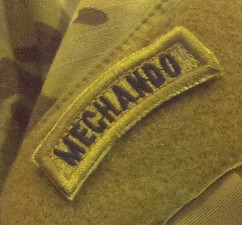
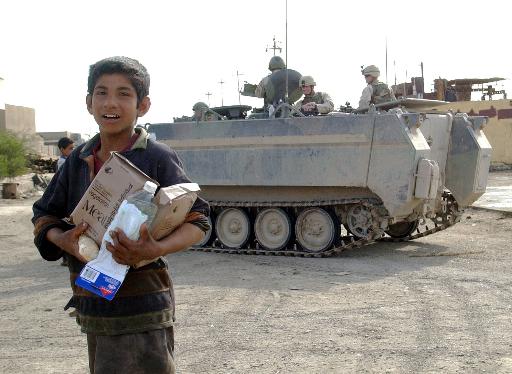
Its highly likely after the American occupation racket of Iraq/Afghanistan is over, that the U.S. military bureaucracy will revert back to "From Here to Eternity" garrison games and lusting for linear Nation-State Wars (NSW) as Iraq/Afghanistan are chalked up as "another Vietnam"; a non-linear conflict we couldn't sort out in our heads and come up with a winning strategy (CONOPS).
Dedicated Stability Force with Moral Compass
At some point, America will have to fight again to overthrow an enemy country and if we do not figure out how to create a friendly government in its aftermath, our nation-state foes will take a time-out, let us take the capital city and then proceed to defeat us with an insurgency/rebellion/guerrilla war. To prevent us from botching the aftermath of a nation-state war, we propose a Non-Linear Battlefield or Sub-National Conflict Stability Corps (NLB-SC OR SNC-C) filled by 50, 000 active-duty volunteers from all the armed services but would report directly to the President of the U.S. and get funding directly from Congress. Another option would be to designate 3 mid-west National Guard divisions full of hopefully more mature 25-40 year olds not involved in border security missions to be the NLB-SC OR SNC-C. Retired Army Colonel Robert Killebrew proposes we should have formed a "MACV-Iraq" (Military Assistance Command after Victory, we keep the "V" in there because it sounds better and salutes the Vietnam MACV and reminds the listener of the past precedent) during the planning phase leading up to the Iraq invasion, securing from Congress the necessary funds and authority to reconstitute the Iraqi Army, police and government. A "MACV-Iraq" could insist on using older NG troops, armored tracks (M113 Gavins are plentiful) IF the people putting the MACV-Iraq together are WISE. There's no guarantee that a kill/capture nation-state mentality staff like CENTCOM would do any better setting up a MACV-Iraq then it did doing "Phase IV" planning this last time, but its an idea worth considering.
The following articles show the pitfalls of taking the garrison Army/marine general's lawn care Soldiers and giving them guns in a foreign land. The articles below offer yet more proof that we need a Non-Linear Battlefield Stability Corps composed of older NG or screened-beforehand active-duty Soldiers in ARMORED TRACKS who understand civilian life to do COIN/SASO not active duty prove-their-manhood, young, dumb-and-full-of-you know-what, types walking on foot and in vulnerable Humvee trucks who are obsessed with kill/capture and have no idea what civilian life is about because they play "From Here to Eternity" garrison make-believe 24/7/365. KEY QUOTE:
"Wood said the decreasing dependence on reservists is counterintuitive. They believe aggressive operations by combat-centric Soldiers have escalated a primarily political battle that requires a vast amount of non-combat skills."
Atlanta Journal-Constitution
July 30, 2006
Pg. 1After The 48th: Iraq Conflicts Heighten
Are civilian or combat skills most needed?
By Moni Basu and Ron Martz
Soon after Doraville's police chief, Lt. Col. John King, arrived with his Soldiers in Iraq's treacherous "Triangle of Death" last summer, they set about the civilian task of nation-building.
Within months, the Georgia Army National Guard's 48th Brigade Combat Team began earning trust from the residents in Mahmudiyah, a small, rural town 45 minutes south of Baghdad that had become notorious for insurgent attacks and criminal activity.
The Citizen-Soldiers knew that the key to their success would be their ability to nurture relationships with the Iraqi people.
"They were telling us where the bad guys were, where the IEDs [land mines, or makeshift bombs] were put in so that we could destroy them instead of hitting them," said Brig. Gen. Stewart Rodeheaver, commander of the 48th Brigade.
But, after just five months on the job, the [active-duty] Army replaced the Georgians in Mahmudiyah and southwest Baghdad. [EDITOR: the active duty garrison Army full of egomaniacs wanting young gullible people to order around to do kill/capture "lawn care" envies the NG and is quick to stab it in the back if it starts doing well and in their insecure minds threatens their job security somehow]
Brigade officers found themselves handing over control to the 101st Airborne Division, the storied regular Army unit out of Fort Campbell, Ky., that has a well-respected history dating back to the beaches of Normandy.
What happened after the 101st Airborne units moved in, however, has raised questions among military analysts about what type of combat unit is best suited for Iraq.
The 48th Brigade's 1st Battalion of the 108th Armor Regiment, a unit that had roughly 800 Soldiers, suffered 6 deaths in the Mahmudiyah area -- three of them from non-combat vehicle accidents. By comparison, the two 101st battalions of about 1,400 Soldiers patrolling the same area have been hit hard, losing 35 Soldiers in eight months.
Additionally, U.S. military officials have opened investigations into two incidents involving 101st Airborne Soldiers and the deaths of Iraqi civilians, one of them in the Mahmudiyah area.
It would be impossible to pinpoint exactly why violence has escalated in Mahmudiyah since the 48th's departure. Both the U.S. military and the insurgents are known to commonly change tactics in Iraq's war of one-upmanship. And in recent months, spiraling sectarian violence has contributed to the chaos.
But as the United States tries to shift more of the burden for Iraq's defense onto the Iraqi army and police, some have questioned whether reservists -- part-time Soldiers who are generally older and bring more life experience to their military jobs -- are more appropriate than their regular military counterparts for a counterinsurgency mission.
"I think by the nature of the beast, most National Guard forces are better in what actually needs to be done," said Piers Wood, a retired lieutenant colonel whose 28 years in the Army included duty in the Vietnam War.
"The last person who should be running a town and having meetings with the mayor is a West Point colonel. Not because he's not bright--but because nowhere along the line have they developed the requisite [life] skills for running a municipality or understanding what goes on in an economy," said Wood, a senior fellow at Globalsecurity.org, a Washington-area military watchdog organization.
King said the skill sets his Soldiers brought to the combat zone were essential.
"The fact that my guys are older has a lot of resonance in the Arab community because they respect age and maturity," he said. "All the experience the Georgia Guard has gotten on dealing with national disasters and dealing with chiefs of police and local mayors -- my brothers in active duty don't get those opportunities."
War not all about fighting [kill/capture]
Military officials won't say why the 48th Brigade was replaced less than halfway into its deployment. But there was concern within the National Guard and Congress that Citizen-Soldiers were bearing too much of the load in Iraq.
At one point last year, U.S. troops in Iraq drew 40 percent of their numbers from the National Guard and Army Reserve. The Department of Defense estimates that now has dropped to 20 percent.
Wood said the decreasing dependence on reservists is counterintuitive. They believe aggressive operations by combat-centric Soldiers have escalated a primarily political battle that requires a vast amount of non-combat [life] skills.
"In a counterinsurgency, aggression just gets you deeper in trouble," Wood said. "You are going to create more enemies than you are able to kill."
U.S. military officials are developing a new counterinsurgency manual, the first in more than 20 years, designed to aid troops fighting in Iraq and Afghanistan.
A draft copy of the manual was posted recently on the Web site of the Federation of American Scientists, an organization that researches issues of global security and nuclear arms control. It appears to make the case that Iraq and Afghanistan require more nation-building skills to support the local government than combat skills.
Co-written by Lt. Gen. David Petraeus, who commanded the 101st Airborne on the initial invasion of Iraq and later led the training of Iraqi security forces, the manual indicates the U.S. military has forgotten the counterinsurgency techniques it learned in Vietnam.
In one section titled "The More Force Used, the Less Effective It Is", the co-authors write, "The more force applied, the greater the chance of collateral damage and mistakes. It also increases the opportunity for insurgent propaganda to portray lethal military activities as brutal. The precise and discriminate use of force also strengthens the rule of law that needs to be established."
Officials with the 101st in Iraq declined to answer questions about the division's tactics and procedures. Maj. Frank Garcia, spokesman for the 101st in Baghdad, said in an e-mail response to questions that he could not comment on such issues "due to the sensitivities of the ongoing investigations in our area."
Military officials are looking into an incident involving 101st Soldiers --4 Soldiers still with the division and one former GI. They are accused of rape and murder in the death of a teenage girl in the Yusufiyah area, near Mahmudiyah, in March, and of then burning her body and killing three members of her family to conceal the crime. If convicted, all could face the death penalty. A fifth Soldier has been charged with dereliction of duty for alleged failure to report what happened.
The Army has charged three 101st Soldiers in connection with the killing of three Iraqi men in custody near Samarra.
The investigations and casualties have taken their toll on the 101st, whose Soldiers were among the first to parachute behind enemy lines on D-Day -- heroics recounted in historian Stephen Ambrose's book Band of Brothers.
Cal Posner, a Marietta man who served in Vietnam with the 101st and is now the secretary of the Georgia chapter of the 101st Airborne Division Association, called the recent drumbeat of bad news "discouraging."
He said the young Soldiers are trained to fight, not to be ambassadors or policemen. [EDITOR: THEN DON'T FUCKING HAVE THEM DO COIN/SASO OPERATIONS! Get their garrison generals to stop saying "any Soldier can do COIN/SASO, we have to be able to operate across the whole spectrum of conflict" etc. etc. If generals want their nation-state war units to be able to do COIN/SASO THEN BUILD THE MATURITY IN TO DO SO (stop garrison BS)--OR STOP TRYING TO DO THE MISSION].
"I'm surprised things haven't started happening on a larger scale," he said. "That speaks well of the leadership that it hasn't."
Still, given the pervasive bloodshed in Iraq, some military analysts interviewed for this article argued that well-honed combat skills override all else.
Retired Army Gen. Barry McCaffrey praised the efforts of the 48th Brigade as a "capable force for peacekeeping missions" but said the 101st Airborne was sent into the Mahmudiyah area with the objective of quelling the violence.
"There was a widespread belief that we had to break up insurgency havens, including south of Baghdad, to make sure we did not end up with open rebellions," said McCaffrey, a highly decorated Vietnam veteran and now a consultant and West Point professor who has been critical of the Bush administration's handling of Iraq. "So the 101st had a different mission than the 48th."
But that did not exempt the 101st Soldiers from picking up the non-combat missions the 48th Brigade left behind. They, like other Army units, were required to deal with local leaders and their problems.
Overall violence up
Officers of the 48th said their replacements have not been able to continue the nation-building gains the brigade made.
"It was calming down when we left," Rodeheaver, the 48th commander, said of the Mahmudiyah area. "It seems to have intensified in the last few months."
Overall violence soared in Iraq after the February bombing of a major mosque in Samarra fueled anger between Sunnis and Shiites. But Rodeheaver also said the 101st has suffered because it is a light infantry unit that does not have the heavy tanks and Bradley Fighting Vehicles that the 48th Brigade used. And, said Rodeheaver, the Iraqi people may not have taken to the 101st Soldiers.
He said the biggest challenge for the 101st was that they had to start from scratch in building trust with the local Iraqis.
"I think the Iraqi people don't have a relationship with the American Army -- they have a relationship with the people they meet," Rodeheaver said.
He added that the 101st Soldiers might have been targeted specifically because of their participation in the 2003 invasion and its aftermath.
Iraqis, said journalist and Middle East expert Sandra Mackey, live in the most tribal of Arab societies and have long memories. The sheiks and town leaders Rodeheaver dealt with remembered the Eagle patch worn on the left arm by 101st Soldiers when the unit was forced to take much more aggressive battlefield action in the first months of the war.
"Revenge is a very, very powerful motivation in Arab society," said Mackey, who spent time in Iraq researching her book The Reckoning: Iraq and the Legacy of Saddam Hussein.
Rodeheaver said it was not easy to earn the trust of Iraqis in the Mahmudiyah area. He and his officers attended local council meetings and spent hours chatting with sheiks.
Within a few months of the brigade's departure, insurgents started to pick off key Iraqi leaders whom the 48th Soldiers had worked with in Mahmudiyah. The city's mayor and a popular Iraqi Army battalion commander were assassinated, and a police official was killed by a roadside bomb, King said.
Recently, gunmen killed at least 50 people, mostly Shiites, in a brutal attack on the market in Mahmudiyah.
Based on the increased insurgent attacks in that area, King said he suspects "there was not a lot of progress" diplomatically between the 101st and Sunni tribes after the Georgians left.
"There were a lot of attacks out there and air assaults and things like that," King said of the U.S. military's efforts to wipe out the insurgency. "But I don't know if we really went down there and put the economic and political might of the American Army behind changing attitudes."
Staff writer Jeremy Redmon and The Associated Press contributed to this article.
Here is a WSP story of a young active duty punk full of emotional scores to settle going over to Iraq and being an ugly American gunman/asshole.
Washington Post
July 30, 2006
Pg. B1"I Came Over Here Because I Wanted To Kill People"
By Andrew Tilghman
"I came over here because I wanted to kill people."
Over a mess-tent dinner of turkey cutlets, the bony-faced 21-year-old private from West Texas looked right at me as he talked about killing Iraqis with casual indifference. It was February, and we were at his small patrol base about 20 miles south of Baghdad. "The truth is, it wasn't all I thought it was cracked up to be. I mean, I thought killing somebody would be this life-changing experience. And then I did it, and I was like, 'All right, whatever.'"
He shrugged.
"I shot a guy who wouldn't stop when we were out at a traffic checkpoint and it was like nothing," he went on. "Over here, killing people is like squashing an ant. I mean, you kill somebody and it's like 'All right, let's go get some pizza.' "
At the time, the Soldier's matter-of-fact manner struck me chiefly as a rare example of honesty. I was on a nine-month assignment as an embedded reporter in Iraq, spending much of my time with grunts like him --mostly young (and immature) small-town kids who sign up for a job as "killers", lured by some gut-level desire for excitement and adventure. This was not the first group I had run into that was full of young men who shared a dark sense of humor and were clearly desensitized to death. I thought this Soldier was just one of the exceptions who wasn't afraid to say what he really thought, a frank and reflective kid, a sort of Holden Caulfield in a war zone.
But the private was Steven D. Green.
The next time I saw him, in a front-page newspaper photograph five months later, he was standing outside a federal courthouse in North Carolina, where he had pled not guilty to charges of premeditated rape and murder. The brutal killing of a 14-year-old Iraqi girl and her family in Mahmudiyah that he was accused of had taken place just three weeks after we talked.
When I met Green, I knew nothing about his background -- his troubled youth and family life, his apparent problems with drugs and alcohol, his petty criminal record. I just saw and heard a blunt-talking kid. Now that I know the charges against Green, his words take on an utterly different context for me. But when I met him then, his comments didn't seem nearly as chilling as they do now.
Maybe, in part, that's because we were talking in Mahmudiyah. If there's one place where a Soldier might succumb to what the military calls "combat stress," it's this town where Green's unit was posted on the edge of the so-called "Triangle of Death", for the last three years a bloody center of the Sunni-led insurgency. Mahmudiyah is a deadly patch of earth that inspires such fear, foreboding and uneasiness that my most prominent memory of the three weeks I spent there was the unrelenting knot it caused in my stomach.
I was nervous even before I arrived. Although Mahmudiyah is only a 15-minute drive from the heavily fortified Green Zone in Baghdad, I was taken there by helicopter. Military officials didn't want to risk my riding in a truck that might be hit by a roadside bomb. I'd chosen to go to Mahmudiyah because I wanted to be on the front lines of the war and among the troops fighting it. [EDITOR: there are no "lines" on the NLB]
When I arrived in February, Green's battalion -- the 101st Airborne Division's 502nd Infantry Regiment -- was losing an average of about one Soldier per week. Whenever I asked how many of the nearly 1,000 troops posted there had been killed so far, most Soldiers would just frown and say they'd lost count.
Danger was everywhere. Inside the American base camps, mortar shells fell almost daily. In the towns where U.S. forces patrolled, car bombs were a constant threat. On the rural roads, the troops kept watch for massive artillery rounds hidden under piles of trash that could shred the engine block of an armored Humvee and separate a driver's limbs from his torso. [EDITOR: shouldn't be "presence patrolling" in anything least of all Humvee trucks]
Wheeled Trucks Unsound for Combat--Especially Non-Linear War
www.youtube.com/view_play_list?p=3F7FFB8E9FF9355F
About a month before I arrived at Green's base -- an abandoned potato-packing plant lined with 20-foot concrete walls -- the Soldiers there fought off a full-blown assault that rallied dozens of insurgents in a show-of-force almost unheard of for a shadowy enemy that typically avoids face-to-face combat. It took more than an hour to quell the attack of gunfire and rocket-propelled grenades coming from all sides of the camp.
Morale took another nosedive soon after, when the hastily rigged electrical wiring system caught fire and burned down the Americans' living quarters. The Soldiers watched as the early-morning blaze destroyed all reminders of home: the family photographs, the iPods and the video games that provide brief escapes from combat. When I got there a week later, a chow-hall storage room, packed with radios and satellite maps, was serving as the base command center. The sergeants were still passing out toothbrushes and clean socks to the young troops who had lost everything.
The company commander in charge of Green's unit told me that the situation was so stressful that he himself had "almost had a nervous breakdown" and had been sent to a hotel-style compound in Baghdad for three days of "freedom rest" before resuming his command.
And yet despite the horrific conditions in which they were daily being tested, I found extraordinary camaraderie among the Soldiers in Mahmudiyah. They were among the friendliest troops I met in Iraq.
Green was one of several Soldiers I sat down with in the chow hall one night not long after my arrival. We talked over dinner served on cardboard trays. I asked them how it was going out there, and to tell me about some of their most harrowing moments. When they began talking about the December death of Sgt. Kenith Casica, my interview zeroed in on Green.
He described how after an attack on their traffic checkpoint, he and several others pushed one wounded man into the back seat of a Humvee and put Casica, who had a bullet wound in his throat, on the truck's hood. Green flung himself across Casica to keep the dying Soldier from falling off as they sped back to the base.
"We were going, like, 55 miles an hour and I was hanging on to him. I was like, 'Sgt. Casica, Sgt. Casica.' He just moved his eyes a little bit," Green related with a breezy candor. "I was just laying on top of him, listening to him breathing, telling him he's okay. I was rubbing his chest. I was looking at the tattoo on his arm. He had his little girl's name tattooed on his arm.
"I was just talking to him. Listening to his heartbeat. It was weird --I drooled on him a little bit and I was, like, wiping it off. It's weird that I was worried about stupid [expletive] like that.
"Then I heard him stop breathing," Green said. "We got back and everyone was like, 'Oh [expletive], get him off the truck.' But I knew he was dead. You could look in his eyes and there wasn't nothing in his eyes. I knew what was going on there."
He paused and looked away. "He was the nicest man I ever met," he said. "I never saw him yell at anybody. That was the worst time, that was my worst time since I've been in Iraq."
Green had been in country only four months at that point, a volunteer in a war he now saw as pointless.
"I gotta be here for a year and there ain't [expletive] I can do about it," he said. "I just want to go home alive. I don't give a [expletive] about the whole Iraq thing. I don't care.
"See, this war is different from all the ones that our fathers and grandfathers fought. Those wars were for something. This war is for nothing."
A couple of days later, I ran into Green again, and he invited me to join him and another Soldier in a visit to the makeshift tea room run by the Iraqi Soldiers who share the base with the American troops. It was after dusk, and the three of us walked across a pitch-black landing zone and into a small plywood-lined room where a couple of dozen barefoot Iraqi Soldiers were sitting around watching a local news channel.
"Hey, shlonek," Green said, offering a casual Arabic greeting with a smile and a sweeping wave as he stepped up to the bar. He handed over a U.S. dollar in exchange for three Styrofoam cups of syrupy brown tea.
Green knew a few words of Arabic, and along with bits of broken English, some hand gestures and smiles, he joked around with the Iraqis as he sipped their tea. Most U.S. Soldiers didn't hang out on this side of the base with the Iraqis.
I asked Green whether he went there a lot. He did, he said, because he liked to get away from the Americans "who are always telling me what to do."
"These guys are cool," he said, referring to the Iraqis.
"But," he added with a shrug, "I wouldn't really care if all these guys got waxed."
As we talked, Green complained about his frustration with the Army brass that urged young Soldiers to exercise caution even in the most terrifying and life-threatening circumstances. [EDITOR: "glass jaw" infantry on foot and in vulnerable wheeled trucks expected to "turn-the-other-cheek"]
"We're out here getting attacked all the time and we're in trouble when somebody accidentally gets shot?" he said, referring to infantrymen like himself throughout Iraq. "We're pawns for the [expletive] politicians, for people that don't give a [expletive] about us and don't know anything about what it's like to be out here on the line."
The Soldiers who fought alongside Green lived in conditions of near-constant violence -- violence committed by them, and against them.
Even in my brief stay there, I repeatedly encountered terrifying attacks. One night, about a mile from Green's base, a roadside bomb exploded alongside the vehicle I was riding in, unleashing a deafening crack and a ball of fire. In most places in Iraq, Soldiers would have stopped to investigate. In the "Triangle of Death", however, we just plowed on through the cloud of smoke and shower of sparks, fearing an ambush if we stopped. Fortunately, the bomb was relatively small, its detonation poorly timed, and the Soldiers all laughed about it moments later. "Dude, that was [expletive] awesome," the driver said after making sure no one was hurt.
A few days later, I was standing outside chatting with an officer about the long-term legacy of the Vietnam War when a rocket came whistling down and struck the base's south wall. A couple of days after that, a mortar round blew up a tent about 20 feet from the visitors' tent that I called home. [EDITOR: NO MORE TENTS! LIVE IN FORTIFIED BATTLEBOXES!]
My experience, however, was nothing compared with that of Green and the other young men of his Bravo company who spent months in the "Triangle of Death".
In the end, I never included Green's comments in any of the handful of stories I wrote from Mahmudiyah for Stars and Stripes. When he said he was inured to death and killing, it seemed to me -- in that place and at that time -- a reasonable thing to say. While in Iraq, I also saw people bleed and die. And there was something unspeakably underwhelming about it. It's not a Hollywood action movie -- there are no rapid edits, no adrenaline-pumping soundtracks, no logical narratives that help make sense of it. Bits of lead fly through the air, put holes in people and their bodily fluids leak out and they die. Those who knew them mourn and move on.
But no level of combat stress is an excuse for the kind of brutal acts Green allegedly committed. I suppose I will always look back on our conversations in Mahmudiyah and wonder: Just what did he mean?
Andrew Tilghman was a correspondent in Iraq for the military newspaper Stars & Stripes. He lives in Houston.
NLB-SC OR SNC-C will not buy into GWOT Fantasies, only do necessary missions
However, the NLB-SC OR SNC-C will also not be politically naive and be pliable pawns to corrupt politicians like the Bush administration PNAC loonie-cons (Neocons) who buy into the patronizing Leo Strauss BS that they are a Nazi fascist, God-is-actually-dead "elite" who must steer an underclass of rank/file America with national mythology (lies) and religious lies to keep the nation-state together. America IS a great nation because our founding fathers and men who thought like him have believed in TRUTHS like all men are created with equal, high value and have a God-given (means he actually exists, Straussian fucks) RIGHT to life, liberty and the pursuit of happiness. No one is above the law, which is based on Judeo-Christian truths higher than men; the PNAC think-tank loonie-con Bush administration should be impeached immediately before they stage another 9/11 attack (first 9/11 attacks may have been an U.S. instigated "Reichstag fire") to suspend the U.S. Constitution so they can stay in illegitimate power. The NLB-SC OR SNC-C will carefully consider missions given to it and report back to Congress if something is amiss like the current "Global War on Terror" (GWOT) fantasy the loonie-cons have constructed for themselves to seize power and maximize (military, industrial, congressional complex and think tanks) MICC-TT war profits using a new "bogeyman" (Islam-or-else by gunpoint) to replace the old Soviet "Evil Empire" bogeyman. The NLB-SC OR SNC-C will not support MICC-TT war profiteers by buying RMA firepower junk. Maybe the REAL reason DoD/military/Congress/Think Tanks don't want a quality U.S. military that can MANEUVER is because it would quickly round up the Taliban, get OBL and his loud mouth side-kick, eliminating the "boogie men" needed to keep their huge war profits going? Why stop the GWOT when its all you got (any maybe you started the GWOT in the first place, too)?
Its high time the American people demand RESULTS: DISBAND THE CIA who created the Osama Bin Laden and his madman doctor Z "bogeymen" and the traitors who instigate 9/11 False Flag Attacks (FFAs) to foment wars-for-corporate-profits---Nazi neocons arrested for treason; starting with Bush/Cheney.
newscentralasia.com/modules.php?name=News&file=article&sid=837
News: The U.S. Military-Industrial Complex Benefits Hugely from Islamic ExtremismDr. Gideon Polya
At this point in the global "war on terror" it is useful to see how the two sides are faring - in terms of "body count" the U.S. and its close allies are winning hands down. We could logically begin our tally in 1983 with the bombings that killed some 200+ U.S. marines and some 60 French paras in Beirut. Over 2 decades of "terror" the military and civilian dead of the U.S. and its First World allies in war and terrorist violence total about 7000, the main contributors being the Beirut bombings, the Gulf War, the African embassy bombings, Israelis in Israel and neighbouring territories, 9/11, Bali, Madrid and the invasions and occupations of Afghanistan and Iraq.
Remarkably, total U.S. military "hostile deaths" in combat were only 676 for the period 1980-2002 (U.S. Census Bureau) and about 650 so far in the invasion and occupation of Iraq. Total Coalition military casualties in Iraq come to about 1100, including both non-combat and "hostile deaths". These deaths are dwarfed by total U.S. military deaths in the period 1980-1998 of 10, 900 out of total personnel over that period of 27.5 million - with all but a few percent of these deaths being non-combat and due to accidents, suicide, homicide and illness (Atlas of Injuries in the U.S. Armed Forces).
Of course the non-combat deaths of the U.S. military since 1980 (about 11,000) are in turn dwarfed by the ANNUAL deaths in the U.S. due to car accidents (over 40,000) and due to cigarette-smoking-related causes (over 400,000). The ANNUAL deaths world-wide due to car deaths total about 1 million and those due to cigarette smoking total about 5 million (WHO). These immense statistics surely indicate that we really need a "war on cars" (e.g. no urban private cars, free public transport and taxis only for emergencies, with consequent massive greenhouse gas reduction and health benefits) and a "war on smoking" (e.g. a complete prohibition of cigarettes, corporate compensation for victims worldwide and "economic war crimes trials" for the mainly U.S. and UK tobacco corporations).
Turning to the other side of the "war on terror", we can assess casualties in the Muslim world as a result of war and occupation by the U.S., the UK, Israel and their principal First World allies such as Australia. However, as seen with the casualties in the U.S. military, only a small proportion of deaths in conflict are due directly to violence - most deaths occur from other causes. A useful way of assessing avoidable mortality is to calculate "excess mortality", which is the difference between the ACTUAL deaths in a country over a given period and the deaths EXPECTED in a decently-run, peaceful country with the same demographics.
Using United Nations Population Division data for the period from 1950 to the present, it has been possible to calculate "excess mortality" for every country over the last half century. In order to compare different countries and regions it is useful to express the post-1950 "excess mortality" as a percentage of the present population, this giving an estimate of how many people died AVOIDABLY in a country for every 100 people alive in that country today. Thus total. post-1950 "excess mortality" has been 0.1 million in Israel, giving an "excess mortality" score of about 2% i.e. since 1950 2 Israelis died avoidably for every 100 alive today. In contrast, since 1950 the "excess mortality" has been 0.7 million in the rest of Palestine, giving a "score" of 18% i.e. 18 non-Israeli Palestinians have died avoidably since 1950 for every 100 alive today in the Occupied Palestine Territories.
Post-1950 "excess mortality" for Arab countries with which Israel has been at war are sobering ("excess mortality" in millions; "excess mortality" percentage score also given in parenthesis): Egypt (20; 27%); Iraq (5; 20%); Jordan (0.6; 11%); Lebanon (0.5; 14%); Occupied Palestinian Territories (0.7; 18%); and Syria (2; 12%). The total post-1950 "excess mortality" of Israel's immediate Arab neighbours has totalled about 24 million. The "excess mortality" in the Occupied Palestinian territories has totalled 340,000 since occupation by Israel in 1967.
Other First World powers have variously been involved with the Arab and Muslim worlds over the last half century and before 1950. Early conflict at the interface of the Muslim and European Christian worlds occurred during the Crusades to Palestine; in Spain and culminating in the expulsion of Muslims and Jews; in conflict in Eastern Europe between the Turks and the Austro-Hungarian Empire; in Russian wars with the Turks and with the peoples of the Caucasus and Central Asia; and Western European colonization of Africa, South Asia and South East Asia. The Anglo-American push East of Suez into the Middle East and Central Asia began in earnest in 1914 (British invasion of Iraq), accelerated with the discovery of oil in the Persian Gulf and is presently poised dramatically after the recent Anglo-American invasion and occupation of Iraq and Afghanistan.
The result of horrendous colonial occupations and malignant, violent, neo-colonial involvements by the European First World countries has been an appalling post-1950 "excess mortality" (avoidable mortality) of 1.2 billion in the non-European world, about 1 billion in the Third World and about 0.5 billion in the Muslim world. However the "mainstream" Anglo-American media steadfastly IGNORE both the Third World and Muslim Holocausts, support violently-maintained U.S. hegemony and demonize those who oppose the new colonialism. Indeed the power, transparent dishonesty, aggressiveness and pathological narcissism (psychotic self-love) of the present U.S. administration is such that in general any adverse comment, even from Third World, Muslim or "dissident" First World countries, is very muted indeed.
In contrast to the Third World Holocaust and the Muslim Holocaust (ignored by global media), the crimes of Islamic extremists, notably the murder of innocent First World civilians (total deaths now 5000), are reported daily and hysterically, leading to endangerment of basic human rights in the Anglo-American world and providing "excuses" for immensely destructive wars against Iraq (post-1991 "excess mortality" 1.5 million) and Afghanistan (post-2001 "excess mortality" 1.2 million).
Resistance to increasing U.S. domination of the world, including the Muslim world, has come from "secular" Muslim regimes (notably those of Libya, Syria, Malaysia and pre-occupation Iraq) and vociferously from theocratic, fundamentalist Muslim Iran. While the U.S. backed the extremist Muslim Taliban against the Russians in Afghanistan, they subsequently fell out, with the mutual hatred being cemented by the 9/11 atrocity of the Taliban-supported Al-Qaeda and the subsequent U.S. invasion of Afghanistan. Conversely, the U.S. backed the "secular" Iraqis against the fundamentalist Muslim Iranians in the Iran-Iraq War but the invasion and occupation of Iraq, together with uncritical U.S. support for Israel's conduct in the Occupied Palestinian Territories, [EDITOR: Israel no longer occupies these areas, is only there now because militrants kidnapped an IDF Soldier] has evidently boosted Islamic extremism and threat to First World civilians. However the consistent "winner" in all of this has been U.S. global power and the U.S. military-industrial complex.
What are the connections between "excess mortality" in the Muslim world (or the conditions that give rise to it) and the growth of religious extremism? Religious faith in general is of great help to many in difficult circumstances and it is no coincidence that Islam is rapidly expanding in the high "excess mortality" region of non-Arab Africa. Islamic evangelism over the last 2 decades has also been directed to converting "nominal" Muslims into more actively practising, fundamentalist Muslims. However some have recognized this fundamentalist Muslim "constituency" as the basis for political programs leading to "Islamic States" (such as the Iranian theocracy) and violent Muslim extremists and jihadists have evidently recognized the global Muslim fundamentalists as a source of recruitment for violent, global action against the First World, notably the U.S. and its close supporters.
While desperate poverty (and consequent "excess mortality") explains Islamic conversion in Africa, fundamentalist political activism and thence violent, extremist jihadism derive from ideological education rather than poverty as such. Thus the Taliban military and political force arose out of fundamentalist Muslim schooling and was supported by similarly ideologically-schooled Pakistani military and security personnel; the 9/11 perpetrators were mostly highly educated, professional Saudis; the Al-Qaeda leader is a multi-millionaire from a Saudi family worth billions of dollars; and Saudi Arabia has a relatively low "excess mortality".
However judging by their passionate public statements, knowledge and experience of poverty and injustice suffered by Muslims throughout the world has clearly motivated both fundamentalist political activists and jihadists. To that extent, a "war on poverty" makes vastly more practical sense than the "war on terrorism" as presently conducted - thus the Bush invasion of Iraq was absurdly directed against a major opponent of Muslim fundamentalism and jihadism, has seriously damaged the reputation of the U.S., has caused massive mortality in Iraq and has increased anger throughout the Muslim world over the violence and injustice of this continuing 14-year war against a ravaged Muslim country.
Naturally ruling establishments in Muslim countries (mostly authoritarian) would want to retain power and thus to varying degrees have opposed the Islamic extremists of both the political and jihadist kinds - pre-occupation Iraq, Egypt, Saudi Arabia, Algeria and Uzbekhistan being well known examples. In South East Asia, the democratic countries of Malaysia (prosperous, low "excess mortality") and Indonesia (poor, high "excess mortality") have similarly attempted to constrain both political and jihadist extremists.
If killing people is a measure of "success" in the "war on terror", then the Islamic extremists have been extraordinarily unsuccessful. However the brutality of jihadist efforts directed against First World civilians (with some 5000 victims over 20 years) has been hysterically and selectively reported by First World media and has thus provided the dishonest and untruthful "excuses" for rampant U.S. imperialism with the consequent deaths of millions in Iraq and Afghanistan.
Thanks to the jihadists, an aggressive, narcissistic and violent US now dominates the world. The U.S. military-industrial complex has been doing marvellously since 9/11 and U.S. military expenditure is now at a record U.S. $400 billion per year. The U.S. has a long record of supporting terrorism (e.g. see "Inside the Company: CIA Diary" by former CIA agent Philip Agee) and has massively backed violence by both secular Muslim dictators (e.g. Hussein and Suharto) and by Islamic extremists (in Afghanistan). Since they have profited so immensely from Islamic extremism it is not unreasonable to suspect that the U.S. military-industrial complex and the present corporate-linked and imperialist U.S. administration have been facilitating jihadist activity - indeed the continuing, appalling mass mortality in occupied Iraq and Afghanistan is clearly doing exactly that.
About the author: Dr Gideon Polya of Melbourne, Australia published some 130 works in a 4-decade scientific career including the pharmacological reference text "Biochemical Targets of Plant Bioactive Compounds" (Taylor & Francis/CRC Press, London & New York, 2003).
If you want to further understand what's going on today, watch these BBC videos ONLINE for free. Reviewers have said: "One of the best documentaries of recent times."
3-Part Video: The Power Of NightmaresThis film series explores the origins in the 1940s and '50s of Islamic Fundamentalism in the Middle East (Egyptian Sayyid Qutb), and Neoconservatism (Leo Strauss) in America, parallels between these movements, and their effect on the world today. From the introduction to Part 1: "Both [the Islamists and Neoconservatives] were we-know-the-truth-you-don't, idealists who were born out of the failure of the liberal dream to build a better world. And both had a very similar explanation for what caused that failure. These two groups have changed the world, but not in the way that either intended. Together, they created today's nightmare vision of a secret, organized evil that threatens the world. A fantasy that politicians then found restored their power and authority in a disillusioned age. And those with the darkest fears became the most powerful." The Power of Nightmares has been broadcast over three nights from Tuesday 18 to Thursday, 20 January, 2005 at 2320 GMT on BBC Two. The final part has been updated in the wake of the Law Lords ruling in December that detaining foreign terrorist suspects without trial was illegal.
Should we be worried about the threat from organised terrorism or is it simply a phantom menace being used to stop society from falling apart? In the past our politicians offered us dreams of a better world. Now they promise to protect us from nightmares. The most frightening of these is the threat of an international terror network. But just as the dreams were not true, neither are these nightmares. In a new series, the Power of Nightmares explores how the idea that we are threatened by a hidden and organised terrorist network is an illusion. It is a myth that has spread unquestioned through politics, the security services and the international media.
The rise of the politics of fear begins in 1949 with two men (Sayyid Qutb and Leo Strauss) whose radical ideas would inspire the attack of 9/11 and influence the neo-conservative movement that dominates Washington. Both these men believed that modern liberal freedoms were eroding the bonds that held society together. The two movements they inspired set out, in their different ways, to rescue their societies from this "decay". But in an age of growing disillusion with politics, the neo-conservatives turned to fear in order to pursue their vision. They would create a hidden network of evil run by the Soviet Union that only they could see. The Islamists were faced by the refusal of the masses to follow their dream and began to turn to terror to force the people to "see the truth"'.
BBC News: Watch the complete BBC documentary:
The Power of Nightmares Part I: Baby It's Cold Outside http://johnmccarthy90066.tripod.com/id417.html
OBSERVATIONS:
Lawn care self-absorption non-sense in 1950s America similar to garrison U.S. Army/marine officers, both (militant Islam) Sayyid Qutb and (neocons/looniecons) Leo Strauss tell their people lies to create fear/insecurity to yield to them power as faith in nation-states due to bureaucracy erode.
The Power of Nightmares Part II: The Phantom Victory
http://johnmccarthy90066.tripod.com/id418.html
The Power of Nightmares Part III: The Shadows In The Cave
http://johnmccarthy90066.tripod.com/id419.html
The NLB-SC OR SNC-C would NOT be organized around the corrupt UCMJ or the narcissistic egomaniac blind obedience culture of the current charge-the-machine-guns-head-on-and-be-a-flag-draped-coffin-or-hero U.S. military. The Commander of the NLB-SC OR SNC-C will have the power to say "NO" to the President of the U.S. and Secretary of Defense if they order him to do foolish things like not rehire the Iraqi military as we promised if they didn't fight us when taking Baghdad. The NLB-SC OR SNC-C will be a force with a MORAL COMPASS and would set policy specifics within the parameters set for them because they would be the experts of what's possible and what's not. President of the United States (POTUS) says restore civil order, the NLB-SC OR SNC-C has the latitude to do what it takes to restore order by guiding principles like that as soon as possible the people should govern themselves. Details: www.reocities.com/airbornemuseum/nlmb.htm The NLB-SC OR SNC-C will have the TV, radio, telephone means to communicate to the nation-state's former regime Soldiers, policemen, government services employees and the FUNDS to rehire them immediately, as in THE NEXT DAY after U.S. forces topple the regime.
A Security/Training Force that is Discreet, Self-Reliant
The ranks of the NLB-SC OR SNC-C will be screened to insure none are narcissistic personality disorder egomaniacs who not only cannot adapt because they cannot admit to any failure, but who would look down on foreigners without ranks, badges and uniforms they wear and be likely to brutalize them. The NLB-SC OR SNC-C's specialty will be restoring order to a country by securing borders, eliminating road ambush risks, building walls, making it safe for NGO relief agencies by rapidly training/equipping new indigenous security forces etc. while living as discreetly as possible in rural locations using fortified ISO shipping container "BATTLEBOXes". They will be self-reliant through zero energy home means to not need hundreds of truck resupply convoys which invite rebel ambushes. Details: www.reocities.com/strategicmaneuver/battleboxes.htm
Losing the War of Words/Ideas; Lose the Sub-National War Against False Islamic Terrorists
Watch your words, for they become actions.
Watch your actions, for they become habits.
Watch your habits, for they become character.
Watch your character, for it becomes your destiny."
--American Proverb
Students of Conflict Thought
The NLB-SC OR SNC-C cadre would study 24/7/365 by geographic region the on-going human conflict thought patterns. All military foreign area officers would assist the NLB-SC OR SNC-C with email reports on their observations/trips of their dedicated region. All elements of the NLB-SC OR SNC-C cadre would meet regularly to improve their intervention plans. For example. OPLAN Mecca might be what if Saudi Arabia falls into chaos after a series of royal family assassinations; how do we restore order without using foreign non-Islamic troops? The cadre might conclude that U.S. NLB-SC OR SNC-C troops would secure infrastructure out of eyesight of the populace (airports, seaports, pipelines) while the rapid training team advises the Saudi National Guard to invoke marshal law until such time as a royal family member can be found to continue the monarchy.
The point here is the regional unified commands like CENTCOM don't give a flying F about any of their region's social ills, all they long to do is invade and kill/capture. Its a huge job for a single NLB-SC OR SNC-C to be ready for instability anywhere in the world, but since none of the trigger pullers want to prepare for these things, a general world-wide stability force that does prepare will be "good enough" compared to a "perfect" solution of a stability force in every regional unified command. We simply do not have the troops to have say a division of stability troops in USSOCOM, USCENTCOM, USEUCOM, USPACOM, USSOUTHCOM etc. Those that think the 10 divisions of U.S. Army kill/capture troops can fulfil the stability role will try to boast on Bosnia/Kosovo as proof they can do the job, but the debacle in Iraq shows in a more demanding, more violent situation with 3 warring factions ad hoc with the dumb jocks is not enough.
The NLB-SC OR SNC-C would not just study nation-states but the sub-national groups within these possibly failed states using their country as bases to launch attacks. Some may say, we have a "CIA" and a "DIA" full of foreign area analysts so we don't need the NLB-SC OR SNC-C with its own area analysts. We all know the CIA/DIA cabal doesn't work, whatever they learn NEVER reaches the DOERS. The best the CIA/DIA can do is get their stuff to decision-makers (Thinkers--we use this world loosely) and do some OSS direct actions on their own, like going to Afghanistan and bribing a bunch of people to ditch the Taliban. Some will say, "we have numbered Army Special Forces Groups aka Green Berets to be the DOERS". Wrong again. There's not enough 12-man A-Teams to cover the still very large planet earth's many troubled areas and if that area needs actual troops on the ground controlling things like infrastructure which can go on for hundred and thousands of miles, a small group of narcissists will not be able themselves to do the job or even be enough to rapidly train locals in sufficient quantity to secure the vast areas required. Basically the NLB-SC OR SNC-C is the realization that Civil Affairs Command turning to SF or conventional forces to be their "bouncers" as they coordinate NGO recovery efforts is either too small or big and very destructive. The SF is likely to be off on kill/capture glory missions and unavailable to train anyone as is the case today. Flooding unstable area with arrogant and all-the-comforts-of-home American nation-state war troops is a recipe for a rebellion to blossom. The NLB-SC OR SNC-C solves this by having the cultural skills of the SF but with the combat skills and size of a nation-state war force with the restraint of adult maturity.
The NLB-SC OR SNC-C would stay on top of the regional thoughts causing human conflicts there and should be tasked by the leaders of all the armed services for an "opinion" since the CIA/DIA are so messed up and lack the unique focus of the NLB-SC that whatever it learns is applied to how possible intervention actions are done. The NLB-SC OR SNC-C would stay on top of the Killer Words (KWs) and Dominant Strategic Ideas creating the conflicts in their world areas.
Words Become Actions: Killer Words
Know the actors: who is a "Freedom Fighter" and who is a "Terrorist" (criminal, murderer, sociopath)?
Excuses: Lies people use to try to justify the wrong things they do
Freedom Fighter: man who fights others denying him freedom to live, to get a geo-political situation where he can live in peace, and after he gets it, he puts his guns and bombs away
Terrorist: a criminal who enjoys killing and will never stop using guns and bombs until someone/something stops HIM. His manta: "We want no progress, no prosperity".
A retired officer caveats what a "Freedom Fighter" is willing to do or not do:
"Freedom fighters can be totally non-violent (like John Paul II as both a cardinal and pope or Hungarian Cardinal Windzenzy (mispelled), or popular icons like Gandhi). If they take up arms, they attack government personnel (preferably uniformed and armed) and government security facilities. They don't attack private civilians or civilian facilities, residential areas, schools, hospitals, religious facilities. They don't blow up cafes or shopping malls. They may wage war conventionally, as irregulars/insurgents, or slide between the two (remember our own Revolution and the Confederates in the War Between the States).
Terrorists deliberately attack "soft" targets to create popular terror. They are too weak and cowardly to attack the security organs or government officials, etc. They are always violent, and often have agendas that are so incoherent that they are essentially violent cults rather than violent political movements. Terrorists often resort to criminal behavior to gain money/resources/access, but they are fundamentally different. Criminals may not like having the law applied to them, but expect (implicitly) others to adhere to it; they may break laws, but consider themselves as good as any other citizens in most respects (remember the mafia helping the FBI during WWII, etc.). Terrorists are totally lawless, like pirates and brigands; they acknowledge no constraint on their quest for destruction and power. Some slide completely into nihilism (Sendero Luminoso, Japanese Red Army Faction, Abu Sayyaf). Others slide into criminal behavior with only a thin rhetorical veil of politico-babble (IRA, etc.). Some gain enough power to largely set aside terrorism for more legitimate power (MNLF in Philippines). Most but not all insurgents resort to terrorism as a tactic, but few incorporate it as a strategy for victory."
The following is an example of a terrorist who was NOT ever a "Freedom Fighter". Ben Works of SIRIUS writes:
Who was the Grand Mufti, Haj Muhammed Amin al-Husseini?Muhammed Amin al-Husseini [many spelling variations] was born in 1893 (or 1895), the son of the Mufti of Jerusalem and member of an esteemed, aristocratic family. The Husseinis were one of the richest and most powerful of all the rivalling clans in the Ottoman province known as the Judaean part of Palestine.
Amin al-Husseini studied religious law at al-Azhar University, Cairo, and attended the Istanbul School of Administration. In 1913 he went to Mecca on a pilgrimage, earning the honorary title of "Haj". He voluntarily joined the Ottoman Turkish army in World War I but returned to Jerusalem in 1917 and expediently switched sides to aid the victorious British. He acquired the reputation as a violent, fanatical anti-Zionist zealot and was jailed by the British for instigating a 1920 Arab attack against Jews who were praying at the Western Wall.
The first Palestine High Commissioner. Sir Herbert Samuel arrived in Palestine on July 1, 1920. He was a weak administrator who was too ready to compromise and appease the extremist, nationalistic Arab minority led by Haj Amin al-Husseini. When the existing Arab Mufti of Jerusalem (religious leader) died in 1921, Samuels was influenced by anti-Zionist British officials on his staff. He pardoned al-Husseini and, in January 1922, appointed him as the new Mufti, and even invented a new title of Grand Mufti. He was simultaneously made President of a newly created Supreme Muslim Council. Al-Husseini thereby became the religious and political leader of the Arabs.
The appointment of the young al-Husseini as Mufti was a seminal event. Prior to his rise to power, there were active Arab factions supporting cooperative development of Palestine involving Arabs and Jews. But al-Husseini would have none of that; he was devoted to driving Jews out of Palestine, without compromise, even if it set back the Arabs 1000 years. William Ziff, in his book "The Rape of Palestine," summarizes:
"Implicated in the [1920] disturbances was a political adventurer named Haj Amin al Husseini. Haj Amin, was sentenced by a British court to fifteen years hard labor. Conveniently allowed to escape by the police, he was a fugitive in Syria. Shortly after, the British then allowed him to return to Palestine where, despite the opposition of the muslim High Council who regarded him as a hoodlum, Haj Amin was appointed by the British High Commissioner as Grand Mufti of Jerusalem for life. [P. 22]"
Al-Husseini represented newly emerging proponents of militant, Palestinian Arab nationalism, a previously unknown concept. Once he was in power, he began a campaign of terror and intimidation against anyone opposed to his rule and policies. He killed Jews at every opportunity, but also eliminated Arabs who did not support his campaign of violence. Husseini was not willing to negotiate or make any kind of compromise for the sake of peace. As a young man, al-Husseini worked with a native Jew, Abbady, who documented this comment: * Remember, Abbady, this was and will remain an Arab land. We do not mind you natives of the country, but those alien invaders, the Zionists, will be massacred to the last man. We want no progress, no prosperity. Nothing but the sword will decide the fate of this country. *
In 1929, major Arab riots were instigated against the Jews of Palestine. They began when al-Husseini falsely accused Jews of defiling and endangering local mosques, including al-Aqsa. The call went out to the Arab masses: "Izbah Al-Yahud!" - "Slaughter the Jews!" After the killing of Jews in Hebron, the Mufti disseminated photographs of slaughtered Jews with the claim that the dead were Arabs killed by Jews.
In April, 1936 six prominent Arab leaders formed the Arab Higher Committee, with the Grand Mufti Haj Amin al-Husseini as head of the organization, joining forces to protest British support of Zionist progress in Palestine. In the same month, riots broke out in Jaffa commencing a three-year period of violence and civil strife in Palestine that is known as the Arab Revolt. The Arab Higher Committee led the campaign of terrorism against Jewish and British targets.
Using the turmoil of the Arab Revolt as cover, al-Husseini consolidated his control over the Palestinian Arabs with a campaign of murder against Jews and non-compliant Arabs, the recruitment of armed militias, and the raising of funds from around the Muslim world using anti-Jewish propaganda. In 1937 the Grand Mufti expressed his solidarity with Germany, asking the Nazi Third Reich to oppose establishment of a Jewish state, stop Jewish immigration to Palestine, and provide arms to the Arab population. Following an assassination attempt on the British Inspector-General of the Palestine Police Force and the murder by Arab extremists of Jews and moderate Arabs, the Arab Higher Committee was declared illegal by the British. The Grand Mufti lost his office of President of the Supreme Muslim Council, his membership on the Waqf committee, and was forced into exile in Syria in 1937. The British deported the Arab mayor of Jerusalem along with other members of the Arab Higher Committee.
According to documentation from the Nuremberg and Eichmann trials, the Nazi Germany SS helped finance al-Husseini's efforts in the 1936-39 revolt in Palestine. Adolf Eichmann actually visited Palestine and met with al-Husseini at that time and subsequently maintained regular contact with him later in Berlin.
In 1940, al-Husseini requested the Axis powers to acknowledge the Arab right:
"... to settle the question of Jewish elements in Palestine and other Arab countries in accordance with the national and racial interests of the Arabs and along the lines similar to those used to solve the Jewish question in Germany and Italy."
While in Baghdad, Syria al-Husseini aided the pro-Nazi revolt of 1941. He then spent the rest of World War II as Hitler's special guest in Berlin, advocating the extermination of Jews in radio broadcasts back to the Middle East and recruiting Balkan Muslims for infamous SS "mountain divisions" that tried to wipe out Jewish communities throughout the region.
At the Nuremberg Trials, Eichmann's deputy Dieter Wisliceny (subsequently executed as a war criminal) testified:
"The Mufti was one of the initiators of the systematic extermination of European Jewry and had been a collaborator and adviser of Eichmann and Himmler in the execution of this plan. ... He was one of Eichmann's best friends and had constantly incited him to accelerate the extermination measures. I heard him say, accompanied by Eichmann, he had visited incognito the gas chamber of Auschwitz."
With the collapse of Nazi Germany in 1945, the Mufti moved to Egypt where he was received as a national hero. After the war al-Husseini was indicted by Yugoslavia for war crimes, but escaped prosecution. The Mufti was never tried because the Allies were afraid of the storm in the Arab world if the hero of Arab nationalism was treated as a war criminal.
From Egypt al-Husseini was among the sponsors of the 1948 war against the new State of Israel. Spurned by the Jordanian monarch, who gave the position of Grand Mufti of Jerusalem to someone else, Haj Amin al-Husseini arranged King Abdullah's assassination in 1951, while still living in exile in Egypt. King Tallal followed Abdullah as king of Jordan, and he refused to give permission to Amin al-Husseini to come into Jordanian Jerusalem. After one year, King Tallal was declared incompetent; the new King Hussein also refused to give al-Husseini permission to enter Jerusalem. King Hussein recognized that the former Grand Mufti would only stir up trouble and was a danger to peace in the region.
Haj Amin al-Husseini eventually died in exile in 1974. He never returned to Jerusalem after his 1937 departure. His place as leader of the radical, nationalist Palestinian Arabs was taken by his nephew Mohammed Abdel-Raouf Arafat As Qudwa al-Hussaeini, better known as Yasser Arafat. In August 2002, Arafat gave an interview in which he referred to "our hero al-Husseini" as a symbol of Palestinian Arab resistance.
Sources and additional reading on this topic:
* al-Hajj Amin Husayni and the Arab Higher Committee (Photo)
* Nazi ally, Hajj Amin Al Husseini, is Arafat's 'hero'
* Haj Amin al-Husseini (1893-1974)
* Haj Amin al Husseini
* Summons to a Intifada Against Britain: A "Fatwa" Issued by Haj Amin al-Husseini
* Bosnian Moslems recruited the Nazi SS by Yasser Arafat's 'Uncle'
* Arafat's Hitler-loving Role Model
* The Prisoners of History
* Arafat, the Nazi symphatizer
* The Myth of Yasser Arafat
* Mufti Haj Amin el-Husseini
* Haj Amin al-Husseini
* The Mufti and the Fuhrer
* We Didn't Start the Fire
* The rise of Haj Amin
* Jerusalem Divided Between Jordan and Israel 1950-1951
* Put an End to It
* Arafat and the Big Lie
* Their Kampf: Hitler's book in Arab hands
* Plus ca change ... Journalists fail to confront Lies against Israel
* Were Jews and Arabs Destined To Hate Each Other?
* The Peace Encyclopedia: Arafat, Yassir
*
The point here is that sovereign nation-states CAN live at peace since they have many people involved who are responsible and by forming a nation-state they are more or less wanting to live and let live. Yes, there are rogue nation-states like North Korea, Iran that thugs have taken over but for the most part, a group of people once they form into a nation-state turn to domestic life concerns; its a civilizing principle.
Sub-national groups Hezbollah and Hamas have land within weak nation-states that they could use to live at peace BUT THEY REFUSE TO DO THIS. They are not Freedom Fighters, they are terrorists who want to kill. Their current idea is that Israel is the scapegoat and it must be killed. If Israel ceased to exist tomorrow, they'd go find another scapegoat to kill....the Sunni vs Shia split proves this already...anything so they don't have to give up their cool guns, bombs and hoods to go running around in and HAVE TO GET A 9-5 job. They are paid criminals and sociologically, nihilists and sociopaths using a false distortion of a religion as cover (excuses).
NY TimesSectarian Divide
On Web, a Sunni-Shiite Split on HezbollahBy EDWARD WONG
Published: July 22, 2006BAGHDAD, Iraq, July 21 - The question has popped up all over Internet sites frequented by Islamic militants: Should your average God-fearing jihadist support Hezbollah in its battle against the Zionist aggressors and their American lap dogs?
But consider this posting about Sheik Hassan Nasrallah, the leader of Hezbollah: "Let us explain that the party of Hassan Nasrallah, for us, is a party which has a Shia ideology. Thus, he is considered our enemy like our enemies the Jews, the Christians."
"So what should we do now?" wrote the somewhat confused author, a Sunni jihadist known as Saif al-Din al-Kanani. "What side shall we take? Who shall we support?"
The conflict in Lebanon has ignited a robust debate on jihadist Web sites over backing for Hezbollah, the Shiite group that set off the crisis when it seized two Israeli soldiers on July 12. The discussions reflect the widening divide between Shiite and Sunni Arabs in parts of the Middle East. Accusing Palestinians of being anti-Shiite, one Iraqi Shiite militant bitterly wrote, "It is better to concentrate one's efforts on helping the Shiite kinfolk rather than the Sunnis."
The world of Islamic militants on the Internet is a nebulous one. Those posting messages range from people identifying themselves as veterans of the anti-Soviet insurgency in Afghanistan to teenagers paid to plant roadside bombs in Iraq.
But experts in the United States who study the messages say prominent supporters of holy war, including religious leaders in Saudi Arabia and Kuwait, have joined the debate. Well-recognized guerrilla groups and militant clerics in Iraq have also posted their views . About 80 percent of the postings this week on jihadist sites concern the question of supporting Hezbollah, according to the SITE Institute, a group in Washington that tracks and translates the messages. (The group's translations were used for this article.)
Suspicions among Sunnis over growing Shiite power - and a backlash by Shiites - have come to the fore during the Iraq war and fighting in Lebanon. Animosity is especially virulent among Sunni militants who adhere to a conservative strain of Islam that views Shiites as infidels. And like many of the region's Sunni leaders, they see Hezbollah as a puppet of Iran, whose Shiite Persian majority has traditionally been seen by Arabs as a mortal enemy.
So while many ordinary Sunnis have spoken out in support of Hezbollah, Sunni Arab governments and ultraconservative militants have withheld their backing. One Sunni fighter said the Lebanon conflict was a plot by an Iranian-American-Israeli axis to spread the Shiite faith across the region. Another militant suggested that the Sunnis should sit this one out and let the Americans and Israelis fight the Iranians and their proxies to the death.
"All of this at the end will be in Islam's favor - even if Islam and its people suffer a great disaster - because the two aggressive powers will be consumed in the war," wrote Sheik Hamid al-Ali, a religious leader in Kuwait who has stood trial there for ties to radical groups.
A prominent cleric in Saudi Arabia, Sheik Abdullah bin Jabreen, issued an edict that said of Hezbollah: "The support of that Shiite party is not allowed, and to supplicate for their victory and their establishment is not allowed. We advise the Sunni people to disown them, desert whoever joined them and to reveal the Shiite enmity to Islam and the Muslims." A Shiite fighter wrote in response: "God damn this Zionist guy. He clearly supports the Zionists."
The two sheiks, like many Sunni militants, belong to the fundamentalist Salafiya branch of Islam, which regards Shiites as little better than non-Muslims. Osama bin Laden is a Salafist, as was Abu Musab al-Zarqawi, the Jordanian jihadist who declared war on Shiites in Iraq and helped drag the country into its sectarian violence before he was killed by an American airstrike last month.
"If they're Salafist jihadists, like Al Qaeda or groups associated with it, this is exactly their vernacular," Bruce Hoffman, a terrorism analyst at the RAND Corporation, said of the anti-Hezbollah messages. "To them, Shiites are heretics."
Examples exist of cooperation between Sunni and Shiite groups. Hezbollah mentored the militant Palestinian groups Hamas and Palestinian Islamic Jihad, which do not have Salifist leanings. A wave of Palestinian suicide bombings in Israel that began in April 1994 was believed to have taken place because of Hezbollah's tutelage, Mr. Hoffman said.
This month, Hezbollah seized the two Israeli Soldiers after Hamas had already captured one and prompted an Israeli assault on Gaza. An Israeli ground invasion of south Lebanon could draw to the area Sunni and Shiites eager to kill Israeli troops.
Even Al Qaeda has some links to Hezbollah. The groups had contact with each other in the early 1990's through a Hezbollah operations chief. "Bin Laden is a practical consensus builder; he'll take support," Mr. Hoffman said.
But a Web site suspected of ties to Al Qaeda, Al Hesbah, has posted a wave of anti-Shiite comments, including: "Lebanon today is exposed to a Zionist war not only against Hezbollah, but against all Lebanon. This is what Hezbollah wanted."
Mr. Kanani, the Sunni jihadist, wrote on the site that Hezbollah earlier conspired with Israel to secure Israel's northern border, thus allowing Israel to direct its wrath toward the Palestinians. "The Shiite party has no ideological problem with making peace with Jews, collaborating with them and being friendly with them," he said.
Another author, "an Egyptian holy warrior," recommending Al Qaeda not aid Lebanon, said, "It is known that most of the inhabitants of Lebanon are Shiites and cross worshipers."
All the Shiite-bashing has provoked some acid responses on radical Shiite forums. One writer on www.yahosein.com questioned Palestinian loyalty to Hezbollah, asking, "For all the assistance the Shiites provide the Palestinians, why don't the Palestinians wave pictures of the Mujahid Hassan Nasrallah or banners of his victorious party?" In the same thread, an Iraqi Shiite named Abu Zeer al-Ghafari said, "Hezbollah should only support the Shiites, because only the Shiites support them."
It was in the deserts of Iraq that the Sunni-Shiite fault line originated in the seventh century, with the slayings of the Prophet Muhammad's son-in-law and grandson. Sunni Arab and Shiite militant groups battle one another daily across Iraq. So it might have come as a surprise to some when a well-known Sunni insurgent group, the 20th Revolution Brigades, issued a statement this week supporting Hezbollah.
"The Islamic Resistance Movement calls on the jihadi groups in Iraq to step up their jihad work," it said, "to fortify and support against the American and British occupation, in support of our jihad brothers in Palestine and Lebanon."
To provide inspiration, the group released two short videos that each showed an American [EDITOR: a Stryker truck] armored vehicle being blown up in a ball of fire.
SUB-NATIONAL CONFLICT #3: Lebanon
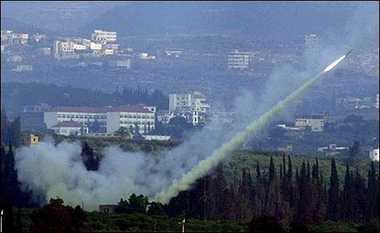
Hezbollah firing a rocket into Israel to feed their blood lust
The conflict in Lebanon is caused because the nation-state is militarily weak and cannot keep the sub-national terror group Hezbollah from launching attacks on neighboring nation-state, Israel. It was thought that if Hezbollah got some land---the southern part of Lebanon and were drawn into civilian politics, they'd "get a life" and put away their guns and bombs. Clearly, they are only in southern Lebanon because its close to Israel to indulge their criminal urges. Rewind the tape 20 years and they are nothing more than Arafat's PLO in southern Lebanon but without "we want a homeland" even as an EXCUSE for their killing lifestyle. They have no excuse. They have got land to live at peace on. Notice after the IDF expelled Arafat in the 1980s, he reappeared in the Gaza strip, got a chunk of land to have a Palestinian nation-state "homeland" (there goes malcontent excuse) and he still refused to put away the gun and the bomb! Arafat didn't stop killing until THE BATTLE AGAINST THE EARTH got him; he died of old age and unhealthy lifestyle created illness. We need to face the fact that there are some people who are criminals who like to kill instead of getting boring 9-to-5 civilian jobs because its fun and sexy to them. Dr. Martin van Crevald said this in his book, The Transformation of War. [Note he used the "T" word before it was perverted into the current emasculation of military forces with physical capabilities into effeminate "RMA transvestites" who "bitch and gossip" over mental commo links endless "mother, may I?" directives from micro-managers.] Organized killing feeds their baser instincts and no amount of political settlement and concessions will appease them, they are not looking to put away their guns/bombs to live at peace with anyone. Remember how appeasement worked for Hitler? They are functional nihilists and sociopaths.
Famous lawyer, professor Alan Dershowitz of Harvard writes:
There is no democracy in the world that should tolerate missiles being fired at its cities without taking every reasonable step to stop the attacks.The big question raised by Israel's military actions in Lebanon is what is "reasonable." The answer, according to the laws of war, is that it is reasonable to attack military targets, so long as every effort is made to reduce civilian casualties.
If the objectives cannot be achieved without some civilian casualties, these must be "proportional" to the civilian casualties that would be prevented by the military action.
This is all well and good for democratic nations that deliberately locate their military bases away from civilian population centers. Israel has its air force, nuclear facilities and large army bases in locations as remote as anything can be in that country. It is possible for an enemy to attack Israeli military targets without inflicting "collateral damage" on its civilian population.
Hezbollah and Hamas, by contrast, deliberately operate military wings out of densely populated areas. They launch antipersonnel missiles with ball-bearing shrapnel, designed by Syria and Iran to maximize civilian casualties, and then hide from retaliation by living among civilians. If Israel decides not to go after them for fear of harming civilians, the terrorists win by continuing to have free rein in attacking civilians with rockets. If Israel does attack, and causes civilian casualties, the terrorists win a propaganda victory: The international community pounces on Israel for its "disproportionate" response. This chorus of condemnation actually encourages the terrorists to operate from civilian areas.
While Israel does everything reasonable to minimize civilian casualties -- not always with success -- Hezbollah and Hamas want to maximize civilian casualties on both sides. Islamic terrorists, a diplomat commented years ago, "have mastered the harsh arithmetic of pain. . . . Palestinian casualties play in their favor and Israeli casualties play in their favor."
These are groups that send children to die as suicide bombers, sometimes without the child knowing that he is being sacrificed. Two years ago, an 11-year-old was paid to take a parcel through Israeli security. Unbeknownst to him, it contained a bomb that was to be detonated remotely. (Fortunately the plot was foiled.)
This misuse of civilians as shields and swords requires a reassessment of the laws of war. The distinction between combatants and civilians -- easy when combatants were uniformed members of armies that fought on battlefields distant from civilian centers -- is more difficult in the present context.
Now, there is a continuum of "civilianality": Near the most civilian end of this continuum are the pure innocents -- babies, hostages and others completely uninvolved; at the more combatant end are civilians who willingly harbor terrorists, provide material resources and serve as human shields; in the middle are those who support the terrorists politically, or spiritually.
The laws of war and the rules of morality must adapt to these realities. An analogy to domestic criminal law is instructive: A bank robber who takes a teller hostage and fires at police from behind his human shield is guilty of murder if they, in an effort to stop the robber from shooting, accidentally kill the hostage. The same should be true of terrorists who use civilians as shields from behind whom they fire their rockets. The terrorists must be held legally and morally responsible for the deaths of the civilians, even if the direct physical cause was an Israeli rocket aimed at those targeting Israeli citizens.
Israel must be allowed to finish the fight that Hamas and Hezbollah started, even if that means civilian casualties in Gaza and Lebanon. A democracy is entitled to prefer the lives of its own innocents over the lives of the civilians of an aggressor, especially if the latter group contains many who are complicit in terrorism. Israel will -- and should -- take every precaution to minimize civilian casualties on the other side. On July 16, Hasan Nasrallah, the head of Hezbollah, announced there will be new "surprises," and the Aska Martyrs Brigade said that it had developed chemical and biological weapons that could be added to its rockets. Should Israel not be allowed to pre-empt their use?
Israel left Lebanon in 2000 and Gaza in 2005. These are not "occupied" territories. Yet they serve as launching pads for attacks on Israeli civilians. Occupation does not cause terrorism, then, but terrorism seems to cause occupation. If Israel is not to reoccupy to prevent terrorism, the Lebanese government and the Palestinian Authority must ensure that these regions cease to be terrorist safe havens.
However, if America jumps on the looneycon broad-brush bandwagon and widens the war against Sunni nation-states that do not support the Shia Hezbollah/Hamas latest insubordination, all we are doing is making the U.S. a part of Israel to be the big bully/scapegoat that the terrorists use as an EXCUSE (see definition above) to continue their run-around-with-an-AK47 lifestyle. Prototypical terrorist, Arafat never wanted to stop being a guy running around with a gun; his heart was never into being a peaceful government figurehead.
One better solution is to radically reorganize and strengthen Lebanon's Army say along Colonel Douglas Macgregor's "Breaking the Phalanx" model so it can keep Hezbollah out after the IDF pushes it from southern Lebanon. The U.S. could help with this with a competent NLB-SC OR SNC-C with trainers and equipment since the NLB-SC OR SNC-C would be EXPERTS IN SUB-NATIONAL CONFLICT TECHNOLOGY. This means members would go to trade shows and visit companies and actually STUDY what the "state of the art" is and not just act on ignorance and prejudices.
Here's two web pages showing two approaches to getting a manned observation/attack plane with sensors over the Israeli/Lebanon border to target Hezbollah rockets instantly:
Modifying a Cessna like Vann's L-19/O-1 Bird Dog (less to work with but cheaper)
www.reocities.com/usarmyaviationdigest/grasshoppersmustreturn.htm
Modifying a Crop-Duster with sensors, armor, armament (can immediately attack, too)
www.combatreform.org/killerbees3.htm
(scroll down to nearly bottom for AY-65 Vigilante II)
Plus, having Aerostat blimps with sensors could enable as soon as a rocket team or firing signature is detected, the manned observation/attack plane to launch a missile if its within range to take them out (Armed Crop Duster option).
The best thing America could do to help the Israelis defeat the rockets would be to buy them some O/A attack planes and Aerostats that they can afford to run 24/7/365. Israeli AH-64 attack helicopters are simply too expensive and cannot fly continuously overhead like fixed-wing O/A aircraft can as former DoD Director of Air Warfare, Chuck Myers [cmyersaero@aol.com] calls: "Maneuver Air Support by COntinuous Overhead Presence". Relying on F-16s on strip alert at air bases rearward even as fast as they are takes too long.
Another example, the U.S. Army's anti-rocket and mortar laser system prototype should be sent to northern Israel to help swat down Hezbollah rockets, but YOU HAVE TO KNOW SUCH THINGS EXIST TO REQUEST THEM. As long as infantry/SF officer narcissists ruin ehh run the U.S. Army and not the "spaceballs weenies", things like anti-rocket/missile/mortar lasers will collect dust. This is why we need a NLB-SC OR SNC-C that would fight for the needed weapons and equipment and get them by a separate budget not competing with the narrow-minded narcissists.
Huntsville (AL) Times July 22, 2006Laser That Could Stop Rockets Sits In Army Storage
Budget cuts halt part of missile defense program
By Shelby G. Spires, Times Aerospace Writer
A few U.S. Army vehicles, generators and a very precise laser now sitting in a storage building in the New Mexico desert could some day become a missile shield that would blast small rockets out of the sky - rockets just like the ones pounding Israeli settlements near Lebanon.
Wartime needs and a lack of money drove Army leaders to halt test and development on the Mobile Tactical High Energy Laser, or MTHEL, program in late 2004, effectively canceling the missile defense program developed by the U.S. Army Space & Missile Defense Command in Huntsville.
"The Army has "no official requirement for (MTHEL)" or budget authority, and without that I can't proceed on any kind of real meaningful work" on the program, said Scott McPheeters, Army acting product manager for directed energy applications on Redstone Arsenal.
[EDITOR: "Official requirement" how many damn missiles and rockets have to strike U.S. Soldiers is it going to take? Does HQDA need a "burning bush" experience from the Almighty?]
But the laser weapon works. "It's highly effective and accurate. It can hit a target or a spot the size of a quarter at five miles away," McPheeters said.
It's a program defense experts think could protect American troops and their allies from rockets, artillery shells, mortar rounds and possibly cruise missiles or other types of guided ordnance.
"Normally, I'm highly skeptical about missile defense and some of its testing, but this seems to be a pretty ingenious type of defensive system that the Army might want to rethink and continue work on," said Chris Hellman, a missile defense expert with the Center for Arms Control and Non-proliferation in Washington.
The Pentagon spent about $300 million developing the MTHEL system from 1996 through early 2002, and would need to invest another $350 million to complete the work and build prototype vehicles, McPheeters said.
Although the exact details are secret, McPheeters said the laser causes a warhead to super-heat, blowing itself up in a few seconds.
The laser, invisible to the naked eye, uses a deuterium and fluoride chemical process to generate the high-energy beam.
It showed enough promise during tests in the late 1990s for the Pentagon to set up a series of summer 2000 flight engagements that shot down Russian-built Katyusha rockets, artillery shells and mortar rounds in flight.
The laser equipment, called "directed energy" applications by Army and defense engineers, now sits in storage at the White Sands Missile Range.
The system has shot down a number of targets, including 20 mortar rounds, 28 Katyusha rockets, five artillery shells and more, McPheeters said at his Redstone Arsenal office in an interview Friday.
Originally Russian in origin, the name Katyusha refers to a family of simple-to-use Soviet-era rockets that can range from two-inch diameter rockets to those about a foot wide, McPheeters said.
There is some interest in the laser program now, but there is no official interest yet in reviving it, he said.
Settlements on Israel's southern border near Gaza and in the north near Lebanon have been exposed to a hail of rocket fire from Hamas and Hezbollah.
Hellman said the mortar and rocket attacks on Israel have "very little military impact, but a huge terrorism impact."
"You don't want your civilian population terrorized. That's what governments are in place to do, protect the populace," Hellman said in a phone interview.
"These Russian rockets and attacks now falling on Israelis sort of bring back to mind the (World War II) London Blitz and V-2 attacks that really struck terror into the civilians," he said. "It did nothing much in the way of direct damage against the military, but the attacks tied up resources and scared the population."
McPheeters said the MTHEL technology could be used to protect American troops in war zones from roadside bombs and rockets and mortar rounds.
"It's not just an Israeli problem. These things have been used against (the U.S.) military all over the world for the last 50 or so years," McPheeters said. "The Vietnamese used them against us, terrorists have used them and now they are a problem" in Iraq and Afghanistan.
The laser concept can be traced back to Redstone work begun in the late 1960s, but McPheeters said the current MTHEL program began in 1992. "I didn't develop this concept; it was already known," he said. "We've just put it to use."
If the program is left in limbo too long, McPheeters said, the expertise built up over the past 15 years could evaporate over the next year. "We can last another six or nine months, and then people will start to drift away and find other work" on other research projects.
There's no money in the budget to train new engineers for the project if it is resurrected later, McPheeters said.
"Reality is that the Army has other priorities and we all have to work within those," he said. "The infantry units now deployed in the war on terror have to be supported, and that means a lot of funds are needed for that."
The NLB-SC OR SNC-C would see to it that they are the "Subject Matter Experts" (SMEs) insuring the best military know-how is applied not the narrow-minded parameters of conventional and unconventional force narcissists protecting egoclub turf. In the case of Hezbollah in Lebanon and Iran, both are trying to BURROW underground to evade detection and firepower/maneuver attacks; ie; the THE THREAT FROM BELOW:
www.combatreform.org/thethreatfrombelow.htm
The Vietnamese long ago realized they needed to use a 3rd dimension--underground locations-----to counter our 3rd dimension of using the air----to absorb our small-scale use of bombs, rockets and artillery. Glick is right on the mark with why the IDF is just doing small scale ground operations in the south, THEY ARE INVESTIGATING HEZ'S BURROWING METHODS. The IDF is the smartest and most adaptive Army in the world, no one thinks faster on the feet than they. The NLB-SC OR SNC-C would follow their example and be on the cutting edge of developments to insure U.S. forces can defeat underground enemies. A few bunker-busting bombs from handfuls of sexy fighter-bombers isn't going to get the job done as events in Lebanon prove.
1. We need to develop some kind of seismic sensor, ground radar etc. that can locate underground bunkers, caves, tunnels ASAP.
2. We need to develop a LIQUID stable explosive that can be piped into the ground and seep very deep before being detonated to collapse tunnels/bunkers. Ammonium nitrate liquid and diesel fuel liquids may be the solution; these are used in the U.S. iron ore mining industry.
3. Israel should contact the U.S. about buying a half-squadron of 6 x B-52s to be able to on call deliver 80K of earth-penetrating "iron" bombs to locations to collapse entire tunnel networks. If U.S. will not help, then IAF should consider getting 4 x C-17s or 747s and converting them into heavy bombers to smash underground complexes. NLB-SC OR SNC-C should work with USAF B-1/B-52 communities to develop the TTP for tunnel busting large areas after maneuver forces have located and marked where the "Arc Light" missions are to strike.
Once rebels in bunkers and tunnels are smashed, they will come out to the top like cockroaches and could then surrender or be gunned down by waiting ground forces and air strikes.
What we've outlined above is the best non-nuclear solution to forces that burrow themselves deep underground in order to ensconce themselves on that land for proximity's sake (HEZ rocket launching positions into Israel) or to hide secret labs (Iran's nuclear program).
In fact, let's talk about whose failure to adapt has led to this construction of the Hezie-B "bogeyman".
The USMC's failure to adapt after getting their asses kicked by Hezzi-B in 1983 and turning tail and running is what's lead to this whole Hezzi-B-are-great-fighters BS. Anyone who has NOTHING TO LIVE FOR and is suicidal has an "edge" over those of us who want to live. Don't get me wrong, I believe in God and the whole Jesus Christ as-mankind's-savior-dying-in-our-place-we-get-amnesty package deal. But clearly Islam is total BS and if there ain't no life hereafter (aka I'm wrong) the following condemnation by Dalton Trumbo applies to Hezzi-B's misbehavior:
"Just say mister I'm sorry I got no time to die I'm too busy" and then turn and run like hell. If they say "coward" why don't pay any attention because it's your job to live not to die. If they talk about "dying for principles that are bigger than life" you say: "mister you're a liar. Nothing is bigger than life. There's nothing noble in death. What's noble about lying in the ground and rotting? What's noble about never seeing the sunshine again? What's noble about having your legs and arms blown off? What's noble about being an idiot? What's noble about being blind and deaf and dumb? What's noble about being dead? Because when you're dead mister it's all over. It's the end. You're less than a dog less than a rat less than a bee or an ant less than a white maggot crawling around on a dungheap. You're dead mister and you died for nothing.You're dead mister.
Dead."
From "Johnny Got His Gun", Chapter X, copyright 1939 (c) 1959 by Dalton Trumbo
You can think/say, "we are white boy Judeo-Christians with no business being in Arab/Islam/brown-skin Lebanon" AKA we shouldn't have had marines there in first place.
That misses the point.
A HIGH QUALITY MILITARY FORCE CAN PREVAIL NO MATTER WHERE ITS SENT BECAUSE ITS READY AND IT ADAPTS.
The Reagen administration should have yanked the dumbass marines in 1983 and sent the U.S. Army Airborne and Mechanized forces into Lebanon and kill/captured every Hezzi-B clown as a "learning event" that if they fuck with the U.S. they will get their "Dalton Trumbo moment". The NLB-SC OR SNC-C will be able to give those resisting them a "Dalton Trumbo moment", too---but without creating folks to resist them in the first place.
So when we refuse to stand up to bullies who want to die, we only ask for it to come back later in spades. We need an adaptive, high-quality U.S. military that fights and LIVES, that vanquishes those and their ideas who want to embrace death instead of life. We want to live like Dalton Trumbo says but not at anyone else's gunpoint that we have to believe in their fucking BS allah-or-else crap---or anyone's religious crap for that matter.
For 6 years, Israel has been peace-loving and honorable to Hezie-B and not occupied south Lebanon. Some may say they've been doing dirty tricks. Hezie-B has not been all-innocent; its been talking shit "narrative" saying Israel chickened out by withdrawing, and recruits have been flocking to be a Hezie-B suicide-monger.
If Israel did nothing after its Soldiers were kidnapped, that Israel-is-weak "narrative" would be drawing more recruits than the current Hezie-Bs-are-rock-stars BS. Rock stars also DIE YOUNG, don't they? Especially after the Israeli Army invades them and starts killing them.
You could say the IDF invincibility image has been damaged. Well, it was the first few days of Yom Kippur in 1973. Then the IDF adapted, encircled the Egyptians and annihilated them because they are smart, HUMBLE and adapt. Image earned and restored. I see IDF encircling Hezie-B now as we speak. We'll see how "popular" and "sexy" being a DEAD "Islamic rock star" is in the coming weeks, months and years.
There comes a time when you have to fight, and during that fight take the measure of your enemy; guesstimates can only do so much and most often they are wrong. For the IDF to have a reputation of being unbeatable like a prize fighter/heavyweight champ they have to enter the ring and prove it from time to time. Now is one of those times.
Our World: Seeing the war in its true colors
Caroline Glick
THE JERUSALEM POST
July 25, 2006
Today U.S. Secretary of State Condoleezza Rice will meet with Prime Minister Ehud Olmert. The press reports leading up to their meeting were full of details about how European armies wish to send their forces to Lebanon. The reports also noted that Israel will be expected to surrender the Shaba Farms on Mount Dov to Lebanon in exchange for promises of security.
For their part, Israeli leaders from Olmert to Defense Minister Amir Peretz to Foreign Minister Tzipi Livni have been demonstrating a disturbing lack of resolve. Their statements expose a consistent watering down of the goal of the IDF's mission in Lebanon - from destroying Hizbullah as a fighting force to weakening it as a fighting force and "paving the way for a diplomatic settlement" that will apparently include Hizbullah.
On the other hand, other voices make clear that despite the best wishes of the government and the Israeli left-wing intelligentsia, it is far from clear that the IDF will end its operations without victory achieved.
For instance, writing in The Sunday Times, former Conservative MP Michael Portillo told his British countrymen that their hostility for Israel and the U.S. aside, "The bloody truth is that Israel's war is our war." Portillo went on to argue that given the threat that Iran and Hizbullah pose to Britain itself, "for us to turn against Israel and America would be perverse and potentially suicidal."
STRENGTHENING the view that opposition to war against Iran and its proxies is suicidal, it was reported Sunday that Bulgarian border guards along their border with Romania had intercepted a British truck filled with radioactive materials for building a so-called dirty bomb. The components, which included dangerous quantities of radioactive caesium 137 and americium-beryllium, were stored in 10 lead-lined boxes addressed to the Iranian Ministry of Defense.
According to the Daily Mail, this was the second time in less than a year that a British shipment of nuclear materials had been stopped by Bulgarian border guards. Last August, Bulgaria stopped a shipment of zirconium silicate, which can be used as a component of a nuclear warhead, at its border with Turkey en route to Iran.
THE CURRENT campaign in northern Israel and Lebanon has brought into sharp focus the major pathologies and strengths of the West in fighting the Iranian-led jihadist axis. The British government's push for a cease-fire, together with the enthusiasm of the UN and France for sending their own troops to Lebanon to protect the Lebanese from the "disproportionate" Israelis; the demand of Israel's radical Left that a deal be made with Syria; and the demands of leftist ideologues in the U.S. that an artificial deadline be set for the conclusion of Israel's operations in Lebanon all point to a similar pathology.
As a group, the ideological Left rejects the notion of victory in war for Western forces (although it is fine for jihadists); rejects the notion that there are enemies that are impossible to appease; and specifically rejects the idea that Israel has a right to defend itself against its enemies, let alone vanquish its foes.
LET US BE clear. The European foreign ministers and UN envoys who are tripping over one another on their way to Jerusalem are the same European foreign ministers and UN officials who brought about the misguided American decision to throw out 27 years of US practice and officially engage the mullahs in Teheran.
That is, the same European governments now jockeying for a place in an international force that will protect Hizbullah from destruction are the ones who have been stymieing American attempts to take concerted action against Iran's nuclear weapons programs for the past three years.
This is the pathology of the West. For if one takes the ideology of appeasing unappeasable foes to its logical conclusion, appeasing states will eventually join forces with their enemies against themselves, or, as Portillo put it, they will become suicidal.
AND SO, Britain's Department of Trade and Industry can give export licenses to dirty bomb components en route to Iran. And so American columnists named Cohen can tell the world that Israel's existence is a mistake. And so, Javier Solana, the EU's foreign policy chief, can refuse to acknowledge that Hizbullah is an Iranian-run terrorist organization dedicated to Islamic world domination even as its supporters throughout Europe hold mass demonstrations where they hold signs calling for Europe's destruction at the hands of Hizbullah and Iran in the name of Islam.
And so Yossi Beilin can say that Israel doesn't need to worry about the repercussions of standing down while a fifth of its population sits in bomb shelters, because Hizbullah is just a measly terrorist organization that poses no real threat to the country.
On the other hand, events of the past two weeks have also shown some of the West's greatest strengths in fighting the war so many of its powerful citizens and statesmen refuse to acknowledge.
First of all, the IDF has discarded its dangerous delusions that it will be possible to win this war by remote control. Today it fights like an army that knows it is both at war, and at war with an enemy that needs to be destroyed, whatever the price may be.
SEVERAL supporters of Israel were quick to write off the IDF in the wake of unsupported statements by Chief of General Staff Dan Halutz and his generals last week, in which they announced - based perhaps on the tonnage of ordnance IAF jets dropped on Lebanon - that Israel had destroyed up to fifty percent of Hizbullah's capacities.
"Israel is losing this war," these commentators moaned, not recognizing that the IDF is capable of learning from its mistakes. "Israel's intelligence services fell asleep on their watch," it was said.
But these eagerly defeatist voices do not recognize that the failure was not one of intelligence, but of politics. Mesmerized by the dovish ideologies propounded by three consecutive governments, it took the General Staff a week to understand that Israel was at war.
BUT NOW they know. And now the IDF is fighting well, boldly and effectively on the ground. Halutz initiated a rolling mobilization of the reserves, and the IAF has pulled back to its proper supportive role.
As well, it is impossible not to recognize the Bush administration's centrality in the current campaign. Not only is the US rearming the IAF with bunker buster bombs, it is making certain that its own public and the international community recognize that what is at stake here is far greater than the well-being of Israel's citizens.
As President George W. Bush has made clear, this is not just Israel's war. This is a campaign of the Iranian-led axis of jihad that seeks to dominate the entire free world. And echoing Bush are voices like Portillo's that are heard from Beirut to Sydney.
Moreover, by rising to the challenge Hizbullah, Syria and Iran have placed before it, the entire Israeli public is setting an example for its army, its government and the world to follow. Families in the North are stoically accepting the around-the-clock bombardments and standing strong in their demand for victory. Families in the rest of the country are opening their homes to thousands of refugees from Haifa and Nahariya and Tiberias.
As a friend put it the other day, "Halutz has no choice but to win. Israel is a country with five million chiefs of staff and they are all breathing down his neck."
FINALLY, the campaign in Lebanon is indeed the opening salvo of Iran's war against the free world. But this works both ways.
Iran and Hizbullah believe that the ferocity of the attacks against Israel will deter us all from taking action against Iran's nuclear facilities. But by giving the West the opportunity to fight it first in Lebanon, Teheran is providing the US, Israel and others with critical intelligence about its own installations. The subterranean bunkers in south Lebanon that IDF ground forces are now conquering were built by Iranian Revolutionary Guards units and designed by Iranian engineers - the same forces that conceived and constructed Iran's nuclear installations.
IN 1982, when Israel destroyed the Syrian Soviet-made and trained air force in Lebanon, it was able to provide the U.S. with critical information about the Soviet Air Force and its air defense systems that enabled the U.S. to outstrip both in a manner that all but sealed the fate of the evil empire. Today, by fighting Iran's proxy, Hizbullah, Israel is amassing information that will be critical for planning a successful strike against Iran's nuclear installations.
It is impossible to know what will actually be discussed today as Olmert meets with Rice. But it must be hoped that now that the U.S., Israel and other Western states are acknowledging the true nature of the war against Israel, they will abandon their suicidal demons and use this campaign as a stepping stone for neutralizing its chief instigator: The Islamic Republic of Iran.
www.jcpa.org/brief/brief006-2.htm
A Strategic Assessment of the Hizballah Warby Maj.-Gen. (res.) Yaakov Amidror and Dan Diker
Jerusalem Issue Brief
Jerusalem Center for Public Affairs
July 19, 2006 ( Vol. 6, No. 2 )Israel's current military operations to uproot Hizballah and to destroy it as a formidable military and terror organization is not merely an operation against another determined terror group like Hamas in Gaza. Hizballah has a disciplined, well-trained army with sophisticated weaponry, backed directly by Syria and Iran.
A high-level Iranian official recently emphasized to Western diplomats in London Hizballah's importance to Iran: 'Hizballah is one of the pillars of our security strategy, and forms Iran's first line of defense against Israel.'
Walid Joumblatt, the Lebanese Druze leader, shares this perspective: 'The war is no longer Lebanon's... it is an Iranian war. Iran is telling the United States: You want to fight me in the Gulf and destroy my nuclear program? I will hit you at home, in Israel.'
Iran's Revolutionary Guards provide the majority of Hizballah's weaponry, financing, instruction, and strategic command and control. Hizballah's short- and medium- range missiles are manufactured in Iran and exported to Lebanon via the Damascus International Airport. Iranian officers from the Revolutionary Guards are on the ground in Lebanon, playing active roles in supervising terror actions and training Hizballah operatives to launch rockets against Israel. Hizballah is nothing less than an extension of Iran's Revolutionary Guards.
Iran has taken a strategic decision to activate Hizballah terror against Israel in order to preclude the United States and its Western allies from stopping Iran's nuclear development program.
The only way to defeat an insurgency is to first isolate it from external reinforcement. Israel is seeking to cut off Hizballah from Syria and Iran and isolate it from the rest of Lebanon. Israel must carry out its current military operation against Hizballah until it is fully neutralized and disarmed. It would be nothing short of catastrophic for both Israel and the international community if diplomatic efforts result in Israel being forced to end its military operation prematurely.
Hizballah Has No Red Lines
The current war being waged against Israel by Hizballah and its Syrian and Iranian patrons is in large part the result of Israel's long-time, hands-off policy with regard to the Lebanon-based fundamentalist terror group.
Since Israel's overnight unilateral withdrawal from Lebanon in May 2000, Hizballah built itself into a deterrent military force possessing 13,000 to 15,000 short- and medium-range missiles. The terror organization exploited Israel's political preference to maintain the relative quiet for the residents of its northern border communities instead of uprooting the Hizballah terror infrastructure and risking war. As a result of Israel's skittishness to confront it, Hizballah leader Hassan Nasrallah assessed that he could determine when to launch hostilities against Israel completely on Hizballah's terms.
Hizballah -- the 'Party of God' -- has no red lines. Any strategic strike that it can execute, it will execute, limited only by its ability and the conditions permitting it to carry out an attack at any particular moment. In that regard, Hassan Nasrallah lives in his own bubble in which he judges democratic Israel the same way he judges the Lebanese or those in Hizballah. Nasrallah recently called Israeli resolve 'weaker than a spider's web.'
Nasrallah's decision to kidnap two Israeli soldiers on July 12 was made partly in reaction to Hamas' kidnapping at the Israel-Gaza border of Cpl. Gilad Shalit. Nasrallah said in a speech shortly after the terror attack and kidnapping of the two Israeli army reservists that he wished to negotiate an exchange for Samir Kuntar, a Lebanese terrorist, and other 'prisoners and detainees held by Israel.' Israeli intelligence assessed that Nasrallah meant he would also negotiate for Palestinians as well, and thereby assume a leading role on the Palestinian issue as well, even ahead of Hamas.
Israel's Response
According to Israeli intelligence assessments, Hizballah, Syria, and Iran were taken by surprise by the sheer magnitude and intensity of Israel's response to the missile attacks and kidnapping.
Nasrallah did not understand what causes a democratic country to act harshly when its red lines are crossed and its citizens are threatened, as Israelis are today. Nasrallah never thought that as a result of kidnapping two Soldiers, Israel would launch such a far-reaching counter-offensive. He failed to understand that Israel has gone to war because Hizballah has launched a strategic attack against it, and that Israel views the kidnappings as part of a much greater threat.
Israel's current military operations to uproot Hizballah and to destroy it as a formidable military and terror organization is not merely an operation against another determined terror group like Hamas in Gaza. Hizballah has a disciplined, well-trained army with sophisticated weaponry, backed directly by Syria and Iran.
Iran's Role
According to a May 11, 2006, Asharq Al-Awsat report, a high-level Iranian official who held a closed meeting with a small group of Western diplomats in London emphasized Hizballah's importance to Iran: 'Hizballah is one of the pillars of our security strategy, and forms Iran's first line of defense against Israel. We reject [the claim] that it must be disarmed.'
Walid Joumblatt, the Lebanese Druze leader, shares this perspective: 'The war is no longer Lebanon's... it is an Iranian war. Iran is telling the United States: You want to fight me in the Gulf and destroy my nuclear program? I will hit you at home, in Israel.'
Hizballah is not an independent actor. Iran's Revolutionary Guards provide the majority of Hizballah's weaponry, financing, instruction, and strategic command and control. Most of Hizballah's terrorist weaponry, particularly short- and medium- range missiles -- including the Zalzal missile that can reach as far as Tel Aviv, 150 kilometers from Israel's northern border -- are manufactured in Iran and exported to Lebanon via the Damascus International Airport. Weaponry and materiel are then openly transported by truck convoys to Hizbullah in Lebanon.
According Israeli intelligence, Iranian officers from the Revolutionary Guards are on the ground in Lebanon, playing active roles in supervising terror actions and training Hizballah operatives to launch rockets against Israel. On July 14, Hizbullah fired an Iranian copy of a Chinese C-802 Kowthar missile at an Israeli warship, killing four crew members. These rockets have been in the Iranian Revolutionary Guards' arsenal for four or five years.
Some of Hizballah's weaponry is manufactured by Syria and is provided to the terror organization at the direct order of President Bashar Assad. The rockets in the first barrage that struck the northern city of Haifa on July 16, killing eight Israelis, were manufactured and supplied by Syria. Other medium-range Syrian and Iranian missiles are also in Hizballah's stockpile but have yet to be used against Israel.
Dimensions of the Conflict
On a macro level, there are three dimensions to the current war against Hizballah:
The first dimension is Hizballah's ability as a highly-disciplined terror force with approximately 13,000 rockets that have wreaked havoc on hundreds of thousands of Israelis in northern Israel. Additionally, its ground forces were previously deployed right up to the Israeli-Lebanese border, oftentimes within rifle range of public buildings in Israeli towns and villages. In this regard, it is abundantly clear that Israel cannot allow Hizballah to return to its former positions in southern Lebanon. The Lebanese army must be deployed to ensure that southern Lebanon remains free of Hizballah control.
Second, Hizballah cannot be allowed to be the driving force that decides, whenever it so chooses, together with its Syrian and Iranian patrons, to inflame the Middle East. In this sense, Israel's current war in Lebanon is not punitive; it is strategic. The Israeli air force has struck the main arteries for the transfer of weapons to Hizballah from Syria and Iran through Beirut International Airport, all Lebanese seaports, and across the Beirut-Damascus highway from the east, which has served as one of Hizballah's main lines of weapons transport. During the present hostilities, Syria has continued to attempt to resupply Hizballah in the Bekaa Valley, as well. In bombing
Hizballah's Daheyh stronghold in the southern suburbs of Beirut, Israel is seeking to separate it from Hizballah forces further south. Thus, Hizballah is being cut off from Syria and Iran and isolated from the rest of Lebanon.
Hizballah has waged an insurgency against Israel from the mini-state it has created inside of Lebanon. The only way to defeat an insurgency is to first isolate it from external reinforcement. That is what Israel is seeking to do.
In a second phase, the insurgency must be disarmed. In this regard, the international community must enforce UN Security Council Resolution 1559 that imposes the obligations of state sovereignty and responsibility on Lebanon to force the Hizballah to disarm, as even French President Jacques Chirac has demanded.
The third and broader dimension of the escalating conflict is that Hizballah is nothing less than an extension of Iran's Revolutionary Guards. Iran has taken a strategic decision to activate Hizballah terror against Israel in order to preclude the United States and its Western allies from stopping Iran's nuclear development program. The uprooting of Hizballah's military capacity will neutralize one of Iran's most dangerous and valuable deterrent threats against any country that attempts to act against Tehran's nuclear weapons program.
The Stakes for Israel and the West
Israel must carry out its current military operation against Hizballah until it is fully neutralized, disarmed, and unable to serve as Iran's long 'arm' that can bring terror upon Israel and destabilize the Middle East region at will. The current Israeli victims of Hizballah terror will not have sacrificed their lives in vain if Israel conducts its war to an uncompromising victory. However, if Hizballah is allowed to remain a military force in Lebanon or even an armed presence in southern Lebanon, Israel will have indeed sacrificed its soldiers and citizens in vain, and will also suffer similar attacks in the future.
Furthermore, it is a primary interest of the international community that Hizballah be fully neutralized as a military extension of Iran. Only a full victory against Hizballah will allow the possibility for Lebanon to emerge as a free and democratic country. This is also in line with the Bush Administration's vision of helping the peoples of the Middle East to free themselves of tyrannical and fundamentalist elements and prevent the threat to the region of a nuclear Iran. This underscores the regional and international importance of Israel's current mission.
Any Syrian or Iranian forces or advisors in Lebanon are legitimate targets for Israel. Israel must send a clear message to Bashar Assad that it will not accept any Syrian interference in Lebanon. However, while Israel should not open up a front against Syria at this juncture, if Syrian forces show any type of movement, Israel must be ready to engage them.
The duration of the current war depends on Israel, Lebanon, and the international community. If the Lebanese realize that with every passing day the accumulating losses are taking too great a toll, if the international community continues to allow Israel to uproot Hizballah without pressuring Israel for a cease-fire, and if the UN stays out of the fray, the war does not have to last very long. But if Israel is pressured to stop its operations, this acute conflict will indeed last a long time.
This is a war in which Israel is acting primarily through its air force, which is a new approach. However, if Israel's air force fails to stop Hizballah rocket assaults, Israel may be forced to send in substantial ground forces to control the areas from which rockets are being launched. This real possibility would have far-reaching implications in terms of potential losses for the IDF and for the citizens of Lebanon.
No less significant is Israel's readiness to absorb damage to its home front. This requires a much higher degree of national resilience than that of the first Iraq war when Saddam Hussein fired 39 Scud missiles at Israeli cities. This time there is much more damage and loss of life on the home front, but Israel is showing great fortitude and national will.
Iran's Ongoing War Against the West
Even if Israel is successful in destroying the Hizballah infrastructure, Iran will not be deterred in its ongoing war against the West, for Hizballah's attacks on Israel represent Iran's strategic decision to launch what it sees as a counter-offensive against the West following America's post 9/11 attacks on the regimes in Iraq and Afghanistan. Echoing Iran's perspective, the conservative daily Jomhour-e Eslami, affiliated with the Islamic seminaries of Qom, reiterated in a July 17 editorial the charge that 'the conspiracy of bringing down the Twin Towers in New York with one plane, which was totally dubious, was a pretext for occupying Afghanistan and Iraq, and for [providing] unqualified support to the Zionist regime in its crimes against Palestine.' The Iranian editorial noted that 'America's collaboration with the Zionists in murdering the Palestinian people, destroying Lebanon, and [hurling] baseless accusations against Iran [regarding] nuclear activity -- which is now coming to a head -- is a new phase in America's crusade against the Muslims. This is exactly the point at which the leadership of the Islamic nation must play a role.'
This underscores the assessment that if Hizballah is neutralized in the current conflict, Iran will have lost a major asset in its ongoing struggle against the West.
The Diplomatic Front
In order to achieve its war objectives, Israel must succeed on the diplomatic front in addition to the battlefield. It would be nothing short of catastrophic for both Israel and the international community if diplomatic efforts result in Israel being forced to end its military operation prematurely. Furthermore, it is incumbent on the international community, which last year demanded that the Syrian army withdraw from Lebanon, to provide the necessary assistance to Lebanon that will ensure that Hizballah is disbanded as a military force, and this must be the highest international priority.
-- Maj.-Gen. (res.) Yaakov Amidror, Program Director of the Institute for Contemporary Affairs, is former commander of the IDF's National Defense College and the IDF Staff and Command College. He is also the former head of the IDF's research and assessment division, with special responsibility for preparing the National Intelligence Assessment. In addition, he served as the military secretary of the Minister of Defense.
-- Dan Diker is a senior policy analyst at the Jerusalem Center for Public Affairs and heads its Defensible Borders Initiative. He also serves as Knesset correspondent and analyst for the Israel Broadcasting Authority's English News.
Notes 1. www.ynetnews.com/articles/0,7340,L-3274616,00.html
2. Middle East Media Research Institute (MEMRI), http://memri.org/bin/latestnews.cgi?ID=SD120406
3. Anton La Guardia, 'Israel Fights West's Cause Against Radical Islam,' Telegraph (UK), July 17, 2006.
4. See Uzi Rubin, 'The Global Range of Iran's Ballistic Missile Program,' Jerusalem Issue Brief 5-26, http://jcpa.org/brief/brief005-26.htm
5. An Iranian military source close to the Revolutionary Guards leadership revealed to the London Arabic daily Asharq Al-Awsat details concerning Iran's role in training and arming Hizbullah. The source said that 'in Lebanon, there are 70 trainers, experts, and technicians, as well as 60 Faylaq Quds intelligence agents, who assist the Hizballah missile unit and its local leadership. In addition, there is a secret Revolutionary Guards unit, consisting of 20 officers, who use advanced means to track the movement of Israeli forces in the field, and select targets in Israel for the operation commanders.
http://memri.org/bin/articles.cgi?Page=archives&Area=sd&ID=SP120706
6. MEMRI, July 17, 2006, http://memri.org/bin/latestnews.cgi?
7. MEMRI, http://memri.org/bin/latestnews.cgi?ID=SD120806
Source: www.jcpa.org/brief/brief006-2.htm
United Nations Resolution 1559, calls for the disarming of Hezbollah and the deployment of the Lebanese Army to southern Lebanon. If we believe in the nation-state model for civilization, its time to act like it, not long to have more nation-state misbehavior (World Wars) which has caused the people to distrust governments starting in the middle part of the 20th century. Now is a time for nation-state restraint and discipline to fathom complex situations (Half the Arab world is Sunni and don't want Shia Iran through Hamas and Hezbollah taking over them) and come at an exact solution based on external facts not a broad brush based on internal prejudices (Straussian Neocons).
Suicidal Islamic Mufsidoon in Iraq, Afghanistan, Lebanon, Palestine: have nothing to LIVE for?
Most people in the west realize that the LEADERS of sub-national terrorist groups are immoral and not following even Islam correctly much less common human decency. Yet, the secular U.S. government refuses to acknowledge this and encourage followers of Islam to not be deceived and follow these false Islamics who lead terror organizations. Making things worse, U.S. forces refer to sub-national terrorists using their own POSITIVE religious labels, so every time we condemn them as a "Jihadi" we are actually inadvertently praising them and making them seem legitimate. We are not saying to ever call ANYTHING unless they deserve the label. If Americans are occupying Iraq, which they are, we call-a-spade-a-spade. Occupying is actually a neutral word but its only negative if you never plan on leaving and the majority of the populace there don't want you there. We must never start lying and being dishonest and calling anyone or anything derogatory names if the truth does not support it. However, we should also not call people who violate Islam by creating their own following of violence, killing and mutilating bodies, nice Islamic names. They don't deserve these names and we should not be calling them the following:
False Islamic Terrorist Labels we should NOT use
a. Their history of violent acts: "Jihad" = Holy War
b. Terrorist Instigators like Bin Laden "Mujihadeen" = Holy Religious, Warrior
c. Excuse for doing terrorist acts "infidel" = Un-believer worthy of being murdered
d. Dying during violent acts "shahiddin" = Martyr
e. Their reward for violence "paradise, 72 virgins" = Alleged sexual pleasure in afterlife
We know most suicide bombers blow themselves up due to peer pressure. There is a chance that if we stopped using positive Islamic words and used the more accurate negative Islamic words that a WARNING could be sent out to those thinking about blowing themselves up that they are violating Islam and to think twice.
Since the Bush administration and the rest of the U.S. government lacks the professional understanding that human WAR is actually a conflict of whose IDEAS will dominate, they are oblivious to this "war of words" and use BS secularism as an excuse to not delve into the religious arena which then surrenders that plane to the enemy without a fight. We cannot surrender the moral high ground to an enemy that is IMMORAL. We therefore propose that Congress make into law, that those who attack America (an act of war) while claiming to be following Islam will not be afforded positive religious name references. The words we will use from here on will be:
True Islamic Terrorist Labels we should use
a. Their history of violent acts: "Hirabah" = Un-Holy War against innocent civilians
b. Terrorist Instigators like Bin Laden "mufsiduun" = corruptors and evildoers
c. Those that do terrorist acts "irhabist = terrorist
d. Dying during violent acts "murtadd" = apostasy against Allah
e. Their reward for violence "Jahannam" = Eternal Hellfire
Jim Guirard writes:
We need truth-in-language and truth-in-Islam to win the vital "war of words" and "hearts, minds and souls" aspects -- namely, the vital spiritual and intellectual aspects -- of the broader war on false Islamic terrorists. The al Queda-style suicide mass murder and mayhem must be stopped at the thought stage before it proceeds any farther. As you can see from the essay displayed below, one of the major weapons in our arsenal we are not using to advantage is the language itself -- which, in our opinion, is currently being corrupted in very dangerous ways by Osama bin Laden's carefully constructed lexicon of self-sanctification. As the recently retired chief of the National Counter-terrorism Center (NCTC), John Brennan, has said in a Washington Post op-ed column:
Bin Laden has also insidiously convinced us to use terminology that lends legitimacy to his activities. He has hijacked the term "Jihad" to such an extent that US and other Western officials regularly use the terms "Jihadist" and "terrorist" interchangeably. In doing so, they unwittingly transfer the religious legitimacy inherent in the concept of Jihad to murderous acts that are anything but holy." In this connection, please reflect on the major parallels drawn by my essay between UBL's language of so-called "Jihadi martyrdom" and the Soviets' patently deceitful Cold War language of "people's democracy" and "progressive fronts" and even of the pseudo-religious scam of "Liberation Theology." (Note the powerful quote from Pat Moynihan re: "semantic infiltration" about half-way through the text.)
Our problem today is a language which paints a highly seductive but cynically false picture of "Jihad" (Holy War) by "mujahiddin" (holy warriors) and "shahiddin" or "shuhada" (martyrs) destined for Paradise as a proper reward for killing us alleged "infidels." This is bad enough. But it becomes multiple times worse when these are the same words which so many of us tend to use, as well -- thus tending to confirm their accuracy and validity in a way which relegates America and the West to the role planned for us by al Qaeda, the role of "The Great Satan." For who, indeed, other than the Great Satan would go about killing a bunch of holy guys (saintly Jihadi guys) on their way to Paradise?
Presented to NORTHCOM Conference on Militant Extremism -- Jan 11-12, 2006____________________________________
TrueSpeak Institute
Jim Guirard, President
1129 Cameron Road
Alexandria, Virginia 22308
(703) 768-0957
Justcauses@aol.comAl Qaeda's Satanic War Against Society-"Hirabah" Is Its Name
From its inception in the form of unauthorized and un-Islamic fatwas (religious edicts) in 1996 and 1998, Osama bin Laden's so-called "Jihad Against America and the West" is nothing but a pseudo-Islamic scam. It is no more "holy" or "godly" than the genocidal haters and killers who concocted and are fomenting it.
As Islamic Law scholar Khaled Abou El Fadl of UCLA explains in his highly acclaimed new book, The Great Theft: Wrestling Islam from the Extremists, these radicals "entirely ignore the Qur'anic teaching that the act of destroying or spreading ruin on this earth is one of the gravest sins possible - fasad fi al-ard, which means to corrupt the earth by destroying the beauty of creation. This is considered an ultimate act of blasphemy against God. Those who corrupt the earth by destroying lives, property and nature are designated as mufsiduun (corruptors and evildoers) who, in effect, wage war against God by dismantling the very fabric of existence... the crime is called Hirabah (waging war against society)."
This Hirabah's (this unholy war's) more appropriate name is The Al Qaeda Apostasy -- a perversion of authentic Islam which (in the name of Allah, of course) threatens to turn that religion into nothing but a perpetual killing machine of all Christians, all Jews and all Muslims who happen to disagree. Beneath its false labels it is a plainly satanic, cultic violation of many of the fundamental precepts of Qur'anic Islam-including such sinful transgressions and such de facto desecrations of the Qur'an as:
* Wanton killing of innocents and non-combatants, including many peaceful Muslims
* Decapitating the live and desecrating the dead bodies of perceived enemies
* Committing and enticing others to commit suicide for reasons of intimidation
* Fomenting hatred among communities, nations, religions and civilizations
* Ruthless warring against nations in which Islam is freely practiced
* Issuing and inspiring un-authorized and un-Islamic fatwas (religious edicts)
* Using some mosques as weapons depots and battle stations, while destroying others
* Forcing extremist and absolutist versions (and perversions) of Islam on Muslims, when the Qur'an clearly says that there shall be "no compulsion in religion"
* Distorting the word "infidels" to include all Christians, all Jews and many Muslims, as well-when the Qur'an calls them all "Children of the Book" (the Old Testament) and "Sons of Abraham," and calls Jesus one of Islam's five main Prophets
* Deliberate misreading, ignoring and perverting of passages of the Qur'an, the Hadith and the Islamic Jurisprudence (the Fiqh)
All of this constitutes a gigantic apostasy (or blasphemy, choose your word) against the "peaceful, compassionate, merciful and just" Allah who is repeatedly so described by the Qur'an. And, of course, the penalty for apostasy in Islam is death. Ask poor old Salman Rushdie who has been under an Iranian fatwa of death for over a decade-for allegedly mistranslating certain verses of the Prophet in his famous book, The Satanic Verses.
It is noted at this point that many authentic Muslim Scholars and Jurists -- particularly those who participated in the recent anti-terrorism summit sponsored by King Abdullah bin al-Hussein of Jordan -- have strongly condemned the excesses of "takfir" : namely, the many and uniformly baseless accusations of apostasy being leveled by al Qaeda and like-minded terrorist movements against any and all of their perceived enemies.
But the mere fact that these "takfiri" practices might be un-Islamic in their extremism, this very well-intentioned "Amman Message" should not be regarded as prohibiting truthful and provable charges of apostasy against those whose ruthless transgressions -- such as those ten listed above -- so clearly identify their godless perpetrators as the "Abd' al-Shaitan" (the Servants or Slaves of Satan) they truly are.
But, wonder of wonders, Osama bin Laden's multiple perversions of Islam -- which are a thousand times worse than Rushdie's alleged offenses -- are shielded from valid charges of apostasy by the existing halo of so-called "Jihad." While that halo is a patently false one, it is made to seem true by the fact that so many of us (its intended victims) mindlessly parrot bin Laden in calling it a holy and Godly "Jihad."
Surely, if it were something else, its harshest critics (particularly our Public Diplomacy and Psychological Operations experts on the subject) would be calling it by some other more truthful Islamic term -- particularly if that much needed name were the exact opposite of the so-called "holy" and "godly" war it is universally alleged to be. Now, more than four years after the suicide mass murders of September 11, 2001, it is high time that we discover the correct Islamic word for such sinful atrocities and proactively begin using that name -- rather than continuing to lip-sync with Osama bin Laden, at the risk of our lives and those of our children and grandchildren.
The Word Is "Hirabah"-Forbidden War Against Society
Of course, there is a word for the genocidal kind of warfare which violates all of the Qur'anic prohibitions listed above, despite our sophomoric inability to have found it by now. As confirmed above by Professor El Fadl, it is the ancient word Hirabah (pronounced hee-RAH-bah), which the Islamic Jurisprudence (the Fiqh) defines as a forbidden "war against society" -- or what in modern parlance would be called "genocidal terrorism" or "crimes against humanity." In his seminal article on Hirabah in the Fall 2001 issue of Muslim World, the renowned University of Michigan scholar of Islam, Prof. Abdul Hakim (a.k.a., Sherman Jackson), long ago confirmed this interpretation with remarkable clarity as follows:
"In the end, however, Hirabah assumes its place as an effective super-category hovering above the entire criminal law as a possible remedy to be pressed into service for the more sensational, heinous or terrifying manifestations of these and other crimes. In this capacity, Hirabah appears, again, to parallel the function of terrorism as an American legal category. Its function is not so much to define specific crimes but to provide a mechanism for heightening the scrutiny and/or level of pursuit and prosecution in certain cases of actual or potential public violence."
In sum, we may conclude that it is terror, or the spreading of fear and helplessness, that lies at the heart of Hirabah. From this perspective, Hirabah speaks to the same basic issue as does terrorism in American law. As mentioned earlier, however, Hirabah actually goes beyond the FBI definition of terrorism, inasmuch as Hirabah covers both directed and coincidental spreading of fear.... Hirabah, as it turns out, [once was and should be seen again as] the most severely punished crime in Islam, carrying mandatory criminal sanctions."
But, looking back in history, we discover that the widespread killing and pillaging of entire communities and tribes by ruthless barbarians, brigands and Crusaders gradually subsided in the Middle Ages. And the powerful Islamic word which had been used since the 10th and 11th centuries to condemn such atrocities-but which is not in the Qur'an -- gradually faded from use, as well.
Obviously, it must now be rediscovered and resuscitated. Hand-in-hand with the root word "Irhab" (Terrorism), it must become the keystone of both truth-in-language and truth-in-Islam in the war against al Qaeda-style suicide mass murder and related forms of hatred and violence now posing as "holy."
A powerful step in that rediscovery of the truthful Hirabah frame of reference can be found in the September 30, 2005 keynote address to the Association of Muslim Social Scientists by the distinguished Professor S.Abdallah Schleifer of the American University in Cairo:
"Indeed one of the good signs I promised earlier to allude to is the imperative - felt by both many Islamist as well as all traditional Muslims -- to unambiguously denounce terrorism. To make it increasingly clear in a series of declarations over the past year that nothing can justify the intentional targeting of unarmed civilians, and that what has been described by extremist Islamists as "Jihad" is in fact Hirabah, a classic Islamic legal category that can best be translated as 'terrorism' ...
In his critically important essay, "Domestic Terrorism in the Islamic Legal Tradition" - which appeared in the Fall 2001 issue of Muslim World -- Dr. Sherman Jackson noted that in the classic legal literature defining Hirabah, its is the elements of intimidation, of the terroristic spreading fear and a sense of helplessness in the community, that is central."
As Dr. Schleifer explains, "Jackson quotes the 11th century Spanish Maliki jurist Ibn Abd al Barr who defines the agent of Hirabah as: "Anyone who disturbs free passage in the streets and renders them unsafe to travel, striving to spread corruption in the land by taking money, killing people or violating what God has made it unlawful to violate is guilty of Hirabah... be he a Muslim or a non-Muslim, free or slave, and whether he actually realizes his goal of taking money, or of killing or not."
And it is clear, in his extensive review of all of the classic legal sources from all of the schools of Islamic law, that the very impersonality of Hirabah, of terrorism, in which there is invariably no personal relationship between the terrorist and his victim, is what makes it more criminal than homicide ... and in the eyes of the classical jurists, it is why the terrorist deserves to be sentenced to death regardless of the status of the victim, be he or she Muslim or non-Muslim."
Looking to the future, it is only by the assertive and insistent use of this truthful term, along with four or five others which follow from it, that the false and blasphemous language of so-called "Jihadi martyrdom" (which portrays a bunch of holy guys destined for Paradise as a reward for murdering all variety of so-called "infidels") can eventually be defeated. These other essential words are as follows:
irhab (terrorism) and such derivatives as irhabi (terrorist), irhabist (terroristic), irhabism (terrorism), etc.-all of which are easy alternatives to the Jihad-Jihadi-Jihadist-Jihadism misnomers which now so thoroughly distort both the Arabic and English lexicons
mufsidoon or mufsiduun or mufsiddin (evildoers) -- the Islamic word for those who are fomenting and waging unholy Hirabah and who, therefore, cannot be either the mujahiddin (holy warriors) or the shahiddin (martyrs) they so arrogantly claim to be
Jahannam (Eternal Hellfire) -- which is authentic, Qur'anic Islam's destiny for unrelenting and unrepentant mufsidoon who will not cease their evildoing and who will, therefore, not be destined for Paradise but for Shaitan's Eternal Hellfire
tajdif (blasphemy) and/or murtadd (apostasy) -- which is what these Jahannam-bound mufsidoon are engaged in when they ruthlessly kill innocents and noncombatants, foment hatred, commit and entice others to commit suicide, condemn everyone but themselves as "infidels," etc.
khawarij (outside the religion) -- a condemnation which can apply either to individuals or to activities which are so un-Islamic, so extremist and so unrelenting as to invite charges and conviction of apostasy or blasphemy
istihlal (sin of "playing God") -- the cardinal sin of ignoring Qur'anic truths and concocting one's own self-serving perversion of Shar'ia (Islamic Law)
shaitaniyah (satanic) -- which is the fundamental character of the willful and mortally sinful Osaman Apostasy described at the beginning of this essay
Logically, now that our scholarly experts, our public diplomacy spokespersons and our national leaders know the word Hirabah and the name mufsidoon for those who are fomenting and waging this forbidden "war against society," we should be using these truthful Islamic words aggressively and without fail.
Cold War Parallels
To continue a mindless repetition of al Qaeda's preferred labels of "Jihad by mujahiddin on their way to Paradise" and to go about condemning al Qaeda sinners as "Jihadists" (holy warrior-ists) is as naïve and as self-destructive as it was when we mindlessly parroted such preposterous Soviet, Maoist and Castro-ite labels as "people's democracies" and "progressive fronts" and so-called "wars of national liberation."
Truth be known, there were no such "wars of national liberation," because no liberty was ever involved. And today, there is no so-called "Jihad," because there is neither any holiness nor any "peaceful, compassionate, merciful and just" Will of Allah of the Qur'an involved -- but only the al Qaeda Apostasy, Qur'anic Islam's punishment for which is death in this life and Jahannam (Eternal Hellfire) in the next.
As outlined above, this is reminiscent of the subtle but deadly Cold War problem identified in the 1970s and 80s by Dr. Fred Charles Ikle and Senator Daniel Patrick Moynihan as "semantic infiltration" -- which the late Senator defined as follows:
"Simply put, semantic infiltration is the process whereby we come to adopt the language of our adversaries in describing political reality. The most totalitarian regimes in the world would call themselves 'liberation movements.' It is perfectly predictable that they should misuse words to conceal their real nature. But must we aid them in that effort by repeating those words? Worse, do we begin to influence our own perceptions by using them?"
Of course, we do! The problem is as real and as deadly dangerous today as it was then. Bin Laden and his murderous kind say "Jihad and Holy War," and we repeat these false words thousands of times over -- thus endorsing and confirming their claim to a holy and godly purpose. They say "mujahiddin" (holy warriors) and "shuhada" or "shahiddin" (martyrs) on their way to Paradise and we dutifully copy-cat those words, as well. Back in Cold War days, that sort of naiveté was called "useful idiocy" and should still be.
Recall, please, how the perfidious Soviets and their surrogates, Fidel Castro in particular, successfully co-opted the powerfully positive word "liberation" and turned it into a lovely but patently false label for adding colonies -- euphemistically known as "satellites," of course -- to the
Evil Empire
Truth be known, those bloody wars of Soviet colonial conquest (properly defined) had absolutely nothing to do with either national independence or personal liberty -- no more than today's so-called "holy wars" of al Qaeda, Hamas, Hizballah, Islamic Jihad and their pseudo-Islamic clones have anything to do with godliness or holiness.
In addition to the words of wisdom from Professors Hakim, El Fadl and Schlieffer cited above, here are quotations from three more (of about twenty-five) distinguished scholars of Islam and of Middle Eastern affairs-with many more to come -- who are have embraced this truthful Hirabah (unholy war, "war against society") frame of reference, and sharply rejecting the false and un-Islamic language of so-called "Jihadi martyrdom:"
* PROF. AKBAR AHMED (Chair of Islamic Studies, American University) "Properly understood, this is a war of ideas within Islam -- some of them faithful to authentic Islam, but some of them clearly un-Islamic and even blasphemous toward the peaceful and compassionate Allah of the Qur'an..... As a matter of truth-in-Islam, both the ideas and the actions they produce must be called what they actually are, beginning with the fact that al Qaeda's brand of suicide mass murder and its fomenting of hatred among races, religions and cultures do not constitute godly or holy "Jihad" -- but, in fact, constitute the heinous crime and sin of unholy "Hirabah"..... In its worst excesses, particularly in the wanton killing of innocents-both non-Muslim and Muslim alike -- as a method of terrorizing the entire community, such ungodly "war against society" should be condemned as blasphemous and un-Islamic."
* DR. AKHTAR EMON (President, Arabic Language Institute Foundation) -- "Hirabah represents an Unholy War against innocent civilians. The truth stands clear from falsehood. Hirabah can never be confused as 'Jihad' (Holy War), as much as al-Qaeda would like to label their heinous acts against humanity as Jihad.... Hirabah is forbidden and sanctioned not only by the teachings of Qur'an, but also by the Bible and Torah -- all three Abrahamic faiths (Islam, Judaism, and Christianity) agree on this, and so also other major faiths such as Buddhism, Hinduism, Sikhs, Zoroastrians, Bahai's, and the New Age religions addressing "mind, body and soul".... TrueSpeak efforts are highly commendable in educating the world citizenry with truth-in-language and expanding the lexicon, e.g., to distinguish a good guy with a bad guy (mufsidoon), a good act with an act of blasphemy (tajdeef), etc."
* DR. ROBERT D. CRANE (former Chairman, Center for Understanding Islam, and currently working in a hospice for the dying in south Chicago): "Today there are many alienated extremists who rely on their own resort to violence in protest against perceived injustice, rather than relying on the Jihads of akbar, saghrir and kabir with the help of Allah and ecumenical cooperation in peacefully building a better world. In effect, these extremists rely on and worship themselves. They are exhibiting the most serious crime condemned in the Qur'an, which is the root of almost all the other crimes -- namely, arrogance. This leads them to commit the crime of Hirabah and to justify it in the name of Islam. There can be no greater evil and no greater sin. If there is to be a clash of civilizations, a major cause will be the muharibun [a synonym for mufsidoon] those who commit inter-civilizational Hirabah."
A Ticket to Hellfire, Not to Paradise
As these scholarly words of authentic Islam suggest, we will be missing the proverbial boat if we continue to focus so much on trying to make America look GOOD in the Muslim and Arab worlds and so little on the need to make the "mufsidoon Saddam" and the "mufsidoon Osama" (Saddam's and Osama's evildoers) look BAD in the eyes of the Arab Street and the world at large -- namely, like the sinful blasphemers against the "peaceful, compassionate, merciful and just" Allah of the Qur'an who they actually are.
Of course, this antidote to the Al Qaeda Apostasy is best delivered in Islamic religious words -- just like the seductive al Qaeda mantra is. As explained above, the latter proposes to impressionable and religiously motivated young Muslims that they "Join the Jihad, become mujahiddin and martyrs, enter into Paradise."
But imagine, please, how much more difficult it will be for al Qaeda and its murderous ilk to inspire and to sustain the suicidal zealotry of young Muslims -- or the approval of any truly devout and faithful Muslims whatever-once these genocidal irhabis come to be viewed by the Umma (the Muslim World) as mufsidoon (evildoers) engaged in Hirabah (unholy war) and in murtadd (apostasy) against Allah and, therefore, on their way to Jahannam (Eternal Hellfire), instead.
Choosing Words Carefully: Language to Help Fight Islamic Terrorism
By Dr. Douglas E. Streusand and LTC Harry D. Tunnell IV
National Defense University
23 May 2006The United States must do more to communicate its message. Reflecting on Bin Ladin's success in reaching Muslim audiences, Richard Holbrooke wondered, "How can a man in a cave outcommunicate the world's leading communications society?" 1
Use Precise Terms Precisely.
The answer to Mr. Holbrooke's question is an unsophisticated one: Bin Ladin speaks in a language that his Muslim listeners understand. We, on the other hand, simply do not comprehend the meaning of many words that we use to describe the enemy. American leaders misuse language to such a degree that they unintentionally wind up promoting the ideology of the groups the United States is fighting.2 We cannot win wide-spread support throughout the Muslim world if we use terms that, to them, define the behavior of our enemies as moral. Because the Global War on Terrorism-or more precisely the war against Islamic totalitarian terrorism-includes a war of ideas, leaders, journalists, authors and speakers must use the most accurate terms to describe those ideas.
The responsibility for precision in expression rests with anyone who believes in the need to share information candidly. But for those unfamiliar with Islamic doctrine, history and tradition, it may often be necessary to rely on scholars or other experts about the Islamic world to provide one with the necessary guidance to help convey the message correctly. Muslims will ultimately determine whether the ideology of al-Qa`ida, its affiliates, franchisees and fellow travelers represents authentic Islam or not, but the West can have enormous influence on their decisions.
Furthermore, it is important to make sure that the civilian community in the United States and that of our allies and coalition partners accurately understands the nature of the enemy that we are fighting. Unfortunately, Western governments, intellectuals and journalists commonly use words that inadvertently (or sometimes deliberately) authenticate the doctrines of our enemy as truly Islamic. Correcting this vocabulary is a necessary step to educate the wide-ranging groups who are affected by the war; to discredit those who either passively or actively, or wittingly or unwittingly support Islamic totalitarian terrorism; and to reveal the truly insidious nature of our enemy.
What Are We Really Saying?
This essay discusses the most egregious and dangerous misuses of language regarding Islamic totalitarian terrorists; a comprehensive study would require a book. We begin with the word jihad, which literally means striving and generally occurs as part of the expression jihad fi sabil illah, striving in the path of God. Striving in the path of God is a duty of all Muslims. Calling our enemies jihadis and their movement a global jihad thus indicates that we recognize their doctrines and actions as being in the path of God and, for Muslims, legitimate. In short, we explicitly designate ourselves as the enemies of Islam.
Muslims have debated the meaning and application of the concept of jihad for centuries. Our application of the term to the actions of our enemies puts us on their side of the debate. We need not concern ourselves with the identification of the original or legally correct meaning of the term; individual Muslims will make up their own minds. As Professor Streusand has previously written, "Classical texts speak only to, not for, contemporary Muslims." It is also important to note that opposing jihad, a basic principle of Islam, violates a classical text of our own. The United States Constitution denies our government the ability to prohibit the free exercise of religion; consequently, we should never use a term, such as jihad, that misstates our current and historical position on religion.
Mujahid (plural mujahidin or mujahideen): one who participates in jihad, and frequently translated in the American media as "holy warrior." The use of this term designates the activity of the enemy as jihad and thus legitimizes it. It was quite proper for us to describe the warriors who resisted the Soviet invasion of Afghanistan as mujahidin, many of whom are now our allies in Afghanistan. To extend the term to our current enemies dishonors our allies as well as authenticates our opponents as warriors for Islam. Even to a Western audience it can lend a sense of nobility to an otherwise ignoble enemy.
Caliphate (khlilafa): This term literally means successor and came to refer to the successors of the Prophet Muhammad as the political leaders of the Muslim community. Sunni Muslims traditionally regard the era of the first four caliphs (632-661) as an era of just rule. Accepting our enemies' description of their goal as the restoration of a historical caliphate again validates an aspect of their ideology. Al-Qa`ida's caliphate would not mean the re-establishment of any historical regime; it would be a global totalitarian state. Anyone who needs a preview of how such a state would act merely has to review the conduct of the Taliban in Afghanistan before September 11, 2001.
Allah: the word Allah in Arabic means the God, nothing more, nothing less. It is not specifically Muslim; Arabic speaking Christians and Jews also use it. In English, Allah should be translated as God, not transliterated. While translation emphasizes the common heritage of Judaism, Christianity and Islam (the three faiths which identify their God as the God of Abraham) it does not imply that the Abrahamic faiths share identical concepts of God. Even though some Muslims use Allah rather than God in English, the practice exaggerates the divisions among Judaism, Christianity and Islam.3
What Are the Right Words for the Job?
Now that a few unsuitable word choices have been addressed, it is time to begin to identify the proper expressions to use whenever discussing the global Islamic totalitarian terrorist movement. Many of these terms will be unfamiliar to Westerners, but not to most Muslim audiences. Only those who actively, passively or even unwittingly support al-Qa`ida's (and similar groups) professed goals would find the terms, and their use by non-Muslims, offensive.
To refute challenges to the new context surrounding these expressions, any user of these terms must be able to define the words in order to defend their accuracy and the appropriateness of their use. Otherwise anyone who dares to define the enemy using its own Islamic language can be challenged by a variety of "pundits" who still see the struggle in terms of religion or poverty rather than political ideology; who despise Western society, capitalism or democracy; or who oppose the war for any other reason.
Hirabah: this word, which is derived from the Arabic root which refers to war or combat, means sinful warfare, warfare contrary to Islamic law. There is ample legal justification for applying this term to Islamic totalitarian terrorists and no moral ambiguity in its connotation. We should describe the Islamic totalitarian movement as the global hirabah, not the global jihad.4
Mufsid (moofsid): this word refers to an evil or corrupt person; the plural is mufsidun. We call our enemies mufsidun, not jihadis, for two reasons. Again, there is no moral ambiguity and the specific denotation of corruption carries enormous weight in most of the Islamic world.
Fitna/fattan: fitna literally means temptation or trial, but has come to refer to discord and strife among Muslims; a fattan is a tempter or subversive. Applying these terms to our enemies and their works condemns their current activities as divisive and harmful.5 It also identifies them with movements and individuals in Islamic history with negative reputations such as the assassins of the Caliph `Uthman in 656, who created the first fissure in the political unity of the Muslim community.
Totalitarian: calling our enemies totalitarian serves several purposes. There is no such thing as a benign totalitarianism. Totalitarianism is a Western invention and it appeared in the Islamic world as a result of Western influence (first fascist, then Marxist-Leninist). It is also in direct contrast to the idea that the enemy would actually establish a caliphate if they defeat the United States, our allies and coalition partners.
Not the Last Word, Just the Beginning.
This essay is neither definitive nor complete. It is only the beginning of a "primer" of the terminology used to describe Islamic totalitarian movements. There should be far more discussion about the right words to use to describe the variety of threats posed by transnational terrorists-Islamic groups and others. This article, we hope will help jumpstart the discourse.
Notwithstanding the fact that this article is a small beginning, the terms proposed herein should become an indispensable part of the vocabulary of America's leaders, reporters and friends immediately. The wrong terms promote the idea that terrorist elements represent legitimate Islamic concepts, which in turn might aid in the enemy recruitment of disenfranchised Muslims because we have identified to them a seemingly "traditional" outlet through which they can voice their dissatisfaction. It is essential to use the right language to address worldwide problems so that various audiences-which include the American-Muslim community-understand the full scope of the problem and are intellectually able to identify with potential solutions that are reasonable and ethical.
This paper offers word choices not just for public officials and correspondents but even students in the classroom and others studying terrorism. In fact, anyone who is interested in current events should have some familiarity with these words as well as the concepts and new dialogue they represent. We must use the right turn of phrase whenever attempting to inform and educate; language is a key component for us to be able to, in a way that makes sense to any audience, ask for assistance or demand action that will help defeat the scourge of Islamic totalitarian terrorism.
Footnotes
1 National Commission on Terrorist Attacks Upon the United States, The 9/11 Commission Report (New York: W.W. Norton & Company, undated), 377.
2 The 9/11 Commission's own report is guilty of this by using Jihad (and other variations of the term such as Jihadists) throughout. Jihad, discussed more in detail later, does not have a negative connotation for most Muslims-even when combined with descriptions of terrorist purpose or action.
3 On this issue see Daniel Pipes, "Is Allah God," FrontPageMagazine.com, June 28, 2005, at www.frontpagemag.com/Articles/ReadArticle.asp?ID=18577.
4 James Guirard of the TrueSpeak Institute explains the reasons for using the term hirabah rather than jihad in "Terrorism: Hirabah versus Jihad: Rescuing Jihad from the al-Qaeda Blasphemy," American Muslim, July-August, 2003 athttp://theamericanmuslim.org/2003jul_comments.php?id=349_0_21_0_C. Guirard's approach underlies this entire article.
5 For example the leader of al-Qa`ida in Iraq, Abu Musab al-Zarqawi, has stated that Shiites are rafada or rejecters of Islam. The Salafist Sunni terrorist groups, the most well-known of which is al-Qa`ida, do not recognize other traditional Islamic sects as acceptable or Muslims. Use of rafada is from Fouad Ajami, "Heart of Darkness," Wall Street Journal, September 28, 2005, pg.16. As cited in the on-line version of The Early Bird, www.us.army.mil/suite/earlybird/sep2005/e20050928393978.html, accessed September 28, 2005. The al-Qa`ida attack of civilian weddings at three hotels in Amman Jordan on November 9, 2005 is another case in point of terrorist attempts to promote discord among Muslims. The attacks killed 57 people and wounded 115, the majority of whom were Jordanian and Palestinian. Direct attacks by al-Qa`ida in Iraq against Shiite holy sites throughout Iraq continue as of February 28, 2006.
The Dominant Strategic Idea (DSI) must be translated into physical ACTION
Having seen the importance of Killer Words above, its hypocritical that they are being ignored by those who claim "information" is the most important aspect in war and the physical can be skimped on and done without. The whole point that INFORMATION which is MENTAL---is the most important thing in war is a dangerous lie embraced by DoD and even many in our military and is the primary cause for our on-going defeats. We are surely making more un-named rebels each day, but we are also not killing/capturing/persuading the rebels we do know about because we are trying to do it the lazy way by "sending a bullet and not a man".
Human beings do not live in glass jars with electrodes implanted into floating brains, the billions of us on the PHYSICAL still very large planet earth live inside PHYSICAL bodies. Anyone who seeks to elevate the mental over the physical is creating a false balance and America's enemies exploit our anti-physical mentalism all the time by hiding in difficult closed terrain surrounded by sympathetic populations. OMNISCIENCE (god-like mental knowledge) doesn't result in anything if PHYSICALLY YOU ARE UNABLE TO ACT ON IT. And this is what the BS RMA madness has done to DoD/U.S. military forces with increasing damage since the publishing of Alvin/Heidi Toffler's book "War and Anti-War" after Desert Storm. Mental gadgetizing our military is the ideal way to waste billions of dollars and years of time WITHOUT ACTUALLY HAVING TO PHYSICALLY CHANGE OURSELVES to be superior against our enemies. Details:
www.reocities.com/transformationunderfire
There are two basic battles underway when we fight, a battle against THE EARTH and against other HUMANS. Ignoring the EARTH and jumping to human conflict is a false balance. If we optimize forces FIRST to defeat the earth's resistance to applying military force, then we can focus on human war which is all about WHOSE IDEAS PREVAIL. Its not about "information". Its about whose IDEA is to prevail in the hearts of men. In the current phony undeclared war on Islamic terrorism, the Dominant Strategic Ideas (DSIs) now in conflict can be boiled down to the following:
Islam: "We are right with god, you are not"
The West: "We have technology and live better than you. P.S. we take your oil to run our technology".
Therefore, we can relabel our agencies so we are not obvious lie factories all day long, as long as our DSI being put out is an immoral lie, militant Islam will continue to pick up converts as our lazy mental short cut way of war keeps bombing civilians and making new rebels with our "technology". We need to out-think our foes by MAKING THEM INTO OUR FRIENDS with a DSI that is TRUE that we live by. This means WE HAVE TO CHANGE AND BE WORTHY OF THEIR FRIENDSHIP. Our DSI should be:
The West: "We have technology, but we use it unselfishly to help others and be right with God".
Persuasion
www.answers.com/topic/persuasion-2
What we should do in U.S. Army Civil Affairs/Psychological Operations Command is change the "P" from Psychological Operations which sounds like brainwashing and forcing people to do things by lies to "Persuasive Operations" using truthful "information" or "PIO" Persuasive Information Operations...
To "earn" the right to say this DSI truthfully, we also need to reform ourselves in the U.S. to be less the selfish consumer: www.combatreform.org/braveamerican.htm and reform our military to be a PHYSICALLY AGILE MANEUVER FORCE THAT CAN DIFFERENTIATE BEWTEEN GOOD GUY AND BAD GUYS THAT IS SELF-SUFFICIENT----like the Roman Legions were with less technology (we have no excuse) by shipping containerizing the entire Army/marines so we don't waste ANY time playing "From Here to Eternity" garrison games mowing lawns and polishing floors of static buildings that don't fight. Containerized U.S. maneuver forces are packed and ready to go anywhere in the world to fight from fortified but energy self-sufficient (does not need hundreds of easily ambushed supply truck convoys to stay in operation) Forward Operating Bases (FOBs) that obviously are TEMPORARY so the people do not rebel against us if we were moving in to live on their soil permanently via multi-billion dollar static building construction. Details:
www.reocities.com/strategicmaneuver/battleboxes.htm
If we ignore the BATTLE AGAINST THE EARTH, we are in no physical mechanical advantage position to employ ANY mental means however improved.
Accurate Words only Accepted if Deeds Back Them Up
"God will not help those who do not change themselves" --Qu'ran
"God helps those who help themselves" --Aesop and Jesus (completes the principle)
First, the self-professed "jihadis" (mufsidoon) from their warped perspective ARE being good, devout Muslims in their minds. Externally, Islam was built upon conflict and strife and is a false religion. Internally, Islam at the same time contradicts itself by saying its a religion of "peace" and "toleration" when at other times its for war and intoleration; we should use their own WORDS to remind the Islamics that they are being hypocrites at the same time they think they are being devout.
An important "perception management" would be convincing the Islamists that we are no tangible, physical (DEEDS) threat to them. It is unacceptable for a Qur'an-obeying, Muhammad-follower to allow any threat to Islam (including the seductive lure of secular humanist hedonism, i.e., sex, drugs, and rock-n-roll) or to tolerate any non-Muslim (re-)taking of Muslim lands, and against such threats, a defensive (no-holds-barred) jihad is not only allowed, but required. For starters, that would require us to withdraw our military from Muslim lands, which we could do by finally building the SEA BASES we keep talking about but never do. What bases we do hold, we can be obviously temporary using the BATTLEBOX system, so score one point for us, 1-0. It would require us to allow the Arabs to eliminate Israel as we allowed them to eliminate Christian Lebanon, which we won't do--thank God---so we are 1-1. It would also require us to end our efforts to promote democracy, women's/children's rights, and any sort of civil liberties in the Islamic world, which we won't do, so we are 1-2 in their minds. Last and least likely, it would require us to self-censor our "media" and "entertainment" industries to stop broadcasting/selling their subversive cultural products in Muslim countries, leaving us at 1-3..which isn't bad, we can win still from such a deficit if we are aware of it and actively seek to score more points. Pinning down the Islamic terrorists as the mufsidoon that they are ups our score to 2-3. Creating a superior SDI like "we have technology that we use unselfishly to help others and be right with God" evens the score to 3-3. If we can then kill/capture the apostate trouble makers like OBL, we go up to 4-3. If we can stop the current generation from getting caught up into the cycle of violence by walls and barriers, then one of the negative scores; our media delivered culture can work its magic and get these folks excited more about blue jeans and coca cola than RPGs and suicide bombs, then score turns to 5-2. At that point they will be mad at us for supporting Israel and speaking out in favor of personal freedom which includes those choosing to be decadent hedonists. If they are not in the Middle East, Israel shouldn't bother them via the out of sight, out of mind principle. Now we are at 5-1. The Muslim's gripes then are that there are BILLIONS of people who don't buy into their religion and live otherwise. If they think they are so right, they should shut up and leave other people alone who think differently and be glad they are going to get 72 virgins in the next life and be glad. A desperate desire to convert others to Islam looks like classic inferiority/insecurity that needs others all around doing something to have a context to hide amongst, the herd instinct. If you think Islam is so right, act like it. If God is gonna get the un-believers, let him do his work to "convert them". Now the conflict is over, 5-0.
When we accurately call Muslims who are violating their religion through Habarah mufsidoon, we must be aware they might not accept our labels because we are non-Islamic, Muslims don't care what non-Muslims call them, any more than you or I care what Muslims or atheists call born-again/saved Christians (and they have many choice names for us, to be sure). Its vital that we get peace-loving Moslems to call the evil doers the Islamic labels they deserve so other Moslems will be forced to accept the truth that they are not following Islam and should be resisted. Non-Moslems are unclean -- kaffirs, seen automatically as the enemy, and even rival faction Muslims automatically get the benefit of the doubt because they are Muslims, whose GOALS are not disputed even if their methods are. That is why even the Khomeini'ists will assist the Sunni Islamists despite their ancient, deep, and often violent disputes. For an analogy, whatever I may feel about Roman Catholic or Eastern Orthodox Christian theology and practice, when it comes to dealing with Muslims or with atheist statists (old Soviet regime, PRC, etc.), I will always side with and support the Catholics and Orthodox against the unbelievers because we have more in common that not!
Human beings tend to like to polarize issues and have simple good/bad, yes/no characterizations/solutions. So, for sake of clarity, because this IS a war between fundamentally incompatible belief systems, let's remember that the vast majority of Muslims consider the jihadis to be jihadis; which is why its critical that we wake up and call them the MUFSIDOON that they are to invigorate the silent majority of peace-prefering Muslims to disassociate themselves with the terrorists. However, thdhe rank & file consider Islam the only true faith, and consider Muslims always right in their dealings with non-Muslims, and consider non-Muslims to be at best unclean, and at worst vermin to be exterminated (read the relevant Qur'anic passages -- they are very enlightening).
National security in a very complex world (especially after decades of the U.S. not using its superpower abilities to best possible goals nor using best possible means) requires recognizing and focusing on the ideal, but without losing sight of the unpleasant realities of the present and the need to effectively address them. The U.S. must deal with the full range of threats; so it needs a Navy and AF able to focus on the global, high-tech threats (including IO/IW and space/missile threats as well as air and naval) and deter/disarm/defeat them AS WELL AS needing a capability (the Army) to seize territory and control populations for short periods of time to overthrow hostile/aggressive regimes and disarm threatening states AND ALSO needing a capability for what we used to call Foreign Internal Defense and now call SSTRO -- the economy of force means of gaining/maintaining long-term influence in under-/un-developed countries to support indigenous regimes (democratic or not) able to establish and maintain order, suppress insurgent/terrorists and organized crime, and create a foundation for economic development that in turn is the necessary precursor to desirable socio-political development. AKA we need the NLB-SC OR SNC-C!
Traditional Islam is incompatible with secularism, representative government (as we know it), individual sovereignty (as opposed to State sovereignty or theocracy), and market-oriented capitalism. Muslims who focus on the intolerant parts of the Qur'an must ward off these challenges and restore adherence to sharia -- which means they are Islamofascists. They want everyone to sacrifice their individual identities to the Islamist whole. Islamists disagree among themselves about when and how much violence is necessary/appropriate to achieving this goal, but they all agree on the absurd and immoral goal of the entire world enslaved to the internally inconsistent Islamic lifestyle, and thus are a permanent threat to non-Muslims.
Our politicians cannot grasp this because they insist upon assuming that all religions provide for tolerance of others as equals. Islam in places does not. Muslims only accept tolerance on the basis of Islamic rule and non-Muslims living as disenfranchised dhimmis -- resident aliens in their own country, with even fewer rights and privileges than Muslims living under sharia. Our politicians also have a problem with this because they genuinely believe in freedom of conscience, even for Muslims, even though Muslims are much more ambivalent on that subject than Christians, Jews, etc. If we create a government with freedom and the people overthrow that government and chose Islamic sharia law, they will use their freedom to make themselves slaves, in effect a one-time representative democracy. Especially with several million Muslim citizens and several million more Muslims who are legal resident aliens, this poses a potential civil liberties nightmare -- until/unless our political leaders can accept that Islam is not just another modern tolerant religion or philosophy as we are used to, but a internally inconsistent, socio-political, legal and intolerant religious structure that is incompatible with the USA's Constitutional and other European forms of government. Islam's intolerance of other views is the one point of view that should not be tolerated by a free government. Any religion that advocates active violence against those who disagree with them instead of peaceful persuasion should be banned from Western Nations. If Muslims in a western nation create a version of Islam that specifically states loyalty to the free country they are in, religious tolerance, then they can abide in the country as citizens.
SUB-NATIONAL CONFLICT #4: Afghanistan -- Taliban Haven is GI's "Camp Hell" when occupying a country may make us more enemies than friends...
 www.youtube.com/watch?v=W98kTrWr1QE
www.youtube.com/watch?v=W98kTrWr1QE
STRATEGIC
Grand Strategy: CONTAIN Islam or Annihilate it?
A retired USAF officer writes:
"I am afraid that the U.S. and its NATO allies are now essentially replaying the British efforts in the 19th and early 20th centuries to "stabilize the Hindu Kush," not out of any intrinsic value, but because we see it as essential to protecting more valuable assets. For the Brits, it was protecting India from Russian intrusion (or Persian subversion). For us it is "establishing stability to prevent the return of a Taliban-like regime."
Unfortunately, I don't think it can or will work. We cannot save the Muslims from the Islamists, because from any genuine Muslim perspective, the Islamists are more or less obedient to the Qur'an, while we Westerners are unclean aliens who cannot be right and cannot be preferred/accepted over other Muslims. I don't think that Karzai, regardless of how charming, clever, and sincerely committed to secular pluralism and democracy, can pull off what he's attempting -- and his obvious dependency upon Western military power to stay alive and even nominally in control indelibly marks him as a traitor to Islam and to the local quasi-feudal tradition of rule by a monarch who is really a first among equals -- the most respected major tribal chief or warlord -- not a slick-talking Westernized exile coming back.
As long as we try playing our secular globalist/internationalist games in Islamey, we will continue to lose personnel, waste billions, and achieve nothing. We cannot win their hearts and minds as long as we claim to honor and respect Islam, which keeps them irreconcilably hostile to us. The only workable alternatives are to either:
a. withdraw from the Islamic world, contain them, and leave them to destroy themselves (much as we did with the Europeans during the Napoleonic Wars and later with the Soviets)
b. or we must engage them in total war and annihilate enough of them and ruthlessly reprogram the survivors (as we did with the American Indians and, arguably, the Confederates and later the NAZIs and Japanese bushido-based militarists).
I prefer the former course as less risky and less destructive, but for that course to work we must remain ready to shift to the latter if containment fails."
How NOT to do a Counter-Insurgency: Inept American Foot-sloggers and Trucksters with Glass Jaws get PTSD and Air Strike Civilians in Afghanistan
Instead of foot slogging, trucking and getting hurt with the knee-jerk air strikes against civilians, light infantry should be in M113 Gavin light armored tracks, find where the enemy fire is coming from EXACTLY and then chase down the rebels to kill by their own 120mm mounted mortar fire (like Dutch do) and infantry action.
NATO Light Mechanized Success in Afghanistan
 www.youtube.com/watch?v=ZKa3tK3zi4c
www.youtube.com/watch?v=ZKa3tK3zi4c
M113 Gavin 120mm Heavy Mortars for Mountain Warfare
 www.youtube.com/watch?v=-Y-j4KCNqKM
www.youtube.com/watch?v=-Y-j4KCNqKM
or an air strike controlled by an Airborne FAC in a slow observation/attack plane.
 www.youtube.com/watch?v=9ZKiuZkSHdI
www.youtube.com/watch?v=9ZKiuZkSHdI
At their FOBs they should be living in climate and enemy fire effects-protected BATTLEBOXes:
www.combatreform.org/battleboxes.htm
At the Afghan/Paki border should be a security fence with sensors like the successful "Morice Line" that kept rebels in Tunisia out of Algeria.
*********
www.nytimes.com/2008/02/24/magazine/24afghanistan-t.html
Battle Company Is Out There
By ELIZABETH RUBIN
WE TUMBLED OUT of two Black Hawks onto a shrub-dusted mountainside. It was a windy, cold October evening. A half-moon illuminated the tall pines and peaks. Through night-vision goggles the Soldiers and landscape glowed in a blurry green-and-white static. Just across the valley, lights flickered from a few homes nestled in the terraced farmlands of Yaka China, a notorious village in the Korengal River valley in Afghanistan's northeastern province of Kunar. Yaka China was just a few villages south and around a bend in the river from the Americans' small mountain outposts, but the area's reputation among the Soldiers was mythic. It was a known safe haven for insurgents. American troops have tended to avoid the place since a nasty fight a year or so earlier. And as Halloween approached, the Soldiers I was with, under the command of 26-year-old Capt. Dan Kearney, were predicting their own Yaka China doom.
The Korengal Valley is a lonely outpost of regress: most of the valley's people practice Wahhabism, a more rigid variety of Islam than that followed by most Afghans, and about half of the fighters confronting the U.S. there are homegrown. The rest are Arabs, Pakistanis, Chechens, Uzbeks; the area is close to Pakistan's frontier regions where Osama bin Laden, Ayman al-Zawahiri and other Al Qaeda figures are often said to be hiding out. The Korengal fighters are fierce, know the terrain and watch the Americans' every move. On their hand-held radios, the old jihadis call the Americans "monkeys," "infidels," `'bastards" and "the kids." It's psychological warfare; they know the Americans monitor their radio chatter.
As far as "the kids" are concerned, the insurgents are ghosts - so the Soldiers' tactics often come down to using themselves as bait. The insurgents specialize in ambushes, harassing fire and hit-and-run attacks. NATO's military advantage in such a war is air power. The Soldiers don't hesitate to call in Big Daddy (who, in today's military, often flies in with the voice of a female pilot). But while these flying war machines are saviors to the Soldiers, they cannot distinguish between insurgents and civilians.
I went to Afghanistan last fall with a question: Why, with all our technology, were we killing so many civilians in air strikes? As of September of last year, according to Human Rights Watch, NATO was causing alarmingly high numbers of civilian deaths - 350 by the coalition, compared with 438 by the insurgents. The sheer tonnage of metal raining down on Afghanistan was mind-boggling: a million pounds between January and September of 2007, compared with half a million in all of 2006.
After a few days, the first question sparked more: Was there a deeper problem in the counterinsurgency campaign? More than 100 American Soldiers were killed last year, the highest rate since the invasion.
Why were so many more American troops being killed? To find out, I spent much of the fall in the Korengal Valley and elsewhere in Kunar province alongside Soldiers who were making life-and-death decisions almost every day - decisions that led to the deaths of Soldiers and of civilians.
Subduing the Valley OVER THE LAST two years, the Americans have steadily increased their presence [ED: more narcissist gunslinger-victims] in Kunar province, fanning out to the small platoon-size outposts that have become the signature of the "new counterinsurgency doctrine" in both Afghanistan and Iraq. The Korengal Outpost, nicknamed the KOP, was built in April 2006 on the site of a former timber mill and motel. The Soldiers of Battle Company of the 173rd Airborne Brigade Combat Team live there in dusty tents and little wooden huts. They now have hot food and a small chow tent with an Internet linkup and a few phones for calling home. But the place was protected by not much more than concertina wire and sentries. Nearly every time I arrived at the KOP our helicopter was greeted by sniper fire or the dushka - a Russian-made antiaircraft gun.
Dan Kearney was essentially lord of the Korengal Valley. A self-described Georgia army brat, he grew up idolizing his warrior dad, Frank Kearney, and wanted to move in his father's world of covert and overt operations. (His father is now a lieutenant general in Special Operations command.) Kearney often calls himself a dumb jock, playing the crass, loudmouthed tough guy with his Soldiers. He had been in Iraq and told me he had gone emotionally dead there with all the dying and killing, and stayed that way until the birth of his son a year ago. His hardest day in Iraq was when a close friend, Rob Shaw, was severely wounded by an improvised explosive device that killed his first sergeant and a bunch of their friends - and the next thing he knew their colonel was asking Kearney to step in for Shaw and lead the company.
But as hard as Iraq was, he said, nothing was as tough as the Korengal. Unlike in Iraq, where the captains and lieutenants could let down their guard in a relatively safe, fortified operating base, swapping stories and ideas, here they had no one to talk to and were almost as vulnerable to enemy fire inside the wire as out. Last summer, insurgents stormed one of the bases in a nearby valley and wounded 16.
And unlike every other place I've been in Afghanistan - even the Pech River valley, just an hour's drive away - the Korengal had no Afghan police or district leaders for the Americans to work with. The Afghan government, and Afghans down the valley, seemed to have washed their hands of the Korengalis. As Kearney put it to me one day at the KOP, the Korengal is like a tough Los Angeles neighborhood, "and we're the L.A.P.D. kicking in the door, arresting guys, demanding information about the gangs, and slowly the people say, `No, we don't know anything, because that guy in the gang, he's with my sister, and that other guy, he's my uncle's cousin.' Now we've angered them for so many years that they've decided: `I'm gonna stick with the A.C.M.' " - anticoalition militants - " `who are my brothers and I'm not gonna rat them out.' "
So what exactly was his job out here? To subdue the valley. It's a task the marines had tried, and then the Soldiers of the Army's 10th Mountain Division - a task so bloody it seemed to drive the 10th Mountain's Soldiers to a kind of madness. Kearney's Soldiers told me they'd been spooked by the weird behavior of their predecessors last May: near the end of their tour, many would sit alone on the fire base talking to themselves. Privates disobeyed their sergeants, and squad leaders refused to step outside the wire to show the new boys the terrain. No one wanted to be shot in the last days of his tour.
Kearney kept his Soldiers on a tight leash at first. Col. John Nicholson, a brigade commander with the 10th Mountain Division, had promised the Afghans he would not bomb their homes. When Kearney and the 173rd Airborne Brigade Combat Team officially took over from the division's 3rd Brigade Combat Team on June 5, they kept that promise. "My guys would tell me they didn't know which houses they're shooting from, and I'd tell them they can't shoot back into the villages," Kearney recalled. "They hated me." The insurgents were testing the new captain, he suspected, by deliberately shooting from homes. On July 10, the Korengalis ambushed his Soldiers from one house they often used - a three-story mansion on a fertile outcropping, with balconies overlooking the valley, that belonged to Haji Matin, a timber baron turned insurgent leader. It had been the scene of fighting in the past.
When Kearney's moment of decision came, two of 2nd Platoon's sergeants, Kevin Rice and Tanner Stichter, had been shot, and the fight was still going on. Kearney could see a woman and child in the house. "We saw people moving weapons around," Kearney told me. "I tried everything. [EDITOR: NO YOU DID NOT. YOU HAVE NOT TRIED GETTING YOUR MEN OFF THEIR FEET AND INTO M113 GAVIN ARMORED TRACKS SO THEY DON'T HAVE TO RETURN FIRE OUT OF FEAR OF BEING DECISIVELY ENGAGED] I fired mortars to the back side to get the kids to run out the front. I shot to the left, to the right. The Apache" - an attack helicopter - "got shot at and left. I kept asking for a bomb drop, but no one wanted to sign off on the collateral damage of dropping a bomb on a house." Finally, he said, "We shot a javelin and a tow" - both armor-piercing missiles. "I didn't get shot at from there for two months," Kearney said. "I ended up killing that woman and that kid."
[EDITOR: STOP FOOT-SLOGGING AND YOU WON'T BE KILLING CIVILIANS]
Kearney could often sound cold-blooded, like when he'd march into the mess tent in shorts, improvising rap lyrics about killing bad guys. But then he'd switch to counselor, trying to salvage a Soldier's marriage, or he'd joke with a Korengali elder about arranging a marriage between his own infant son and the elder's daughter to make peace. The performances steeled him against shouldering so much mortality. As he put it, "The only reason anyone's listening to me in this valley right now is 'cause I'm dropping bombs on them." Still, he wasn't going to let himself shoot at houses every time his unit took fire: "I'd just create more people that hate me."
A Blood Feud
IN LATE 2001, the B-52 symbolized, for many Afghans, liberation from Taliban rule. They wove images of the plane into their carpets. Urban legends sprang up about the B-52's power, how the planes glided along unscathed, even as the Taliban barraged them with antiaircraft fire. Kabulis spread the story that the B-52s had dropped thousands of leaflets saying, "Hit us if you can!" - and afterward the Taliban didn't waste their bullets on the B-52s.
But the jets that defeated the Taliban were wiping out innocent families as well. In July 2002, Special Forces in the mountains of Oruzgan thought they were destroying a high-value Taliban target, but
instead they rocketed and bombed an engagement party. About 40 Afghans were killed and nearly 100 were wounded.
Such mistakes have continued, though the causes can change. The insurgents regularly use civilians as shields, children as spotters and women as food suppliers. NATO killing civilians is great propaganda for the Taliban. At the same time, to Afghans with little technological sophistication, the scale and impersonality make the accidents seem intentional. Many are convinced the Americans are deliberately bombing them and even deliberately aiding a Taliban comeback. The reality is that bombs are only as accurate as the intelligence on the ground - and since 9/11, the U.S. and NATO have used air power as a substitute for ground troops.
By now, seven years of air strikes and civilian casualties, humiliating house searches and arbitrary detentions have pushed many families and tribes to revenge. The Americans then see every Afghan in those pockets of recalcitrance as an enemy. If you peel back the layers, however, there's always a local political story at the root of the killing and dying. That original misunderstanding and grievance fertilizes the land for the Islamists. Whom do you want to side with: your brothers in God's world or the infidel thieves?
In the case of the Korengal Valley, the story began about a century ago, when the tribesmen now known as Korengalis were kicked out of the province of Nuristan (immediately north of Kunar province) and settled in the Korengal, which was rich with timber forests and farmland. Over time they made an alliance with one branch of the large Safi tribe, which once dominated Kunar politics. But down the road along the Pech River valley, the rest of the Safis opposed the Korengalis.
As the Afghans tell the story, from the moment the Americans arrived in 2001, the Pech Valley timber lords and warlords had their ear. Early on, they led the Americans to drop bombs on the mansion of their biggest rival - Haji Matin. The air strikes killed several members of his family, according to local residents, and the Americans arrested others and sent them to the prison at Bagram Air Base. The Pech Valley fighters working alongside the Americans then pillaged the mansion. And that was that. Haji Matin, already deeply religious, became ideological and joined with Abu Ikhlas, a local Arab linked to the foreign jihadis.
By 2007, the Americans understood what happened. Last year, the governor of Nuristan even sat them down with the Korengali elders to try and mediate between the two sides. Nothing came of it. Kearney tried to dig deeper, sending e-mail messages to anthropologists and Afghan experts to get their guidance. He spent hours listening to Haji Zalwar Khan - who acted as the valley's representative to the Americans and the government - talk about history and grievances. Haji Zalwar, a jihadi veteran of the anti-Soviet fight, bore the valley's burden almost alone and had the grim demeanor to prove it. Kearney met as many villagers as possible to learn the names of all the elders and their families. But he inherited a blood feud between the Korengalis and the Americans that he hadn't started, and he was being sucked into its logic.
"Serious P.T.S.D."
LAST AUTUMN,, after five months of grueling foot patrols up and down the mountains, after fruitless encounters with elders who smiled in the morning and were host to insurgents in the evening and after losing friends to enemy fire, Captain Kearney's men could relate to the sullen, jittery rage of their predecessors in the 10th Mountain Division. Many wondered what they were doing out there at all.
Kearney refused to entertain that thought. He would tell his visitors, whether generals or reconstruction teams, that his campaign plan was clear, if modest: "It's World War II Pacific-island hopping, turning one village at a time." Over five months, he had gained about 400 yards of terrain. When some generals and colonels had flown in for a quick tour, and Kearney was showing them the lay of the land, one officer said to another, as Kearney later recalled it, "I don't know why we're even out here." Another officer jumped in to talk up the logic of the operation. Kearney told me he thought: Sort your stuff out before you come out here. My boys are sucking it up and dying. . . . For besides being lord of the valley, he had another role to play - motivator, disciplinarian and confidant to his Soldiers. "It's like being in charge of a soap opera," he told me. "I feel like Dr. Phil with guns."
One full-moon night I was sitting outside a sandbag-reinforced hut with Kearney when a young sergeant stepped out hauling the garbage. He looked around at the illuminated mountains, the dust, the rocks, the
garbage bin. The monkeys were screeching. "I hate this country!" he shouted. Then he smiled and walked back into the hut. "He's on medication," Kearney said quietly to me.
Then another Soldier walked by and shouted, "Hey, I'm with you, sir!" and Kearney said to me, "Prozac. Serious P.T.S.D. from last tour." Another one popped out of the HQ cursing and muttering. "Medicated," Kearney said. "Last tour, if you didn't give him information, he'd burn down your house. He killed so many people. He's checked out."
As I went to get some hot chocolate in the dining tent, the peaceful night was shattered by mortars, rockets and machine-gun fire banging and bursting around us. It was a coordinated attack on all the fire bases. It didn't take long to understand why so many Soldiers were taking antidepressants. The Soldiers were on a 15-month tour that included just 18 days off. Many of them were "stop-lossed," meaning their contracts were extended because the army is stretched so thin. You are not allowed to refuse these extensions. And they felt eclipsed by Iraq. As Sgt. Erick Gallardo put it: "We don't get supplies, assets. We scrounge for everything and live a lot more rugged. But we know the war is here. We got unfinished business."
For sanity, all they had was the medics' tent, video games and movies - "Gladiator," "Conan the Barbarian," "Dogma," Monty Python. Down the road in the Pech Valley, Soldiers played cricket with Afghan kids and had organized boxing and soccer matches. Lt. Kareem Hernandez, a New Yorker running a base on the Pech River, regularly bantered over dinner with the Afghan police. Neighbors would come by with tips. But here in the Korengal, the Soldiers were completely alienated from the local culture. One night while watching a scene from HBO's "Rome" in which a Roman Soldier tells a slave he wants to marry her, a Soldier asked which century the story was set in. "First B.C. or A.D.," said another Soldier. The first shook his head: "And they're still living like this 800 meters outside the wire."
At the end of the summer, Kearney told his dad, "My boys are gonna go crazy out here." The army sent a shrink, and Kearney got a wake-up call about his own leadership. He discovered that half his men thought he was playing Russian roulette with their lives and the other half thought he stuck too closely to the rules of engagement. "The moral compass of the army is the P.L. and the C.O." - the platoon leader and the commanding officer, Kearney told me. "I told every one of my P.L.'s that they have to set that moral standard, that once you slip to the left, you can't pull your guys back in."
Operation Rock Avalanche
ON OCT. 19, Kearney and Battle Company were air assaulted into the insurgents' backyard for a mission that many thought insane. It was called Rock Avalanche and would last about six days. One of its main targets was the village of Yaka China.
Kearney, being the good Soldier, tried to pump up his boys with the promise that they would be going after insurgents who had killed their friends and whose grizzled faces were plastered on their bad-guy
family-tree wall at the KOP. They would upset the guerrillas' safe haven and their transit routes from Pakistan. They would persuade the villagers to stop harboring the bad guys by offering an $11 million road project that had just been approved by NATO and Kabul and would be built by the Kunar Provincial Reconstruction Team. And they'd complete the "human terrain mapping" that is part of the new counterinsurgency doctrine - what families dominate, who's married, who's feuding, are there divisions to be exploited?
It was a lot to ask of young Soldiers: play killer, cultural anthropologist, hearts-and-minds winner and then killer again. Which is why, just hours before the mission was to begin, some Soldiers were
smearing black-and-green war paint on their faces when their sergeant shouted: "Take it off. Now!" Why? They'd frighten the villagers. [ED: more PC BS]
It seemed a moot point as Rock Avalanche got under way. Apache gunships were scanning the ridges for insurgents. Other helicopters were dropping off more Soldiers. An unmanned drone was whining overhead as it sent infrared video feeds to a large screen back at the battalion's headquarters, Camp Blessing, six miles north of the KOP.
Almost immediately, high on a mountainside looking down on Yaka China, Kearney had to play God. In a ditch to his left, Jesse Yarnell, a young intelligence officer, along with John, an Afghan interpreter, were intercepting insurgents on their two-way radios saying, "We see them, we're going to wait."
"They're right down there!" said Kevin Caroon as he gazed out of his night vision. Caroon, from Connecticut and a father of two, was an Air Force JTAC - the joint terminal attack controller who talks the combat pilots onto their targets. "See that? Two people moving south 400 meters away from us," Caroon said, pointing down the mountain face. More insurgents were located nearby.
"Sir, what do you want to do?" Caroon asked Kearney.
"I want them dead," Kearney said.
"Engage them?"
"Yes. Take 'em out."
Caroon radioed the pilot his instructions, "On-scene commander's intent is to engage." And that was it.
A sudden wail pierced the night sky. It was Slasher, an AC-130 gunship, firing bullets the size of Coke bottles. Flaming shapes ricocheted all around the village. Kearney was in overdrive. The Soldiers back at the KOP were radioing in that the drone was tracking 10 men near the tree line. Yarnell was picking up insurgent radio traffic. "They're talking about getting ready to hit us," someone said. The pilot could see five men, one entering a house, then, no, some were in the trees, some inside, and then, multiple houses. He wanted confirmation - were all these targets hostile? Did Kearney have any collateral-damage concerns? Cursing, Kearney told them to engage the men outside but not to hit the house. The pilots radioed back that men had just run inside. No doubt there would be a family. Caroon reminded Kearney that Slasher had only enough fuel to stay in position for 10 more minutes.
"What do you want to do, sir?" Caroon asked him.
Kearney radioed his Soldiers back at the KOP to contact his boss, Lt. Col. Bill Ostlund. Ostlund, a Nebraska social scientist who could switch effortlessly from aggressive bomber to political negotiator talking family values with Afghan tribal elders, was in the crowded tactical-operations room at Camp Blessing watching the drone's video feed and getting the same intelligence. He signed off on collateral damage, and Kearney turned to Caroon: "Take out the compound. And anyone that comes out."
[EDITOR: BULLSHIT. A light mech force in M113 Gavins could swarm around such houses and flush out the bad guys and not kill civilians. Our incompetent tactics make more rebels] Flaming rockets [ED: AC-130s shoot 40mm or 105mm shells--not rockets] flashed through the sky. Thunder rumbled and echoed through the valley. Then there was a pause. Slasher asked Caroon whether the insurgents were still talking. Kearney shouted over to Yarnell in his ditch, "You picking anything up?" Nothing. More spitting rockets.
The night seemed incomprehensible and interminable. Slasher departed and Gunmetal - an Apache helicopter - swept in. Radio communication kept breaking down. At one point the crew of Gunmetal, sensing no hostile intent, refused Kearney's orders to fire. Then suddenly Gunmetal was rocketing at figures scattering for cover. Then Slasher was back in the sky doing more "work." In the predawn light Bone - the nickname for the B-1 bomber that seemed to be the Soldiers' favorite - winged in and dropped two 2,000-pound bombs above the village. Finally, around dawn, a weary Kearney, succumbing to gallows humor, adrenaline and exhaustion, said: "O.K., I've done my killing for the week. I'm ready to go home."
Kearney estimated that they killed about 20 people, adding: "I'm not gonna lie. Some are probably civilians."
In the logic of war, the best antidote for the menacing ghostliness of the ambushing enemy is killing and knowing you've killed them. The Soldiers in the Korengal almost never had that kind of satisfaction.
Any insurgents, if they were killed, would be buried fast, and all that was left in their wake were wounded civilians. That morning, after a long night of fighting, was no different. Within an hour or so, Lt. Matt Piosa, an earnest, 24-year-old West Point grad, and his patrol were in Yaka China. They radioed that the village elders were asking to bury their dead. They'd also collected wounded civilians.
The tally was bad - 5 killed and 11 wounded, all of them women, girls and boys.
Kearney radioed Camp Blessing the bad news and dropped his head between his knees. Killing women and children was tragedy enough. But civilian casualties are also a political issue. If he didn't manage to explain his actions to the Yaka China villagers and get them to understand his intentions, he could lose them to the enemy. Meanwhile, Yarnell and his team were intercepting radio messages like: "Be very quiet. Move the things over here. Pray for us." At least some of the insurgents from the previous night's fight had survived to fight again. The planes were tracking them hiding along a creek. But after the civilian casualties of the night before, senior commanders were refusing to give Kearney clearance to bomb or rocket them.
The short day was fading. The sun dropped behind the peaks. The cold winds rattled our bones. The Soldiers tried to make light of their conviction that they'd be attacked by those insurgents dissolving into the villages. Their fears were realized.
Hearts and Minds
TO TRY TO ACQUIRE allies, Kearney and some of his men flew down the next day to Yaka China. With nowhere else to land, the Black Hawk helicopters descended on the roof of a house not far below the compound that Slasher, the AC-130, had rocketed the night of the 19th. Dust and dried grass whipped across the house and the villagers' faces. Just to endear themselves even more, the Soldiers from Battle Company had to step on harvested corn as they climbed down; it was drying on the second story.
[ED: fast rope, anyone?]
The adversaries faced off in the courtyard as chickens sprinted in and out. On one side were Kearney, Ostlund and Larry LeGree, a naval nuclear engineer and head of the Provincial Reconstruction Team,
together with their entourage, including interpreters, all in futuristic high-tech gear. On the other side were the Korengali elders, who looked as if they stepped out of "Lord of the Rings" with their crooked walking sticks, beards dyed red and blue eyes framed by kohl. With no Afghan government out here, the elders are the only channel for communication. The younger men sat on the ground, wrapped in shawls and bold indifference.
Kearney squatted and told the Korengalis that when he came to this region he hoped to walk into Yaka China and find out what the villagers needed. Instead, he found that there were some 50 insurgents
in and around the village. He pointed to the evidence - military radio batteries that his men had found, binoculars, rockets, an old pistol, a small pamphlet titled, in Arabic, "How to Kill," and one in Pashto, "The Concise Book on the Virtues of Jihad" - that had been collected in the general area by Afghan Soldiers and Americans. It was not a very incriminating haul, and everyone knew it.
The day before, a U.S. medevac had airlifted out the wounded civilians from the village. Humanitarian assistance was air-dropped in, including concrete for retaining walls, rice and blankets for winter.
The provisions were not compensation, Kearney told the elders. "It's what the government does for their people when there is security here," he said. He asked them to tell him where in the mountains the insurgents were hiding their supplies. "That way I don't have to come in here and shoot at you and identify the good guys from the bad guys," he said.
To keep his bearings amid the hostile faces, Kearney kept appealing to Haji Zalwar Khan, the leading go-between among the valley's elders. He made his fortune in the timber trade and blamed the Americans for shutting it down. He tried to placate both the Americans and the insurgents. He was not about to side with Kearney in public. "How can I know where you found these things?" he asked, referring to the jihadi items. "In the mountain? The house? How do I know whom they belong to?"
Kearney smiled. He was getting used to the routine between the Americans and the villagers - miscommunication and deception. The encounter felt as much performative, a necessary part of the play, as substantive. And I wondered how Kearney was going to keep his sanity for 10 more months.
Just a week or so earlier, I had been at the KOP when villagers from Aliabad - a mile south of the KOP, and the home village of Haji Zalwar Khan - complained to Kearney that some ordinance had hit a house.
Later they sent up the homeowner's teenage son to wrest compensation from Kearney. As we walked to the KOP's entrance to meet the boy, a shot rang out, then another. The bullets smacked the dirt in front of
us. Kearney shoved me into a shack where an Afghan was cooking bread. A few more shots were fired. It was "One-Shot Freddy," as the Soldiers refer to him, an insurgent shooter everyone had a theory about regarding the vintage of his gun, his identity, his tactics - but neither Kearney's scouts nor Shadow the drone could ever track him. I accidentally slashed my forearm on a nail in the shack and as I watched the blood pool I thought that if I had to live with Freddy and his ilk for months on end I, too, would see a forked tongue in every villager and start dreaming of revenge.
Kearney was angry. "Taliban shot your house?" he asked the boy from Aliabad. An interpreter translated.
No, said the boy, Americans did.
"What'd we shoot with?"
"I don't know the weapon, but there's little holes and two big holes."
"I didn't shoot into Aliabad," said Kearney, adding that if one of his Soldiers had, it was because insurgents were firing from the village.
"No one shoots from the village," said the boy, though everyone knew insurgents had wounded several of Kearney's Soldiers by shooting from the mosque, the cemetery, the school. . . .
The boy changed course, "God knows better than me," and that sent Kearney on a riff: "Yes. God does and God talks to me and told me they do." And by the way, hadn't the boy noticed that the bad guys always start shooting first?
"O.K., then shoot them, not our house," the boy said.
"Then tell me where the bad guys are," Kearney said. The boy said he didn't know. What he knew was that the Americans were always shooting at the village.
This went on for some time. When the boy again protested that no one shoots from his village, Kearney interrupted him. "Aminullah does," he said. Aminullah was a native of Aliabad and a rising figure in the valley's insurgency.
The boy smiled.
"You're smiling because you know I'm right," Kearney said.
"You're right," the boy said. "So shoot the cemetery, not our house."
Kearney moved closer to him. "Look, if you want help with your house, all you have to do is ask. But don't accuse us every time something goes wrong."
The boy laughed and repeated that he didn't know where the bad guys were.
"It's crazy, man. They must be ghosts!" Kearney said, laughing.
"Aminullah doesn't come to Aliabad anymore," the boy said, perhaps trying to give Kearney a bone.
Kearney leapt at it. "So Aminullah is bad?"
"Yes."
"Ah! Finally! We're getting somewhere." Kearney took off his helmet and squeezed his hands together and rocked as he sat on a wall. "What about Mohammad Tali, he's a good guy isn't he?" Kearney asked.
Smiling again, the boy looked at the dirt: "No. You already told us he's a bad guy."
"Ah!" Kearney said, throwing up his hands. "So you were down there in the village when I gave radios and food. But instead you say I shoot at you all the time?" Kearney swung his legs back and forth. "Hey dude, ask yourself. Why would I bring you radios and food and shoot at you? Does Aminullah? No. What happened that day after I left?" The boy said all he knew was that the villagers went home and "they" started shooting. "Where?" Kearney asked, "from your village?"
"What can I say? The Americans were in my village."
"Yeah, so I was doing good stuff for you guys and they shot at me. And what I'm trying to say is they could have shot at you again. And if I shoot at your house I'll help. We'll fix up that wall. I'm not here to hurt you."
Everyone was getting restless in the little check post. Kearney tried to lighten up a bit. He asked the boy what he thought about the Americans.
"You build roads and clinics and schools and are here to help," the boy said.
Cop out," Kearney shouted, chuckling. "Easy answer. Hey dude, you can say we're rotten and messing up your lumber trade." The boy laughed. Kearney laughed. Pfc. Michael Cunningham, the radio operator, and Sgt. Taylor White, who always manned the check post, both laughed.
"See, I knew it," Kearney said. "That's what you really think. Think I want to be here?"
"Yeah," the boy said. "I think so."
"Dude. I got a wife and son. I came here to help you out. If you give me as much help as possible I'll get out of here a hell of a lot faster."
Kearney told him to enjoy Ramadan, and then shouted, "Where's my fuzzy friend?" as he looked about for Jericho, the puppy whose ears were chopped off by an Afghan worker: it was pre-emptive preparation for dog fighting - the ears would just give an enemy dog something to grab onto. "I need someone to make me happy. Jericho, I need some love." Jericho appeared, leaping about. Kearney picked him up. "Hey, what's up buddy? You're a good boy. You smell like dirt."
Kearney turned to Cunningham and White and said, "Well, he's the first to admit Aminullah's bad." And give or take a little unreliable information shared here and there, that was the Korengal routine.
Fight Time
THE DAY AFTER the meeting with the elders of Yaka China, Yarnell and John could hear insurgents trying to pinpoint where Kearney and his men were. The helicopters had moved us to a ridge line, about 8,400 feet high, straddling the Korengal and Shuriak Valleys. The insurgents used the deep caves, boulders and forests as hideouts and transit routes between Pakistan and Afghanistan. We could hear someone who called himself Obeid saying he'd do whatever the Yaka China elders decided - whether to cooperate with the Americans or take revenge. By evening the elders had apparently reached their verdict. It was fight time.
Kearney, too, had reached a verdict. He would fool the insurgents, feigning a troop extraction when the helicopters came for resupply and pushing out his best guys in small "kill teams." We heard the insurgents say, "We have wolves on them," meaning spotters. A hoarse, whispering insurgent had eyes on either Sgt. Larry Rougle and his scouts or on Lieutenant Piosa and his rear guard. There was joking that Rougle and Piosa should dance and see which one the whisperer was spying on. Then nothing happened for almost 24 hours.
Rougle - who was called Wildcat - was on his sixth deployment since Sept. 11, 2001. He was with the first group of Rangers in Afghanistan. Even his rough background was something of a legend; he would tell how he grew up in a South Jersey gang, shot a guy, went to "juvie," and there taught himself Russian (though he was estranged from his Russian father), taught himself politics, history, zoology. At night out in the woods, he'd tell his fellow scouts, "You know penguins are monogamous?"
i hung out with Piosa and his crew. His white skin, red hair and blue eyes belied the months of constant warfare he and his platoon had scraped through. It was a beautiful autumn afternoon and the Soldiers were joking around, heating up Meals-Ready-to-Eat, spitting gobs of Copenhagen and then, in a moment, recess was over. The insurgents were on them. Bullets ricocheted all through the woods. A strange silence fell as everyone scrambled for cover. Three of us crouched behind a skinny pine tree. And the silence broke: curses, shouting.
"Where's it coming from?"
"Where are my guys?"
"Jones, are you seeing things?"
More bullets. Cracks against the tree trunks. Bits of confusing information were coming in on Piosa's radio.
"They're comin' up the low ground at 2-4" - Sergeant Rice's call sign.
"One W.I.A. hit in the arm." Then there was panic and screaming.
"The enemy's overtaken the hill," bellowed Pvt. Sterling Dunn from further down the trees.
"2-4 is hit" - that was Rice.
"Wildcat is run over the hill" - that was Rougle.
"Get a team to run up there and take that hill. They pushed Wildcat over the hill!" Piosa shouted, trying over and over to reach Rice and Rougle, but getting no answer. The battalion surgeon, Capt. Joel Dean, and a sergeant sprinted up the hill to get to the wounded. As the first Americans neared Rice and Rougle's positions they were fired on from those same positions. What was going on?
I followed Piosa through the brush toward the ridge. We came upon Rice and Specialist Carl Vandenberge behind some trees. Vandenberge was drenched in blood. The shot to his arm had hit an artery. Rice was shot in the stomach. A Soldier was using the heating chemicals from a Meal-Ready- to-Eat to warm Vandenberge and keep him from going into shock.
[ED: a M113 Gavin would not only have PREVENTED the injury, any injuries incurred while dismounted could be treated and heated inside]
Piosa moved on to the hill where the men had been overrun. I saw big blue-eyed John Clinard, a sergeant from North Carolina, falling to pieces. He worshiped Rougle. "Sergeant Rougle is dying. It's my fault. . . . I'm sorry. . . . I tried to get up the hill. . . ." Sergeant Rougle was lying behind him. Someone had already covered him with a blanket. Only the soles of his boots were visible.
"There's nothing you could do," Piosa said, grabbing Clinard's shoulder.
[EDITOR: BULLSHIT!!! STOP FIGHTING THE ENEMY M16 VERSUS AK47 GET M113 GAVIN ARMORED TRACKS!]
"You got to be the man now. You can do it. I need you to get down to Rice and Vandenberge and get them to the medevac." Clinard wiped his face, seemed to snap to and headed off through the trees.
Two of Rice's squad mates appeared, eyes dilated. They couldn't believe they'd seen, up close, the ghosts they'd been fighting for the last five months. "I saw him in the eyes," Specialist Marc Solowski said. "He looked at me. I shot him." He and Specialist Michael Jackson had crawled up the hill twice trying to retake it. Each time the insurgents in "manjammies" whipped them back with machine-gun fire.
There was blood on the stones around us. Some thought they saw blood trailing down toward the village of Landigal, where they were sure an insurgent had dashed into a cottage.
"We're not losing this hill again," Piosa shouted. "This hill is ours!" He wanted bombs to be dropped immediately.
"There's women praying in that house," Dunn shouted back.
I was fixating on Rougle's black hat, lying by the bloodied rock patch where Dunn was sitting, when Sergeant Stichter, Dunn's senior, appeared, out of breath and shaking, back from tending to Vandenberge. He needed water. The F-15 known as Dude was en route, the Apaches were chasing men and Kearney - who had bolted down the mountain, throwing grenades in caves - was barking orders. Kearney was badly shaken. He adored Rougle, and he'd broken down when he saw his big old buddy Rice bleeding at the landing zone. Rice comforted him and then lumbered to the helicopter, just asking to talk to his wife before they put him under.
The insurgents had run off with some of Rougle, Rice and Vandenberge's stuff - ammunition, communication equipment, night vision goggles, machine guns. Kearney wanted the equipment back. He wanted to punish the valley. Stichter had his eyes on a guy pacing a rooftop in Landigal and wanted to blow his head off. Specialist Mitchell Raeon, whose uniform was now soaked in Rougle's blood, had the guy in his scope but couldn't range that far. "That's a female," Dunn said.
Kearney had identified insurgents who'd dashed into a house and wanted to hit them, but Stichter got back word from Camp Blessing saying the target was too close to other houses. Kearney sent back a reminder - you let some guys get away the other night. It was impossible to know for sure, but Kearney believed they were the guys who had killed Rougle, and now, he said, you're going to let another group get away?
Someone cursed, then said, "They're all leaving the house."
Kearney radioed down to one of his lieutenants at an observation post. "Where are they going?" Yarnell heard the insurgents say they were coming back for the rest of the equipment. And then, with no warning, an F-15 dropped a bomb on Landigal, but off target, or so it seemed. Kearney was furious. He was sure headquarters had intentionally missed the house he had wanted hit.
I noticed Raeon was packing and unpacking Rougle's things. Rougle's scouts were in disarray, rudderless, and admitting it. Raeon said he kept seeing in his mind Rougle's face alert and then dead, switching back and forth; he wanted it to stop.
The next day brought another brief firefight, and Rougle's scouts rallied swiftly. They said they felt him watching and proud. There were more bomb drops and refusals to drop bombs, and then Becky, everyone's favorite Apache pilot, swept in. Not only did she offer the comforting voice of a woman seeping right into their ears, but Becky was one of the most aggressive shooters. She flew up and down the canyon walls seeking out and rocketing insurgents. We heard them on the radio again boasting about retreating to safety under fire. They talked about the strike in Landigal that they thought might have killed Azizullah - "a real bad guy," the radio operator told me.
Kearney was watching a crow flying above us. "Taliban are right," he said. "Like they said yesterday, follow the birds, they follow the Americans. I wish I was made as strong as haj" - their nickname for insurgents. "They were balls to do what they did. And guess what? I'm not gonna lie. They won."
Killing Together
AS WE WAITED for dusk to get back to the KOP, we all knew the insurgents were nearby, eyes on Kearney, eyes on the Soldiers down in the valley. Even nightfall was no comfort because the full moon was floodlighting the Korengal. I returned to the KOP by helicopter with Kearney, while 1st and 2nd Platoons had to make the long trek back on foot. As soon as 1st Platoon set off, the insurgents struck with a devastating L-shaped ambush. All Kearney could do, back at the KOP, was calm his boys on the radio, get in the medevac and invoke the gods of war. The Apaches, Slasher and Bone dropped bombs all night. The Soldiers and insurgents were so close that when Slasher, the AC-130, flew in, the pilot coordinated not with the JTAC but with Sgt. Roberto Sandifer, the platoon's forward observer, who at that moment was under fire watching one of his guys die.
Around midnight, 1st Platoon filed into the KOP, eyes bulging, drenched in sweat, river water and blood. They were hauling the belongings of Mohammad Tali, a high-value target. Specialist Sal Giunta had killed him.
The next day I climbed up to the KOP and found Specialist Giunta, a quiet Iowan lofted into a heroism he didn't want. His officers were putting him up for a medal of honor. Giunta told me the story of that night, how they'd barely moved 300 yards before they were blasted. Giunta was fourth in the file when it happened, and he jumped into a ditch. He couldn't figure out why they were getting hit from where Joshua Brennan and baby-faced Franklin Eckrode should have been leading up ahead. He knew it must be bad, but as he leapt up to check he got whacked with a bullet in with a bullet in his armored chest plate. It threw him down. They were taking fire from three sides. He grabbed some grenades: "I couldn't throw as far as Sergeant Gallardo. We were looking like retards and I decided to run out in front of the grenades." He found Eckrode with gunshot wounds. "He was down but moving and trying to fix his SAW" - a heavy machine gun - "so I just kept on running up the trail. It was cloudy. I was running and saw dudes. Plural."
He couldn't figure out who they were. Then he realized they were hauling Brennan off through the forest. "I started shooting," he recalled. "I emptied that magazine. They dropped Brennan." Giunta scrambled up to Brennan. He was a mess. His lower jaw was shot off. "He was still conscious. He was breathing. He was asking for morphine. I said, 'You'll get out and tell your hero stories,' and he was like, 'I will, I will.' "
They were still taking fire. No one was there to help. Hugo Mendoza, their platoon medic, was back in another ditch, calling: "I'm bleeding out. I'm dying." Giunta saw Brennan's eyes go back. His breathing was bad. Giunta got Brennan to squeeze his hand. A medic showed up out of the sky. They prepared Brennan to be hoisted to the medevac in a basket. Soon he would be dead.
As the medevacs flew out, Sergeant Sandifer had talked in air cover: Slasher, the AC-130. The pilot was a woman and, Sandifer later told me, "It was so reassuring for us to hear her voice." She spotted guys hiding and asked if she was clear to engage. " 'You're cleared hot,' I told her. And we killed two people together." But, at this point, the killings were no consolation to Sandifer.
As Giunta said, "The richest, most-trained army got beat by dudes in manjammies and A.K.'s."
[EDITOR: FUCKING BULLSHIT. WE ARE ILL-PREPARED AND ILL-TRAINED. STOP MAKING EXCUSES AND ADAPT]
His voice cracked. He was not just hurting, he was in a rage. And there was nothing for him to do with it but hold back his tears, and bark - at the Afghans for betraying them, at the Army for betraying them.
[ED: YES FOR NOT HAVING THEM IN M113 GAVIN ARMORED TRACKS AND FIGHTING THE WAR PROPERLY BY SEALING THE BORDER WITH A SECURITY FENCE ETC.]
He didn't run to the front because he was a hero. He ran up to get to Brennan, his friend. "But they" - he meant the military - "just keep asking for more from us." His contract would be up in 18 days but he had been stop-lossed and couldn't go home. Brennan himself was supposed to have gotten out in September. He'd been planning to go back to Wisconsin where his dad lived, play his guitar and become a cop.
Sandifer was questioning why they were sticking it out in the Korengal when the people so clearly hated them. He was haunted by Mendoza's voice calling to him: "I'm bleeding out. I'm dying." He worried that the Korengal was going to push them off the deep end. In his imagination it had already happened. One day an Afghan visited their fire base, Sandifer told me. "I was staring at him, on the verge of picking up my weapon to shoot him," he said. "I know right from wrong, but even if I did shoot him everyone at the fire base would have been O.K. We're all to the point of `Lord of the Flies.' " And they still had 10 months to go in the Korengal.
I wondered how Kearney was going to win back his own guys, let alone win over the Korengalis. Just before I left, Kearney told me his biggest struggle would be holding his guys in check. "I've got too many geeking out, wanting to go off the deep end and kill people," he said. One of his lieutenants wanted to shoot every Afghan in the face. Kearney shook his head. He wished he could buy 20 goats and let the boys beat and burn them and let loose their rage. He tried to tell them the restraints were a product of their success - that there was an Afghan government with its own rules. "I'm balancing plates on my goddamn nose is what I'm doing," he said. "All it's gonna take is for one of these guys to snap."
But leave the Korengal, as the colonel had suggested, and let some other company deal with it? No way. He'd spent five months learning the valley, getting involved in it; he couldn't just pull out. At least he would keep the insurgents busy here so the other companies could do hearts and minds unimpeded down along the Pech river. "I lost seven dudes here," he told me. "It's too much blood. I don't want to give this up. This is mine."
To Be Continued
COLONEL OSTLUND and his officers, and the governor of Kunar and his officials, held an all-day meeting with the Korengali elders. The elders wanted to talk about Rock Avalanche and the devastation that had rained down on them. Colonel Ostlund told them, "If anything should happen to Captain Kearney, pain and misery will knock on many doors in the Korengal." He gave them 10 days to pick sides - the insurgents or the government. Only then would he consider going ahead with the road project. Their answer came back. They would leave the valley altogether. But they didn't, and 10 days later insurgents pulled off another ambush of a platoon from the 173rd. The entire patrol went down, either wounded or killed. Kearney told me recently that they had wounded Abu Ikhlas and killed some other bad guys. He said he was pretty sure that Haji Matin, the embittered timber lord, had been killed, too. But the dialogue with the Korengalis was pretty much the same as it had been. Only the winter snows have brought some minor respite to the valley.
Elizabeth Rubin, a contributing writer, has reported extensively on Afghanistan, most recently in a two-part series for the magazine on the revival of the Taliban.
The Morice Line: Lesson Gunslinger Americans Have Yet To Learn Because We Don't Have a Dedicated Sub-National Conflict Corps

http://youtu.be/eoPsvCO29dA
1985 Army Command and Staff College paper described France's Morice Line in the Algeria War as follows:
In the spring of 1957 the French began construction of an elaborate barrier-the Morice Line-along 200 miles of the frontier with Tunisia. Anchored by the Mediterranean Sea in the north and the Sahara Desert in the south, it was a miracle of modern technology. Its main feature was an eight foot high electric fence through which a charge of 5000 volts was passed. There was a 45 meter minefield on either side of it, and on the Algerian side there was a barbed wire entanglement, and then a footpath, patrol led day and night. If the fence was penetrated, an alarm was automatically activated which brought instant fire from 105mm howitzers and attack from mobile strike farces consisting of helicopters, tanks, and airborne infantry. Some 80,000 French Soldiers defended the line. [3] During the remainder of 1957 and 1958, Tunisian-based guerrillas tried every conceivable means of breaching the wire using high tension cutters, bangalore torpedoes, tunnels, ramps, and even assaults by entire infantry battalions. French countermeasures, however, in every case proved to be decisive. By the end of 1958 the guerrillas had lost over 6,000 men and 4,300 weapons to the deadly combination of the barrier and mobile strike forces. In addition nearly 30,000 insurgents in Tunisia were left cut off from the war in Algeria. Guerrillas left in Algeria, stripped of reinforcement and resupply, proved to be easy prey for the French offensives in the countryside which quickly followed. By the end of 1959 less than 10,000 guerrillas remained in Algeria, most without weapons or ammunition. In less then two years the French Army had accomplished with the Morice Line what it had failed to achieve in the five previous years using conventional counterinsurgency tactics.Defeating Insurgency On The Border
CSC 1985
SUBJECT AREA National Military Strategy
Executive Summary
TITLE: DEFEATING INSURGENCY ON THE BORDER
I. Purpose: To establish the validity of border barriers as a counterinsurgency strategy for United States military forces.
II. Problem: Although border barriers have been used successfully by other armies, United States forces have developed little doctrine on the subject. This oversight should be a matter of concern because United States forces are likely to be involved in counterinsurgency warfare for much of the future.
III. Data: Much of United States counterinsurgency doctrine has been taken from the French who perfected the use of border barriers in Algerian United States forces, however, did not use border barriers well in Vietnam, and as a result current doctrine is rudimentary. Border barriers are needed, however, because they are one of only three methods of eliminating the benefits of sanctuary to the guerrilla. The other two methods, diplomacy and direct military intervention, provide more timely solutions to the sanctuary problem, but often can not be used because of political constraints. Border barriers can best be used when the insurgency is still in unconventional phases, adequate manpower and material resources are available, and the nation is committed to a lengthy war. The technology, mobility, and firepower available to United States forces make them particularly well suited to use border barriers.
IV. Conclusions: Border barriers must be a primary consideration in developing strategies for countering guerrilla sanctuaries, especially for United States forces who are well equipped to efficiently use them.
V. Recommendations: The various military Services should develop appropriate doctrine for establishing and controlling border barriers during counterinsurgency operations.
Defeating Insurgencies On the Border
Outline
Thesis
The use of border barriers should be a primary consideration in the development of any United States counterinsurgency strategy because many insurgencies can not be defeated without barriers and United States military forces are well equipped to use them.
I. Evolution of Border Barrier Doctrine
A. Morice Line in Algeria
B. McNamara Line in Vietnam
C. Doctrine for United States forces
II. Importance of Sanctuary to Guerrillas
A. Base to establish and supply army
B. Haven for guerrilla operations
III. Methods of eliminating sanctuaries or their benefits
A. Diplomacy
B. Direct military intervention
C. Border barriers
IV. Requirements for effective border barrier operations
A. Insurgency in unconventional war phases
B. Resources and manpower to control all border routes
C. National commitment to a lengthy war
V. Special capabilities of United States forces
A. Infiltration detection devices
B. Firepower and mobility
VI. United States' need for border barrier doctrine
A. Likely commitment to counterinsurgency operations
B. Effectiveness of border barriers as a strategy
C. Special capabilities of United States forces
DEFEATING INSURGENCY ON THE BORDER
In 1957 the French Army, fresh from defeat at the hands of guerrillas in Indo-China, found itself losing to them again in Algeria. Despite five years of fighting and the commitment of nearly one half million men, France's continued role in the colonization of Algeria appeared clearly in doubt. A guerrilla army of independence-seeking Algerians, protected and supplied by sanctuaries in Tunisia, had grown from an initial strength of less than 400 to nearly 70,000 men.[1] As a result, guerrilla operations against the French Army and its surrogate forces had become more threatening and decisive. As casualties increased to more than 900 per month and the situation grew more desperate, it became evident to the French leadership that a change in strategy was needed. The tactic of using French troops primarily to garrison and secure the major towns and settlements of Algeria was not working. If France hoped to prevail, the battle would have to be taken to the enemy, first along the Tunisian border and then in the Algerian countryside. In the spring of 1957 the French began construction of an elaborate barrier--the Morice Line--along 200 miles of the frontier with Tunisia. Anchored by the Mediterranean Sea in the north and the Sahara Desert in the south, it was a miracle of modern technology. Its main feature was an eight foot high electric fence through which a charge of 5000 volts was passed. There was a 45 meter minefield on either side of it, and on the Algerian side there was a barbed wire entanglement, and then a footpath, patrolled day and night. If the fence was penetrated, an alarm was automatically activated which brought instant fire from 105mm howitzers and attack from mobile strike farces consisting of helicopters, tanks, and airborne infantry. Some 80,000 French Soldiers defended the line.[3] During the remainder of 1957 and 1958, Tunisian-based guerrillas tried every conceivable means of breaching the wire using high tension cutters, bangalore torpedoes, tunnels, ramps, and even assaults by entire infantry battalions. French countermeasures, however, in every case proved to be decisive. By the end of 1958 the guerrillas had lost over 6,000 men and 4,300 weapons to the deadly combination of the barrier and mobile strike forces.[4] In addition nearly 30,000 insurgents in Tunisia were left cut off from the war in Algeria. Guerrillas left in Algeria, stripped of reinforcement and resupply, proved to be easy prey for the French offensives in the countryside which quickly followed. By the end of 1959 less than 10,000 guerrillas remained in Algeria, most without weapons or ammunition. In less then two years the French Army had accomplished with the Morice Line what it had failed to achieve in the five previous years using conventional counterinsurgency tactics.[5]
Although political unrest in Paris caused the French to later abandon Algeria, the military aspects of their "successful" counter-insurgency were studied widely by the major powers of the world, particularly the United States. French counterinsurgency methods such as resettlement, pacification, combined action programs, and cordon and search techniques were later adopted and used by United States forces in Vietnam. The concept of border barriers, however, received little attention. Army Field Manual 31-16, Counterquerrilla Operations -- the bible for military operations in Vietnam--discussed border operations only briefly, noting that: "While certain definite portions of an international land border or shoreline may be placed under effective surveillance and control led by use of static posts, reserve forces, ground and aerial observers, electronic listening posts, and patrols, the continuous surveillance and control of an extensive land border or shoreline is extremely difficult." [6]
The United States, nevertheless decided in 1967 to employ a "fence" or "iron shield" along the DMZ between North and South Vietnam.[7] This line, erected at the direction of Defense Secretary Robert S. McNamara, was primarily an electronic barrier rather than a physical one. Although it included a barbed wire fence, its main feature was a field of secret, electronic detection devices hidden along its length which were used to alert air and ground forces of enemy infiltration. Political and practical considerations prevented the extension of the McNamara line along the lengthy Laotian border, the main infiltration route for the North Vietnamese guerrillas.[8] As a result, the line presented only a minor obstacle to infiltrating guerrillas who easily avoided it by traveling through Laos rather than across the DMZ. Construction of the final phase of the line was subsequently terminated when its ineffectiveness became obvious.
Since the failure of the McNamara Line in 1971, the United States doctrine on the use of border barriers has remained rudimentary. Border operations of all types have, in general, been neglected by military planners, probably because of the political repercussions that have often accompanied their use in the past. Instead, it has been emphasized that control of the borders during counterinsurgency operations is primarily a responsibility of the government of the host nation; and that border police, customs personnel, local police, and other government agencies should be used before military forces. Military forces are committed to border denial operations only, "after careful consideration of the threat, the environment, and the location of the infiltrators probable targets and method of operation."[9]
The absence of any definitive U.S. doctrine on the use of border barriers strongly suggests that most military planners have concluded that border barriers are not needed, are ineffective when used, and make poor use of military capabilities. Such a conclusion, however, ignores the shortcomings of other border denial methods and fails to recognize the technological capabilities of U.S. forces. In fact, the use of border barriers should be a primary consideration in the development of any United States counterinsurgency strategy because many insurgencies can not be defeated without barriers, and United States military forces are well-equipped to use them. The importance of border barriers in counterinsurgency operations can best be appreciated by understanding the importance of sanctuary to guerillas. According to the late Dr. Bernard Fall in his book Street Without Joy, a sanctuary is "a territory contiguous to a rebellious area which though ostensibly not involved in the conflict, provides the rebel side with shelter, training facilities, equipment, and--if they can get away with it--troops."[10] Sanctuaries are an essential requirement for the conduct of any successful insurgency. The availability of sanctuaries allows relatively small groups of guerrillas to establish and equip entire armies within the safety of neighboring borders. These guerrilla armies are then able to attack counterinsurgency forces at a time of their own choosing, returning to the safety of their sanctuaries between combat operations. The guerrilla without sanctuary is, on the other hand, vulnerable to attack at any time and therefore has little opportunity to train and equip his forces.
The value of sanctuaries to guerrillas was never more apparent than during the Algerian war. During that war Tunisian sanctuaries provided both a supply base and a safe haven for Algerian guerrillas. The guerrillas were able to transport arms from Arab and communist-bloc nations directly to their Tunisian camps while the French looked on helplessly. In just three months during 1957 the guerrillas received 17,000 rifles, 380 machineguns, 296 automatic rifles, 190 bazookas, 30 mortars, and over 100 million rounds of ammunition by this means. Within Tunisia, they established five command posts, two replacement depots, eight hospitals, nine arsenals and three training camps all of which were free from French attack. Without such sanctuaries the guerrillas would never have been able to support their 70,000-man Army.
Sanctuaries proved to be equally essential to guerrilla forces some ten years later when Vietnamese Communist (VC) and North Vietnam Army (NVA) forces, operating from protected sanctuaries in Cambodia and Loas, challenged the armies of South Vietnam and the United States. Many historians credit the success of the VC and NVA to their ability to use their sanctuaries effectively against an enemy with "vastly greater manpower, firepower and maneuverability". In this regard, some writers suggest that the outcome of every insurgency since WWII has depended upon how well the sanctuary performed its expected role. Others such as Walter Lippman claim that "it is for all practical purposes impossible to win a guerrilla war if there is a privileged sanctuary behind the guerrilla fighters."[14] How then can sanctuaries be defeated? There are three widely recognized methods for eliminating or denying guerrillas the use of sanctuaries. Of these, diplomacy is almost always the first attempted, followed by direct military intervention, and finally border barriers depending upon the situation.
The diplomacy method depends upon persuasion to force the country "hosting" the sanctuary to eliminate it. Because it does not require the commitment of troops, diplomacy is normally the most desirable approach. For it to be successful, however, substantial world opinion must be marshalled against the host country, the host country must be swayed by that opinion, and it must have the power to force the guerrilla to surrender his sanctuary. Seldom are all three of these essential conditions met. Most countries hosting sanctuaries share common goals with the insurgent and along with him enjoy substantial economic and military support from one or more world powers or power blocks. Thus, it is to their advantage to continue the sanctuary condition.
Such was the case during the Algerian War in France's former colony, Tunisia. With powerful support from the Arab and communist worlds, the Tunisians had few incentives to help its former master, France, eliminate the Algerian guerrilla sanctuaries. Even had the Tunisians been persuaded, it is unlikely that they could have eliminated 30,000 armed insurgents from their borders. In this regard, the potential consequences facing a host country which agrees to militarily oppose sanctuaries within its borders are particularly severe. For example, during the Southeast Asian conflict of the 60's and 70's, Cambodia, a declared neutral, had 40,000 North Vietnamese Army(NVA) regulars and Vietnamese Communist (VC) guerrillas occupying sanctuaries within its borders. In 1970, after years of United States diplomatic pressure, Cambodia reluctantly agreed to resist communist use of these sanctuaries. In March of that year Cambodia's small, poorly lead army was ordered to move against selected sanctuaries in coordinated attacks with elements of the Army of the Republic of Vietnam(ARVN). The results were disastrous for both Cambodia and the United States. Within a matter of weeks the communist forces drove the ARVN back into South Vietnam and destroyed the Cambodian Army. The Cambodian government, no longer considered a neutral by the communist forces, became subject to attack both from its own constituents and the communist forces. In its weakened condition it fell to the communist forces shortly after their victory in South Vietnam.[15] Thus, what the United States had hoped would be the least costly method of eliminating the communist sanctuaries, instead became the catalyst for the eventual communist takeover of one of the few neutral countries in the area.
When diplomatic pressures fail to eliminate sanctuaries direct military intervention against them must be considered. Such intervention may include aerial bombing, artillery and rocket attacks, raids, or even assaults against the sanctuaries by entire mechanized divisions. Military intervention offers the swiftest and most direct method of eliminating the sanctuary. On the other hand, it is fraught with risks. The crossing of sovereign borders by allied forces is likely to turn public and world opinion against their cause, and may expand the war in totally unpredictable and undesirable directions. In this regard, the United States and its allies have enjoyed few successes in using this method against sanctuaries.
For example, as has been previously noted, the intervention of ARVN and U.S. forces against communist sanctuaries in Cambodia eventually led to the downfall of that country. Furthermore it expanded the war, forcing the long-term commitment of U.S. firepower and logistical support, and of ARVN troop support to the Cambodian forces at a time when these resources were badly needed in South Vietnam.[16] Although the operation was successful from a military point of view-communist operations were reportedly set back six months-it did little to contribute to the long term, strategic plan for this area. Reported one observer
The Cambodian decision has set in motion a secondary chain reaction in the U.S.. For Richard Nixon, that reaction must seem a negative and not fully foreseen outcome. It has cost him credibility with the people, aroused and angered the Congress and surely limited his future choices for Indochina. [The Cambodian decision]... may be working out in ways that he did not expect and would not have chosen.[17]No example more graphically illustrates the risks of direct military intervention against sanctuaries than the recent Israeli operations in Lebanon in June 1982. What was planned as a shallow penetration to drive Palestine Liberation Organization (PLO) guerrillas from sanctuaries along the Israeli border, quickly became an all out war. Israeli forces, initially enjoying overwhelming success, drove deeper into Lebanon than originally planned. Syrian forces were drawn into the fighting, and the balance of power among guerrilla forces, previously a stabilizing element in Lebanon, was destroyed. As a result, Israel has been forced to stay in Lebanon for nearly three years at a tremendous cost to its army and economy. In return Israel has achieved little in terms of securing its borders, but instead has seen the PLO replaced by even more radical guerrilla organizations. Thus, while direct military intervention often appears to offer the quickest and least complicated method of eliminating sanctuaries, it seldom does. Instead, it more often creates new problems which can not be foreseen.
When diplomatic methods fail and nations are unwilling to risk direct military intervention against sanctuaries, border barriers must be employed. Border barriers require costly manpower and material resources to erect, and more time than other methods to eliminate the sanctuary. On the other hand, border barriers are defensive in nature, and therefore avoid the political pitfalls associated with other border crossing operations. Furthermore, they generally provide a more lasting and effective solution to the sanctuary problem. For example, in addition to the Morice Line in Algeria, border barriers have been used successfully by both the Soviets and Israelis. In this regard, it has been reported that barriers erected by Soviet forces within the mountain passes of the Afghanistan-Pakistan border have limited Afghan rebel resupply across that border to less than twenty percent of the total supplies received. As a result, the rebels have been denied most of the United States aid that originates in Pakistan, and have instead had to rely heavily upon internal support.
The Israelis, have been even more successful with their "Security Belt" along the border with Lebanon. This line, consisting of a wire fence, minefields, watch towers, and a variety of sensor and alarm devices is supported by helicopter-borne pursuit forces and artillery.[19] To reduce the manpower cost of patrolling the 60 mile border the Israel is have established outposts and settlements in frontier areas which provide bases for patrols by both military units and local personnel. Upon establishment of the security belt and a "dead zone" six miles deep along the border in 1970, Israeli casualties due to infiltrators dropped from 14.5 per month to 3.2 in less than a year.[20] The Security Belt has thus proven to be an effective combat power multiplier for this small nation of relatively limited military means.
The success of the Israeli Security Belt and of the Morice Line suggests that certain requirements must be met before the use of border barriers can be used successfully.
First, the insurgency must still be in the unconventional war phases. Guerrillas, especially in the early stages of an insurgency, are too poorly trained and equipped to overcome a well-established barrier. In the later stages of an insurgency, however, as the guerrilla transitions into conventional warfare, his ability to overcome such barriers is greatly increased. In this regard, border barriers are seldom effective against conventional weapons such as tanks, armored vehicles, heavy artillery, and helicopters.
Secondly, the counterinsurgency force must have the resources and manpower to effectively control all primary border routes for guerrilla ingress and egress. In this regard, border barrier operations require a large commitment of troops, both to patrol the border and to provide reaction forces and fire support when the barrier is penetrated. In Algeria for example, more than 200 troops were required along each mile of the Morice Line.[21]
This is not to say, however, that border barriers could not be used in almost any country in the world. Almost all countries have natural barriers such as mountains, seas, and deserts along much of their border. These barriers make infiltration difficult if not impossible for guerrillas. For example, the Mediterranean Sea and Sahara Desert on Algeria's northern and southern borders proved to be insurmountable obstacles to the guerrillas who had neither the mobility for sea nor desert operations. Attempts by the guerrillas to bypass the Morice Line by crossing these natural barriers were easily defeated by the highly mobile French. Likewise, the rugged mountains along the Afghanistan-Pakistan border have hindered guerrilla operations and allowed the Soviets to use border barriers with a minimum of manpower along a border of almost 1200 miles in length. In this regard, many areas where U.S. forces are likely to be committed to counterinsurgency operations, such as Central America, have natural barriers which are particularly supportive of border barrier operations. Why then are United States forces not prepared to use border barriers today?
[EDITOR: because we are gunslinging, unprofessional dumbasses who don't give a crap about COMBAT ENGINEERING]
The commitment of a government and nation to a lengthy counterinsurgency operation is the third, and probably the most difficult requirement for effective use of border barriers. In most situations, months or even years are required before border barrier operations eventually strangle the external support of an insurgency. Unless therefore, a nation is committed to a long-term counterinsurgency operation, border barriers will not be effective. Few nations, particularly the United States, have demonstrated such patience. [EDITOR: patience must be for the right things not gunslinging alone] In this regard, the United States approach in Vietnam was plagued by strategies to achieve a quick victory. Yet when one considers the time and resources ultimately expended by the United States in Vietnam, the failure to use border barriers early in that conflict appears to have been a tragic oversight.
This is unfortunate because United States forces are particularly well suited for conducting border barrier operations, even under conditions that other larger, and more experienced armies would find unacceptable. Efficient border barrier operations require the utilization of modern technology and light, mobile forces in lieu of costly fortifications and large numbers of troops. In this regard, the United States armed forces, which for several decades have depended upon technology and mobility to meet a broad range of global commitments are well-equipped and organized for conducting border barrier operations. For example, United States forces have a broad range of devices to assist them in detecting enemy movements including seismic and acoustical ground sensors, thermal vision devices, ground and airborne radar, and even infrared cameras mounted or satellites. Information received from these devices can be relayed to high speed computers which develop real time targeting information for artillery, gunships, airborne attack aircraft, or heliborne [ED: parachute] reaction forces. In addition, the computers can identify patterns of enemy infiltration and select likely areas to be seeded with pressure activated anti-personnel mines or other types of area denial weapons. The massive firepower immediately available to U.S. forces from heavy artillery, aircraft-mounted cannons, and laser guided munitions, when tied into the sensor network, makes the use of troops unnecessary along the remote, rugged strips of many borders. The speed with which helicopters, short take-off and landing aircraft, and armored vehicles can deploy U.S. reaction forces from inland bases to trouble spots along the border further reduces the need for large numbers of defenders.
The effectiveness of U.S. technology against guerrilla sanctuaries was clearly demonstrated during Operation Dewey Canyon in Southeast Asia. This air interdiction operation against the Ho Chi Minh Trail, the main guerrilla supply route and sanctuary in Loas, made superb use of United States technology. To locate the enemy, ground sensors were emplaced along the Ho Chi Minh Trail by helicopters and transport aircraft while reconnaissance aircraft, using highly sensitive thermal detectors, monitored the trail day and night. Information from these sources was fed into computers which developed patterns of guerrilla convoy movement and identified supply depots. Based upon this information jet aircraft and helicopters were able to seed guerrilla supply routes, truck parks, and depots with anti-material and anti-personnel mines. Additionally, convoys were brought under attack from bombs, rockets, and laser-guided munitions the minute they started to move. The operation was so successful that in one year it was estimated that NVA supplies entering Vietnam were reduced by eighty percent. According to one observer, for every 320 tons of supplies along the trail only 10 tons survived to reach South Vietnam. [ED: by bicycles]
Some military experts who were close to this secret and highly successful electronic war have concluded that "the persistent and patient application of superior technology can be decisive in guerrilla war situations."[24] Certainly U.S. capabilities are even more impressive today and, if properly applied, could be just as decisive in defeating a guerrilla along almost any border in she world.
Guerrilla warfare has become the predominant method of waging war in the twentieth century. As the military capabilities of the major powers of the world have rapidly outpaced those of their adversaries, they have found themselves increasingly involved in counterinsurgency operations. France, the United States, Great Britain, and the Soviet Union have all, in the last twenty years alone, found themselves involved in lengthy, bloody counterinsurgency operations, often with disappointing results. The United States, more than any other major power, faces the prospect today of having to fight guerrillas again. The task at hand then for the military leadership of our country is to determine how counterinsurgencies can be fought and won.
The strategic use of border barriers has been one successful technique employed by other counterinsurgency forces in the past. It has provided these forces with the capability to deny the guerrilla the benefits of sanctuary so critical to his survival. Border barriers have worked to defeat sanctuaries when diplomacy failed, and direct military intervention was not possible or was unwise. Along with other counterinsurgency techniques, it has allowed the counterinsurgency forces to divide the guerrilla and defeat him piecemeal.
United States forces are well-equipped to use border barriers and grow more capable in this respect every day. They possess both the technology, firepower and mobility required to make border barrier operations both efficient and effective.
What the United States military needs now is a better appreciation of the benefits of border barriers and an understanding of how they are best employed. In this regard, doctrine is needed which defines the conditions which favor the use of border barriers, describes how they are constructed, and provides the concepts for tactical barrier operations. Then and only then can America forces be expected to employ such barriers effectively. More than 10,000 Frenchmen lost their lives before the strategy of the Morice Line was perfected. We in the military today can ensure that this sacrifice was not for naught.
FOOTNOTES
1. "Tunisia," TIME, 3 March,1985, p.25.
2 "Algeria-Reluctant Rebel," TIME, 13 October, 1958, p. 25.
3. Alistar Horne, A Savage War of Peace (New York: Viking Press, 1978), pp.263-264.
4. Ibid, p.266.
5. Harold D. Nelson,ed. Algeria, A Country Study. (Washington: The American University, 1979), p.58.
6. Headquarters, Department of the Army, Counterguerrilla Operations, FM 31-16 (Washington, 1967), pp. 98-100.
7. "Why Saigon's Neighbors Fear Was Expansion," Armed Forces, 14 (February,1968), p.83.
8. Ibid.
9. Headquarters, Department of the Army, Low Intensity Conflict, FM 100-20 (Washington, 1981), pp.96.
10. Professor John D. Deiner, "Guerrilla Border Sanctuaries and Counterinsurgency Warfare, " The Army Quarterly and Defense Journal, 109 (April 1976), p.162.
11. Horne, p.264.
12. TIME, 13 October, 1958, p.28.
13. George Weiss, "Battle For the Ho Chi Minh Trail," Armed Forces Journal, 108 (February 1971), p. 18.
14. Major G.R. Christmas, "Guerrilla Sanctuaries," Infantry, 63 (May-June, 1973), p.25.
15. "The Cambodia Venture: An Assessment," TIME, 6 July, 1970, pp.16-17.
16. Ibid, p. 17.
17. Ibid.
18. "Reports of More Aid to Afghan Rebels Stir Fueds," Washington Post, February 7, 1985, Section A, p.1.
19. Major Leonard Supko, USMC, Personal Interview about observations while a member of U.N. Peacekeeping Forces in Palestine: Quantico, Virginia, 5 March 1985.
20. Bard E. O'Neill, Armed Struggle in Palestine:A Political-Military Analysis (Boulder: Western Press, 1978), pp. 76-84.
21. Horne, p. 264.
22. Ibid, p.18.
23. Weiss, pp.18-23.
24. Ibid, p.18.
BIBLIOGRAPHY
"Algeria, Reluctant Rebel." TIME, 13 October 1985, pp. 25-29.
"Behind the Lines In Algeria-Quiet, Then Sudden Death." U.S. News and World Report, 18 April 1958, pp. 58-63.
Brace, Richard and Joan. Ordeal In Algeria. Princeton: D. Van Nostrand Company, Inc.
"The Cambodia Venture: An Assessment." TIME, 6 July 1970, pp. 16-17.
Christmas, Major G. R. "Guerrilla Sanctuaries." Infantry, 63 (May-June 1968), 22-27.
Deiner, Professor John D. "Guerrilla Border Sanctuaries and Counterinsurgent Warfare." Army Quarterly and Defense Journal 109 (April 1976), 162-178.
"Fortifications," Collier's Encyclopedia (1975), Volume 10, 201-205.
Headquarters, Department of the Army, Counterquerrilla Operations, FM 31-16. Washington: 1967.
Headquarters, Department of the Army, Denial Operations and Barriers; FM 31-10. Washington: 1968.
Headquarters, Department of the Army, Low Intensity Conflict, FM 100-20. Washington: 1981.
Headquarters, United States marine corps. Counterinsurgency Operations, FMFM 8-2. Washington: 1980.
Horne, Alistair. A Savage War of Peace. New York: Viking Press, 1978.
Hutcheson, Major John M. "Scorched Earth Policy: Soviets in Afganistan." Military Review, LXII (April 1982) 32-33.
"McNamara Line: It's Still A Building, But." U.S. News and World Report, 13 (25 March 1968), 14.
Nelson, Harold D., ed. Algeria, A Country Study. Washington: The American University, 1979.
O'Neill, Bard E. Armed Struggle in Palestine: A Political- Military Analysis. Boulder: Westview Press, 1978.
"Reports of More Aid to Afghan Rebels Stir Fueds," Washington Post, February 7, 1985, Section A, p.1.
Supko, Leonard, Major, USMC, Former member of U.N. Peace- keeping Forces, Palestine. Interview concerning Israeli security belt. Quantico, Virginia, March 5, 1985.
"Tunisia, Good Offices From Friends." TIME, 3 March 1958, pp. 25-27.
Weiss, George. "Battle For Control of Ho Chi Minh Trail." Armed Forces Journal, 108 (February 1971), 18-22.
"Why Saigon's Neighbors Fear War Expansion." Armed Forces Management, 14 (February 1968), 83.
Gyrene Major's Report on Morice Line Success: Ignored by Today's Troop-Flooding Racketeers
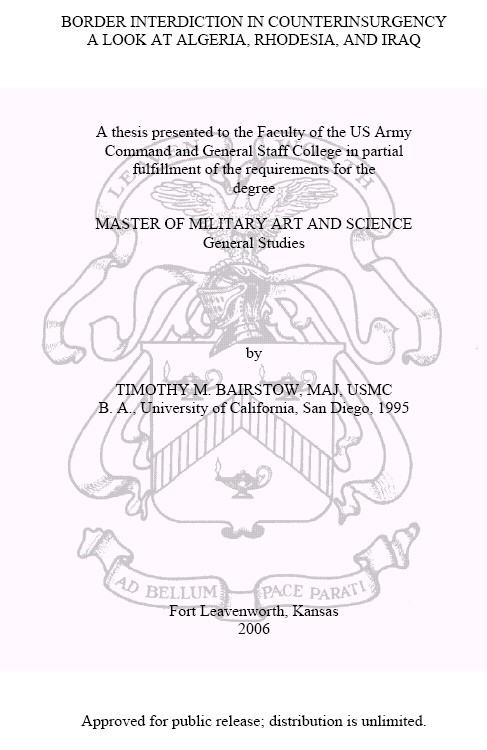
Major Timothy Bairstow of the marines writes in his 2006 U.S. Army Command and General Staff College (CGSC) report: "Border Interdiction In Counterinsurgency A Look At Algeria, Rhodesia, And Iraq":
combatreform.org/borderinterdictionincounterinsurgencyalookatalgeriarhodesiaandiraq.pdf
In September of 1957, the French Army completed what was to become known as the Morice Line, an obstacle belt consisting of an electrified fence, mines, and other obstacles that ran along two hundred miles of the border between Algeria and Tunisia (and also included a less elaborate defensive line along the border between Algeria and Morocco).[2] The French manned the line with thirty thousand troops, supported by radar, artillery, and aircraft. The effects upon the Algerian insurgency were vigorous and lasting; within the first seven months of the Morice Line's construction, the Front de Libération Nationale (FLN), the native Algerian resistance, lost over six thousand men and forty-three hundred weapons during FLN attempts to cross the border.[3] From 1958 through the war's conclusion, the French Army forced fifteen to twenty thousand FLN fighters to sit out of the war because the FLN was unable to penetrate the Morice Line's formidable defenses.[4] While the French ultimately lost Algeria due to political considerations, most historians agree that the French Army left Algeria under favorable military conditions (in other words, the French armed forces were winning militarily). French Army's military success in Algeria was due in large degree to the effects of the Morice Line upon the Algerian insurgency. The Morice Line forced the FLN to leave anywhere from 20 to 50 percent of its fighting force outside of Algeria.[5] More importantly, those forced to the sideline were fighters who had undergone extended periods of training at insurgent bases in Tunisia or Morocco, thus leaving the FLN forces in the Algerian interior deprived of their most capable forces. Attempts to bring trained fighters into Algeria from Tunisia were disastrous for the FLN and resulted in the loss of hundreds of FLN recruits for little gain. Likewise, the FLN could not move recruits to training camps in Tunisia to train in relative safety. Nor were Algerian insurgents able to smuggle weapons across the border. The French effectively cut off the Algerian insurgency from its most critical source of manpower and supplies.
However, Bairstow is totally screwed-up and reporting falsehoods about Rhodesian Fire Forces, perhaps due to USMC bias? The Rhodesian Fire Forces PARACHUTE DROPPED their company-sized blocking forces by C-47 Dakotas--not small helicopter airlanded handfuls. How could he miss this? Does he wear glasses?
www.combatreform.org/RLIfireforce.htm
OPERATIONAL/TECHNOTACTICAL
Afghan tent FOBs needs BATTLEBOXes, M113 Gavin tracks, Non-Linear Logistics--if we are going to stay and try to influence events...consider the early British mechanized success in southern Iraq...we need our own "MECHANDOs" in the NLB-SC or SNC-C...notice the respectful attitude of this British leader...
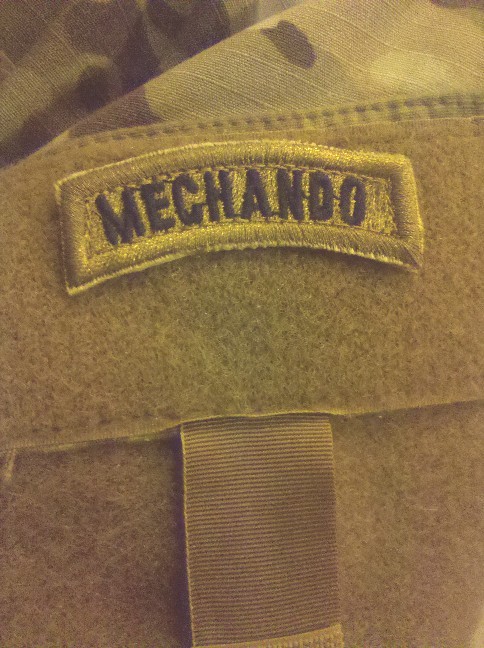
 youtube.com/watch?v=UpdeNcH1H8A
youtube.com/watch?v=UpdeNcH1H8A
BATTLEBOXes must replace flimsy tents
www.combatreform.org/BATTLEBOXinactionphotos.htm
www.reocities.com/strategicmaneuver/battleboxes.htm
M113 Gavin armored tracks to get off easily ambushed/roads-trails, armor protection AS THE MINIMUM TRANSPORTATION STANDARD ON THE NLB
www.combatreform.org/armoredhmmwvsstrykersfail.htm
www.combatreform.org/m113combat.htm
Non-Linear Logistics
www.combatreform.org/abnlogistics.htm
www.chicagotribune.com/news/nationworld/chi- 0607110158jul11,1,736947.story?ctrack=1&cset=true
Taliban haven is GIs' 'Camp Hell'
Afghan villagers `don't want to help us any'By Kim Barker, Tribune foreign correspondent
Chicago Tribune
July 11, 2006Tribune foreign correspondent Kim Barker reported from a remote region in Afghanistan
MUSA QALA BASE, Afghanistan -- Nobody waves at the Soldiers here. Children do not crowd around the Humvees, asking for pens and candy, as they do in the rest of Afghanistan. Even the girls throw rocks at passing U.S. military helicopters.
U.S. troops set up this base in southwestern Helmand province in mid-June to fight insurgents, part of the largest military operation since the fall of the Taliban in late 2001. This area, virtually abandoned by the government for years, is probably the most hostile place for foreign troops in all of Afghanistan. Here, all government enemies have a comfortable home--the opium poppy farmers, the drug runners, the Taliban. Everyone else is scared.
The only Afghan visitors to the new base have either tried to attack it or complained about it. Some Soldiers refer to the nearest large village, Musa Qala, as Taliban Town. Many are resentful of locals who pretend the Taliban does not exist, who refuse to help.
"They just want, want, want," Spec. Jason Ide, 22, said while in his Humvee scouting a route for an upcoming mission. "They don't want to help us any."
To see how violent the war in Afghanistan has turned, look no further than the Soldiers at this base. They have been attacked every few days. On the morning of June 28, a medic known for always carrying a picture of his wife and newborn son was killed when an old land mine exploded. That night, insurgents attacked a convoy carrying supplies to the base.
The next night, insurgents ambushed U.S. Soldiers operating out of a satellite base about 60 miles to the north. Last week, a gunner at the satellite base was shot dead when his convoy was ambushed.
These troops aim to put pressure on the Taliban, to go into areas where the U.S.-led coalition has not had a steady presence before. They are part of Operation Mountain Thrust, in which more than 10,000 Afghan and foreign troops have poured into the southern provinces, attempting to pave the way for a smooth transition in security control later this month from the coalition to NATO troops.
Life on the new base is bleak, a constant struggle in a windy desert where temperatures soar higher than 120 degrees and nightly blasts from 105mm howitzers remind the Taliban that the Soldiers still are there. The camp is protected by barbed wire and a ring of "Hescos," which are large bags that are filled with sand to serve as barriers. Sentries on a hill above the camp and on guard towers can spot anyone approaching.
Everyone lives in long tents that sleep about 50 people. At night the wind picks up, whipping through the tents and covering everything and everyone in sand the consistency of talcum powder. If left alone, the sand would bury this place in a month.
Showers are iffy. Air conditioners sit unused, with no generator to power them. The Taliban destroyed the base's new large refrigerator unit while it was being driven up through Musa Qala, along with the Red Bull, Gatorade and many Soldiers' personal belongings. Soldiers call the base Camp Hell or worse.
"And I thought Iraq was bad," said Staff Sgt. Robert Masher, 29, of Pittson, Pa.
Soldiers here lament that this is a forgotten war, overshadowed by the violence in Iraq, as many Soldiers in Afghanistan have long felt. But increasingly, this is a forgotten deadly war. Just look at Ide's unit, the 3rd Squadron, 71st Cavalry Regiment of the 10th Mountain Division: In the past two months, seven Soldiers have been killed, in fighting and in helicopter accidents.
On June 24, 1st Lt. Joe Lang, 23, of Maui, Hawaii, wrote a letter to his family, talking about the Soldiers who have died, the good men they were, like the fair and even-handed battalion commander who never had seen his new baby daughter. Or the friend shot dead while rescuing an injured man. Or that same injured man and the medic, who both died when the cable on the rescue helicopter snapped. Lang said his heart was broken. He felt strange about his lack of remorse when a key Taliban rebel was killed.
"I still feel alone," Lang told his family. "Realize that no one could understand what I've been through unless they have lived it."
For the Soldiers, life at this base has been a series of attacks. They were first ambushed outside of Kandahar on June 12 while driving to set up the base, in an isolated spot in the middle of a desert, miles from the nearest village. Three days after troops arrived, a man rode up on a motorcycle. As an Afghan army truck drove toward the man, he pulled out a Kalashnikov and began to fire. An Afghan Soldier shot him dead. Two days later, the company north of the Musa Qala base was attacked.
And two days after that, on June 20, a medical convoy tried to give free medical help to the village of Sarbesa. Elders said the U.S. Soldiers scared the women and children and asked the medics to hold their clinic outside the village. Only 30 people came. In other parts of Afghanistan, such clinics typically draw about 250 people.
"We would have been mobbed anywhere else," said Capt. Bill Adams, 36, who has a stash of candy and pens that no Afghans want to take. "The people here are very guarded. It takes patience."
On the way back to the base, the medical convoy was ambushed. Reinforcements had to be sent in, and one U.S. Soldier was shot in the head; his helmet protected him from the bullet.
Days later, 50 elders from Sarbesa came to the U.S. base and asked that the Soldiers not return. The Soldiers have not tried to go back.
On June 28 the Soviet-era land mine exploded, killing the medic, who never complained about the harsh conditions at the base. That night the supply convoy was attacked, and despite reinforcements, insurgents attacked again the next morning.
U.S. troops have tried to win over the locals, by setting up meetings with elders, offering to build wells and handing over gifts of blankets, prayer rugs, vegetable oil, food and school supplies. One village accepted the gifts. But another rejected them, scared of the Taliban's reaction.
Still, a couple of Afghans have agreed to talk about the Taliban. U.S. Soldiers acknowledge that building a relationship here will take time. The Taliban has been entrenched here for years; so have the poppies and the drug traffickers.
"People are more scared of the Taliban," Capt. Scott Horrigan, operations officer at Musa Qala, said of the 2nd Battalion, 87th Infantry Regiment, 10th Mountain Division. "They know they can lie to us, and nothing's going to happen to them."
Some Soldiers hate this place and these people and they are not shy about saying so. They willingly volunteer these feelings, that they hate Afghans, hate Afghanistan and that they do not understand why anyone would fight over such a desolate country for so many years.
Other Soldiers try to put themselves in the minds of the Afghans, or of the children at least, and wonder what it's like to grow up in a desert on the edge of Earth, in a place where the Taliban burns down schools, where brand-new USAID-funded clinics are not used, where the job options are limited to herding goats and growing poppies.
In his letter to his family, Lang wrote that Afghanistan's mountains looked almost beautiful enough for a vacation. He talked about how wasteful war was. And Lang ended his letter to his family with a piece of hope, a rarity here. He talked about running into an Afghan girl and giving her a Pop-tart, even though Soldiers are not supposed to give out food. Lang and his fellow Soldiers showed her how to unwrap it.
"She smiles," Lang wrote. "Beautiful. Hides the food and walks away."
Quality Deeds: Stability Force in Armored Tracks not Trucks; will have manned fixed-wing observation aircraft for 24/7/365 surveillance
Glass Jaw: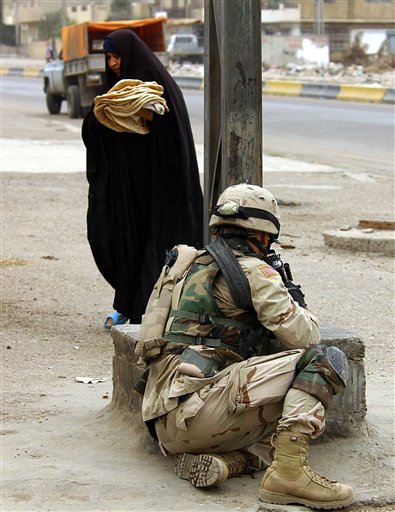
The NLBS-C will not be a glass jaw foot infantry force driving around in wheeled trucks and on foot that cannot defend themselves much less inspire confidence in the people around them.
Able to Turn other Cheek: 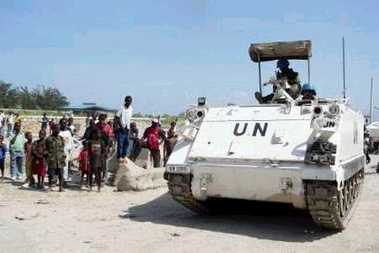
They will be completely mobile in M113 Gavin up-armored light tracks that protect them from all manner of ambushes to such a degree that they do not have to lash out in 360 degrees in return fire because all they got is their fleshy bodies and cannot afford to be wrong about a threat, yet still be close enough to the ground to talk to locals while mounted and be easy to get in/out by rear ramp, troop door, top hatches. Band tracks are getnler than even rubber padded steel tracks if desired.
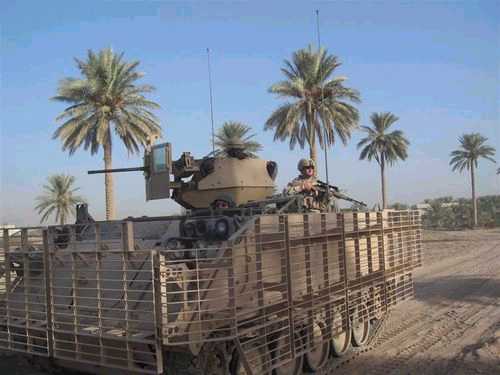
The NLBS-C will NOT be a Donald Rumsfeld RMA gadget force with sensors on every corner to create a George Orwell 1984 electronic tyranny. The NLBS-C will be HUMANS who think and can win over the local populace by their actions/examples/beliefs, who are geared towards leaving the country on its feet ASAP. Fortunately, we do have some science fiction that exposes this as a dangerous path. DoD is totally out of wack with reality and Rumsfeld and the whole RMA firepower-without-physical-maneuver mentality needs to be fired/discarded. This whole unmanned Army mentality is a series of crutches to try to overcome the basic handicap of a lack of courage or power sharing to have adequately armored tracked vehicle equipped humans being on the ground to interact with people and determine good guy from bad guy. To turn the battlefield into a firepower video game, the RMA types are willing to create a digital TYRANY of the 666 Anti-Christ/1984 George Orwell type to try to make up for having no troops on the ground. If we have to become tyrants to not kill our troops are we really being humanitarians?
The next problem above that unmanned warfare is immoral, is that IT WILL NOT WORK.
After 3 years we killed Zarqawi last week allegedly by an air strike because he was betrayed by his own people. Is this the Soviet style future we want? Where we have a killing machine that cannot ascertain who good guy is from bad that just waits for a Judas to offer up a convenient Christ to crucify? The Droid Army from Star Wars was easy to deceive and defeat. Humans + technology beats no humans + technology. The smart enemies will discover where the 1984 sensors are and have fun with us as we spend million dollar bombs trying to blow them up.
This is all driven by civilians who want to pretend like they are warriors from a safe push-button.
If continued, America's very survival will be in jeopardy. Iraq should have shown these fools that mental gadgets without physical human maneuver cannot defeat humans with a civil populace to hide in. Rather than admit they are wrong, the immoral RMA egotists now want to tyranize the civil populace with 1984.
www.newstatesman.com/200606120018America's robot army
Stephen Graham
Monday 12th June 2006
Already there are killing machines operating by remote control. Soon the machines will be able to kill on their own initiative. A new warfare is on its way.
By Stephen Graham
War is about to change, in terrifying ways. America's next wars, the ones the Pentagon is now planning, will be nothing like the conflicts that have gone before them.
In just a few years, U.S. forces will be able to deal out death, not at the squeeze of a trigger or even the push of a button, but with no human intervention whatsoever. Many fighting Soldiers - those GIs in tin hats who are dying two a day in Iraq - will be replaced by machines backed up by surveillance technology so penetrating and pervasive that it is referred to as "military omniscience". Any Americans involved will be less likely to carry rifles than PlayStation-style consoles and monitors that display simulated streetscapes of the kind familiar to players of Grand Theft Auto - and they may be miles from where the killing takes place.
War will progressively cease to be the foggy, confusing, equalising business it has been for centuries, in which the risks are always high, everyone faces danger and suffers loss, and the few can humble the mighty. Instead, it will become remote, semi-automatic and all-knowing, entailing less and less risk to American lives and taking place largely out of the sight of news cameras. And the danger is close to home: the coming wars will be the "war on terror" by other names, conflicts that know no frontiers. The remote-controlled war coming tomorrow to Khartoum or Mogadishu, in other words, can happen soon afterwards, albeit in moderated form, in London or Lyons.
This is no geeky fantasy. Much of the hardware and software already exists and the race to produce the rest is on such a scale that US officials are calling it the "new Manhattan Project". Hundreds of research projects are under way at American universities and defence companies, backed by billions of dollars, and Donald Rumsfeld's department of defence is determined to deliver as soon as possible. The momentum is coming not only from the relentless humiliation of U.S. forces at the hands of some determined insurgents on the streets of Baghdad, but also from a realisation in Washington that this is the shape of things to come. Future wars, they believe, will be fought in the dirty, mazy streets of big cities in the "global south", and if the U.S. is to prevail it needs radically new strategies and equipment.
Only fragments of this story have so far appeared in the mainstream media, but enough information is available on the internet, from the comments of those in charge and in the specialist press to leave no room for doubt about how sweeping it is, how dangerous and how imminent.
Military omniscience is the starting point. Three months ago Tony Tether, director of the Defence Advanced Research Projects Agency (Darpa), the Pentagon's research arm, described to a U.S. Senate committee the frustration felt by officers in Iraq after a mortar-bomb attack. A camera in a drone, or unmanned aircraft, spotted the attackers fleeing and helped direct U.S. helicopters to the scene to destroy their car - but not before some of those inside had got out. "We had to decide whether to follow those individuals or the car," he said, "because we simply didn't have enough coverage available." So some of the insurgents escaped. Tether drew this moral: "We need a network, or web, of sensors to better map a city and the activities in it, including inside buildings, to sort adversaries and their equipment from civilians and their equipment, including in crowds, and to spot snipers, suicide bombers or IEDs [improvised explosive devices] . . . This is not just a matter of more and better sensors, but, just as important, the systems needed to make actionable intelligence out of all the data."
Darpa has a host of projects working to meet those needs, often in surprising ways. One, called Combat Zones That See, aims to scatter across cities thousands of tiny CCTV cameras, each equipped with wireless communication software that will make it possible to link their data and track the movements of every vehicle on the streets. The cameras themselves will not be that different from those found in modern mobile phones.
Seeing through concrete
Already in existence are sensors the size of matchboxes which respond to heat, light, movement or sound; and a variety of programmes, including one called Smart Dust, are working on further miniaturising these and improving their ability to work as networks. A dozen US university teams are also developing micro-aircraft, weighing a few grams each, that imitate birds and insects and could carry sensor equipment into specific buildings or rooms.
Darpa's VisiBuilding programme, meanwhile, is making "X-ray eye" sensors that can see through concrete, locating people and weapons inside buildings. And Human ID at a Distance is working on software that can identify individual people from scans of their faces, their manner of walking or even their smell, and then track them anywhere they go.
Closely related to this drive are projects involving compu-ter simulations of urban landscapes and entire cities, which will provide backdrops essential for using the data gathered by cameras and sensors. The biggest is Urban Resolve, a simulated war against a full-scale insurgency in the Indonesian capital, Jakarta, in the year 2015.
Digitised cities
Eight square miles of Jakarta have been digitised and simulated in three dimensions. That will not surprise computer gamers, but Urban Resolve goes much further: the detail extends to the interiors of 1.6 million buildings and even the cellars and sewers beneath, and it also includes no fewer than 109,000 moving vehicles and people. Even the daily rhythms of the city have been simulated. The roads, says one commentator, "are quiet at night, but during weekday rush hours they become clogged with traffic. People go to work, take lunch breaks and visit restaurants, banks and churches."
Digitise any target city and integrate this with the flow of data from many thousands of sensors and cameras, stationary and mobile, and you have something far more powerful than the regular snapshots today's satellites can deliver. You have continuous coverage, around corners and through walls. You would never, for example, lose those mortar bombers who got out of their car and ran away.
All this brings omniscience within reach. The U.S. web-based magazine DefenseWatch, which monitors developments in strategy and hardware, recently imagined the near-future scenario of an operation in the developing world in which a cloud of minute, networked sensors is scattered like dust over a target city using powerful fans. Directed by the sensors, unmanned drones patrol the city, building up a visual and audio picture of every street and building. "Every hostile person has been identified and located," continues the scenario. "From this point on, nobody in the city moves without the full and complete knowledge of the mobile tactical centre."
Another Darpa project, Integrated Sensor is Structure, is working on the apex of such a system: huge, unmanned communications and surveillance airships that will loiter above target areas at an altitude of 70,000 feet - far above most airline traffic - providing continuous and detailed coverage over a whole city for a year or more.
From these platforms, all the information could be fed down in real time to Soldiers and commanders carrying the hand-held computers being developed by the Northrop Grumman Corporation with Darpa funding. The real aim, however, is not to expose flesh-and-blood Americans on the ground, but where possible to use robots. That way there will be no "body bag problem"; and in any case machines are better equipped than human beings to process and make use of the vast quantities of data involved.
In one sense, robots are not new: already, armed drones such as Predator, "piloted" by CIA operators from screens in Florida, have been responsible for at least 80 assassination raids in Iraq, Afghanistan, Yemen and Pakistan (killing many civilians as well). Defence contractors have also developed ground-based vehicles capable of carrying cameras and weapons into the battlefield.
But this is only the start. What will make the next generation different is that they are being designed so that they can choose, all on their own, the targets they will attack. Operating in the air and on the ground, they are being equipped with Automated Target Recognition software capable not only of comparing signals received from new-generation sensors with databases of targets, but also of "deciding" to fire guns or launch missiles automatically once there is a good "fit". Automated killing of this kind hasn't been approved by anyone yet, but it is certainly being planned. John Tirpak, editor of Air Force Magazine in the U.S., expects initially that humans will retain the last word, but he predicts that once robots "establish a track record of reliability in finding the right targets and employing weapons properly", the "machines will be trusted to do even that".
Planners believe, moreover, that robot warriors have a doomsday power. Gordon Johnson, a team leader on Project Alpha, which is developing robots for the U.S. Army, predicts that, if the robot's gun can return fire automatically and instantly to within a metre of a location from which its sensors have detected a gunshot, it will always kill the person who has fired. "Anyone who would shoot at our forces would die," says Johnson. "Before he can drop that weapon and run, he's probably already dead. Well now, these cowards in Baghdad would have to pay with blood and guts every time they shoot at one of our folks. The costs of poker went up significantly. The enemy, are they going to give up blood and guts to kill machines? I'm guessing not."
Again, this may sound like the plot of a B-movie, but the US military press, not a body of people given to frivolity, has been writing about it for some time. DefenseWatch, for example, also featured robots in that future war scenario involving sensors dispersed by fans. Once a complete picture of the target city is built up, the scenario predicted, "unmanned air and ground vehicles can now be vectored directly to selected targets to take them out, one by one".
The silver bullet
It is shocking, but will it happen? The project has its critics, even in the Pentagon, where many doubt that technology can deliver such a "silver bullet". But the doubters are not in the ascendant, and it would be folly, against the background of the Iraq disaster and the hyper-militarised stance of the Bush administration, to write it off as a computer gamer's daydream.
One reason Washington finds it so attractive is that it fits closely with the ideologies of permanent war that underpin the "war on terror". What better in that war than an army of robot warriors, permanently cruising those parts of the globe deemed to be "supporting terrorism"? And what a boon if they destroy "targets" all on their own, with not a single U.S. Soldier at risk. Even more seductively, this could all take place out of sight of the capricious western media.
These technologies further blur the line between war and entertainment. Already, games featuring urban warfare in digitised Arab cities are everyday suburban entertainment - some are produced by the US forces themselves, while a firm called Kuma Reality offers games refreshed weekly to allow players to simulate participation in fighting in Iraq almost as it is happening in the real world.
Creepy as this is, it can be worse: those involved in real warfare may have difficulty remembering they are not playing games. "At the end of the work day," one Florida-based Predator operator reflected to USA Today in 2003, "you walk back into the rest of life in America." Will such people always remember that their "work day", lived among like-minded colleagues in front of screens, involves real death on the far side of the world? As if to strengthen the link with entertainment, one emerging military robot, the Dragon Runner, comes with a gamer's control panel. Greg Heines, who runs the project, confesses: "We modelled the controller after the Play Station 2 because that's what these 18-, 19-year-old marines have been playing with pretty much all of their lives."
The U.S. aspiration to be able to kill without human involvement and with minimum risk raises some dreadful questions. Who will decide what data can be relied on to identify a "target"? Who will be accountable when there is an atrocity? And what does this say about western perceptions of the worth and rights of the people whose cities are no more than killing fields, and who themselves are mere "targets" to be detected, tracked and even killed by machines?
Finally, the whole process feeds alarmingly into the "homeland security" drive in the cities of the global north. The same companies and universities are supplying ideas to both, and the surveillance, tracking and targeting technologies involved are closely related. What we are seeing is a militarisation of urban life in both north and south that helps perpetuate the biggest and most dangerous myth of all, which is that technical and military solutions can somehow magic away resistance to George W. Bush's geopolitical project.
Stephen Graham is professor of human geography at Durham University. His latest book, "Cities, War and Terrorism", is published by Blackwell (�19.99)
The human quality we need must be selective in the force used otherwise WE CREATE MORE REBELS. A good example is the U.S. Army 3rd Cavalry Regiment HUMANS IN ARMORED TRACKS led by renaissance man, Colonel H.R. McMaster in Tal Afar
www.newyorker.com/printables/fact/060410fa_fact2
THE LESSON OF TAL AFARby GEORGE PACKER
Is it too late for the Administration to correct its course in Iraq?
Issue of 2006-04-10
Posted 2006-04-03
Tal Afar is an ancient city of a quarter-million inhabitants, situated on a smuggling route in the northwestern desert of Iraq, near the Syrian border. In January, when I visited, the streets had been muddied by cold winter rains and gouged by the tracks of armored vehicles. Tal Afar's stone fortifications and narrow alleys had the haggard look of a French town in the First World War that had changed hands several times. In some neighborhoods, markets were open and children played in the streets; elsewhere, in areas cordoned off by Iraqi checkpoints, shops remained shuttered, and townspeople peered warily from front doors and gates.
Since the Iraq war began, American forces had repeatedly driven insurgents out of Tal Afar, but the Army did not have enough troops to maintain a sufficient military presence there, and insurgents kept returning to terrorize the city. In early 2004, the division that had occupied northwestern Iraq was replaced by a brigade, with one-third the strength. A single company-about a hundred and fifty Soldiers- became responsible for protecting Tal Afar. Insurgents soon seized the city and turned it into a strategic stronghold.
Last fall, thousands of American and Iraqi Soldiers moved in to restore government control. This time, a thousand Americans stayed, and they slowly established trust among community leaders and local residents; by January, a tenuous peace had taken hold. The operation was a notable success in the Administration's newly proclaimed strategy of counterinsurgency, which has been described by Secretary of State Condoleezza Rice as "clear, hold, and build." Last month, in a speech in Cleveland, President Bush hailed the achievement in Tal Afar as evidence that Iraq is progressing toward a stable future. "Tal Afar shows that when Iraqis can count on a basic level of safety and security, they can live together peacefully," he said. "The people of Tal Afar have shown why spreading liberty and democracy is at the heart of our strategy to defeat the terrorists."
But theQ�0A ���`�_�A{�_�_(tm)g<�4� 3w�l�w���֨�`�+1/4`pA�9�c�_>_ĵ�9�tH�"��rous failures, and very late in the war-perhaps too late. And the operation succeeded despite an absence of guidance from senior civilian and military leaders in Washington. The Soldiers who worked to secure Tal Afar were, in a sense, rebels against an incoherent strategy that has brought the American project in Iraq to the brink of defeat.
THE "I" WORD
Colonel H. R. McMaster, the commander of the 3rd Armored Cavalry Regiment, is forty-three years old, a small man, thick in the middle, with black eyebrows that are the only signs of hair on a pale, shaved head. His features are deeply furrowed across the brow and along the nose, as if his head had been shaped from modelling clay; but when he grins mischief creases his face, and it's easy to imagine him as an undaunted ten-year-old, marching around and giving orders in his own private war. The first time I saw him, he had a football in his hands and was throwing hard spirals to a few other Soldiers next to his plywood headquarters, on a muddy airfield a few miles south of Tal Afar.
McMaster and the 3rd A.C.R. had been stationed in Tal Afar for nine months. When they arrived, in the spring of 2005, the city was largely in the hands of hard-core Iraqi and foreign jihadis, who, together with members of the local Sunni population, had destabilized the city with a campaign of intimidation, including beheadings aimed largely at Tal Afar's Shiite minority. By October, after months of often fierce fighting and painstaking negotiations with local leaders, McMaster's regiment, working alongside Iraqi Army battalions, had established bases around the city and greatly reduced the violence. When I met McMaster, his unit was about to return home; the men were to be replaced by a brigade of the 1st Armored Division that had no experience in Tal Afar, and no one knew if the city would remain secure. (Within weeks, there were reports that sectarian killings were on the rise.)
The lessons that McMaster and his Soldiers applied in Tal Afar were learned during the first two years of an increasingly unpopular war. "When we came to Iraq, we didn't understand the complexity-what it meant for a society to live under a brutal dictatorship, with ethnic and sectarian divisions," he said, in his hoarse, energetic voice. "When we first got here, we made a lot of mistakes. We were like a blind man, trying to do the right thing but breaking a lot of things." Later, he said, "You gotta come in with your ears open. You can't come in and start talking. You have to really listen to people."
McMaster is a West Point graduate who earned a Silver Star for battlefield prowess during the 1991 Gulf War: his armored cavalry troop stumbled across an Iraqi mechanized brigade in the middle of a sandstorm and destroyed it. That war was a textbook case of what the military calls "kinetic operations," or major combat in relatively uncomplicated circumstances; the field of battle was almost easier, some Gulf War veterans say, than the live-fire exercises at the National Training Center, in Fort Irwin, California. After the war, McMaster earned a doctorate in history from the University of North Carolina. His dissertation, based on research in newly declassified archives, was published in 1997, with the title "Dereliction of Duty: Lyndon Johnson, Robert McNamara, the Joint Chiefs of Staff, and the Lies That Led to Vietnam." The book assembled a damning case against senior military leaders for failing to speak their minds when, in the early years of the war, they disagreed with Pentagon policies. The Joint Chiefs of Staff, knowing that Johnson and McNamara wanted uncritical support rather than honest advice, and eager to protect their careers, went along with official lies and a split-the- difference strategy of gradual escalation that none of them thought could work. "Dereliction of Duty" won McMaster wide praise, and its candor inspired an ardent following among post-Vietnam officers.
In April, 2003, at the moment when General Tommy Franks's "shock and awe" campaign against the regime of Saddam Hussein appeared to be a clean victory, the Army War College's Center for Strategic Leadership approved the release of a monograph by McMaster entitled "Crack in the Foundation: Defense Transformation and the Underlying Assumption of Dominant Knowledge in Future War." McMaster, who describes himself as "a bit of a Luddite," argued against the notion that new weapons technology offered the promise of certainty and precision in warfare. The success of the Gulf War, he wrote, had led military thinkers to forget that war is, above all, a human endeavor. He examined the messier operations of the nineteen-nineties, beginning with the debacle in Somalia, and concluded, "What is certain about the future is that even the best efforts to predict the conditions of future war will prove erroneous. What is important, however, is to not be so far off the mark that visions of the future run counter to the very nature of war and render American forces unable to adapt to unforeseen challenges."
In the spring of 2003, McMaster joined the staff of General John Abizaid at Central Command. Abizaid soon took over from Franks, who got out of Iraq and the military just as his three-week triumph over the Baathist regime showed signs of turning into a long ordeal. Although the violence in Iraq was rapidly intensifying, no one at the top levels of the government or the military would admit that an insurgency was forming.
"They didn't even want to say the `i' word," one officer in Iraq told me. "It was the spectre of Vietnam. They did not want to say the `insurgency' word, because the next word you say is `quagmire.' The next thing you say is `the only war America has lost.' And the next thing you conclude is that certain people's vision of war is wrong."
The most stubborn resistance to the idea of an insurgency came from Donald Rumsfeld, the Defense Secretary, who was determined to bring about a "revolution in military affairs" at the Pentagon-the transformation of war fighting into a combination of information technology and precision firepower that would eliminate the need for large numbers of ground troops and prolonged involvement in distant countries. "It's a vision of war that totally neglects the psychological and cultural dimensions of war," the officer said. Rumsfeld's denial of the existence of the insurgency turned on technicalities: insurgencies were fought against sovereign governments, he argued, and in 2003 Iraq did not yet have one.
In October of that year, a classified National Intelligence Estimate warned that the insurgency was becoming broad-based among Sunni Arabs who were unhappy with the American presence in Iraq, and that it would expand and intensify, with a serious risk of civil war. But Rumsfeld, President Bush, and other Administration officials continued to call the escalating violence in Iraq the work of a small number of Baathist "dead-enders" and foreign jihadis. For Rumsfeld, this aversion became a permanent condition. Over Thanksgiving weekend last year, he had a self-described "epiphany" in which he realized that the fighters in Iraq didn't deserve the word "insurgents." The following week, at a Pentagon press conference, when the new chairman of the Joint Chiefs of Staff, marine corps general Peter Pace, said, rather sheepishly, "I have to use the word `insurgent,' because I can't think of a better word right now," Rumsfeld cut in, " `Enemies of the legitimate Iraqi government'-how's that?"
The refusal of Washington's leaders to acknowledge the true character of the war in Iraq had serious consequences on the battlefield: in the first eighteen months, the United States government failed to organize a strategic response to the insurgency. Captain Jesse Sellars, a troop commander in the 3rd A.C.R., who fought in some of the most violent parts of western Iraq in 2003 and 2004, told me about a general who visited his unit and announced, "This is not an insurgency." Sellars recalled thinking, "Well, if you could tell us what it is, that'd be awesome." In the absence of guidance, the 3rd A.C.R. adopted a heavy-handed approach, conducting frequent raids that were often based on bad information. The regiment was constantly moved around, so that officers were never able to form relationships with local people or learn from mistakes. Eventually, the regiment became responsible for vast tracts of Anbar province, with hundreds of miles bordering Saudi Arabia, Jordan, and Syria; it had far too few men to secure any area.
A proper strategy would have demanded the coördinated use of all the tools of American power in Iraq: political, economic, and military. "Militarily, you've got to call it an insurgency," McMaster said, "because we have a counterinsurgency doctrine and theory that you want to access." The classic doctrine, which was developed by the British in Malaya in the nineteen-forties and fifties, says that counterinsurgency warfare is twenty per cent military and eighty per cent political. The focus of operations is on the civilian population: isolating residents from insurgents, providing security, building a police force, and allowing political and economic development to take place so that the government commands the allegiance of its citizens. A counterinsurgency strategy involves both offensive and defensive operations, but there is an emphasis on using the minimum amount of force necessary. For all these reasons, such a strategy is extremely hard to carry out, especially for the American military, which focusses on combat operations. Counterinsurgency cuts deeply against the Army's institutional instincts. The doctrine fell out of use after Vietnam, and the Army's most recent field manual on the subject is two decades old.
The Pentagon's strategy in 2003 and 2004 was to combat the insurgency simply by eliminating insurgents-an approach called "kill-capture." Kalev Sepp, a retired Special Forces officer, who now teaches at the Naval Postgraduate School, in Monterey, California, said of the method, "It's all about hunting people. I think it comes directly from the Secretary of Defense-`I want heads on a plate.' You'll get some people that way, but the failure of that approach is evident: they get Hussein, they get his sons, they continue every week to kill more, capture more, they've got facilities full of thousands of detainees, yet there's more insurgents than there were when they started." In "Dereliction of Duty," McMaster wrote that a strategy of attrition "was, in essence, the absence of a strategy."
During the first year of the war, Lieutenant General Ricardo Sanchez was the commander of military operations in Iraq. He never executed a campaign plan-as if, like Rumsfeld, he assumed that America was about to leave. As a result, there was no governing logic to the Army's myriad operations. T. X. Hammes, a retired marine colonel who served in Baghdad in early 2004, said, "Each division was operating so differently, right next to the other-absolutely hard-ass here, and hearts-and-minds here." In the first year of the war, in Falluja and Ramadi, Major General Charles Swannack, of the 82nd Airborne Division, emphasized killing and capturing the enemy, and the war grew worse in those places; in northern Iraq, Major General David Petraeus, of the 101st Airborne Division, focussed on winning over the civilian population by encouraging economic reconstruction and local government, and had considerable success. "Why is the 82nd hard- ass and the 101st so different?" Hammes asked. "Because Swannack sees it differently than Petraeus. But that's Sanchez's job. That's why you have a corps commander." Lieutenant General Sanchez, who never received his fourth star, remains the only senior military official to have suffered professionally for the failures of the Iraq war. (He is now stationed in Germany.)
From his post in Central Command, McMaster pushed for a more imaginative and coherent response to an insurgency that he believed was made up of highly decentralized groups with different agendas making short-term alliances of convenience. By August, 2004, Falluja had fallen under insurgent control, Mosul had begun to collapse, and Najaf had become the scene of a ferocious battle. On August 5th, General George Casey, Sanchez's successor, signed the Operation Iraqi Freedom campaign plan. The document, which was largely written on Sanchez's watch, remains classified, but Kalev Sepp described it to me in general terms. (In early 2004, McMaster had recruited him to be an adviser on Iraq.) Sepp said, "It was a product that seemed to be toning itself down. It was written as if there were knowledge of this bad thing, an insurgency, that was coming up underfoot, and you had to deal with it, but you had to be careful about being too direct in calling it an insurgency and dealing with it that way, because then you would be admitting that it had always been there but you had ignored it up to that point. It did not talk about what you had to do to defeat an insurgency. It was not a counterinsurgency plan."
In the fall of 2004, Sepp went to work under Casey in the strategy division of Multi-National Force Iraq, MNF-I. In Baghdad, a small group of officers, led by an Army colonel named Bill Hix, worked with Sepp and two analysts from the RAND Corporation to turn the campaign plan into a classic counterinsurgency strategy that focussed, above all, on the training of Iraqi security forces, with American advisers embedded in Iraqi units and partnerships between the two armies.
By November, 2004, MNF-I had outlined a strategy, and the military command in Baghdad finally had a plan for fighting the insurgency. Much time had been lost, and putting the plan into effect in numerous units was a formidable task. Counterinsurgency, by its nature, is highly dependent on local knowledge and conditions. Changes had to be made at the level of the platoon, the company, and the battalion; the campaign plan helped officers catch up with what some local commanders had already learned to do.
By then, Colonel McMaster had arrived in Fort Carson, Colorado, and he had assumed command of the 3rd A.C.R. He had just a few months to get the regiment ready for its second deployment to Iraq. The unit ended up in Tal Afar-a place that was being called the next Falluja.
A WAR FOR PEOPLE
In Colorado, McMaster and his officers, most of them veterans of the war's first year, improvised a new way to train for Iraq. Instead of preparing for tank battles, the regiment bought dozens of Arab dishdashas, which the Americans call "man dresses," and acted out a variety of realistic scenarios, with Soldiers and Arab-Americans playing the role of Iraqis. "We need training that puts Soldiers in situations where they need to make extremely tough choices," Captain Sellars, the troop commander, said. "What are they going to see at the traffic control point? They're possibly going to have a walk-up suicide bomber-O.K., let's train that. They're going to have an irate drunk guy that is of no real threat-let's train that. They're going to have a pregnant lady that needs to get through the checkpoint faster-O.K., let's train that." Pictures of Shiite saints and politicians were hung on the walls of a house, and Soldiers were asked to draw conclusions about the occupants. Soldiers searching the house were given the information they wanted only after they had sat down with the occupants three or four times, accepted tea, and asked the right questions. Soldiers filmed the scenarios and, afterward, analyzed body language and conversational tone. McMaster ordered his Soldiers never to swear in front of Iraqis or call them "hajjis" in a derogatory way (this war's version of "gook"). Some were selected to take three-week courses in Arabic language and culture; hundreds of copies of "The Modern History of Iraq," by Phebe Marr, were shipped to Fort Carson; and McMaster drew up a counterinsurgency reading list that included classic works such as T. E. Lawrence's "Seven Pillars of Wisdom," together with "Learning to Eat Soup with a Knife," a recent study by Lieutenant Colonel John Nagl, a veteran of the Iraq war.
Sellars told me, "I don't know how many times I've thought, and then heard others say, `Wish I'd known that the first time.' " The rehearsals in Colorado, he said, amounted to a recognition that "this war is for the people of Iraq." Sellars, who grew up in a family of lumber millers in rural Arkansas, described it as a kind of training in empathy. "Given these circumstances, what would be my reaction?" he asked. "If I was in a situation where my neighbor had gotten his head cut off, how would I react? If it was my kid that had gotten killed by mortars, how would I react?"
By the time two squadrons of the 3rd A.C.R. reached the outskirts of Tal Afar, in the spring of 2005, the city was being terrorized by takfirin-Sunni extremists who believe that Muslims who don't subscribe to their brand of Islam, especially Shiites, are infidels and should be killed. The city was central to the strategy of the Jordanian terrorist Abu Musab al-Zarqawi; Tal Afar had become a transit point for foreign fighters arriving from Syria, and a base of operations in northern Iraq. Zarqawi exploited tribal and sectarian divisions among the city's poor and semiliterate population, which consists mostly of Turkomans, rather than Arabs, three-quarters of them Sunni and one-quarter Shiite. The mayor was a pro-insurgent Sunni. The police chief, appointed by the government of Prime Minister Ibrahim al-Jaafari, was a Shiite. His all-Shiite force was holed up in an area of high ground in the middle of the city known as the Castle, which is surrounded by sixteenth-century Ottoman ramparts. Unable to control the city, the Shiite police sent out commandos (McMaster described them as a "death squad") to kidnap and kill Sunnis. Outside the Castle, radical young Sunnis left headless corpses of Shiites in the streets as a warning to anyone who contemplated coöperating with the Americans or the Iraqi government. Shiites living in mixed neighborhoods fled. "The Shia and Sunni communities fell in on themselves," McMaster said. "They became armed camps in direct military competition with one another."
McMaster's point man in the effort to stabilize the city was Lieutenant Colonel Chris Hickey, a squadron commander. Hickey, a good- looking man who has soft brown eyes and an aquiline nose, almost never raises his voice and seems as ordinary and steady as McMaster is intellectually restless and gregarious. He's the father of two girls, and it's easy to picture him at a parent-teacher conference. His Soldiers spoke of him with reverence; a major in the squadron described Hickey as "the sort of quiet man who feels things very deeply," and Jesse Sellars spoke of his "tactical patience." Last summer, while American and Iraqi Soldiers moved block by block into the city, encountering heavy resistance that often took the form of three-hour firefights, Hickey began to study the local power structure. For several months, he spent forty or fifty hours a week with sheikhs from Tal Afar's dozens of tribes: first the Shiite sheikhs, to convince them that the Americans could be counted on to secure their neighborhoods; and then the Sunni sheikhs, many of whom were passive or active supporters of the insurgency.
"The Shia freaked out," Hickey told me inside his cramped headquarters, in a derelict cluster of cement buildings behind the crenellated ramparts of the Castle. " `Don't we give you information? So why are you meeting with the Sunnis?' `Because I'm trying to be balanced. I'm trying to stabilize your city. If I just talk to you, I'm not going to stabilize your city.' We tried to switch the argument from Sunni versus Shia, which was what the terrorists were trying to make the argument, to Iraqi versus takfirin."
Hickey's first attempts to persuade Sunnis to join the Tal Afar police force yielded only three recruits, but he did not give up. In painstakingly slow and inconclusive encounters, each one centering on the same sectarian grievances and fears, Hickey tried to establish common interests between the Sunnis and the Shiites. He also attempted to drive a wedge between nationalist-minded Sunnis and extremists, a distinction that, in the war's first year or two, American Soldiers were rarely able to make; they were simply fighting "bad guys." At the highest levels of the Administration, the notion of acknowledging the enemy's grievances was dismissed as defeatist. But in Tal Afar I heard expressions of Soldierly respect for what some Americans called the Iraqi resistance. "In a city that's seventy-five per cent Sunni, if you approach it from a point of view of bringing in or killing everyone who's had anything to do with the insurgency you're bound to fail," Major Michael Simmering said. "Imagine how many people in this town have picked up a rifle and taken a shot at coalition forces. Do we really want to try to arrest them all?" Lieutenant Brian Tinklepaugh explained, "You can't sever your ties with anyone-even your enemy. People with ties to the insurgents have us over for tea."
Hickey, during his conversations with sheikhs, was educating himself in the social intricacies of Tal Afar's neighborhoods, so that his men would know how a raid on a particular house would be perceived by the rest of the street. ("Effects-based operations," a term of art in counterinsurgency, rolled off the tongue of every young officer I met in Tal Afar.) He was also showing his Soldiers what kind of war he wanted them to fight. It required unlearning Army precepts, under fire. "The tedium of counterinsurgency ops, the small, very incremental gains-our military culture doesn't lend itself to that kind of war," Jack McLaughlin, a major on Hickey's staff, told me. "There are no glorious maneuvers like at the National Training Center, where you destroy the Krasnovian hordes. It's just a slow grind, and you have to have patience."
At the same time, the 3rd A.C.R. engaged in frequent combat; ultimately, the regiment lost twenty-one Soldiers in northwestern Iraq, and one platoon suffered a casualty rate of forty per cent. Last September, Colonel McMaster staged a push into Surai, the oldest, densest part of the city, which had become the base of insurgent operations; there were days of heavy fighting, with support from Apache helicopters shooting Hellfire missiles. Most of the civilians in the area, who had been warned of the coming attack, fled ahead of the action (unknown numbers of insurgents escaped with them), and though many buildings were demolished, the damage to the city wasn't close to the destruction of Falluja in November, 2004. "There are two ways to do counterinsurgency," Major McLaughlin said. "You can come in, cordon off a city, and level it, à la Falluja. Or you can come in, get to know the city, the culture, establish relationships with the people, and then you can go in and eliminate individuals instead of whole city blocks."
After McMaster's offensive, Hickey and a squadron of a thousand men set up living quarters next to Iraqi Army Soldiers, in primitive patrol bases without hot water, reliable heat, or regular cooked meals. One afternoon, I walked with Hickey a hundred yards from his headquarters-past Soldiers on guard duty warming themselves over a barrel fire-to the mayor's office, in the Castle. The new mayor, Najim Abdullah alJabouri, is a secular Sunni Arab and a former brigadier general from Baghdad, who speaks no Turkmen, Tal Afar's main language. The city was so polarized that the provincial authorities had turned to an outsider to replace the corrupt former mayor and win a measure of confidence from all sides. Najim, a chain- smoker, wore a dark suit and a purple shirt without a tie; his face was drawn and he had dark pouches under his eyes. On his wall hung a photograph of him with McMaster. The Mayor had written a letter to Bush, Rumsfeld, and Congress asking them to extend the 3rd A.C.R.'s deployment in Tal Afar for another year.
"If a doctor makes an operation and the operation succeeds, it's not a good thing to put the patient under the care of another doctor," the Mayor told me. "This doctor knows the wound, he knows the patient." He added, "Hickey knows my children by name."
I asked what would happen if, as before, the Americans withdrew from Tal Afar.
"What? No American forces?" The Mayor could hardly comprehend my question. "It will take only one month and the terrorists will take over. At a minimum, we need three years for the Iraqi Army to be strong enough to take control of the country-at least three years. You can't measure the Army only by weapons. It's building people, too."
The Mayor had once been tempted to join the insurgency. He lost his military career in 2003, when L. Paul Bremer III, the administrator of the Coalition Provisional Authority-the American occupation government-dissolved the old Iraqi Army. "Bremer gave the order that whole families die," he said. "I decided that if my children died I would pick up my gun in revenge." But the dynamic in Tal Afar, where the U.S. Army seemed to be cleaning up after its own mistakes, had improved his opinion of the Americans. "I began to work with the Americans here and saw a new picture. I thought before that all Americans, like Bremer and the people we saw on TV, were killers and turned guns on Iraqis. But when I worked with them and saw them more, I realized they were different. Before, we were just sitting and watching Al Jazeera and believing it. Now I see it's a lying network."
The intensity of the Mayor's attachment to the Americans was understandable. They were in the same position, outsiders trying to hold the city together and persuade its tribes and sects to find a common national identity. I once saw Hickey ask a group of police trainees at a new station whether they were Sunni or Shiite, and when they started to answer he said, "No-Iraqi!" Hickey had seen the Mayor demonstrate the lesson to an elementary-school classroom.
Down the hall from the Mayor's office was a small conference room dominated by a thirty-foot table. Along each side, behind clouds of cigarette smoke, Tal Afar's notables sat grimly in tribal dress and business clothes: Sunnis on one side, Shiites on the other. It was only the second time the two groups had met in the Castle. The Mayor had told me that cold drinks were among his main negotiation tools, and everyone was sipping a Pepsi or a Sprite. The Mayor took his place at the head of the table. On the wall behind him hung a giant Iraqi flag.
The meeting soon deteriorated. There were complaints about the slow pace of rebuilding, the uneven distribution of contracts, the lack of government funds, and the inability of Shiite families who had fled Tal Afar to return to the mixed neighborhoods. "The rebuilding is something horrible," the Mayor said, in agreement. "But it contains a wonderful thing: it's not accepted by both sectors. So that's proof they can be united."
Shiite sheikhs accused the Sunnis of tolerating the presence of terrorists, and Sunni sheikhs accused the Shia of making unwarranted generalizations about them. "This is our second meeting, and we're saying the same things," a Shiite sheikh complained. "What is the point?"
"Sitting here is the point," the Mayor, relentlessly cheerful, said; I was beginning to understand his look of exhaustion. "It's wonderful that you are at least sitting together. We're supposed to have a meeting of the reconstruction committee, but the important thing is we should reconstruct ourselves-then everything will be easier."
A Sunni sheikh demanded, "If you want to make things better, why do you ask people applying to be police whether they are Sunni or Shiite? Asking will only consolidate the problems."
"We want to create a balance between Shiite and Sunni," the Mayor answered. "If the Sunnis come, believe me, after a while we won't ask this question."
After listening to the complaints of the Sunnis, a Shiite sheikh lost his temper and stood up to face the other side of the table: "The people who are fighting-where do they come from? They don't pop up from the ground. Some of you know who they are." The sheikh's father had been ambushed and killed on the way to a reconciliation meeting with a Sunni tribe. "Only Shia have these problems," he said.
That night, I visited the jail at a police station between Hickey's headquarters and the Mayor's office. Forty-seven prisoners were squeezed into a cell so tight that they had to take turns sleeping; four or five others were crammed into the latrine. When a guard slid aside a plywood sheet covering the cell's barred door, the prisoners, dazed and wide-eyed, protested their innocence and asked for blankets. One boy said that he was twelve years old. A fat, middle- aged man who claimed to be a teacher from Mosul told me in fluent English that he'd been arrested because a roadside bomb had happened to go off near a taxi in which he was riding. He hadn't seen a judge in a month, and hadn't seen a lawyer at all.
Next door to the cell, in an unlit room whose roof had partially caved in, offering a view of the starry desert sky, several policemen were trying to stay warm around a petrol burner. With one exception, they were Shiites. Police work was the only job they could find, they said; Sunnis had taken their old jobs. The chief, whose name was Ibrahim Hussein, said, "My wife and children can't leave the house." A slight young cop named Hassan said that seventy members of his tribe had been killed by terrorists, including a cousin whose corpse turned up one day with the head severed.
The policemen offered me the only chair in their squalid little room. One of their colleagues was sleeping under a blanket on the cement floor. It was bitterly cold. They said that they wanted the Americans to leave Tal Afar and create a perimeter around the city to keep terrorists out; inside the city, they said, the Americans were preventing the police from eliminating the terrorists, releasing most prisoners after just a few days. The men had been trained for two months in Jordan, and I asked whether they had been instructed in human rights. They said that they had studied the subject for a week.
"What about the rights of the guy who gets kidnapped and beheaded?" Hussein said. Hassan added, "If the Americans weren't here, we could get more out of our interrogations."
"You mean torture?"
"Only the terrorists."
"How do you know that they're terrorists?"
"Someone identifies them to me. We have evidence. The innocent ones, we let go."
"How many terrorists and sympathizers are there in Tal Afar?"
Hassan considered it for a moment. "A hundred and fifty thousand." This was approximately the number of Sunnis in the city.
When I got up to leave, the policemen begged me to ask Colonel Hickey for blankets and heaters.
The Tal Afar police were better informed about local realities than either the Americans or the Iraqi Army, but they were ill-trained, quick to shoot, likelier to represent parochial interests, and reluctant to take risks. "There are some police that would go after the Sunnis," Chris Hickey said. "So, yes, we are a constraint on them. Their head's not there yet." A Soldier in the squadron, who was departing on a mission with Iraqi policemen to distribute food packages in a mixed area, went further: "These guys are worthless."
The American patrol bases around the city stand next to Iraqi Army battalion headquarters; this allows for daily conversations among counterparts in the two armies and frequent sharing of information. The Americans are not just training an Iraqi Army; they are trying to build an institution of national unity before there is a nation.
Hickey and other Americans spoke highly of Lieutenant Colonel Majid Abdul-Latif Hatem, an Iraqi battalion deputy commander. One evening, Colonel Majid invited me into his spartan quarters on the grounds of Tal Afar's granary, across a marshy field from the American patrol base. A Shiite from Nasiriya, in the south, he had a comically large handlebar mustache and mirthless eyes under droopy eyelids. In the corner of the room was a cot with a military blanket; on the wall was a map of his battalion's area of operations. As he began to talk, an orderly prepared tea in a blackened brass pot.
Colonel Majid, who had been in Tal Afar for a month, had an unsentimental view of the city's problems. "If we evacuated Tal Afar of Shiites or of Sunnis, it would be a calm, lovely city. The main issue in Iraq now is the sectarian one: one group wants to destroy the other group. The people need a long, long time, so that they can learn democracy, because they were raised on a sectarian basis. Second, to get rid of the problems we should divide Iraq into three parts: Sunni, Shiite, and Kurd. If there is one Iraq on the map, but inside the people are divided, what's the point of being one? The people are tired of war and instability-they just want to live in peace, even by dividing. The time of Jesus and the Prophet Muhammad is past. There are no more miracles."
Colonel Majid took out a piece of white paper and carefully drew the outline of Iraq, then carved it into sectors. "This area is Shiite," he said. "This area is Sunni: Mosul, Tikrit, Samarra, Anbar. Take oil from here"-he pointed to Basra and Kirkuk-"and give some of it to here. The Sunnis will have to accept. If the oil was in their area, they would ask for division."
I asked if the American and Iraqi armies could prevent a civil war.
"At any moment, there will be war between the two sects," he said. "I want to tell you the truth." He repeated the word in English. "Right now, you are observing the men of the Iraqi Army, and seeing what's on the outside. But I know the interior of them. My men are not coming here for nationalist beliefs, for one Iraq. They are here because they need work. So don't be surprised if they stand and watch killing between the people here."
We drank tea and talked, and, as the night wore on, Colonel Majid disappeared into the darkness; I could see only his mustache, his eyes, and the orange glow of the petrol burner. I asked if Iraq could be divided without huge population transfers and terrible bloodshed.
"How much do the Americans spend on their army every month here? Six billion dollars. One billion of this can build houses or apartment complexes in the south, for the Shia here up north. You have to offer many things if you're going to move people: transportation, houses, jobs. It's a very complicated situation, and I'm not George Washington to arrange everything for you.
"God says: no one can change the people if they don't change themselves. America is the biggest power in the world, but it cannot get control over the explosions here and the insurgency. It cannot change the way people think." He added, "Saddam Hussein brought all of us to the point where we all hate Iraq."
I asked if Iraqi minds could change over time.
"Maybe," Colonel Majid said. "But it will take years."
In Tal Afar, I began to imagine the Americans as sutures closing a deep wound. If they were removed too quickly, the wound would open again, and there would be heavy bleeding; at the same time, their presence was causing an infection in the surrounding flesh. This was a dilemma that required careful timing. It was also possible that the wound was too deep ever to be repaired. This would be less a dilemma than a defeat.
The Americans' achievement in Tal Afar showed that, in the war's third year, individuals and units within the Army could learn and adapt on their own. On my last night in the city, Colonel McMaster sat in his makeshift office and said, "It is so damn complex. If you ever think you have the solution to this, you're wrong, and you're dangerous. You have to keep listening and thinking and being critical and self-critical. Remember General Nivelle, in the First World War, at Verdun? He said he had the solution, and then destroyed the French Army until it mutinied."
During the 3rd Armored Cavalry Regiment's final weeks in Iraq, morale was remarkably high. Some Soldiers expressed, almost under their breath, a reluctance to leave. Many of them had established strong bonds with Iraqis and didn't want to abandon the work they had done together. They brought gifts for the Iraqis' children when they returned from leave. The Iraqi Army units in Tal Afar had been watching McMaster's men carefully, and were showing signs of competence, taking the lead in small operations, learning to win the trust of local civilians, and often proving more adept than the Americans at securing good intelligence. They still faced enormous logistical problems-they lacked armored vehicles and a reliable system of paying salaries, and their Ministry of Defense was so weak and corrupt that Iraqi Soldiers still depended on the American military's supply system to eat and to stay warm. As for the Iraqi police, they resembled less a neutral security force than a faction in the city's conflicts. Nonetheless, the American Soldiers in Tal Afar felt that they had achieved something. At the headquarters of Hickey's squadron, in the Castle, young officers who, in the war's second year, had concluded that the cause was lost now talked about a fragile success.
"If we're not stupid, and we don't quit, we can win this thing," Major McLaughlin said. "History teaches you that war, at its heart, is a human endeavor. And if you ignore the human side-yours, the enemy's, and the civilians'-you set yourself up for failure. It's not about weapons. It's about people."
"If we are smart enough to see this through, we can win it," Major Simmering said. "If we're not careful, we could destroy everything we've done in the last six months in a matter of minutes by doing something stupid-taking an action that could alienate the Sunni population. It takes months to make somebody like you; it can take just a minute to make them hate you." All the Soldiers worried about what one general in Iraq called a "rush to failure." As Simmering put it, "There's a lot of political pressure back home to turn this over to the Iraqis."
"A GOOD-ENOUGH SOLUTION"
From Tal Afar, I flew by helicopter to an airfield a few miles north of Tikrit, called Forward Operating Base Speicher. The headquarters of the 101st Airborne Division, Speicher is an "enduring FOB"-one of a handful of gigantic bases around Iraq to which American forces are being pulled back, as smaller bases are handed over to the Iraqi Army. Speicher has an area of twenty-four square miles and the appearance of a small, flat, modular Midwestern city; there is a bus system, a cavernous dining hall that serves four flavors of Baskin- Robbins ice cream, a couple of gyms, and several movie theatres. At least nine thousand Soldiers live there, and many of them seemed to leave the base rarely or not at all: they talked about "going out," as if the psychological barrier between them and Iraq had become daunting. After three months on the base, an Army lawyer working on the Iraqi justice system still hadn't visited the Tikrit courts. A civil-affairs major who had been in Iraq since May needed to consult a handbook when I asked him the names of the local tribes. A reporter for the military newspaper Stars & Stripes had heard a bewildered sergeant near Tikrit ask his captain, "What's our mission here?" The captain replied sardonically, "We're here to guard the ice-cream trucks going north so that someone else can guard them there."
Much of the activity at an enduring FOB simply involves self-supply. These vast military oases raise the spectre of American permanence in Iraq, but, to me, they more acutely suggested American irrelevance. Soldiers have even coined a derogatory term for those who never get off the base: "fobbits." I spent two days at Speicher without seeing an Iraqi.
After Tal Afar, it was dismaying how little Soldiers at Speicher knew about the lives of Iraqis. When I drove with the civil-affairs major into Tikrit, we stopped along the way at an elementary school, just outside the base. The major wanted to see if the teachers had pursued his request to have the children become pen pals with kids at an elementary school in his home town, in California. It sounded like a fine idea, but two nervous female teachers who received us in their office gave a number of reasons that the children hadn't yet written letters. The major pressed them for a few minutes, and then he was ready to let the project go. As soon as he left the room, the women showed me a thick stack of pictures that their students had drawn for the children in California, along with a letter from the teachers asking for school supplies and "lotion for dry skin." The letter concluded, "Good luck U.S.A. Army." But the women were too frightened to give the bundle to the major; a relationship with an elementary school in America could make them targets of local insurgents. All this was lost on the major. The teachers said that they rarely saw American Soldiers anymore.
Speicher provides a more representative picture of the American military's future in Iraq than Tal Afar. The trend is away from counterinsurgency and toward what, in Washington, is known as an "exit strategy." Commanders are under tremendous pressure to keep casualties low, and combat deaths have been declining for several months, as patrols are reduced and the Americans rely more and more on air power. (During the past five months, the number of air strikes increased fifty per cent over the same period a year ago.) More than half the country is scheduled to be turned over to Iraqi Army control this year. This is the crux of the military strategy for withdrawal, and it is happening at a surprisingly fast pace. President Bush has always insisted that the turnover and "drawdown" will be "conditions- based"-governed by the situation in Iraq and by the advice of commanders, not by a timetable set in Washington. But everywhere I went in Iraq, officers and Soldiers spoke as if they were already preparing to leave. A sergeant in Baquba, northeast of Baghdad, said, "We'll be here for ten years in some form, but boots-on-the- ground-wise? We're really almost done." He said that the U.S. Army doesn't allow itself to fail, and when I suggested that Iraq hardly looked like a victory the sergeant replied, "So you adjust the standard of success. For me, it's getting all the Joes home. It's not that I don't give a damn about what's going on here. But that's how it is."
A field-grade officer in the 101st Airborne said, "The algorithm of success is to get a good-enough solution." There were, he said, three categories of assessment for every aspect of the mission: optimal, acceptable, and unacceptable. He made it clear that optimal wasn't in the running. "We're handing a shit sandwich over to someone else," the officer said. "We have to turn this over, let them do it their way. We're like a frigging organ transplant that's rejected. We have to get the Iraqi Army to where they can hold their own in a frigging fire-fight with insurgents, and get the hell out." The Iraqi national- security adviser, Mowaffak al-Rubaie, who chairs a high-level committee in Baghdad on American withdrawal, gave the same forecast that was mentioned by a planner on General Abizaid's staff, at Central Command: fewer than a hundred thousand foreign troops in Iraq by the end of this year, and half that number by the middle of 2007.
In other words, "conditions-based" withdrawal is a flexible term. The conditions will be evaluated by commanders who know what results are expected back in Washington. I suggested to Senator Chuck Hagel, the Nebraska Republican, who has been a critic of the Administration's war policy, that this sounded like a variation on the famous advice that Senator George Aiken, of Vermont, gave President Johnson about Vietnam, in 1966: declare victory and go home. "In a twenty-first- century version, yes, probably," Hagel said. "It won't be quite that stark." The Administration, he said, is "finding ways in its own mind for back-door exits out of Iraq." He added, "We have an election coming up in November. The fact is, we're going to be pulling troops out, and I suspect it'll be kind of quiet. We're going to wake up some morning, probably in the summer, and all of a sudden we'll be forty thousand troops down, and people will say, `Gee, I didn't know.' "
A senior military officer defended Generals Abizaid and Casey, and said that they would not simply bow to pressure from Washington. "I don't think commanders are so ambitious that they're willing to sell their men and their endeavor up the river so they can tell their bosses what they want to hear." But he admitted that there was considerable pressure for withdrawal, saying, "A blind man on a dark night can see people want the recommendation to be drawdown." The pressure is partly driven by the strain on the military, and partly by the fear that thousands of junior officers and senior sergeants, who face future deployments, may quit if the war extends many more years. Divorce rates among Army officers have doubled since the war began. The Army is so short-staffed that it has promoted ninety-seven per cent of its captains. "If you're not a convicted felon, you're being promoted to major," a Pentagon official said.
As Americans pull back to the isolated mega-bases, further reducing the daily death toll, Iraq will likely become a lighter burden for Republicans in Congress and for the Administration. A number of American officials, both civilian and military, along with Sunni politicians in Tal Afar and Tikrit, told me that this scenario was not only inevitable but healthy. Contact between Americans and Iraqis had led to mistakes, deaths, and mutual exhaustion.
But a good-enough counterinsurgency is really none at all. There is no substitute for the investment of time, effort, and risk that was so evident in Tal Afar. The retreat to the enduring FOBsseems like an acknowledgment that counterinsurgency is just too hard. "If you really want to reduce your casualties, go back to Fort Riley," Kalev Sepp, the Naval Postgraduate School professor, said. "It's absurd to think that you can protect the population from armed insurgents without putting your men's lives at risk." The policy of gathering troops at enormous bases, he added, "is old Army thinking- centralization of resources, of people, of control. Counterinsurgency requires decentralization."
Some military leaders are feverishly trying to institutionalize the hard-won knowledge from cities like Tal Afar, in time to make a difference in this war. At the training base in Taji, just north of Baghdad, there is now a counterinsurgency academy where incoming officers attend classes taught by those they've come to relieve. (Jesse Sellars told me that his main lesson to his successors was to educate themselves and their Soldiers about the Iraqis.) Sepp sat in on a class led by General Casey, after which a newly arrived brigade commander said, "This is the first time I've been told my primary mission is to train Iraqi forces." Until then, he had thought that his mission was to kick down doors and haul people in. Many commanders in Iraq still think so.
In the first year of the war, Major General David Petraeus achieved a temporary success when, as a divisional commander in northern Iraq, he applied the basic ideas of counterinsurgency. He is now a lieutenant general and commander of the Combined Arms Center, at Fort Leavenworth, in Kansas. Petraeus is overseeing a group of active-duty and former officers in the writing of a new joint Army/Marine Corps counterinsurgency field manual. "It is, as with many things in life, much easier to explain than to do," he told me. "But it is very important to get that basic understanding right again, and the power of a field manual is its ability to communicate relatively straightforward concepts. The basic concepts and principles are not rocket science or brain surgery, but they can be very hard to apply." Counterinsurgency begins, he said, when military leaders "set the right tone."
In February, I attended a two-day workshop at Fort Leavenworth, where the authors of the draft heard suggestions from an assembly of critics. Petraeus had invited not just military and civilian officials but academics, journalists, and human-rights activists, and the workshop was co-sponsored by the Carr Center for Human Rights Policy, at Harvard's Kennedy School-in keeping with the draft manual's claim that counterinsurgency is twenty per cent military and eighty per cent political. Also in attendance was Brigadier Nigel AylwinFoster, a British general who had just published an article in Military Review, out of Fort Leavenworth, which delivered an attack on the American military's cultural ineptitude in fighting the Iraqi insurgency. Aylwin-Foster, who had served under Petraeus in 2004, when Petraeus led the training mission in Baghdad, told me, "It seemed to be an enigma, the U.S. military as an entity. They're polite, courteous, generous, humble, in a sense. But you see some of the things going on-if I could sum it up, I never saw such a good bunch of people inadvertently piss off so many people." When Aylwin- Foster's article appeared, in December, General Peter Schoomaker, the Army chief of staff, ordered it to be sent to every general in the Army; I saw it on a number of desks in Iraq.
The question hanging unasked over the workshop at Fort Leavenworth was whether it was already too late to change the military's approach in Iraq. When Kalev Sepp discussed the field manual with students in his class on insurgency at the Naval Postgraduate School, a Special Forces captain said, "If this manual isn't written soon, you'll have it ready just in time to give one to each Soldier leaving Iraq."
CIVIL WAR?
Just as the Americans have begun to learn how to fight a counterinsurgency war, they find themselves in the middle of a growing civil conflict, and what succeeds in the former may backfire in the latter. Training Iraqi security forces and turning responsibility over to them makes sense if the Americans are trying to buttress an embattled government against insurgents; but, as sectarian violence rises, with the police and the Army dominated by one group, the Americans could also be arming one side of an approaching civil war.
On February 22nd, the Shiite shrine in Samarra was bombed, almost certainly by elements of Al Qaeda; its golden dome was destroyed. The sectarian violence that followed was widely interpreted as the first definitive sign that Iraq was coming apart, but Baghdad and the mixed towns around it had already shown clear symptoms of civil war. In the capital, Shiite families were being driven out of Sunni neighborhoods by a campaign of threats and assassinations. Young Sunni men were being rounded up by Shiite militiamen, some of whom wore police uniforms; they disappeared into secret prisons or turned up on the street, bound and shot to death.
Dora, a middle-class neighborhood of Sunnis, Shiites, and Christians in southern Baghdad, has become the epicenter of the low-grade civil war. A businessman from Dora told me that it began with the killing of barbers: Sunni extremists believed that shaving a man's beard was against Islam, and they extended the ban to Western-style haircuts. "After the barbers, they went on to the real-estate agents," the businessman said. A fatwa was issued, declaring that in the time of the Prophet there was no buying or selling of property. Then an ice vender was shot dead on the street because ice wasn't sold in the seventh century.
The next targets were grocery-shop owners, exchange-shop owners, clothing-shop owners. "At first, they were giving reasons, but then things developed, and they started killing for no reason," the businessman said. Every day in the heart of Dora, around the Assyrian Market, a list of intended victims-mostly merchants, and always Shiites-circulates by word of mouth. Within a few days, people on the list who don't take precautions are shot to death in broad daylight. Police at the local stations don't get involved, and American Soldiers rarely enter the district, though the businessman said that he goes to sleep at night to the sound of gunfire, helicopters overhead, and bombs dropping, as if he were on the front line of a battle. "Dora is out of the government's control," the businessman said, and Shiites who can afford to escape are leaving.
A senior Iraqi official who has access to classified intelligence said that the campaign of violence is part of a strategic effort by Sunni insurgents to "shape the battlefield": to clear the district of potential enemies and use it as a staging area for attacks in Baghdad. Dora has an oil refinery and a power plant, and it lies along the route from the Sunni-dominated tribal areas south of Baghdad to the heart of the city. The killings in Dora, the official said, are part of a trend away from attacks on American and Iraqi military units, which expose insurgents to great risk, toward killings of local officials and ordinary citizens, intended to undermine the public's confidence that the government can protect it. In January, he said, there were seven hundred of these murders, the highest number of the war up until that month. "So 2006, maybe, will be the year of assassinations and infrastructure attacks," the official said.
The killings have created an atmosphere of sectarian hysteria that residents of Baghdad have never known before. Fear and hatred of one's neighbor are expressed in extreme language. I met a Shiite butcher, Muhammad Kareem Jassim, who owns a small shop on a busy thoroughfare, the doorway obstructed by the hanging carcasses of skinned lambs. His brother was also a butcher, with a shop in Dora. One morning in January, the brother was cutting meat for two women customers when a man walked into the shop, asked the women to excuse him, came up to the counter, and said, "Good morning." The brother looked up, said, "Good morning," and was shot in the face and killed. His grown son rushed into the room, shouting, "Daddy, Daddy!" and he, too, was shot dead. A second brother, also a butcher, came running from an adjacent shop with a carving knife in his hand; he was also killed.
When I sat down, ten days later, to talk with Jassim, a stout, bearded man in his fifties, he was hyperventilating with rage. "Dirty fuckers, sons of bitches-they have no faith, no religious leaders, since the time of Omar and Abu Bakr until now," he said of Sunnis, going straight back to the seventh century. "The only reason for this is that we are Shia." He expressed great bitterness that Sunni religious and political leaders rarely condemn the killings of Shiites, and he despaired of being protected by American or Iraqi security forces. The butcher's shoulders heaved, and he said, "If our religious leaders gave a fatwa, there would be no more Sunnis in Iraq anymore! Because everybody now has a broken heart. I wish I could catch them with my hands and slaughter them. I could do it-I'm a butcher."
In the past year, Shiites have begun to engage in deadly retaliatory strikes against Sunnis. Many ordinary Shiites have lost patience with the calls for restraint from religious leaders like Grand Ayatollah Ali al-Sistani. And Shiite party militias have taken up kidnapping and assassination, creating widespread fear among Sunnis for the first time.
The Iraqi Islamic Party is the country's largest Sunni party. Its headquarters, in western Baghdad, has a human-rights office with pictures on the walls of Sunni corpses bearing marks of torture allegedly inflicted by Shiites. While I was in the office, an elderly couple arrived in a state of panic. A week before, at six in the morning, fifteen commandos had broken into their house and taken their grown son from his bed. Since then, the parents had been unable to get any information about him. The woman described the commandos as members of the Badr Corps, the largest Shiite militia in Iraq, which was formed during the Iran-Iraq War by the Iranian Revolutionary Guards. One of its leaders, Bayan Jabr, is now the Minister of the Interior; Sunnis accuse him of allowing Shiite militiamen to infiltrate Iraqi police forces. Sunnis routinely call Shiite politicians like Jabr "Iranians." The mother cried, "In all my life, I never saw something like this. They are coming from Iran, the Persian people-Iran, which is trying to get the nuclear bomb to destroy the world."
A Party official, Omar Hechel alJabouri, told the old couple that he would contact the Interior Ministry about the case, in order to prevent their son from being tortured or killed. Every day, he said, a hundred people come to his office with complaints, so many that he has taken to sleeping on a cot in a corner of the room. "Our brothers, the Shia, are very smart in crying about their suffering," he said. "We others are not as smart." (An American Embassy official told me that in Iraq each side has perfected its own "victimology.")
American troops have been struggling to purge Shiite militiamen from the Iraqi police and recruit Sunnis, with the goal of making it a non- sectarian force. Major General Joe Peterson, who is leading the police-training effort, said that the goal was to have two hundred thousand police trained and equipped by the end of the year. (As of mid-March, a hundred and thirty thousand had been trained.) "We captured a Shiite death squad last week," he said. "There are guys going out in the middle of the night." The squad, which was out to avenge the death of a member's relative, included twenty-two employees of the Interior Ministry. "We have some very bad groups out there who are bent on insuring that the government fails," he said.
An American intelligence official said that he considers the increasingly aggressive Shiite militias a bigger long-term threat to Iraq than the Sunni insurgency. These groups raise the prospect not just of a Sunni-Shiite civil war but also of an intra-Shiite fight, between the Badr Corps-widely perceived as a front for Iran-and the Mahdi Army of Moqtada al-Sadr, the radical Iraqi populist. When I asked Colonel McMaster what Americans could do if a full-scale Iraqi civil war breaks out, he said, "Not a whole hell of a lot."
PLAN B
Fort Leavenworth has a Center for Army Lessons Learned. There is no equivalent at the White House or the Office of the Secretary of Defense. Last November, the Pentagon issued D.O.D. Directive 3000.05, which declared that "stability operations," or peacekeeping and security maintenance-which Rums-feld had denigrated in the run-up to the invasion of Iraq, questioning why the Pentagon had such a division-were now "a core U.S. military mission that the Department of Defense shall be prepared to conduct and support." The directive went on, "They shall be given priority comparable to combat operations." In the obscure world of "stability ops," D.O.D. 3000.05 was a historic, if belated, document. Careful readers noticed that it was signed not by Rumsfeld but by his deputy Gordon England. In February, Rumsfeld released his Quadrennial Defense Review, a congressionally mandated report setting out long-term military policy. Its language seemed unassailable, focussing on the need for greater capability in civil affairs, military policing, cultural and language expertise, and counterinsurgency, all as part of what the document called "the long war" against global terrorism. But in its budget choices, which reveal the real priorities of the Defense Secretary, the Iraq war had hardly registered. Instead of cutting back on hugely expensive weapons programs in order to build more troop divisions-Iraq has made it painfully obvious that a larger army is necessary for fighting counterinsurgency wars-the review favored the fighter jets and carriers that are the lifeblood of military contractors and members of Congress.
It's an open secret in Washington that Rumsfeld wants to extricate himself from Iraq. But President Bush's rhetoric-most recently, in a series of speeches given to shore up faltering public support-remains resolute. For three years, the Administration has split the difference between these two poles, committing itself halfheartedly to Iraq. (Through every turn in the war, the number of troops in Iraq has remained remarkably stable-between a hundred and fifteen thousand and a hundred and sixty thousand.) In 2006, maintaining the status quo no longer seems viable. The midterm elections and the President's flagging popularity will force Bush to make a choice: either he will devote the rest of his Presidency to staying in Iraq or he will begin a withdrawal.
In "Dereliction of Duty," McMaster's book on Vietnam, he described how Lyndon Johnson's top generals allowed the President to mire American troops in Vietnam with no possible strategy and no public candor. He wrote, "As American involvement in Vietnam deepened, the gap between the true nature of that commitment and the President's depiction of it to the American people, the Congress, and members of his own Administration widened. Lyndon Johnson, with the assistance of Robert S. McNamara and the Joint Chiefs of Staff, had set the stage for America's disaster in Vietnam." In Tal Afar, I told McMaster that there were more than a few echoes of the Iraq war in his book. He laughed and said, "I can't even touch that."
A President who projects a consistently unrealistic message of success to the public; a Defense Secretary who consolidates power in his office and intimidates or ignores the uniformed military; senior generals-Tommy Franks, John Abizaid, Ricardo Sanchez, Richard Myers, and now Peter Pace, Myers's successor as chairman of the Joint Chiefs- who appear before congressional committees and at news conferences and solemnly confirm that they have enough troops to win: the parallels between Vietnam and Iraq, in terms of the moral abdication of leaders, are not hard to see. In one sense, though, the two wars are inversely analogous: in Vietnam, Johnson claimed to be staying out while he was getting in; in Iraq, something like the opposite is happening.
It isn't easy to know how much unwelcome information reaches the President. On December 16th, the day after elections for a constitutional government in Iraq, a group of senators and representatives met with the President and his top national-security advisers in the Roosevelt Room at the White House, while General Casey and Zalmay Khalilzad, the U.S. Ambassador to Iraq, joined in from Baghdad on a large video screen. According to Senator Joseph Biden, the Delaware Democrat, who had flown back from Iraq that morning, Vice-President Cheney was characteristically sanguine about the war, saying, "It's been a great election, Mr. President-we're well on our way." The President talked at length about the need to continue fighting terrorism. When it was Biden's turn to speak, he said, "With all due respect, Mr. President, if every single Al Qaeda- related terrorist were killed tomorrow, done, gone, you'd still have a war on your hands in Iraq." On the video screen, Khalilzad and Casey nodded. When the discussion turned to the need for a political solution, with non-sectarian heads of the Defense and Interior Ministries, Rumsfeld began nodding vigorously-as if to say, Biden thought, "Hey, this is Condi's problem. This ain't my problem."
Condoleezza Rice now finds herself trying to win the kinds of fights with Rumsfeld that Colin Powell lost long ago. As Secretary of State, she has begun to repair alliances that Powell was helpless to keep the Administration from shredding. By most accounts, Stephen Hadley, her replacement as nationalsecurity adviser, is a weak figure in the White House, and Cheney's influence has waned in the second term, allowing Rice to consolidate foreign-policy decision-making in her department, as Powell never could. But Rumsfeld remains a formidable bureaucratic force. Recently, Rice and Rumsfeld have battled over the question of how to protect Iraq's infrastructure. Insurgents have become so adept at hitting pipelines, power stations, and refineries that fuel and electricity shortages have become nationwide crises; meanwhile, some Iraqi Army units and tribes that are being paid to guard these facilities are collaborating in the destruction. At the State Department, these attacks have become a full-time preoccupation. One official there described the strategy of Sunni insurgents this way: "The one thing we can do is strangle Baghdad, the crown jewel of Iraq. You don't have a country without dealing with us. You may have the oil in the north, Kurds-but how are you going to get it out?" For several months, Rice has tried to force a decision on whether to commit American troops to protecting key sites. Rumsfeld has resisted, and-as with so many issues in Iraq-the White House has made no decision.
The Defense Secretary has even objected to Soldiers providing security for the small reconstruction teams that Khalilzad wants to establish in provincial capitals. (Rumsfeld insists that private contractors be used instead.) Final word on the mission has been held up at the White House for months. An Administration official said that the delay showed how badly reality can be "disconnected from the President's rhetoric of Iraq as the most important thing on the planet." The official went on, "Certain people at the Pentagon want to get out of Iraq at all costs." He added, "These provincial reconstruction teams should be resolved in an afternoon. But Rumsfeld doesn't want to do it, and nobody wants to confront him."
As a State Department official was preparing to leave for Baghdad recently, a colleague told him, "When you get there, the big sucking sound you'll hear is D.O.D. moonwalking out of Iraq as fast as it can go. Your job is to figure out how we can fill the gap." But the State Department has nothing like the resources-money, equipment, personnel- of Defense. It is having trouble persuading enough foreign-service officers to risk their lives by filling the vacant slots at the Embassy in Baghdad or on ministerial-assistance teams, even though raises are being offered; for a brief period, the State Department considered re-activating, for the first time since Vietnam, a policy of forced assignments. In 1970, at the height of the pacification program in Vietnam, the U.S. reconstruction teams included seventysix hundred civilians and military officials; in a country the size of Iraq, that would mean eleven thousand people, but barely a thousand positions are planned for the provincial teams in Iraq. The Administration asked an increasingly skeptical Congress for just $1.6 billion in reconstruction funds for the coming year, which means that, though the output of electricity, water, oil, and other utilities still falls well short of prewar levels, the major reconstruction effort in Iraq is now over.
In February, I met Secretary Rice in her office at the State Department. On one wall was an old recruiting poster, in which the pointing figure of Uncle Sam is saying, "We're at War. Are You Doing All You Can?" I asked Rice whether she would alert the President if she saw a rush to disengage from Iraq. "If I thought there was a drawdown that was going to endanger our ability to deliver a foundation for stability that outlasts whatever presence we had- absolutely, I would," she said. She quickly added that this isn't happening, and that the President won't allow it to happen: "Even though there is violence, there is a process that is moving, I think rather inexorably, actually, toward an outcome that will one day bring a stable Iraq."
Rice admitted that the American public is "uneasy" about Iraq. Speaking in her precise, academic manner, she analyzed one or two of the Administration's mistakes. But she kept falling back on the strategy of hope. I asked in several ways about the danger of civil war; her answer was that Iraq won't have one, because Iraqis don't want one. And when she turned to the larger questions about the President's legacy in the Middle East, Rice sounded almost mystically optimistic: "I think all the trends are in the right direction. I can see a path where this turns out as we would want to see it turn out." She narrowed her eyes. "I can see that path clearly."
At the Embassy in Baghdad, Khalilzad gave me the impression that he worries about the focus and staying power of the Administration, as if his own sense of urgency had to be constantly signalled to Washington. As the military draws down, he said, he isn't certain that the American effort will be redoubled in other crucial areas, such as education, or on the provincial teams. He was blunt about his fears for 2006. The U.S. will stay engaged in Iraq on one condition, he said. "The condition is whether we, the people who have responsibility here and in Washington, project to the American people that we know what we're doing: that we have reasonable goals, that we have good means to achieve those goals, and that we're making progress. I think the American people lose confidence when they think either the war is not important or we don't know what the hell we're doing. So it behooves us, those of us who believe that we know what we're doing, to communicate to the American people that there is a strategy that can produce results, and to communicate it effectively, without hyping." He added, "Happy talk is not the way to gain the confidence of the people."
The American strategy is for Khalilzad to push the Iraqi factions toward a government of national unity, so that political compromise will drain away support for the violence, while the Iraqi security forces become capable national institutions. Considering that just a year ago Sunni Arabs stood completely outside the political game, and the Iraqi Army was only a few months into a serious training program, the strategy has been at least partly successful; the high Sunni turnout in the December elections was a tribute to Iraqis' political maturity and Khalilzad's skills as a broker. But if a government forms and the violence-whether sectarian, insurgent, criminal, or some indistinguishable mixture of them all-continues at this extraordinary level, or even intensifies, the U.S. will have played its last card. Then there will be no more milestones to celebrate, only the incremental effort of fighting an insurgency and rebuilding a failed state, without the prospect of a dramatic turn that could restore the support of the American public. People with experience in insurgencies talk about five, eight, ten years.
Recently, Senator Biden noticed a change in the tone of Administration officials. After the Samarra mosque bombing, Stephen Hadley, the national-security adviser, called him to say that perhaps Iraqi leaders had "looked over the precipice" of civil war and would now pull back. What Biden heard in Hadley's voice was not the unshakable conviction normally expressed by White House officials. It was something closer to "wistfulness," he said-a prayer more than a belief.
In recent remarks, the President and Administration officials, such as Cheney and Rumsfeld, have made it clear that, in the case of an American defeat, they will have a Plan B ready: they will blame the press for reporting bad news. They will blame the opposition for losing the war. In mid-March, on "Face the Nation," Cheney, who has offered consistently rosy forecasts on Iraq, was asked whether his statements had deepened public skepticism about the war. "I think it has less to do with the statements we've made, which I think were basically accurate and reflect reality, than it does with the fact that there's a constant sort of perception, if you will, that's created because what's newsworthy is the car bomb in Baghdad."
In Congress, there has been remarkably little public pressure on the Administration from Republicans or Democrats to take drastic action, at least until the formation of the Iraqi government is complete. Among Republicans, though, the anxiety over Iraq is barely concealed- midterm elections are now seven months away-and has been expressed partly through criticism of the Administration on other national- security issues, such as wiretapping and the Dubai port controversy.
"Most Republicans know that they're connected to Bush and his fortunes and his poll numbers," Chuck Hagel said. "Iraq has been consistently the No. 1 issue in the polls." Since the call for withdrawal, several months ago, by Representative John Murtha, the Pennsylvania Democrat, members of his party seem to be content to watch in silence as the Administration destroys its domestic standing over Iraq. Three years into the war, there is still no coherent political opposition.
"There's an old saying in politics: when your opponent's in trouble, just get out of the way," Senator Barack Obama, the Illinois Democrat, told me. "In political terms, I don't think that Democrats are obligated to solve Iraq for the Administration." He added, "I think that, for the good of the country, we've got to be constructive in figuring out what's going to be best. I've taken political hits from certain quarters in the Democratic Party for even trying to figure this out. I feel that obligation. I'll confess to you, though, I haven't come up with any novel, unique answer so far."
After the Samarra bombing, when the prospect of civil war was added to an intractable insurgency, many Democrats and Republicans concluded that Iraq was lost. Conservatives like George F. Will and William F. Buckley, who, for philosophical reasons, never held out much hope for Iraq, have given up on the reconstruction. But most politicians remain paralyzed between staying and leaving, unable to decide which is the lesser evil. The deaths of more Americans and the spending of billions more dollars offer no promise of success beyond the prevention of wider chaos and, perhaps, a slow consolidation of the Iraqi state. Yet an American withdrawal would leave behind killings on a larger scale than anything yet seen; Iraqis from every background expressed this fear. Baghdad and other mixed cities would be divided up into barricaded sectors, and a civil war in the center of the country might spread into a regional war. The Shiite south would fall deeper under Iranian control, Kurdistan would try to break away, and the Sunni areas would go the way of Tal Afar at its worst. This is where comparisons to Vietnam do not apply: in Southeast Asia, the domino theory turned out to be false, but Iraq in the hands of militias and terrorists, manipulated by neighboring states, would threaten the Middle East and the U.S. for many years. The truth is that no one in Washington knows what to do.
A former Administration official said, "All of us-not just the Administration but Congress and the American people-own the problem of Iraq. But I'm afraid we're going to cut. We're unwilling to make the sacrifice and spend the political capital." He summed up the three years of the Iraq war as three successive kinds of failure: "There was an intellectual failure at the start. There was an implementation failure after that. And now there's a failure of political will."
Beyond the White House, various analysts have offered alternative strategies, all of them based on the notion that 2006 is the year in which Iraq's long-term future, for better or worse, will be decided. Barry Posen, a political scientist at M.I.T., has offered a more radical proposal than any officials have dared to entertain. In a recent article in Boston Review, Posen concluded that a unified, democratic Iraq is highly unlikely and that American interests require a strategic withdrawal over the next eighteen months. Posen is known as a foreign-policy realist; when I met him at his office at M.I.T., he said, "I've been depicted as a villain. I just want the American polity to consider all sides of the equation before undertaking armed philanthropy." Posen has decided that America can afford to leave behind a civil war in Iraq-one that we will "manage" on our way out, so that its result will be, in his words, "a hurting stalemate." If one side seems about to win, the U.S. can tip the board in the other direction. "We managed a civil war in Bosnia from the outside," Posen said. "Whether we knew it or not, we were generating a hurting stalemate." In the end, after much violence, Iraq's factions will conclude that no one can win, and then they will come to their own arrangement.
Posen's version of withdrawal is realpolitik with a vengeance, offering the cold comfort of hardheaded calculations rather than grand illusions; but it's difficult to imagine how America, without troops in Iraq, could control events on the ground any better than it can now. When I asked Posen about the moral obligation to Iraqis, who will surely be massacred in large numbers without American forces around, he replied, "No one talks about the terrible things that can happen if we 'stay the course'. The insurgents are trying for a Beirut marine barracks bombing." He added that he doesn't imagine his ideas will be heard in Washington. "These people are stubborn. A rational person would think that they've learned something about the limits of American power. They've learned nothing."
Kenneth Pollack, who served on the National Security Council under President Clinton-and whose book "The Threatening Storm" made an influential case for the war in 2002-recently led a small group at the Brookings Institution in writing a detailed report on a new strategy for Iraq. It calls for the Administration to shift the focus from the pursuit of insurgents in the Sunni heartland and, instead, to concentrate overstretched American and Iraqi forces in cities where the reconstruction effort is still somewhat popular-providing security while allowing economic development to flourish. This strategy, known in counterinsurgency doctrine as the "ink spot" approach (because zones of security gradually spread out from population centers), has also been proposed by the military expert Andrew Krepinevich. It was put into practice in Tal Afar. Pollack's proposal demands that, in spite of intense political pressures at home, there be no troop withdrawals anytime soon, since the total number of American and Iraqi forces is now only half of what experts say is required to secure the country. It also counts on a level of international help that the Bush Administration has never shown the ability, or the desire, to muster. In a sense, the report asks the country to offer the same commitment and imagination, to take the same risks and make the same sacrifices, as the Soldiers in Tal Afar.
"PARADISE"
On a quiet street in eastern Baghdad, behind a garden with lawn chairs arranged in rows, there is a small, unremarkable two-story building. A sign in front, which says "Al Janna Center," is barely visible from the street, for reasons of safety. Al Janna means "Paradise," and Dr. Baher Butti, who directs Al Janna, had been warned by anonymous fundamentalists that paradise cannot be found on earth.
Dr. Butti is a psychiatrist and a secular Christian in his mid- forties, a small, stoop-shouldered man with thinning hair and an air of stoical gloom. I first met him in the summer of 2003, and on each subsequent visit to Iraq I looked him up. Over the past three years, he has grown increasingly skeptical about the motives of the Americans, Iraqi politicians, religious leaders, and the country's neighbors. Yet he pursued with great persistence an idea that had first come to him after the fall of Saddam: he wanted to open a "psycho-social rehabilitation clinic" that would rebuild the humanity of his countrymen. Dr. Butti believed that, after decades of dictatorship, wars, sanctions, and occupation, Iraqis need to learn to talk, to think, to tolerate. He had registered his proposal for the clinic with the occupation authority and successive Iraqi ministries, but none of them had given him support. Last year, a Baghdad newspaper owner donated funds, and in January the Al Janna Center finally opened.
In the waiting room, brightly colored abstract paintings by patients hung on the walls. Up a narrow flight of stairs, there were several small meeting rooms where Dr. Butti planned to hold lectures, poetry readings, computer-training courses, and women's mental-health group meetings. The center was humble and barely furnished, but, amid the grinding ugliness and violence of Baghdad, it felt like an oasis of calm. "If we gain humanitarian care for our patients, then the rebound will be a humanitarian movement in all the society," Dr. Butti said. "This place is not just a scientific institute. It's also a place for literature and arts. We are trying to educate people about communication."
Dr. Butti lives in Dora, the mixed neighborhood in south Baghdad that has been particularly violent. "There are no direct clashes in the streets, but when every day you have one or two of your acquaintances killed, this is civil war," he said. Most of his friends and colleagues are leaving Iraq, along with much of the country's professional class.
When we sat down in his office, with cups of tea, he said, "Let me tell you about my own conflict." His conflict was simple: to stay or to leave. Last May, his young daughter was badly injured when her school bus was hit by a suicide car bomb. After that, his wife, who is also a doctor, insisted that the family move to Abu Dhabi. Yet Dr. Butti has finally achieved something tangible in Iraq, and to leave now would be like abandoning a child. "I feel like someone who's been cut from the roots," he said.
Dr. Butti's decision depends on what happens in the next few months, and on the formation of a new government. He doesn't have much hope for improvement any time soon, but he is looking for some sign of stability. "Or it will go into a civil war, and all will be lost, and there will be nothing to be done here anymore. It's either this year or none." He added, "Not one of the Iraqis believes that you Americans should leave tomorrow. Even the Sunni leaders-they announce it in the media, but that's for, let's say, public use. They know that we can't have the American Army leaving the country right now, because, excuse me to say, George Bush did a mess, he must clean it." He shrugged and smiled, in his pained way. "We are attached in a Catholic marriage with our occupiers. It's not possible to have a divorce."
He walked me outside into the sunlit garden. On the street, a car passed by slowly. For an hour, I had forgotten to be afraid, and now that we were saying goodbye I was reluctant to go. In the past we had always shaken hands, but on this occasion Dr. Butti kissed my cheeks, in the Iraqi way. Perhaps he felt, as I did, that we might not meet again for a long time.
Quantity: a Corps of 3 Divisions with 3 Brigades gives us 3 Sectors of control for long periods or 9 sectors one-time
If the U.S, is to stay no longer than 6 months after a regime change, then all 9 brigades could flood an area one-time to restore order but clearly be seen as temporary using tracked armor and NO PERMANENT BUILDINGS. If more time will be required, the U.S. presence is reduced to less than 15, 000 men each controlling only 1 sector; the international airport/capital, the sea port and the border. As soon as possible U.S. troops must be gone from the capital, the border, the seaport then the airport--usually in that order.
Imagine we had such a Stability Corps.....imagine if we were humble and "what-iffed" our plans....
BEFORE invading Iraq...we run a "war game" with actual Sunnis, Shia, Kurds told to PLAY THEIR POSITIONS TO THE HILT and not try to please the event organizers.
We could have seen that we had better rehire the Iraqi Army after toppling Saddam...
We could have seen WE BETTER GET SADDAM & CO BY AIRDROPPING IN LIGHT TRACKS not the BS slow seize 'n hold the 173rd did waiting for the "mech pussies" of the 1st ID to arrive by airland....
If none of this worked, seen how a united Iraq under secular government wouldn't work.....and DIVIDE IRAQ UP INTO 3.
American presence should reduce to 50K and get ready to leave within 2 years after that completely. Be ready to divide and wall off Iraq into thirds.
No Trackers, No Bird Dogs, No Renaissance Men for SASO/COIN ops
After the nation-state war phase is over, the 18-25 year old populated nation-state war Army and marine brigades will be there holding things together until the NLB-SC OR SNC-C composed of older 25+ year olds lead by the USSOCOM Civil Affairs Command. The NLB Stability Corps is the discretionary "trigger puller" muscle CA lacks but without having to resort to people who are "young, dumb and full of cum" who are going to want to play Delta Force/SWAT team knocking down doors for kill/capture "glory" that makes the populace into rebels.
No Renaissance Men if the "Trigger Pullers" Shove Them Aside
The first problem is what if there IS NO NATION-STATE WAR PHASE for the kill/capture types, conventional and unconventional to get their career enhancing "piece of the action"? During the Clinton years it resulted in people unqualified doing the job of SASO/COIN ad hoc lest they sit out and GET NO ACTION and NO BUDGET. We need to get it established that NO MATTER WHAT, THE FIRST STRING UNIT THAT WILL GET ALL THE GLORY/BUDGET IN A SASO/COIN IS THE SASO/COIN CORPS, NOT everyone else. I'm sorry, but its time to grow up and realize no one group can hog up all the glory and action for all missions and be adequately prepared to do the job right.
Once the NLB-SC OR SNC-C has stabilized the situation and they need a rest, a conventional combat unit could be trained by them to spell them as long as its carefully done and narcissistic egomaniacs are vetted from the mission by psychological testing and observation/evaluation of past behavior.
Tracker Teams with Dogs and Mobile Overwatch Forces
In South Africa, those who penetrated a border and then attacked a farm compound would often flee on foot across the border expecting a safe haven. The NLB-SC OR SNC-C would have tracker trained infantry units in M113 Gavins with hybrid-electric drive and band tracks for stealth and high speed to give chase to anyone getting through a security fence. There would be a M113 Gavin overwatch force giving trackers spells to keep the pressure on and a Mini-Gavin force that would zoom and even fly ahead by CH-47 to cut off the escape route of the peace violators. To do this we need to start with a JOINT FORCE SASO/COIN TRACKING SCHOOL where graduates of a 2-week course attend, learn the skills and a COMBAT TRACKER TAB that they then invigorate their existing unit with.
The Centurion Training Group is a sub-group of the world's best tracker organization and should be tasked to create the school. Primary, BEST tracking group in the world is Tactical Tracking Operations School (TTOS)
http://members.aol.com/mantrack/
And the best tracker alive in this country, if not the world, is David Scott-Donelan, who runs TTOS.
www.centuriontraininggroup.org
Donelan wrote the following and is in the team picture.
pttp://members.tripod.com/selousscouts/zambezi_valley_manhunt.htm
He commanded the TCU and eventually went on to be the officer in charge of training at Wafa Wafa, after a stint at Brigade level S2 (and years of being a team leader on the ground chasing bad guys and digging for intel).
http://en.wikipedia.org/wiki/Koevoet
This is who we would model a mechanized tracking unit off of, with some variation. They used Buffels and Casspirs and Wolf Turbos (all wheeled, unfortunately, though they tried to get some tracked vehicles) in their bounding - overwatch tracking teams. Wheels were OK for the arid lands in Southern Africa but a global responsibility U.S. Army NLB-SC OR SNC-C will need to be in tracks. During the years they were in existence, this CIVILIAN POLICE UNIT had a higher kill/capture rate than their special operations military counterparts, primarily because they were older, more seasoned and more mature (they developed confidential informer networks and similar police tactics, in addition to their 'infantry' work and tracking).
They WERE accused of atrocities, but the accusers were, of course, the communist guerrillas that they were fighting (and the same ones who used rape and torture as devices of persuasion in the indig population). We could mount TV cameras on NLB-SC OR SNC-C tracks to somewhat minimize accusations of brutality at least within visual range of the camera/vehicle.
Trackers Need Bird Dogs
We used to have fixed-wing observation/attack planes like the O-1/L-19 Bird Dog and OV-1 Mohawk to "Bird Dog" and locate the enemy in Korea and Vietnam. Now we don't have squat except BS UAVs that can't see shit. The NLB-SC OR SNC-C would change this by having Thrush Vigilante 2 two-seat observation/attack planes organic to them to assist trackers on the ground and create a 24/7/365 air surveillance pressure on the enemies below.
Where will the NLB SASO/COIN Corps Train? By Helping Secure AMERICA'S BORDERS!
Another beauty of the SASO/COIN Corps is it need not play BS "bang, bang, you're dead!" games...it has a REAL training ground to train on; HERE ON AMERICA'S BORDERS. When not deployed overseas, units of the COIN/SASO Corps will deploy to the border for training but WOULD NOT BE GIVEN THE ENTIRE RESPONSIBILITY OF THE MISSION since the National Guard and NORTHCOM has it. SASO/COIN units can hone their skills assisting the border efforts so they will be very ready when the time comes to go overseas and secure a weak nation-state's borders and internal partitions.
PROBLEM #2: External security
The thing most overlook when focusing on the lack of the South Vietnamese government to gain the full power of their people to defend themselves from Viet Cong internal guerrillas was THERE WAS INDED A WW2 STYLE NATION-STATE WAR IN VIETNAM AGAINST THE NORTH VIETNAMESE ARMY. When the VC were sacrified in the 1968 Tet offensive to gain publicity points and deflate the American people's interest in the war, the NVA placed all their emphasis on unifying Vietnam through nation-state war external aggression. We clearly blew it by trying to make the ARVN fight with helicopters they could not afford to gas up and maintain, as mirror images of our own style of warfare. We should have trained them to fight in a successful style of war they could maintain using light M113 Gavin armored tracks moved around the countryside in fixed wing C-130 aircraft to keep the NVA out of their country using mobile, armored warfare. Details:
Better Air Assault Tactics Needed
Such an innovative cross-country tracked, armored style of air/ground war was demonstrated as a possibility to the ARVN by John Paul Vann at Ap Bac. Had this style of warfare been adopted even if American B-52s were not around to blast a NVA invasion, the ARVN could have held their own. This same formula for internal defense by 3D maneuver is needed in widely spread-out Afghanistan as well as Iraq.
RECAPTURING THE ESSENTIALS OF COUNTERINSURGENCY
1. OK article except he overlooks the BASIC PROBLEM THAT INFURIATES THE PEOPLE TO REBEL:
YOU ARE OCCUPYING THEIR COUNTRY THAT DOES NOT BELONG TO YOU!
2. Historical fact check: the VC were not defeated by elections; the South Vietnamese Diem government refused to hold elections in 1958 as promised on re-unification with the North. Diem knew he'd lose and be out of power. There comes a time when we have to put up and shut up about democracy and take our lumps lest we be rightly viewed as hypocrites.
Foreign Policy Research Institute
E-Notes
RECAPTURING THE ESSENTIALS OF COUNTERINSURGENCY
June 2, 2006
Anthony James Joes is professor of political science at St.
Joseph's University and author of Resisting Rebellion: The
History and Politics of Counterinsurgency (University of
Kentucky Press, 2004). This essay is based on a presentation
on March 24, 2006 as FPRI's W. W. Keen Butcher Lecture on
Military Affairs. It is available online at www.fpri.org.
----------------------------------------------------------
June 7 - Hon. Frank Lavin, Undersecretary of Commerce, on
International Trade and Globalization
June 12 - David Danelo on The Horn of Africa in the War on
Terrorism
For details, visit www.fpri.org
NOTES
Over 50 Years of Ideas in Service to Our Nation
www.fpri.org
Distributed Exclusively via Fax & Email
by Anthony James Joes
UPCOMING EVENTS AT FPRI
June 6 - Derek Leebaert on his new book "To Dare and To
Conquer: Special Operations and the Destiny of Nations, from
Achilles to Al Qaeda"
----------------------------------------------------------
by Anthony James Joes
In recent years, a lamentable tendency has arisen, among persons] who should know better, to use the terms "terrorist" and "guerrilla" as if they were synonyms. This is a serious confusion that may well lead to policy errors and thus cost American lives. In this essay, the term "guerrillas" refers to those who, whatever else they may do, fight against ostensibly more powerful armed forces by making unexpected attacks against vulnerable military targets, and who are sustained, in the ideal case, by popular support, high morale, good intelligence, secure bases, and foreign assistance.
During the Cold War, many came to equate "guerrilla" with "communist." This equation was understandable in the context of the times. In fact, however, guerrilla warfare has never been the monopoly of any particular ideology, cause, or culture. Granted, in our time the most famous guerrilla chieftain was Mao Tse-tung. But recall that a century and a half before Mao, Francis Marion the Swamp Fox was helping prepare Cornwallis's defeat at Yorktown. Guerrillas fought against Roman legions in Iberia. They fought for King and Church against the French revolutionary regime in the Vendee, Brittany, and elsewhere. Guerrillas fought against the Soviets in Afghanistan and against the Chinese Communists in Tibet. What constitutes guerrilla warfare is not ideology, but tactics. Its objective is a protracted war of attrition against superior enemy military forces and especially their logistical system. The principal guerrilla tactic is surprise, made possible by mobility and intelligence. Mao wrote that the strategy of the guerrilla is to pit one man against ten, but the tactics are to pit ten men against one. That is, well-led guerrillas will never engage in battle except when they have clear numerical superiority at the point of contact with enemy forces. In all other circumstances, guerrillas should avoid, or indeed flee from contact with, the enemy.
The continuity of this phenomenon called guerrilla warfare is impressive. Consider the following description of a guerrilla conflict: A superpower, bearer of a universalistic ideology, invades an underdeveloped country across its border. Grossly underestimating the difficulty of subduing this neighbor, the superpower commits forces inadequate to the task. To this lack of numbers the invader adds atrocious conduct, including widespread rape, looting, sacrilege, and casual murder. Such behavior provokes a fierce popular resistance, its morale sustained by religious fervor and outside support. This protracted and bitter conflict has very damaging effects on the superpower and contributes directly to its eventual collapse.
Is this a recognizable description of the Soviet experience in Afghanistan? Yes, but it also encapsulates the Napoleonic experience in Spain of 1808-11, the conflict from which we derive our word "guerrilla." More French Soldiers perished in that campaign than in the march to Moscow of 1812-13.
These two historic conflicts in Spain and Afghanistan highlight a crucial point: All notable military powers have encountered serious difficulties when trying to defeat guerrillas. The U.S. experience in Vietnam is the usual example, but consider the experience of the British from the American War of Independence to Northern Ireland; the French from Spain to Indochina; the Germans in the Balkans; the Japanese in China during World War II; the Chinese in Tibet, the (Communist) Vietnamese in Cambodia, the Soviets in Afghanistan; and the Russians in Chechnya, to name only the more prominent of these conflicts. However formidable its conventional military might and however extensive its warfighting experience, no state should expect that a confrontation with guerrillas, especially in a culturally foreign setting, will be anything less than an exceedingly perilous undertaking. In his classic Small Wars (1899), British general Sir C. E. Callwell wrote that "guerrilla warfare is what regular armies always have most to dread." Those words were true then and they are true today.
Of course there have been notable victories over guerrilla insurgencies; examples include Boer South Africa, Malaya, Algeria, Thailand, and Peru. U.S. forces have achieved their share of successes in this kind of warfare, as in the Philippines after 1898, in Haiti and Nicaragua during the interwar period, and in South Vietnam, where the American defeat of the Vietcong guerrillas necessitated the conquest of that country by the regular North Vietnamese Army. But in Algeria and South Vietnam, as elsewhere, military failure per se did not prevent the eventual political victory of the guerrillas or their masters. Such cases strongly suggest that guerrilla insurgency is at least as much a political as a military phenomenon. This is most obvious, perhaps, in conflicts where those who claim the authority of government are confronted by a guerrilla movement enjoying widespread civilian support and assistance from outside the territory. In the words of the "Tiger of Malaya," Field Marshal Sir Gerald Templer, "the shooting side of the business is only 25 percent of the trouble. "The other 75 percent lies in getting the people of this country behind us."[1] Thus, a well-conceived plan to defeat guerrillas requires a carefully crafted political component. In successful counterinsurgency as in all types of warfare, politics must be primary and decisive, as all students of Clausewitz know. In light of these considerations, the following elements constitute an approach to defeating guerrilla insurgency that is both politically conditioned and experientially grounded. These elements are divided into two main parts: first, shaping the strategic environment, and second, defeating the guerrillas on the ground, understood as reducing them to a level below that of a serious danger.
Shaping the strategic environment consists of (1) isolating the combat area, (2) committing sufficient forces, and (3) offering the population of the contested region a peaceful path for the alleviation of grievances.
ISOLATING THE COMBAT AREA
The Americans in the post-1898 Philippines, the British in Malaya, and the French in Algeria were quite successful in preventing outside help from reaching their guerrilla opponents. Geography itself aided the Americans and the British in this task, while the French-built Morice Line running hundred of miles along the Algerian-Tunisian border is a textbook example of the effective use of modern fortification techniques. In dramatic contrast to these cases is the continuous and decisive invasion of South Vietnam by Northern forces via the Ho Chi Minh Trail, as well as the great quantities of good weapons coming to the Afghan mujahideen from Pakistan and Iran. If it is believed impossible to cut off, or at least greatly impede, outside help to the guerrillas, the wisest course may be to decline to undertake a counter-guerrilla effort.
COMMITTING SUFFICIENT FORCES
Once again, the British in Malaya and the French in Algeria provide an impressive contrast to the U.S. in South Vietnam. Toward the end of the Malayan conflict, British-organized forces there outnumbered the guerrillas by at least 30 to 1. The French usually enjoyed an 11:1 advantage over Algerian guerrillas (at their height French forces in Algeria were three times those of the U.S. in Vietnam, in proportion to population). In stunning contrast, the Americans and their South Vietnamese allies (the latter numbering over one million) never achieved even a 2:1 ratio over their communist opponents. The numbers of troops with which Napoleonic France tried to occupy Spain were grotesquely inadequate to the task. And the Japanese attempted to subdue China with forces that were the proportional equivalent of President Lincoln's attempting to subdue the Confederacy with an army of 19,000.
PROVIDING A PEACEFUL PATH TO CHANGE
Many years ago, Che Guevara wrote that it is not possible to make a successful revolution against a state that is democratic, or pretends to be. In recent years students of insurgency have agreed that "the ballot box is the coffin of insurgency." From Greece to Malaya, from South Vietnam to Northern Ireland, massive and/or persistent guerrilla insurgencies failed to overthrow regimes that conducted reasonably free elections.
With the above three conditions securely in place, an insurgency is already strategically defeated, and might well fizzle out with little actual fighting. But assuming the insurgency persists, the second part of the strategy-- defeating the guerrillas on the ground--has seven basic components: (1) practicing rectitude toward civilians, prisoners and enemy defectors; (2) emphasizing the key role of intelligence; (3) establishing civilian security; (4) separating guerrilla leaders from their followers; (5) offering timely and well-aimed amnesties; (6) draining the rebellious area(s) of weapons; and (7) interdicting guerrilla food supplies.
RECTITUDE
Perhaps the best way to show that counterinsurgent forces need to display rectitude toward civilians and prisoners is to consider what happens when right conduct is systematically violated. None dispute that German barbarism in Russia during World War II contributed mightily toward Germany's final defeat. The same applies to the Japanese in China: indeed, Mao Tse-tung predicted early on the eventual defeat of the Japanese precisely because of their atrocious conduct. From Spain to Afghanistan the road of warfare is littered with the wreckage of counterinsurgencies that forgot, or disdained, rectitude. Bad conduct creates guerrillas; right conduct saves counterinsurgent lives.
INTELLIGENCE
Intelligence is of course key to any successful campaign against guerrillas, because among the more difficult tasks facing the counterinsurgents are finding the exact location of guerrilla units and identifying their sympathizers and agents. Close cooperation between the police and the military becomes essential. Maintaining counterinsurgent forces in the same area for an extended period greatly enhances their intelligence capabilities. And here as well the utility of rectitude becomes obvious.
CIVILIAN SECURITY
Establishing civilian security begins with clearing any guerrilla forces out of a designated area, and then setting up local defense units--militias--to prevent their unopposed return. Stationing small numbers of regular troops in friendly villages can do a great deal to stiffen the resolve of local militia units, as the (largely ignored) Marine CAP program in Vietnam illustrates.
SEPARATING GUERRILLA LEADERS
Methods for separating guerrilla leaders from their followers include addressing at least some of the grievances that insurgents seek to exploit, and offering big cash rewards for specific insurgent leaders accused not of rebellion but of particular criminal acts such as murder or arson, a method used effectively by Ramon Magsaysay, who would become president of the Philippines, against the Huks.
AMNESTY
Amnesty will appeal especially to those youths whose romantic idea about guerrilla life have evaporated in the face of its hardships and dangers. It may be necessary to supplement amnesty with programs for resettlement and education, because long-term guerrillas may not have a home or a life to return to.
DRAINING WEAPONS
Draining weapons out of guerrilla-disturbed areas requires that relatives of guerrillas or ex-guerrillas be permitted to hand in weapons to the authorities with no questions asked, in return for something they want. That something can be cash, or, as the U.S. forces in post-1898 Philippines happily discovered, the release of a prisoner.
INTERDICTING FOOD SUPPLIES
Interdicting the enemy's food supplies is a tactic the Romans well understood. If guerrillas try to grow their own food, their efforts can be spotted by observation aircraft or reported by unfriendly civilians or amnesty-takers. Thus guerrillas are usually quite dependent on the civilian economy for their food. In Malaya, the British forbade storekeepers to sell rice in any large quantities, and required that cans be punctured immediately before sale. The effect of these measures on the guerrillas was quite severe.
Many of these tasks are lacking in glamour, and may thus fail to attract the most able and ambitious military officers. It is therefore necessary to ensure that extended service in counterinsurgency enhances rather than hinders officers' careers.
Not all of the elements of counterinsurgency outlined above may be appropriate to every circumstance, or doable at the same time. Nevertheless, all of them have proved effective in actual conflicts. Most importantly, each of these elements can be employed without the necessity of taking or losing one single human life. They thus constitute a quintessentially political approach to counterinsurgency.
----------------------------------------------------------
Notes
[1] Quoted in Richard Stubbs, Hearts and Minds in Guerrilla Warfare: The Malayan Emergency, 1948-1960 (Oxford University Press, 1991), p. 259.
----------------------------------------------------------
You may forward this email, provided that you send it in its entirety, attribute it to the Foreign Policy Research Institute, and include our web address (www.fpri.org). If you post it on a mailing list, please contact FPRI with the name, location, purpose, and number of recipients of the mailing list.
If you receive this as a forward and would like to be placed directly on our mailing list, send email to FPRI@fpri.org. Include your name, address, and affiliation.
For further information or to inquire about membership in FPRI, please contact Alan Luxenberg at al@fpri.org or call (215) 732-3774 x105.
If you would like to be removed from our distribution list, please type "Remove" in an email message to fpri@fpri.org.
----------------------------------------------------------
FPRI, 1528 Walnut Street, Suite 610, Philadelphia, PA 19102-3684. For information, contact Alan Luxenberg at 215-732-3774, ext. 105 or email fpri@fpri.org or visit us at www.fpri.org
T.E. "Lawrence of Arabia"
Lawrence's book has inspired many modern insurgent leaders. Vo Nguyen Giap, the Vietnamese general who fought the French colonization of Vietnam in the 1950s, once told a French adversary: "My fighting gospel is T.E. Lawrence's 'Seven Pillars of Wisdom.' I am never without it."
________________________________
Long Island Newsday
March 5, 2006
Pg. 6
The Lessons Of Lawrence

Iraqi insurgents have frustrated U.S. forces using tactics traced to Lawrence of Arabia
By Mohamad Bazzi, Middle East Correspondent
BEIRUT, Lebanon - If anyone can claim credit for inventing the improvised explosive device [Editor: no its a command-detonated land mine], it's Lawrence of Arabia.
When insurgents in Iraq use IEDs to attack armored vehicles and disrupt U.S. supply lines, they are taking a page from the less-advanced tactics of T.E. Lawrence, the British adventurer who pioneered guerrilla warfare during the 1916-18 Arab revolt against Turkish rule. His main lesson for insurgents: If you're facing a bigger and better-armed adversary, don't engage him directly.
Lawrence introduced many innovations to modern guerrilla wars, but perhaps his most effective technique was the use of mines to disrupt Turkish trains and supply convoys. "We had proved that a well-laid mine would fire; and that a well-laid mine was difficult even for its maker to discover," he wrote in his 1922 memoir, Seven Pillars of Wisdom. "Mines were the best weapon yet discovered to make the regular working of their trains costly and uncertain for our Turkish enemy."
Today, Iraqi insurgents are using more powerful explosives and sophisticated methods to detonate their IEDs, but the basic purpose is the same as it was in Lawrence's time: to inflict casualties and damage the morale of a militarily superior enemy.
IEDs have been the leading cause of U.S. combat deaths in Iraq, accounting for more than half of those killed since February of last year. Overall, 724 U.S. troops have been killed by IEDs since the American invasion in March 2003.
As U.S. casualties mounted, the Pentagon created an IED Task Force in 2004 to find technological solutions and to better protect U.S. troops. Last year, military officials spent about $1.2 billion on counter-IED measures, and this year they plan to spend $3.5 billion.
U.S. officials have said repeatedly that if they solved the IED problem, the insurgency would be brought under control. "It's the only tool the enemy really has left in order to be able to take us on and cause casualties," Lt. Gen. James Conway, head of the Operations Directorate at the Joint Chiefs of Staff, told reporters in November. "And when we defeat that one method, you know, it's over."
Lawrence likely would disagree. He once famously said that suppressing a rebellion "is messy and slow, like eating soup with a knife."
In his memoir, Lawrence argued that a native insurgency that is mobile and has natural cover and support from the population would always wear down a foreign occupier. "Granted mobility, security, time, and doctrine, victory will rest with the insurgents," he wrote.
Lawrence - who was immortalized in the 1962 film classic starring Peter O'Toole - first traveled to the Middle East in the early 1910s on an archaeological expedition. He was a fluent Arabic speaker and well-versed in Arab culture. When World War I broke out, he became a British intelligence officer in Cairo. He soon befriended Arab tribal leaders who were leading a revolt against Turkey, a German ally.
THE ENTIRE MOVIE (Part 1 needs to be reposted has sound only)
 www.youtube.com/view_play_list?p=E05CFD144C94DEF8
www.youtube.com/view_play_list?p=E05CFD144C94DEF8
As the Arabs' British liaison, Lawrence quickly became the military architect of the rebellion. He led small groups of fighters on raids against Turkish convoys and taught his guerrillas to plant mines underneath bridges and railroad tracks. "My pupils practiced the art of mining afterwards by themselves, and taught others," he wrote in Seven Pillars.
He amplified the psychological impact of the bombings, creating a climate of fear and mistrust that demoralized the Turks. Over a four-month period in 1916, his guerrillas destroyed 17 Turkish locomotives, scaring passengers away from the more dangerous front of the train. "Traveling became an uncertain terror for the enemy," he wrote. "At Damascus, people scrambled for the back seats in trains, even paid extra for them. ... Civilian traffic nearly ceased."
Lawrence's book has inspired many modern insurgent leaders. Vo Nguyen Giap, the Vietnamese general who fought the French colonization of Vietnam in the 1950s, once told a French adversary: "My fighting gospel is T.E. Lawrence's 'Seven Pillars of Wisdom.' I am never without it."
While Iraqi insurgents are applying the military tactics developed by Lawrence, they are ignoring his political lessons. They have disregarded the principles - of Lawrence and others - that guided most rebellions of the 20th century: Try to win broad public support; create a political wing; present an alternative system of governing, and build international legitimacy. This insurgency also has no charismatic leader, no clear chain of command and not even a cohesive ideology.
Lawrence argued that, in order to succeed, insurgents must have at least passive support from the local population. "Rebellions can be made by 2 percent actively in the striking force and 98 percent passively sympathetic," he wrote.
Since a wave of car bombings began in August 2003, Iraqi insurgents have shown a willingness to kill civilians indiscriminately. With each new bombing that targeted a market, a mosque or a wedding party, the guerrillas lost another chance to win Iraqi hearts and minds.
Some segments of the insurgency are hoping to foment a sectarian war that would lead to the partitioning of Iraq into Sunni, Shia and Kurdish regions.
"In Iraq, the insurgents are deliberately killing large numbers of civilians," said Kamil Tawil, a Lebanese historian and expert on militant movements. "And that is turning a large segment of the population against them."
Still, the guerrillas are succeeding in spreading chaos across Iraq. They have nearly halted reconstruction, hamstrung the country's fledgling security forces and virtually pinned down the most powerful military in the world.
While they might not have scored many political victories, Iraqi insurgents have shown a remarkable ability to modify their military techniques. When U.S. forces began adding armor to Humvees and using electronic jammers to thwart IEDs detonated by radios or cell phones, the insurgents changed tactics. They started using different mechanisms to trigger bombs, applying larger amounts of explosives and experimenting with new methods to penetrate U.S. armor.
The guerrillas have a variety of explosives in their arsenal, ranging from TNT to artillery shells. Some also may be using the 380 tons of military-grade explosives - including HMX and RDX, both of which are more powerful than TNT - that was stolen from Iraqi bunkers after the U.S. invasion.
Insurgents are especially skilled at developing new methods to detonate their IEDs. Initially, they used cell phones or garage door openers to trigger bombs. But with U.S. forces deploying jammers, the guerrillas have relied on infrared beams, pressure switches and even garden hoses. When the hoses are run over by a vehicle, they send water into a bottle, activating the bomb's detonator.
"They're using low-technology methods to fight the most advanced military in the world," said an Iraqi security official, speaking on the condition of anonymity. "They study each attack, and they learn from their mistakes."
That's exactly what Lawrence of Arabia taught insurgents to do.
Where they learned to kill
Among the many sources of inspiration for Iraq's insurgents are battlefield tactics pioneered by the Lebanese group Hezbollah during its 18-year guerrilla war with Israel, security officials say.
Iraqi guerrillas are likely studying Hezbollah techniques in building roadside bombs and carrying out sophisticated ambushes through the dozens of videotapes and pamphlets produced by the Shia Muslim group in the 1990s. Israeli troops withdrew from southern Lebanon in May 2000, after a 22-year occupation. The Israelis pulled out largely because of losses they sustained during Hezbollah's insurgency, which began in 1982.
"If you look at how the Iraqi techniques have evolved, you can see that they studied Hezbollah's methods," said a Lebanese security official who asked not to be identified. "They are adapting Hezbollah techniques to the Iraqi environment."
According to Iraqi and Lebanese officials, some of the Hezbollah tactics being used by Iraqi insurgents include:
Stacked mines. In August, a huge explosion destroyed a 25-ton armored U.S. troop carrier as it drove in a convoy near the western Iraqi town of Haditha, killing all 14 marines inside. The bomb consisted of three anti-tank mines stacked on top of each other. That stacking technique was used often by Hezbollah to destroy armored Israeli vehicles.
Shaped charges. These are powerful explosives that have been used extensively against U.S. forces since early 2005. The devices combine an explosive charge with a curved chunk of metal such as copper. When the blast occurs, it shapes the metal into a molten slug that can penetrate armor.
Hidden roadside bombs. Hezbollah refined the practice of concealing bombs so they would be more difficult to clear off the sides of roads by Israeli bulldozers. For example, Hezbollah fighters placed explosives inside fake plastic rocks, which could be bought in Beirut garden stores for about $10. They also buried bombs under gravel or asphalt. Both methods are being used now against U.S. troops in Iraq.
By Martin van Creveld
This paper falls into four parts. The first, "How We Got to Where We are", is a brief history of insurgency since 1941 and of the repeated failures in dealing with it. The second, "Two Methods", focuses on President Assad's suppression of the uprising at Hama in 1983 on the one hand and on British operations in Northern Ireland on the other, presenting them as extreme case studies in dealing with counterinsurgency. The third, "On Power and Compromises", draws the lessons from the methods just presented and goes on to explain how, by vacillating between them, most counterinsurgent have guaranteed their own failure. Finally, part four of the paper presents my conclusions.
1. How We Got to Where We Are.
At a time when much of the world is either engaging in counter-insurgency, preparing to do so, or writing about it, something is rotten in the kingdom of Denmark. Just when the rot began is not entirely clear, but a good starting point is provided by the 6th of April 1941. On that day the German Wehrmacht, assisted by Italian, Hungarian and Bulgarian formations, launched its offensive against Yugoslavia. Opening with a ferocious bombardment of Belgrade that left much of the city in ruins, the attack developed very rapidly, indeed more rapidly even than the 2003 American campaign in Iraq. The Yugoslav Army was 800,000 strong. During World War I it had given an excellent account of itself and made itself famous for its bravery. However, it hardly possessed any heavy modern weapons and was still dependent on oxcarts for transportation. As a result, it was scarcely able to mobilize and, coming under attack from several directions at once, was easily cut to pieces. Two weeks later Hitler was able to proclaim victory. At the cost, to the Wehrmacht, of no more than four hundred dead.
As was later to happen in other occupied countries as well, however, the end of major combat operations in Yugoslavia did not mean that the war was over. Resistance-whether one calls it guerrilla, or terrorism, or banditry (as the Germans did)-got under way in a matter of weeks; as early as May 1941, Belgrade had to witness the first partisans being executed. Repeatedly, Wehrmacht soldiers on patrol, escorting supply convoys, and similar detached forces were attacked, stabbed, shot, or blown up. At peak, no fewer than twenty-nine Axis divisions were deployed in the country and engaged in harsh reprisals. Far from those reprisals serving to quell the uprising, though, resistance grew and grew until it developed into the mother of all ulcers.
Over the next three and a half years the Wehrmacht, ably assisted by such "kind-hearted" organizations as the Waffen SS, the Gestapo, and other exotic formations, did what it could. It used every weapon at its disposal, tanks, heavy artillery and dive-bombers not excluded. It tortured tens of thousands, laid waste to entire districts, and lashed about with such ferocity that an estimated eight hundred thousand Yugoslavs died-many of them in internecine warfare between Croats, Serbs, Chetniks, Communists, and other resistance groups. Yet in the end, Yugoslavia became the only Nazi-occupied country to rid itself of its conquerors before it could be overrun by one of the major allied belligerents, a fact whose significance for the post-war world was very great. So much, then, for suppressing terrorism by the most brutal means.
While the Yugoslavs were exceptionally quick off the mark, to a greater or lesser extent the same experience was repeated throughout occupied Europe. The Poles, the Russians, the Greeks, the Italians, the French, even the civilized Danes and Dutch, all found themselves engaging in armed resistance. Some of the resistance movements took less time to get organized, some more. Some were more effective, others less. None succeeded in emulating the Yugoslavs by liberating their countries before outside help was able to reach them. On the other hand, by the time outside help did reach them none was even close to being suppressed. Most were becoming more and more effective; Greece, Italy, and France being particularly good examples of this.
By way of an intellectual exercise, suppose the Germans had "won" the war in some sense. To do this they would first have to break the USSR as a functioning polity, a task that, towards the end of 1941, did not seem out of reach. Next, building up their navy and air force, they would have had to fight Britain and the USA to a standstill, a task which, given that they would have had the entire resources of Europe at their command, may not have been out of reach either. Even so, no country, not even Nazi Germany, can permanently keep ten percent of its population in uniform-the more so because those ten percent invariably comprise the healthiest, economically most productive, part of the available manpower. Had the Germans "won" the war, then presumably about eighty percent of their armed forces would have been demobilized and sent home. Even assuming twice as many men would have been kept on active duty as were available in the pre-1939 peacetime Wehrmacht, their number would only have stood at 1.5 million. Their task would have been to hold down an entire continent; an area which, reaching from Brest to the Ural Mountains and from Narvik at least as far as the Brenner Pass and the Peloponnese, had a population of approximately two hundred million. Let others calculate the resulting ratio of German troops to occupied people and square kilometers of land. In all probability it could not have been done. Given ten or twenty years, most of the subject-peoples would almost certainly have risen, engaged in extensive terrorism and guerrilla warfare, and made the continent so ungovernable as to virtually liberate themselves. Albeit at the cost of millions of civilian lives lost; and albeit at the cost of physical destruction as great, or greater than, that which actually took place.
Far from being exceptional, the German experience only acted as a prelude for countless similar defeats to come. In Palestine, the British with 100,000 men tried to hold down a population of 600,000 Jews-of whom no more than a few hundred were active terrorists-and failed; yet this was as nothing compared to what was to follow. Partly because the British considered the Jews a "semi-European" race, partly because they had to operate in full view of world opinion, which, then as now, took a special interest in the Holy Land, their operations there were relatively civilized. No such limits applied to subsequent counterinsurgency operations in Malaysia and Kenya where the exchange rate was a hundred blacks killed to every white farmer slain; the attempts to keep Cyprus and Aden also failed. Other counterinsurgents were no more successful. The French in Indo-China and Algeria used hundreds of thousands of troops to kill hundreds of thousands of Vietnamese and Arab "natives", but to no avail. The Dutch, the Belgians, and the Portuguese all lost their Empires. By the time the latter finally gave up in 1975, additional hundreds of thousands had been killed.
Then it was the Americans' turn. For some ten years on end over two million G.I.s saw service in South East Asia, the peak being reached in 1968-69 when there were over half a million of them. They used every available technological means, from heavy bombers to people sniffers and from remotely piloted vehicles to napalm. And yet, after six million tons of bombs had been dropped-more than twice as many as were used against Germany and Japan combined during all of World War II-1,500 helicopters lost, over 55,000 troops killed, and $ 125 billion spent they too were forced to concede failure. In 1975 the world was treated to the spectacle of the last Americans hanging on to their helicopters' skids as they fled from the roof of their embassy in Saigon.
As long as it was "Western" powers that went down to defeat, people attributed their failures at least in part to the moral scruples under which those powers had labored; although, in truth, such scruples were not much in evidence either in Algeria or in Vietnam. But no scruples could be, or were, attributed to the Red Army operating in Afghanistan. The Soviet invasion of Afghanistan started in late 1980 when eight mechanized divisions, perfectly armed with everything that the largest military-industrial complex in history until then could provide, drove south by way of the Khyber Pass towards Kabul. Next, having set up a puppet government, they spent eight years trying to "pacify" the country against various groups of mujahedin, or holy warriors. Doing so they killed perhaps a million Afghans and sent perhaps another five million fleeing across the border into neighboring Pakistan. Hardly a weapon in the Soviet arsenal that was not deployed; from time to time there were even reports of chemical and biological warfare ("yellow rain"), though these were never substantiated. However great the Kremlin's efforts, in the end it too was forced to concede failure. Having suffered 13,000 casualties in dead alone, and abandoned much of their equipment, finally its divisions reeled back the way they had come. As they did so, they were jeered by the mujahedin who did not even bother to open fire at them
To list all the other countries that, starting in 1941, have tried but failed to put down guerrilla and terrorism would be tedious. Even a short list would have to include the Vietnamese (in Cambodia); the Indians (in Sri Lanka and Kashmir); the South Africans (in Namibia); the Indonesians (in East Timor); the Philippines (in the south); and the Russians (in Chechenya). Some of these would-be counterinsurgents were as ruthless as ruthless can be, the Indonesians in East Timor killing perhaps half a million people. Others, such as the Israelis in Lebanon and the Occupied Territories, deployed some of the world's best troops and the most modern available technologies to no visible gain. Having spent thirty-two years fighting in Lebanon, during which they even occupied Beirut, the Israelis were unable to cope with Hizbollah and finally found themselves back at their starting positions. After sixteen years during which Israel did what it could to put down the first and second Palestinian uprisings Ariel Sharon, a hard-liner if ever one there was, reached the point where he felt he had no choice but to pull out of the Gaza Strip. Yet only a few years had passed since a former deputy chief of staff, General (ret.) Mathan Vilnai, had referred to the terrorists Israel was facing in Gaza as "bird-brained"; one does not know whether to laugh or cry.
As these lines are being written in the summer of 2004, the uprising against the Americans in Iraq is also spreading. Having taken just three weeks to break Saddam's Army-the same which, back in 1991, had been advertised as the fourth largest in the world-and occupied Baghdad, the Americans hoped to be welcomed as liberators. Instead, right from the beginning, they met with resistance. As in Vietnam, the Americans are totally at loss amidst a foreign culture where it is virtually impossible to tell friend from foe and where every translator may be a spy. Much more than in Vietnam, where the opponent was first the Viet Cong and then the North Vietnamese Army, they are unable to discover who is behind the uprising. Be it former members of a mysterious Iraqi intelligence organization known as M-14; or Al Qaeda; or the Sunnis; or the Shi'ites. In both cases their intelligence was or is limited to what they can photograph, intercept, or learn from low-level prisoners. With the exception of Saddam Hussein, so far no senior terrorist leader has been captured.
As a result, they thrash about wildly. They do what they used to do in Vietnam: publishing statistics, some of which are probably bogus, on how well the "war for hearts and minds" is going; calling for additional troops in order to defend hopelessly overextended supply lines; and, when meeting resistance, showing little restraint in using their immensely superior firepower in places such as Faluja and Najaf. So far the ratio of Iraqi insurgents killed to dead American troops is said to be approximately ten to one. Even though, and again with Vietnam, Afghanistan, and similar non-trinitarian" conflicts in mind, there is very good reason to suspect that most of the Iraqi dead are actually civilians who happened to be around when the fight broke out.
As the German and American experiences prove, many of those who tried their hands at the counterinsurgency game during the period in question were, for their time, the most modern, most powerful, most heavily armed, best trained, and most experienced on earth. Quite a few were also utterly ruthless, to the point that they did not hesitate to kill millions of people and turn entire districts into deserts; in the case of the Americans in Vietnam, the method by which this was done by spraying defoliant gases over the jungle. Yet in case after case the forces in question went down to defeat. Very often those defeats were inflicted by small, if highly determined, groups of men and women who, certainly at the beginning and often even at the end of the campaign, did not even have one percent of the military power their opponents did. In many places in Asia and Africa a large percentage of the insurgents could barely read. On other occasions they wore sandals with bottoms cut out of old tires or else went barefoot. Often they were without a strong organization, untrained, inexperienced, and lacked any but the most rudimentary medical care. What they did do was to prove themselves prepared to fight and die; in the end, that was what mattered.
Each time a counter-insurgent army went down to defeat, legions of military and civilian experts engaged on a post-mortem analysis to find out what had gone wrong. To focus on Vietnam, perhaps the most-analyzed counter-insurgency of all, the following are some of the reasons adduced. The political leadership did not provide adequate direction, never telling the armed forces what their mission was but instead tying their hands-as when imposing limits on the targets that could be bombed-and trying micro-manage the war from the White House. The public, misled by those nefarious characters who had taken over the media, did not understand the importance of the war and, unwilling to make sacrifices, withdrew its support. The number of agencies that tried to fight the war was too large, coordination among them deficient or nonexistent. Not enough men, money and machines were allocated to finish the job. The strategy adopted ("attrition") was wrong. The tactics adopted ("search and destroy") were also wrong. The war was not waged ruthlessly enough or else, to the contrary, it was waged in such a ruthless manner as to be counterproductive. The war for hearts and minds was not given as much priority as it deserved. Concerned with their own promotion and failing to provide leadership, the commanders were to blame. Unwilling to fight, unfamiliar with the country, and increasingly coming under the influence of drugs, the rank and file were to blame. The South Vietnamese were to blame, given that they mostly stood aside, allowing the Americans do their work for them while at the same time enriching themselves as much as they could. The demonstrators who burnt their country's flag and wished departing troops that they would come to an early grave were to blame. The draft resisters were to blame. Everybody was to blame. Nobody was to blame.
By the time the War in Vietnam reached its inglorious end each of these explanations was quite old. At the time it started each of them was already quite old; see, for example, the excuses offered by the commanders of the British Army concerning the reasons behind their failure to hold on Palestine in 1944-48. As an American defeat in Iraq appears all but certain, no doubt we shall hear more such explanations in the future, and already now some pundits are sharpening their pens. Yet as the repetitive character of the explanations and the continuing failures prove, little is to be gained from continued work along these lines. Instead I propose to break new ground by focusing on two modern counter-insurgency campaigns that succeeded; to wit, the one conducted by late President Hafez Asad in Hama, 1982, and the British one in Northern Ireland.
2. Two Methods.
In early 1982, President Hafez Asad's (In Arabic, Asad means "Lion") regime in Syria was twelve years old and was meeting growing opposition that did not make its future appear rosy. Part of the opposition came from the members of various ethnic groups who took issue with the fact that Asad, like his most important collaborators, was an Alawite. Now the Alawites are one of the less important Islamic sects, traditionally poor and discriminated against. Many in the Islamic world do not even regard them as true Moslems and claim that, instead of Allah, they worship the moon and the stars; it as if Germany had been ruled by a Serbic Mafia or Italy by a Greek one.
Even more dangerous was the Islamic priesthood, or Ulama. During the early years after seizing power Asad had made some concessions to them, promoting priests, increasing their salaries and even giving them limited freedom of speech. They, however, saw the secular Ba'atist state as opposed to everything they themselves believed in and were determined to wage holy war against it. To make things worse for Asad, for a number of years a large part of his Army had been involved in Lebanon. Originally its mission was to put an end to a vicious civil war that had broken out in 1976. That proved hard to do and the Syrians found themselves trying to run the country; which, early in 1982, was also being threatened by a possible Israeli invasion.
As the Muslim Brothers, a religious terrorist organization with branches in practically every Arab country, mounted a well-organized and effective terrorist campaign against him, Asad's response was similar to, though perhaps more brutal than, that of countless others before and since. His first move was to abolish what limited civil liberties existed-compared to its predecessors, originally his regime had been relatively liberal. Next he used his Army and secret police to persecute, arrest, and torture thousands, going so far as to order the inmates of entire prisons stood against the wall and shot. Nothing worked and the bombings, in which hundreds lost their lives, went on.
With his regime disintegrating and his own life increasingly threatened, the Syrian leader resorted to desperate measures. Though clashes between terrorists and the security forces took place all over the country the center of the rebellion was known to be the city of Hama, called "the head of the snake". Even as the repression campaign continued in full swing twelve thousand soldiers, commanded by Asad's brother Rifat, surrounded Hama. The way the Syrian newspapers told the story later on, they started combing the city house by house, making arrests. As they did so, about five hundred mujahidun, or holy warriors, launched a counterattack. Perhaps they were deliberately provoked by Rifat's forces. Perhaps they were hoping that the Army's Suni troops would desert from their units and, possibly, join their uprising. Either way, they emerged from hiding, took up their weapons, and engaged in open warfare, reportedly killing some two hundred and fifty civil servants, policemen, and the like.
Whether or not it had been planned that way, the uprising provided Rifat and Hafez with the excuse they had been waiting for. Relying mainly on their most powerful weapon, heavy artillery, the Syrian troops surrounding Hama opened fire. Anywhere between 10,000 and 30,000 people, many of them women and children, were indiscriminately killed. What followed was even more important than the killing itself. Far from apologizing for his action, Rifat, asked how many people his men had killed, deliberately exaggerated their number. As his reward, he was promoted to vice-president for national security; several of his fellow butchers were also promoted or decorated. Later, survivors told horrifying tales of buildings that had collapsed on their inhabitants and trenches filled with corpses. They also described how, in an attempt to get at jewelry, Syrian troops did not hesitate to cut off people's fingers and ears.
Hama's great mosque, one of the best known in all of Syria, was razed to the ground and later became a parking lot. Years afterwards a journalist, Scot Peterson of the Christian Science Monitor, who had visited the city, told me that when people passed the place they still looked away and shuddered. Some of them were so terrified that they did not even dare pronounce the word "Alawite"; instead, pointing at the hills, they spoke of "those people there". In the words of Asad's Israeli biographer, Prof. Moshe Maoz, "the terrible crushing of the Hama revolt not only broke the military backbone of the Muslim Brothers but also served as a vivid warning to them, as well as to other opposition groups, against further acts of disobedience. And although in recent years small groups of Muslim Brothers have occasionally conducted guerrilla attacks on army units, the mujahidun ceased for the time being to be a threat to Assad." Having fallen out with his brother, Rifat had to flee abroad. Not so Hafez who went on ruling Syria with an iron fist. His son, Bashir, continues to so today.
The other successful counter-insurgency campaign worth examining in some detail in the present paper is, as already said, the British one in Northern Ireland. The "troubles" in Ireland have a long history. They go back all the way to the Irish struggle for independence (1916-1921), King William III, Oliver Cromwell, and even King Henry II (reigned 1154-89) who was the first English monarch to campaign in the island. In January 1969 they broke out again and quickly escalated as bombs demolished parts of the infrastructure-electricity-pylons and water pumps-and as opposing demonstrators fought street-battles with each other. The Royal Ulster Constabulary (RUC, a locally recruited riot police consisting largely of Protestants), was unable to contain the violence and so the British Army became heavily involved from the summer on.
From this point, the situation went from bad to worse. In a single night's "battle" (Belfast, 14-15 August 1969) four policemen and ten civilians were killed whereas a hundred forty five civilians were wounded. Property damage was also extensive, amounting to no fewer than one hundred and fifty houses destroyed by fire. The violence, the like of which had not been seen in the region for almost fifty years, seems to have dampened the enthusiasm of both sides. However, memories proved short and there was another outbreak of even greater violence in August of the next year. From this time on things deteriorated as the British troops, whose number now exceeded ten thousand, vainly sought to prevent mobs of Protestant and Catholic demonstrators from clashing with each other and destroying as much property as they could. Behind their backs terrorism also escalated as 37 explosions rocked the district in March 1971, 47 in April, and 50 in June. From January to August of that year the total number of bombings was 311, causing over 100 injuries. In 1972 the number rose to well over one thousand; the IRA also extended its operations from Ireland into the United Kingdom proper. A temporary peak was reached on 30 January 1972 when Street fighting in Londonderry led to thirteen people dying at the hand of British troops trying to quell yet another riot. An event which is remembered as "Bloody Sunday".
Had things been allowed to continue in the same way, no doubt the British attempt to hold on to Northern Ireland would have ended as so many others since 1941 had, i.e. in complete defeat followed by elaborate analyses as to why it took place. If, for a change, this did not happen and the outcome did not correspond to the usual pattern, then perhaps there are some things to be learnt from the effort. This article is hardly the place to detail all the many different things the Army did during its thirty-year involvement, let alone follow the immensely complicated political process with all its twists and turns. Instead, all I can do is provide a short list of the things that the British Army, having used "Bloody Sunday" to reconsider its actions, did not do.
First, never again did the British open indiscriminate fire into marching or rioting crowds; in the future, however violent the riots and demonstrations with which they faced, they preferred to employ less violent means that led to a far smaller number of casualties. Second, and in marked contrast to most other counter- insurgents from the Germans in Yugoslavia to the Israelis in the Occupied Territories, not once in the entire struggle did they bring in heavy weapons such as tanks, armored personnel carriers [EDITOR: incorect. British used APCs extensively so they COULD withstand attacks and not retaliate], artillery, or aircraft to repulse attacks and inflict retaliation. Third, never once did they inflict collective punishments such as imposing curfews, blowing up houses, destroying entire neighborhoods to open up fields of fire, and the like; by posing as the protectors of the population, not its tormentors, they were able to prevent the uprising from spreading. Fourth and most important, by and large the Army stayed within the law. Partly because they restrained themselves, partly because there were other, less conspicuous organizations to do some of the dirty work for them, they were able to refrain from arbitrary imprisonment, torture, and illegal killings.
From time to time, this rule was infringed upon. Even without breaking the law, interrogation-techniques could be intimidating enough. Here and there were clear violations of civil liberties as torture as well as false accusations were used in order to elicit information and obtain convictions. A few known IRA leaders, identified and tracked in foreign countries, were shot, execution-style, in what has since become known as "targeted killings". On the whole, however, the British played by the rules. This remained true even after terrorists had blown up the 79 year-old Earl of Mountbatten, the Queen's uncle, in his yacht. Even after they had planted a bomb that demolished part of a Brighton Hotel where Ms. Thatcher was due to speak; and even after they had used a van to fire mortar rounds at a Cabinet meeting at 10 Downing Street.
Passing over the details, which would suffice to fill many volumes, the real secret behind the British success seems to have been extreme self-control-whatever else might happen, they did not allow themselves to be provoked. I myself began to get an inkling of that fact during my numerous visits to the Army Staff College at Camberley. Each time I went there I discussed the situation in Northern Ireland with as many officers as I could; people whose names I cannot remember but to all of whom I am grateful. What I still consider the most important insight, however, was given to me not at Camberley but over dinner in Geneva some time in the early 1990s. My interlocutor was a British lieutenant colonel who had done several tours of duty in Northern Ireland but whose name, alas, I cannot remember either. What he told me can be summed up as follows. Look at almost any one of the hundred or so major counter-insurgency campaigns that took place all over the world since 1945 (or, if you wish, 1941). However great the differences between them, they have one thing in common. In every known instance the "forces of order" killed far more people than they lost. Often by an order of magnitude, as is the case in Iraq where the Americans always emphasize how many more Iraqis died; and often in such an indiscriminate manner (in counter-insurgency, whenever heavy weapons are used, the results are bound to be indiscriminate) as to make the result approximate genocide. By contrast, up to that date the struggle in Northern Ireland had cost the United Kingdom 3,000 casualties in dead alone. Of the 3,000 about 1,700 were civilians, most of them innocent bystanders who had been killed as bombed exploded at the time and place they happened to be. Of the remaining 1,300, 1,000 were British Soldiers and no more than 300 were terrorists, a ratio of three to one. And that, he ended his exposition, is why we are still there.
3. On Power and Compromises.
According to the well-known proverb, success has many fathers whereas failure is an orphan. However true this may be in respect to every other aspect of life, in the case of counter-insurgency clearly it does not apply. As noted, entire libraries have been written on counter-insurgency campaigns that failed. Often the authors were the very people who had participated in, or were responsible for, the failures in question. For example, the term "low intensity war" itself was invented by the British General Frank Kitson; having taken part in a whole series of them, he was finally made commandant of the Staff College so he could teach others how it should be done. Very great efforts have been made to analyze the reasons and suggest ways to avoid a repetition. Judging by the way the Americans are conducting themselves in Iraq, to no avail.
By comparison, very little has been written about counterinsurgency campaigns that succeeded. One reason for this is because, since 1941, the number of such successes has been so limited that nine out of ten people cannot even remember them. Another is because the methods used may be so unsavory as to make it difficult for soi-disant civilized persons to write about them or, which is probably even worse, attract research money for them. Here again I may call on my own experience as a military scholar. Years ago I spent months trying to interest people in and around the Pentagon in the way Asad pere had operated, first in Hama and then in putting an end to the Lebanese civil war and bringing that country under his control. Had such a study been available today, it might actually have done some good; however, nobody cared.
Thus, whoever will look to the modern literature on the subject will do so almost entirely in vain. Nevertheless, for those who, instead of feeble excuses, want real answers an excellent short analysis of how it should be, and has been, done is readily available. In chapters viii and xvii of The Prince the sixteenth-century writer, Niccolo Machiavelli, explains the way a ruler should use cruelty when necessary. To prevent misunderstanding, let it be said that there are such circumstances; and that no one who does not recognize this should ever aspire to rule any country except Disneyland.
This much having been conceded, what Machiavelli, using examples from the ancient world as well as his own time, has to say boils down to four points. First, should you feel you have no choice left but to resort to cruelty, then the blow should be sudden. The more like a thunderbolt out of a clear sky it comes, the greater the effect; therefore, continue to talk softly while secretly completing your preparations. Second, having made up your mind to strike, you cannot strike hard enough. Better to kill too many people than too few. Strike so hard as to make sure you do not have to strike again; or else, the very fact that you have to do so will weaken the impact of your original blow. Besides, you must consider the effect a repetition will have on your troops. However well trained and hard bitten they may be, if they are made to commit one atrocity after another (and very likely resort to alcohol or drugs in order to muster the necessary will), it will only be a matter of time before they become demoralized.
Facing an organization most of whose operations are covert, it is an illusion to think that you can ever "get" all or even most of them at once-something not even Saddam Hussein, using gas against the Kurds, succeeded in doing. Even if you do, chances are that, like the mythological hydra, the organization in question will re- constitute itself. Witness the French interception and arrest of the entire FLN leadership back in 1956; just six years later, the same people were sitting across their captors at Evian and negotiating the independence of their country. To prevent this from happening, while aiming to kill as many insurgents and their leaders as possible your true target should be the spirit of the population from whom they draw their support and without whom they cannot exist. To put Mao on his head: you must refuse to admit a distinction between "active" fish and the "passive" sea in which they swim.
In other words, the true objective of your strike is less to kill people than to display your ruthlessness and your willingness to go to any lengths to achieve your objective-a war on hearts and minds, only in reverse. Clausewitz once wrote that war is a moral and physical contest by means of the latter. The same is even more true of the massacre that accompanies a war; if you do it right, it may even prevent a war. Careful consideration should therefore be given to the means. Forget about infantry, it is too slow. Riding in APCs, it cannot see anything. [EDITOR: not true, look at the pic of the M113 Gavin in Iraq. Infantry can see in all directions from open hatches behind gunshields] Riding in soft vehicles, it is too vulnerable (currently the War in Iraq is causing a whole literature to develop about this subject). Its weapons are small and will only kill people one by one. Besides, if the enemy has similar weapons and fights back, then the process is going to be very expensive. Early in April 2004, five days' fighting cost the U.S marine brigade at Fallujah ten percent of its troops in casualties (killed and wounded). Yet when the operation ended the Brigade had only re-taken ten percent of the city; had the marines continued in this way, it might have become a second Stalingrad.
Airpower and missiles are much better, but still problematic because they are deployed from a distance so that the victims, being unable to see who is massacring them, will not be properly impressed by your determination. Modern airpower also has two other disadvantages. First, it is too fast. Fighter-bombers appear out of nowhere. They discharge their weapons and disappear; just as a colony of ants that is stirred with a stick will quickly recover, so their disappearance permits the opponent to recover their breath. Second, most of the "precision-guided" weapons it uses carry relatively small warheads and can only do limited damage to selected targets. For example, following three months' continuous bombardment by a thousand NATO aircraft ninety-five percent of Belgrade were still standing. To inflict real damage, old-fashioned, heavy, "dumb" iron bombs are much superior. The problem is that only one country, i.e. the U.S, still retains the kind of bomber force that can carry them in any numbers; and even in its case that force is down to one sixth of what it used to be.
Everything considered, and recalling Asad at Hama, the weapon of choice should probably be artillery. Heavy guns are sufficiently accurate to be aimed at individual targets, especially, as is desirable, if they can be made to fire point blank. At the same time they are sufficiently powerful to do just the kind of spectacular damage you want; to see the results, search the Internet for pictures of Hama. Unlike aircraft, they can fire non-stop for hours, even days. Still their greatest advantage is that they can be deployed in such a way that, before being blown to hell, the victims can look straight into the muzzles of the guns that are trained at them. When Napoleon famously spoke of a whiff of grapeshot, he knew what was he was talking about.
Third, do what you have to do openly. At any cost, prevent the media from messing with your operations while they are going on. Once you are done, though, you should not try to hide them or explain them away; indeed you should do exactly the opposite. There should be no apologies, no kwetching about collateral damage caused by mistake, innocent lives regrettably lost, "excesses" that will be investigated and brought to trial, and similar signs of weakness. Instead, make sure that as many people as possible can see, hear, smell, and touch the results; if they can also taste them, e.g. by inhaling the smoke from a burning city, then so much the better. Invite journalists to admire the headless corpses rolling in the streets, film them, and write about them. Do, however, make sure they do not talk to any of the survivors so as not to arouse sympathy.
Fourth and last, do not command the strike yourself but have somebody else do it for you-if at all possible, without ever giving him written orders. This method has the advantage that, if your designated commander succeeds, you can take the credit. Presenting yourself to the world, you will offer no regrets and shed no tears. Instead you will explain why it absolutely had to be done and make sure everybody understands that you are ready to do it again at a moment's notice. But what if, for one reason or another, your deputy fails and resistance, instead of being broken, increases? In that case, you can always disown him and try another course such as negotiation.
Whether Asad read Machiavelli is doubtful. Be that as it may, by his operations in Hama he gave clear proof that he knew what he was doing. Of course his actions deserve to be called horrible, barbaric, cruel, inhuman, and what not. Yet not only did he die peacefully in his bed, but he probably saved Syria from a civil war in which far more people might have died; over twenty years later the results continued to speak for themselves. Events at Hama have not been forgotten and continue to be denounced when and where opportune. Still, as far as Asad's international standing goes they did him little damage. If he was perceived as a brutal dictator, at any rate the greatest crime he committed was in the past; there was no need for an endless series of small crimes, as with those who take a more gradual approach. He emerged as an effective ruler with effective forces at his command with whom it was possible to do business. Provided you have what it takes to do what is necessary, the Asad method promises better, and certainly faster, results than any other.
If, on the other hand, one reason or another prevents you from emulating him, then the other approach is the British one in Northern Ireland. However, doing so is very hard and the method may not be practical for the troops of certain nations who simply do not possess the necessary mind-set. For example, the Americans combine aggressiveness with impatience. Putting blind faith in technology and using far more firepower than is needed, they regularly end up by alienating whomever they face-as happened in Vietnam, Somalia, and now in Iraq. Or take the Israelis. As anyone who has been to Israel knows, they are the least disciplined people on earth. As long as they fought Blitzkrieg campaigns against external enemies this factor worked in their favor, given that individual soldiers often displayed high courage, initiative, and resourcefulness. However, faced with a struggle where self-restraint is everything they are apt to make a mess of it. A long legacy of persecution, culminating in the Holocaust, also causes Israelis to combine self-pity with the shedding of crocodile tears. As Ms. Meir supposedly said, "we are angry with the Palestinians for forcing us to shoot them". Whoever feels like this will hardly win a counter-insurgency campaign.
The first indispensable condition for adopting the British method is to have truly excellent troops and even better officers to command them and keep them in line. Next come professionalism, strict discipline, and endless patience. Yet none of these will be of any avail if there is not also present a certain mixture of phlegmatism and pride. Only pride will prevent one from hitting innocent people who are far weaker than you, thus making new enemies faster than you can kill the old ones and creating a situation where, sooner or later, you are no longer able to look at yourself in the mirror. [Editor: poor choice of words; pride is a sin. Better words would be sense of self based on a mortal identity. Being a narcissistic egomaniac ie proud is not going to result in respect for others or restraint] Only phlegmatism can make a unit take casualties and keep going, if necessary for years. Until the other side, realizing he will never be able to provoke you or to cause you to disintegrate, will finally be ready to sit down with you and talk about peace.
On the surface of things the two approaches, the Asad one and the British one in Northern Ireland, are so different as to constitute direct opposites. This is true, but it is also true that, at a deeper level, they have something very important in common. As the demoralization and progressive disintegration of so many counter-insurgent forces-from the French in Algeria through the Americans in Iraq-shows, the greatest problem they face is time. In an asymmetric struggle the insurgent, so long as he does not lose, wins; his very presence acts as the best possible proof that the counter-insurgent does not have thing well in hand. The situation of the counter- insurgent is just the opposite. As long as he does not win, he loses; as sure as night follows day, the result will be demoralization. Which, of course, is the prelude to defeat.
Each in its own way, both the Asad approach and the one the British, after much trial and error, adopted in Northern Ireland represents a way of dealing with this problem. The former forestalls demoralization by reducing the campaign to a sharp, powerful blow after which most of the troops will hopefully be able to wash their hands and go back to their barracks. The latter inculcates them with such strict self- control as to prevent them from losing their pride, thus enabling them to sustain their morale for a long time, perhaps forever. Both approaches, the second perhaps even more than the first, require enormous courage and strength if they are to be consistently applied. Such being the case, it is no wonder that the vast majority of counter-insurgents tried to apply now one policy, one another, until they fell between two stools.
Take, as a perfect case in point, the Americans in Vietnam. Right from the beginning President John Kennedy announced his determination to bear any burden in the cause of liberty. However, the approach that he, and after him Lyndon Johnson, took belied their words. With domestic considerations in mind, neither President was prepared to go to the point where the domestic economy would be affected. Johnson's slogan, indeed, was "guns and butter"; engaging in Vietnam, he was trying to win the war on poverty as well. Partly for this reason, partly because they feared Chinese intervention as had happened in Korea, both he and Kennedy adopted an approach that was reactive and incremental. Being reactive and incremental, to all the world it signified hesitancy, weakness, and a lack of will; and how could it be otherwise, given that most Americans had never even heard of Vietnam? At times, the American desire to treat war as an instrument of politics looked as if they were begging their opponents to negotiate. Meeting a stony silence on Hanoi's part, now they tried to bomb North Vietnam into surrender, now they called a unilateral halt to bombing. Now they fought all out, now they declared a holiday and agreed to a truce. Now they took over from the South Vietnamese, now they "Vietnamized" the war. While this was going on they were constantly defending their record, trying to conceal the extent of the devastation they were inflicting-which, of course, came out nevertheless-and inventing excuses to explain why their troops were killing as many civilians as they did.
Against such a background it is scant wonder that the entire world, the Viet Cong and North Vietnamese leadership presumably not excluded, soon understood that the U.S had no idea as to what it wanted to accomplish. Not having an idea, it allowed its course of action to be determined by the means at its disposal, putting the cart before the horse. As to the rest of the story and all the glorious deeds the Americans committed before pulling out, lo they are written on the Vietnam Memorial in the Mall in Washington D.C.
4. Conclusions.
In conclusion, and as the countless defeats suffered by would-be counter-insurgents since 1941 prove without a shadow of doubt, something has gone very, very wrong indeed. This applies both to Western nations and, as the Soviet defeat in Afghanistan showed, former Communist ones. Both to developed nations and to many undeveloped ones; both to those who, like the Germans in Yugoslavia, were utterly ruthless, and to those who, like the Israelis in the Occupied Territories, only killed four or five enemies for every casualty they suffered. Each time a failure occurred rivers of ink were spilt trying to explain the reasons, to no avail. One might almost apply Hegel's words: the only thing one can learn from history is that people do not learn from it.
A spoon, plunged into salt water, will rust. To prevent this from happening, it is possible to do either of two things. One is to scoop out all the water and withdraw the spoon, wipe it clean, and return it to the cupboard where it belongs. The other is to stir the water very carefully and, by so doing, prevent it from becoming even saltier than it already is. Assuming the two methods are equally effective in principle, seen from a humanitarian point of view the British one is undoubtedly superior. There may, however, be circumstances when it cannot be applied: either because the uprising has already gone too far, or else because the character of the nation and the instruments of power at its disposal do not permit it. Under such circumstances Bismarck's dictum that politics is the art of choosing between the bad and worse applies. Unless you are prepared to recognize this fact and draw the consequences, perhaps the best course is to stay out of the counter-insurgency game in the first place.
FM 3-24 COUNTERINSURGENCY: U.S. Army/marines produced corrupt document as blueprint for future failures
Another tragedy of losing John Paul Vann is that he's not around anymore to blow-the-whistle on BS like the new Army/marine "Counterinsurgency" manual which does not even recognize THE FACT that foreign troops occupying someone else's country is a CAUSE for REBELLION aka "insurgency". Suggest you have TUMS supply pre-stocked by your side when reading this horrid document. Our observations to follow shortly.
See "Counterinsurgency," U.S. Army Field Manual 3-24 (Final Draft), June 2006 (241 pages, 2.4 MB PDF file):
The following article shows how the current ad hoc, everyone-does-what-they-want-in-their-sector anarchy to the U.S. occupation as praised in FM 3-24 is failing miserably in Iraq. Everything we boldface is indicative of this failure.
Talk about cliches and restatements of the obvious, this is terrible:
EXCERPTS:
"The anatomy of this universe, as much as anything that happens in it, points to an essential truth about the Iraq war: It has a momentum of its own."
This is a good thing?
"Baghdad's Victory Base Complex feels more like Phoenix. The complex spans roughly 25 square miles and houses 35,000 Americans."
Does this guy not get it? The contrast between the pristine U.S. base and the abject poverty of the population is a big, big problem CAUSING rebellion.
"Whatever else the constellation of bases that loop around the Tigris and Euphrates river valleys may be, it offers proof of American industriousness, as orderly and antiseptic as the country outside its boundaries is chaotic and filthy."
This description is consistent with the Irish analogy:
".. every time they let go of a sector, it comes apart at the seams."
To stop this would take several lifetimes we cannot spare:
"We feel secure when we see the Americans," he says. "If you leave, every people here will kill each other."
If this is true, this guy is the first to tell us:
"Slowly, fitfully, but progressively, the Americans are transforming Iraq's army into a professional force. It fields 117,000 men, 86 percent of its authorized strength, and it has rapidly expanded the amount of territory under its control. The army no longer melts away in combat, nor does it suffer from mass desertions, as it did during its first battles. Mostly, it fights."
This is interesting. As we predicted, Tal Afar is infiltrated again:
"Earlier in the week, a truck bomb killed 17 people here. Tall Afar's police chief, General Sabah Mohammed, explains the carnage the same way many officers do. "After President Bush speaks," he tells me, "the terrorists want to disprove him, so they start coming here." The First Armored Division's First Brigade Combat Team (1-1 AD) has battled back aggressively, launching foot patrols, establishing even more patrol bases, and--with the gruesome exception of the truck bomb--reducing the number of attacks to what they were before the speech."
So, we should stay indefinitely? Here is a sample of the stupidity:
"Most officers have resigned themselves to drawdowns proceeding without condition and regardless of consequence. "No one's going to 'pull' brigades out of Iraq," says one field grade officer. "It'll be over when they leave but don't get replaced." In the Pentagon's desire to hold up the deployment of additional brigades, he says, one may glimpse the future of the country the Army now calls home. There is none."
New Republic
July 10, 2006
Pg. 15Letting Go
At the end of the war, the Army digs in.
By Lawrence F. Kaplan
Baghdad, Iraq -- At dawn, the sky over Baghdad turns red for a few minutes before sunlight breaks through the dust. Combat engineers have been clearing "IEDs" from the streets of Amiriyah since 3 a.m., but the 500 American Soldiers about to descend on the western Baghdad neighborhood wait for the sun. Just as it rises, Apache helicopter gunships arrive overhead, and, in the blinding light above them, two F-15 attack aircraft begin circling in a wide arc. The radio chatter quickens as the Bradley Fighting Vehicles on the ground and the aviation units above check in with one another. Operation United Front commences.
The operation's planners intend to cordon off Amiriyah as two battalions from the 10th Mountain Division's First Brigade Combat Team (1-10 Mtn), along with 700 Iraqi Soldiers and police, hunt for insurgents and weapons caches. As a U.S. foot patrol navigates its way through garbage-filled alleys, the residents of Amiriyah, which has become a dumping ground for headless bodies, emerge from their houses to plead for the Soldiers to stay. Without the Americans, they say, it's too dangerous even to take out their trash. [EDITOR: they need RF/PFs not Americans] "This is a real bad area," Captain Michael Fortenberry says. "There's a lot of former Baathists, IEDs, sniper attacks." After searching a block of houses, the Soldiers return to their Humvees, which proceed down an avenue lined with shrapnel-scarred buildings. Gunners swivel their turrets as the column passes a corner lot strewn with junk and, eerily, a rusted Ferris wheel. A flare dropped from an Apache floats down beside it like a Roman candle. American Soldiers have died in its shadow, and, tomorrow, an IED planted here will wound several more. Tonight, American snipers return under cover of darkness to the Ferris wheel, where, after a short wait, they kill two men planting more bombs.
U.S. forces patrolled Amiriyah last year, the year before that, and the year before that. [Patrols are not the answer. RF/PFs and SCMs are.] Today, many of them know the neighborhood as well as they know their own. They also know what will come when they depart, which 1-10 Mtn will do in a few weeks, with no one coming to replace it. "Many Iraqis feel more comfortable with a U.S. presence," says the 1-10 Mtn commander, Colonel Jeffrey Snow. "I think we are the buffer here." In Washington, however, it's 1971 all over again--after support for the war in Vietnam collapsed and not long before America's efforts to salvage it did. Neatly summarizing prevailing wisdom, Democratic campaign adviser Robert Shrum recently told The Washington Post, "The war in Iraq is over except for the dying." For all its testimonials to American resolve, the Bush administration can barely wait to devise the fig leaf that will permit the United States to withdraw. Quietly, but inexorably, the administration is "moving in the direction of downsizing our forces," as American Ambassador to Iraq Zalmay Khalilzad has put it, having already cut troop levels to 127,000 with a plan to cut another 7,000 this summer.
So how do the Armed Forces feel about fighting a war that is "over except for the dying"? Responding to strategic rather than political imperatives, they operate at the same frenetic pace they always have. Anything less, commanders say, and the country would collapse around them. In a fine bit of solidarity with the Soldiers dying there, Senate Minority Leader Harry Reid calls Iraq "George Bush's war." Actually, it's now the U.S. Army's war. As its sense of ownership grows deeper with each year it spends here, the Army has created its own universe in Iraq--an ecosystem with its own values, requirements, and purposes. The din of politicians speechifying about the war, the faux moral posturing of opinion-makers who claim to speak in the name of "the troops," everything that Iraq has come to represent in the American imagination--it all melts away in the 115-degree heat. What's left is the machinery of a war that, having been called into being by civilians, no longer bears a relation to anything they say.
The anatomy of this universe, as much as anything that happens in it, points to an essential truth about the Iraq war: It has a momentum of its own. This much becomes clear even in Kuwait, where, at a desert air base, hundreds of Soldiers line up in front of signs announcing flights to Speicher, Q-West, and other bases in Iraq. It is after midnight, but, from the other side of the base, the golden arches of McDonald's still glow in the sky. "When it gets built up like this, it's the surest sign you're going to lose," a contractor who served in Vietnam tells me, alluding to the wasted years that must elapse before this sort of infrastructure can come into being.
Never much to look at in the first place, Kuwait has been fully transformed into a supply depot. Here, amid a bleached landscape of sand and concrete known as Camp Arifjan, lies the nerve center of the U.S. staging operation. At his office in one of Arifjan's stadium-sized warehouses, Colonel Ross Campbell keeps an eye on a monitor tracking supply convoys as they move north through Iraq. The quantification of the U.S. enterprise in Iraq has few limits, and, knowing his figures by heart, Campbell ticks them off: over 800,000 personnel moved in and out of Iraq since 2003 and as many as 3,000 supply trucks on the road every day.
Outside, hundreds of them idle in the noonday heat, their South Asian drivers sleeping in bullet-raked cabs. In convoys of 30, they will head north to the border, crossing near the Iraqi town of Safwan for the 400-mile run up Main Supply Route (MSR) Tampa to Baghdad. Safwan, whose residents welcome the trucks with volleys of rocks, offers a fitting portal into Iraq. In response, the military has contracted to build an entry point farther to the west, at a site called K Crossing, and a new highway through the Iraqi desert to go with it. Whatever guides the invisible hand behind all this, it isn't the logic of withdrawal.
At the border, where supply trucks line up night and day, Army gun trucks join the convoys for the trip into Iraq. Helicopter gunships fly the length of MSR Tampa scouting for ambush sites, but the convoys still get attacked two or three times a week. [EDITOR: no pickets on the MSR. Patrols are not there 24/7/365. Helicopters are too noisy and can't fly long enough] Bad driving claims lives, too. Many of the Bangladeshis and Sri Lankans driving the supply trucks speak not a word of English, relying instead on cue cards that U.S. Soldiers wave at them. At night, near Baghdad, you can watch them careening down the road in clouds of dust, only their headlights visible.
When the trucks reach their bases in Iraq, the Army takes over. After flying from Kuwait to Baghdad, I head to Camp Liberty, where 1-10 Mtn's supply battalion prepares to head into the city with a load of concrete barriers for a checkpoint. The barriers come not from Kuwait but from the base itself, where the Americans have opened their own cement plant. Baghdad is rapidly disappearing behind a maze of blast walls, and the cement keeps coming: In the heat, men from the battalion clean the guns on their Humvees and swat away mosquitoes before delivering more of it.
What the Post describes as the "small-town feel" of Forward Operating Bases (FOBs) in Iraq has been well-chronicled, but, with its traffic jams and sun-baked day laborers, Baghdad's Victory Base Complex feels more like Phoenix. The complex spans roughly 25 square miles and houses 35,000 Americans. A Goodyear-sized blimp with instruments to monitor the area floats above it, tethered to Baghdad Airport. The blimp, an essential part of the Baghdad landscape, has had its share of problems. Army helicopters keep clipping its ground wire, and it once floated as far as the Iranian border, where U.S. forces shot it down.
Victory, which rings the airport and borders Abu Ghraib to the west, actually consists of several smaller bases. Like a stop-motion film of a plant growing, I've watched the largest of these, Camp Liberty, expand and its comforts multiply since 2004. Liberty was constructed on the grounds of one of Saddam Hussein's hunting preserves, and the base's most notable landmark, "Signal Hill"--a huge dirt rise with antennae and counter-fire radar at the top--was his shooting platform. Among the hunting aficionados here, word spreads whenever one of the dictator's imported African deer ambles by. He also stocked the man-made lakes from which Signal Hill was dredged, and, according to a contractor wearing a fly-fishing vest, Saddam chose fish poorly (carp won't respond to his lures). The lakes do serve a function, however. The Army just opened a water-bottling plant here, which can turn muck into half a million liters of drinkable water per day.
Whatever else the constellation of bases that loop around the Tigris and Euphrates river valleys may be, it offers proof of American industriousness, as orderly and antiseptic as the country outside its boundaries is chaotic and filthy. Thousands of Humvees and tanks line their boulevards, and, at Liberty, so do dental clinics, legal-assistance centers, and dining facilities (dfacs). The Victory complex boasts six dfacs--airplane hangars where Filipino servers offer every variety of junk food that a 20-year-old Soldier might possibly desire--as well as Burger Kings, Cinnabons, and other rest-stop fare. Officers at Liberty estimate that, for every soldier who leaves the gate regularly, seven do not. At FOB Sykes, one who does, Sergeant Frank Lucciarini, says, "The guys in the city hate the guys on the FOB. It's two different mentalities: You have the war fighter and the people who say, 'I gotta play softball tomorrow.'"
Nowhere can the distance between Iraq the place and Iraq the abstraction be felt more keenly than in the Army's combat brigades. A conventional wisdom has emerged in Washington, arguing that U.S. forces have been "hunkering down"--the title of a recent article in the Atlantic Monthly--and patrolling less. Indeed, the president himself has pledged "less U.S. patrols, less U.S. presence." But this does not make it true. After the February bombing of the Shia mosque in Samarra, the number of U.S. patrols quadrupled in Baghdad. On a recent week, the Army sent 1,100 of them into the capital. It did so for a simple reason: Letting go has become the whole point of American policy, but officers know that, every time they let go of a sector, it comes apart at the seams.
The most important thing to understand about the way maneuver units fight the war is that no two of them fight the same way. 1-10 Mtn patrols constantly, but officers who served alongside it claim the National Guard brigade that preceded 1-10 Mtn rarely left the gate at all. Its sister brigade, 2-10 Mtn, which I visited last year, operated differently from both of them. The various operating styles derive, in part, from a philosophy of command in the Army that assigns nearly as much authority to the officer on the front line as the general back at division headquarters. Mostly, though, the brigades operate in a vacuum, with no strategy to guide them because no strategy has been offered. (The latest National Security Council official to be put in charge of Iraq policy sat recently for a Post story on "the nsc's sesame street generation.") So they fight their own wars, blanketing their sectors with troops and funds right up until the day the Pentagon orders them to let go.
Colonel Snow, a New Hampshire native with a soft New England accent, speaks quietly and methodically about his brigade's war. As his commanders prepare for a mission, he studies a map unfolded on the hood of his Humvee. Looking up, he says, "We patrol around the clock. We're always out there. ... We still have a central role to play here. The Sunnis aren't comfortable with [the Ministry of the Interior], and we still have to demonstrate that [the police] and [the army] can work together." As to how all of this jibes with the logic of exit strategies, Snow answers with what has become a stock response among senior officers, although, in this case, it sounds more like an earnest hope: "It has to be conditions-based."
1-10 Mtn has met a number of these conditions, foremost among them standing up the Iraqi army units in its sector. But the junior officers who patrol the streets daily will tell you that the most important condition--neighborhoods able to function without the Americans--won't be met for some time. The Iraqis who live there say the same thing. From the crumbling entryway to his house, a man in a tracksuit greets Snow. "We feel secure when we see the Americans," he says. "If you leave, every people here will kill each other." The patrol winds its way onto a block of large homes. On the porch of one, a middle-aged man named Nazar Al Jibouri introduces himself as a lawyer. He turns out to be a former Baathist, and, to judge by his palatial surroundings, the regime was good to him. None of this prevents him from submitting his own plea. "Until there is a correct army, the U.S. must not leave," he warns. "Or else we will have a disaster."
Jibouri was offering more than an educated guess. 1-10 Mtn withdrew from this sector once before. "In December, we moved out west toward Abu Ghraib," recounts Major Eric Bennett. "The idea was to give the Iraqi army and then the police control of western Baghdad, with both pushing out behind us." In February, however, the bombing of the Shia mosque in Samarra transformed Amiriyah into a killing zone. After 1-10 Mtn returned, says Snow, "the violence tapered back to pre-Samarra levels." Views of the Americans changed, too--one of the metrics tracked by Iraqi pollsters who conduct opinion surveys for 1-10 Mtn. The percentage of residents who said they felt secure spiked from 25 percent to 57 percent, while 88 percent said they felt safest in the presence of U.S. forces. Hence the logic behind the unit's return: "If people don't feel secure, what do you do?" Snow asks. "You put forces back into Baghdad."
None of this squares with the clich� that "redeploying United States troops is necessary for success in Iraq," as Senator John Kerry puts it. Its protestations notwithstanding, the Bush team has enshrined Kerry's logic in official policy: When 1-10 Mtn departs Iraq in a few weeks, the U.S. presence in one-third of Baghdad will end.
The one barometer of progress in Iraq that truly progresses is the training of Iraqi security forces, on which America's hopes for an orderly withdrawal depend. Yet even this proceeds unevenly, with the Iraqi army making genuine strides and the Iraqi police making very few. The administration describes this as "the year of the police," but American officers predict they will need at least twice that long.
One of 1-10 Mtn's company commanders has a meeting scheduled with neighborhood leaders at the Al Shagra mosque in Ghazaliya, and I'm curious to hear whether their views of the police jibe with some of the upbeat assessments coming from the Pentagon. Roused by the Humvees outside, Sheik Mohammed Jasim emerges to greet his visitors.
Equal parts Lord Sauron and Dom DeLuise in a beard and white robes, the Sunni sheik can't stop laughing--about the fact that his wife, guessing he would be meeting with a female journalist, has gone on a jealous rampage upstairs; about the wisdom of Captain Jeremy Gwinn, a bright young officer who, having dealt with the sheik month after month, clearly doesn't believe a word he says; about the Shia, whom he insists account for a tiny minority of Iraq's population. And, when the conversation turns to the police, he keeps on laughing. "The good ones just take bribes," he says. "The bad ones rip off your head."
With the Americans looking over their shoulders, however, the police seem less vicious than feckless. As Iraqi army Soldiers patrol one side of a neighborhood in western Baghdad, an Iraqi police company patrols an alley at the other. The temperature has risen and clouds of flies descend on the alley, which reeks of urine. The police have been pounding on one gate for a minute now. As they prepare to move on to the next, an oval-faced girl peeks out. She's crying, begging the police not to search the house. So, incredibly, they don't. Noticing the confusion from a few houses back, Snow gestures for the police to return. He speaks softly to the girl, calming her. In the house, her hands still shake. So much that, when she reaches into a vase where her family has hidden a key, the glass heirloom slips away and crashes to the floor. The hysteria resumes, but it doesn't faze the Iraqi police lieutenant enjoying a cigarette on her family's couch. It hasn't been three minutes yet, and his men have already completed their search. Not much later, word comes over Snow's radio that the police have finished searching the entire neighborhood, even though the Iraqi army units operating by their side still have hours to go. "Interesting," he says under his breath.
Slowly, fitfully, but progressively, the Americans are transforming Iraq's army into a professional force. It fields 117,000 men, 86 percent of its authorized strength, and it has rapidly expanded the amount of territory under its control. The army no longer melts away in combat, nor does it suffer from mass desertions, as it did during its first battles. Mostly, it fights. [EDITOR: we heard same about the ARVN]
The officers who lead Iraqi army patrols bring with them a local's sense of where to look for hidden weapons and who has told the truth and who has not. On a joint patrol, American officers hang back as the Iraqi platoon under their watch conducts house searches. As Iraqi soldiers fan out across the street and take up firing positions in the dirt, others peel off to search a nearby house, which they do from top to bottom, netting an assault rifle. The discovery prompts a round of sharp questions, the checking and re-checking of ID cards, additional questions, a more thorough search. The process repeats itself from house to house along the length of the street and then the entire neighborhood.
When the U.S. Army trains foreign forces, it trains them to operate, equip, and acquit themselves along American lines. It trains them, in short, to emulate. Iraqi Soldiers have taken the art to levels that would have made their South Vietnamese predecessors blush. Some even don the unit patches of their American counterparts. At the brigade headquarters of the Iraqi unit that conducted the sweep, the emulation extends to an after-action briefing where Iraqi officers summarize the day's tally (five detainees) for Colonel Muhammad Rao'of, whose richly appointed office is festooned with certificates of appreciation from various U.S. units that partnered with him. The largest of these, a gift from the First Cavalry Division, features a gold plaque with a map of Texas and some parting words: good luck to the future of iraq. One day soon, there will be no Americans left to emulate. {EDITOR: emulating Americans in wheeled trucks so they can get blown up, too is nothing to emulate.]
The Armed Forces in Iraq may view the war through a different prism than policymakers at home, but even 7,000 miles cannot measure their remove from American society. Unlike in Vietnam, where the cultural and political turmoil of the home front spilled over into rear areas late in the war, the Army in Iraq operates in a tightly sealed universe. "You really think Joe cares what The New York Times thinks about Iraq?" an incredulous major asks, using an officer's affectionate shorthand for the enlisted ranks. Watching a young American as he calls in a medevac brings to mind watching a surgeon or a violinist practice their craft. But, for most, it's just a job, whose larger meaning matters no more than it did to the World War II GIs recalled by Paul Fussell, for whom "the war might just as well have been about good looks, so evanescent at times did its meaning and purpose seem."
Nor, with the exception of its senior leaders, does the officer corps seem that much more attuned to debates at home. The borders of the sectors where they work 20-hour days define their horizons. Even the brightest among them, explains one company commander, avoid broader discussions about the war--in many cases a conscious choice, he adds, for even to entertain doubts risks "taking a step into nowhere." Having bled so much here, the officer corps has very little use for the suggestion it did so in vain. Tellingly, a Pew Research Center survey last year found that 64 percent of the military was confident of success in Iraq, a higher percentage than the public at large and roughly twice the percentage of civilian elites.
The two universes meet in Tall Afar, midway between Mosul and the Syrian border, and, for the second time this year, I travel there from Baghdad. Few towns in U.S. military history have been advertised so relentlessly and ostentatiously. As a result, the soldiers here operate under the American public's constant gaze. It makes for an uneasy coexistence. That's because Tall Afar, which the Third Armored Cavalry Regiment (3rd ACR) pacified last year, has become a metaphor in Washington for how things should be done. So much so that, in March, the president devoted an entire address to the remote outpost's lessons. 3rd ACR's commander, H.R. McMaster--a brilliant and profane officer who, but for the fact of his existence, only a fiction writer could invent--opened 29 patrol bases in the city, establishing the Americans as an essential part of its landscape. [EDITOR: co-location good idea, needs to be done by RF/PFs not Americans]
With the exception of Tall Afar's mayor--who implored the president to keep McMaster in Tall Afar and who, I'm told on arriving, has flown to Colorado to be with him--the town's residents could have done without the publicity. Earlier in the week, a truck bomb killed 17 people here. Tall Afar's police chief, General Sabah Mohammed, explains the carnage the same way many officers do. "After President Bush speaks," he tells me, "the terrorists want to disprove him, so they start coming here." The First Armored Division's First Brigade Combat Team (1-1 AD) has battled back aggressively, launching foot patrols, establishing even more patrol bases, and--with the gruesome exception of the truck bomb--reducing the number of attacks to what they were before the speech.
With such assertiveness come casualties, and with casualties comes public scrutiny, which, in turn, generates demands to bring the troops home. Some officers complain that the American public advertises its fears as if they were virtues. But 1-1 AD's Colonel Sean MacFarland, a humble man with an engineering degree, approaches the civil-military gap like a diplomatic translator. "If we didn't want to accept risk, we wouldn't leave FOBs," he explains. Pointing to intelligence tips generated by the foot patrols that 1-1 AD sends into Tall Afar daily, MacFarland says, "If you isolate yourself from people here, you've already lost." His officers echo the point. "There's this British instructor at Taji," one captain says, referring to the counterinsurgency school that junior officers attend when they arrive in Iraq. "And he makes the point this way: If someone's beating you over the head with a stick, do you cover your head or do you take the stick and beat him back?"
Army officers would choose the latter option. But it's not so clear the American public wants them to. With the advent of an all-volunteer force, a mountain of survey data shows public tolerance for casualties has diminished to lows seldom recorded during the era of universal conscription. Lately, the paradox has expressed itself in a tendency to infantilize American soldiers, particularly with recommendations about how they ought to protect themselves. The impulse can have unintended consequences: "Up-armored" Humvees constantly roll over under the additional weight, something that accounts for nearly three-quarters of Humvee-accident deaths. "It's always the people who aren't in our positions who make decisions about armor," says 1-1 AD turret gunner PFC Anthony Stangle. [EDITOR: Listen, you little arrogant dumbshit. If we stopped trying to slap armor onto BS wheeled trucks so we can look different than the "mech pussies" in tracks and eat some crow and start using adequately armored M113 Gavin tracks that can also go cross-country to AVOID the land mines you call IEwhatevers we wouldn't have this problem, would we?] In Mosul, armor now encases the entire bodies of turret gunners, who resemble heavily armed Michelin Men. In a convoy that makes its way along [predictable] dirt roads from the town of Sinjar to Tall Afar, they choke in the heat. The politicians who demand more layers of body armor seem not to recognize that temperatures here reach 120 degrees in the summer. "I think they're really going overboard," says 1-1 AD gunner Lucciarini. "It's unbearable." [EDITOR: try DEATH and see how "unbearable" it is].
The next day, a convoy arrives at an Ottoman castle in the center of Tall Afar. From the castle's parapets on my last trip, I watched [EDITOR: 70-ton M1 Abrams heavy] tanks slide in the mud. Today, the temperature hovers above 100 degrees, and the mud has dried into a red dust that covers vehicles and people. 1-1 AD's 2-37 Battalion makes its home inside the castle, as does Lieutenant Colonel John Tien, its commanding officer. Tien prides himself on the battalion's forceful posture, which, he says, has taken things a step further than 3rd ACR--pouring funds into a huge granary (Tall Afar's single biggest employer) on the outskirts of town, mounting infantry patrols, and adding more patrol bases in the heart of the city. He opened one of these bases in a house in Ay Asad, an insurgent stronghold. Their nest stirred, the insurgents demolished the house with a car bomb. "So, do we lick our wounds or do we stand and fight?" asks Tien, who has no use for the counsel of the risk-averse. He opened another base nearby, and its patrols cleared the entire neighborhood. Tall Afar, which descended into a horror show after the Americans withdrew from it in 2004, has nearly recovered.
The Americans, however, will soon be leaving Tall Afar once more. Tien says they will withdraw from the city in December--and, like 1-10 Mtn in Baghdad, they will not be replaced. None of which follows from the police chief's reading of the situation. "Security here," he says, "still depends on coalition forces." The decision, however, is not his to make. It is Washington's. [EDITOR: No he can open his mouth and call for RF/PFs to replace him as co-located security. According to FM 3-24, the most important decisions are NOT made by general officers but those of lower ranks. A bunch of lying crap, huh?]
The Army may have created its own universe in Iraq, but the outside world does intrude. The one arena where Washington does so regularly is the numbers game. In fairness, the Bush administration has only bad options: It can either maintain force levels in Iraq and face political ruination at home, or it can bring the troops home and watch Iraq burn. Most officers have resigned themselves to drawdowns proceeding without condition and regardless of consequence. "No one's going to 'pull' brigades out of Iraq," says one field grade officer. "It'll be over when they leave but don't get replaced." In the Pentagon's desire to hold up the deployment of additional brigades, he says, one may glimpse the future of the country the Army now calls home. There is none.
Lawrence F. Kaplan is a senior editor at The New Republic.
FEEDBACK!
"Dear Mr. Sparks,
I read what you said on amazon about A Bright Shining Lie. I agree with what you said about LTC John Paul Vann and how he was a hero. I think he was one of the guys who really cared about the war and cared about the people in Vietnam. By reading your column about A Bright Shining Lie, you have convinced me to buy this book and of course, read it. It was a great shame that LTC John Vann died. I think it was a tragic loss to the military and the people of Vietnam and the United States. I hope you have HBO, because HBO did a movie on A Bright Shining Lie. It stared Bill Paxton as LTC John Paul Vann. I think Bill Paxton played the role great. It was a great movie and you have to see it".
XX XXXXX
XXXXX@XXXX.com
An Air Force NCO writes about the inability to create a political solution for Iraq:
"There are useful outcomes other than conventional victory. Perhaps the "hurting stalemate" proposed by Rosen, where the US backs out of certain areas, protects others, and contains the players while they destroy each other is reasonable. The Yugoslav solution, where an obstacle country with internal problems self destructs, is a mild example. We don't need an intact Iraq, ever. No magic wand will give these folks a secular identity they cannot want due to their religion. I understand that some do want that, but they and the US need to undertand that the rest fo Iraq doe not and that cause was always hopeless.
From the EU and US POV, powerful countries in the region will only evolve into military threats. The local tribalism and ethnic rivalries mean that we probably can't stop them, so if they want to turn the place into Cambodia why not seal the borders as best we can, protect the Kurds, and break out the popcorn? The ideals of conventional victory/Hollywood Movie Resolution don't fit reality. Marketing them as possible outcomes is dishonest because it sets absurd public expectations.
It is not practical for the US, due to cultural and language barriers, to penetrate Iraqi society sufficient to destroy all the insurgents. We are the foreigners and need to remember it 24/7. It is practical for these groups to destroy each other until the country is so exhausted that partition and UN management of the wreckage are acknowledged as options. This is not something we would or could impose, but it is something we could not waste time and casualties trying to stop. One of the outcomes of Viet Nam is that while the US did not achieve its objective, it did contain the damage. Laos and Cambodia were taken out of play, and Thailand remained secure. Iraq, lacking a China next door to supply it and lacking a Ho Chi Minh to bind it, could usefully implode and fragment."
An Army Iraq combat veteran writes:
"The "what else is true" about Vietnam however is that when democracy swept through that part of Asia, it had no chance in Vietnam. Vietnam, though supported by China and Russia, was hardly a puppet of those two powers, as witnessed by the Sino-Vietnamese war of 1979. Had they not fought so hard for Communism and had bad experience with Americans, this may not have been the case. Cambodia should NEVER be used as an example of success by the way! Pol Pot and GENOCIDE are hardly marks of pride. Period.
It also amazes me the complete lack of patience or willingness to gather humint PRIOR to acting [in Iraq]. If I received a 'he said/I think that' tip I would want to place an LPOP on the position w/ a ready QRF and maybe request UAV surveillance and see if higher had any info. The guys I talk too keep alluding that they 'react' almost instantaneously on any tip and have a great deal of false leads. American cops, as xxx keeps eluding too, have to gather a certain amount of evidence before acting."
An Air Force veteran writes:
"Was that not inevitable with our intentions inherently conflicting with everything they believe? The intention to impose secular government on people who have a very different agenda (like scrambling for power ASAP) was bound to breed "fear" of outcomes other than what they want.
Iraq was one of the more secular nations in the region and still has a great number of people that would like a secular government. The problem is WE ALLIED WITH many Anti-Saddam religious groups. If the Shia fundamentalists take over it is our fault because that is who we tried to give the country too w/o even knowing it. Our former main man, Chalabi (sp?), has strong ties to Iran and Shia fundamentalists, though he isn't a fundamentalist himself. We initially sided with Al Sadr and allowed his militia because we didn't want to admit we didn't have enough combat troops on the ground. We went into the "Sunni Triangle" expecting a fight and expecting them to be all "the Enemy", and we found a fight, in Faluja (sp?), one of the few Anti-Saddam Sunni areas.
We had little intention of imposing a "secular" government, just imposing a government of self-serving puppets, as we have in other countries. But this time the plan fell apart from the word go. The people didn't want to be pandered to, they wanted the sanctions lifted, the electricity we knocked out back on, the sewers we destroyed in '91 and '03 working again and us to either go away or provide ENOUGH security. We used words instead of actions in an attempt to "change reality".

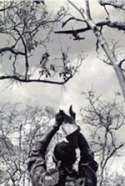 Return to U.S. Army Airborne Equipment Shop
Return to U.S. Army Airborne Equipment Shop